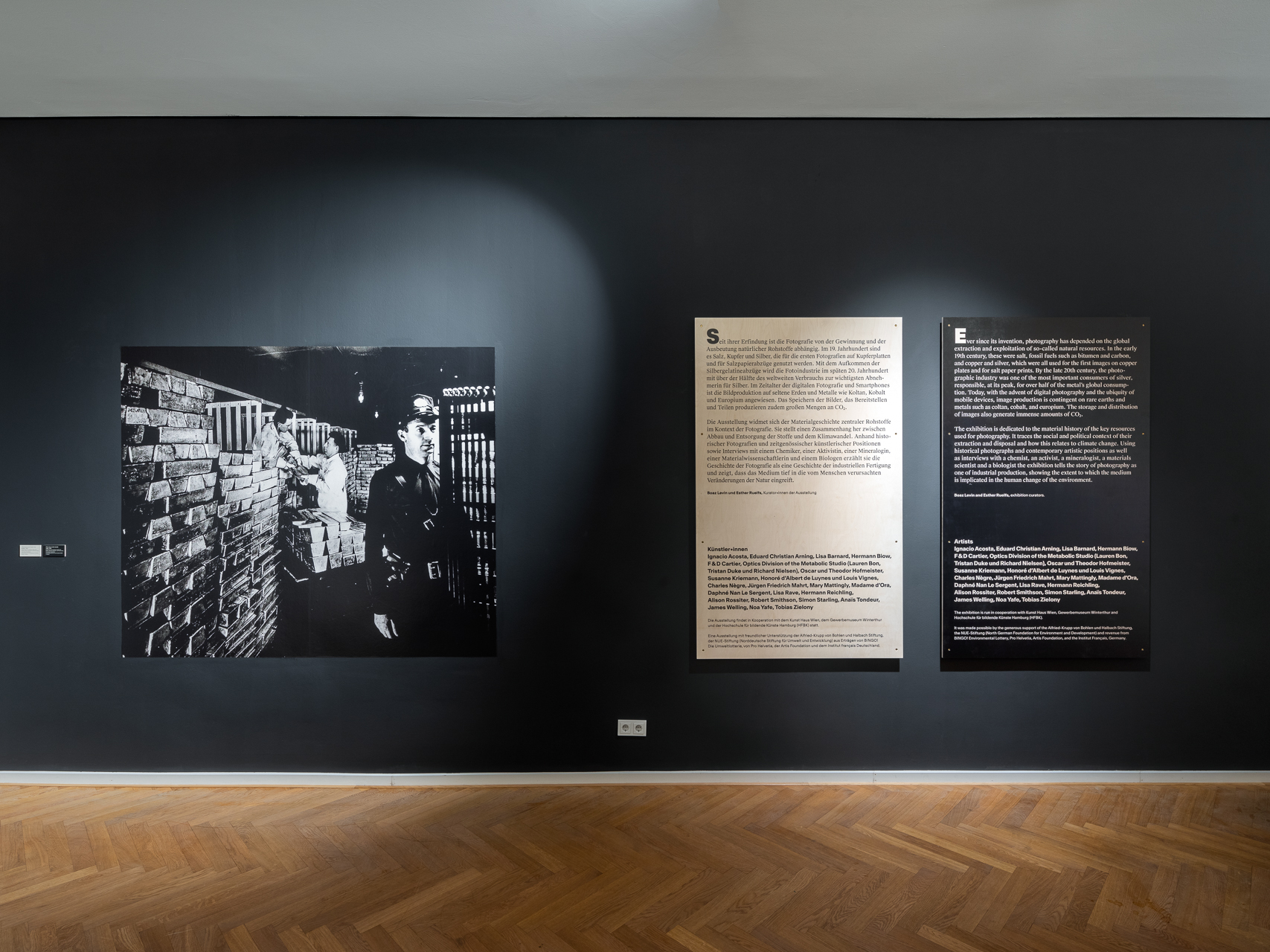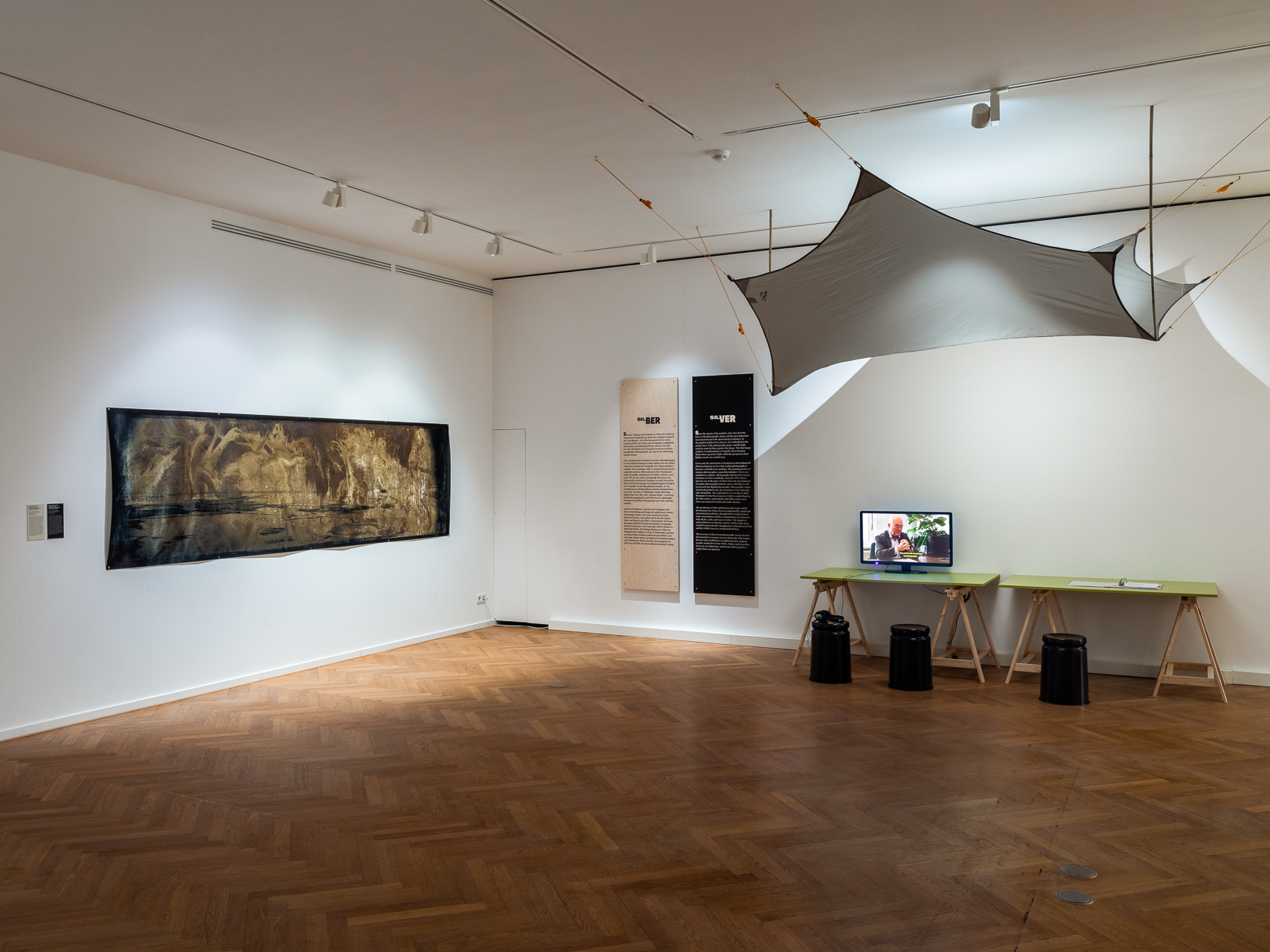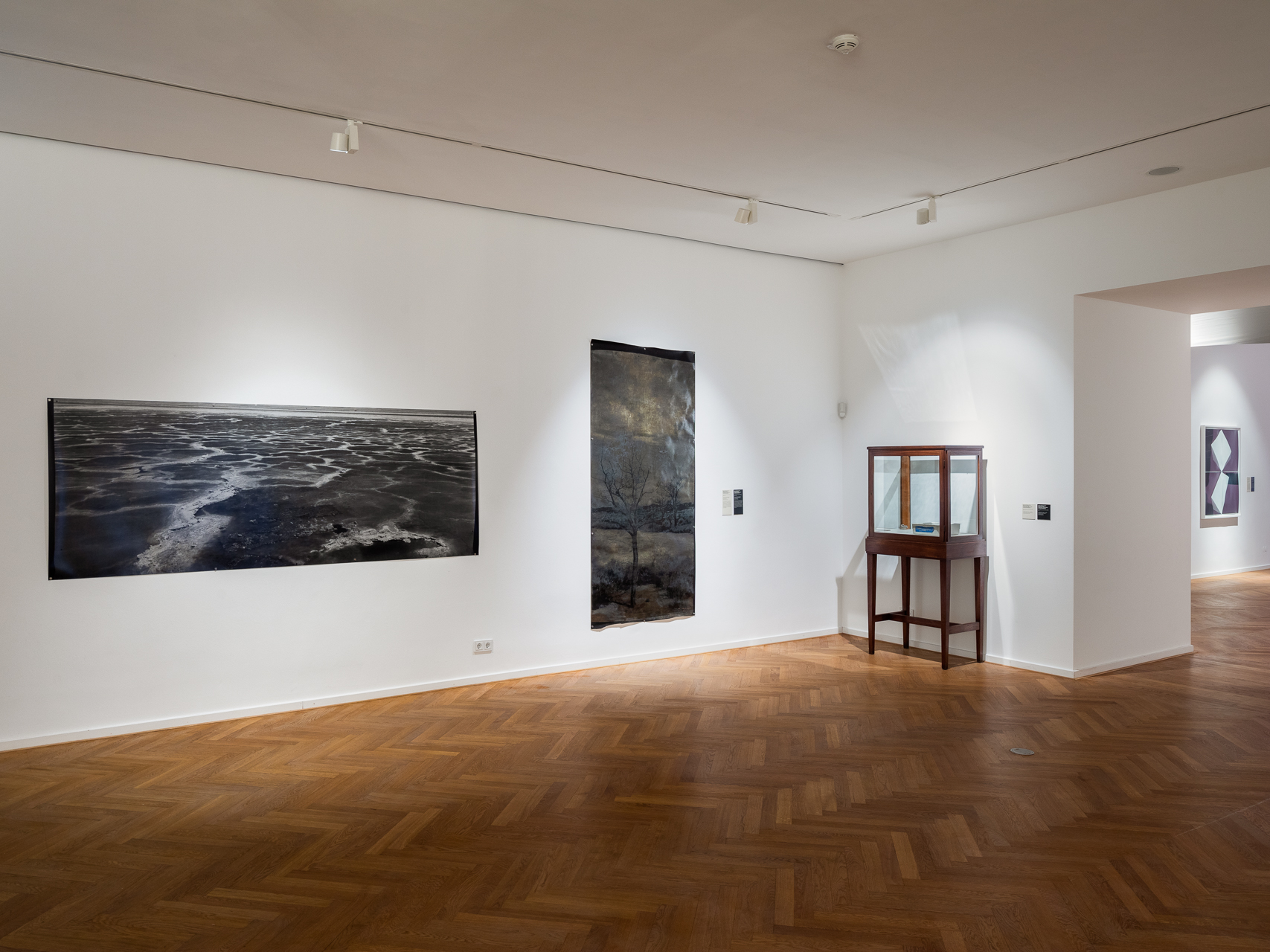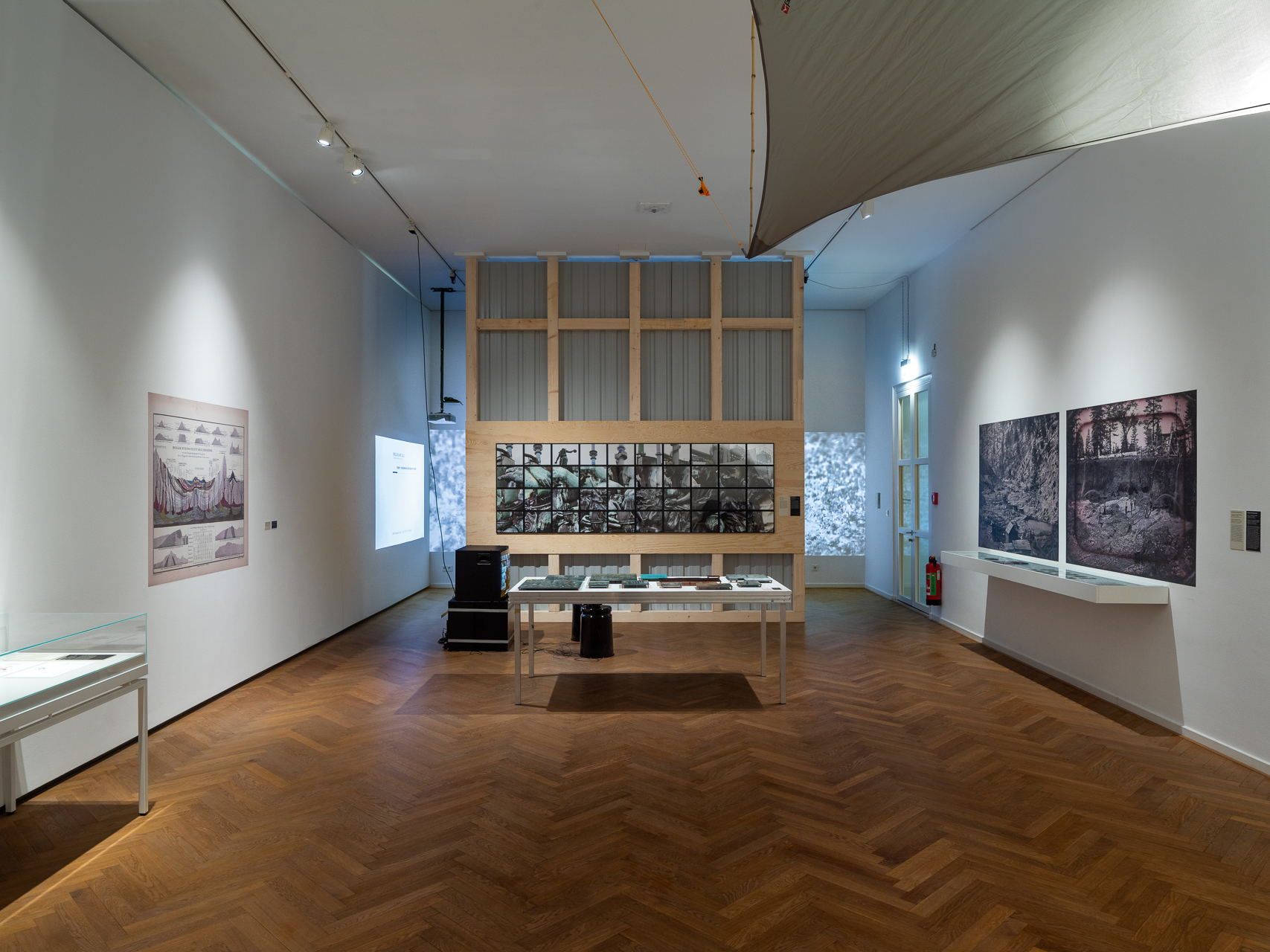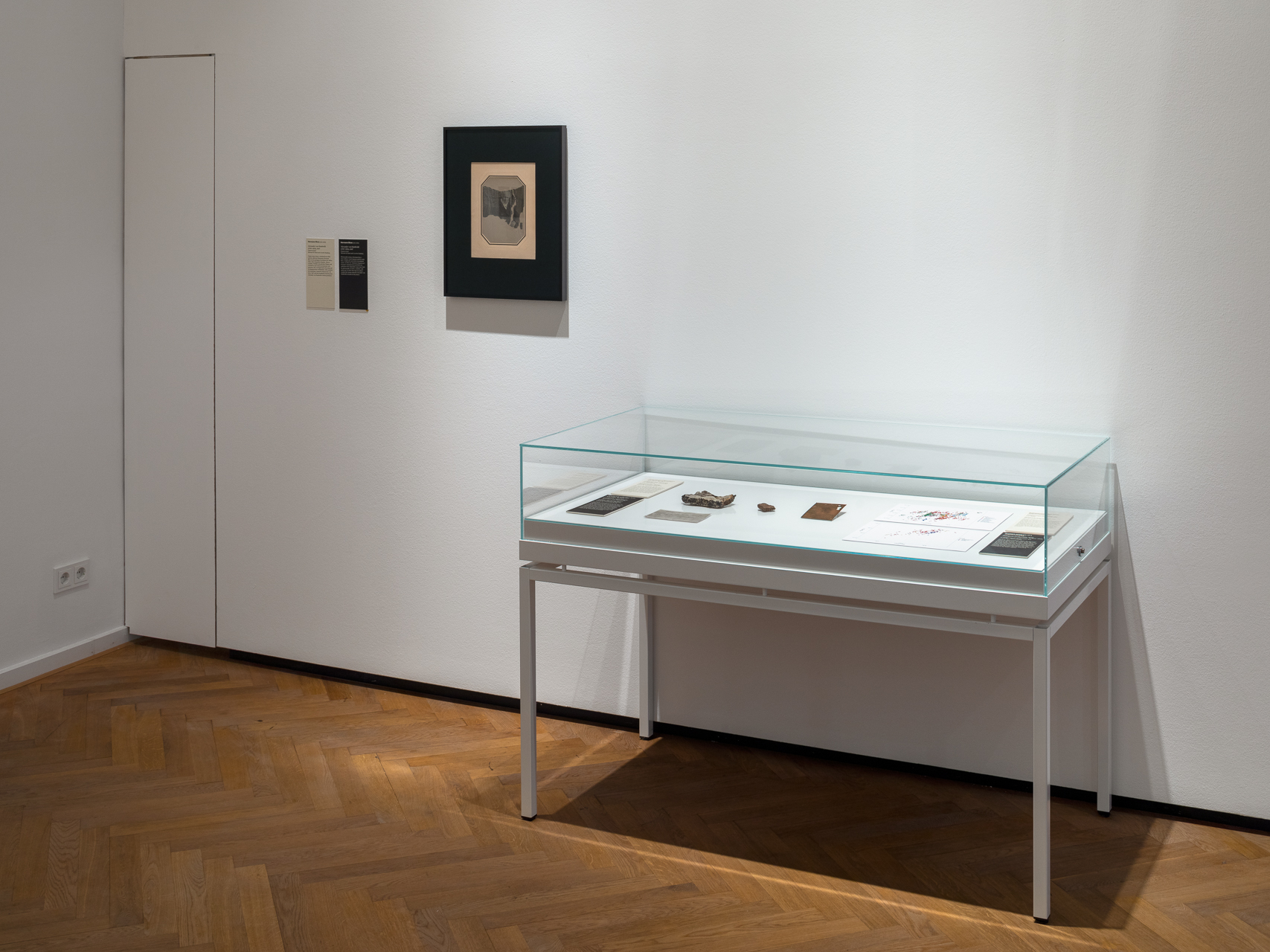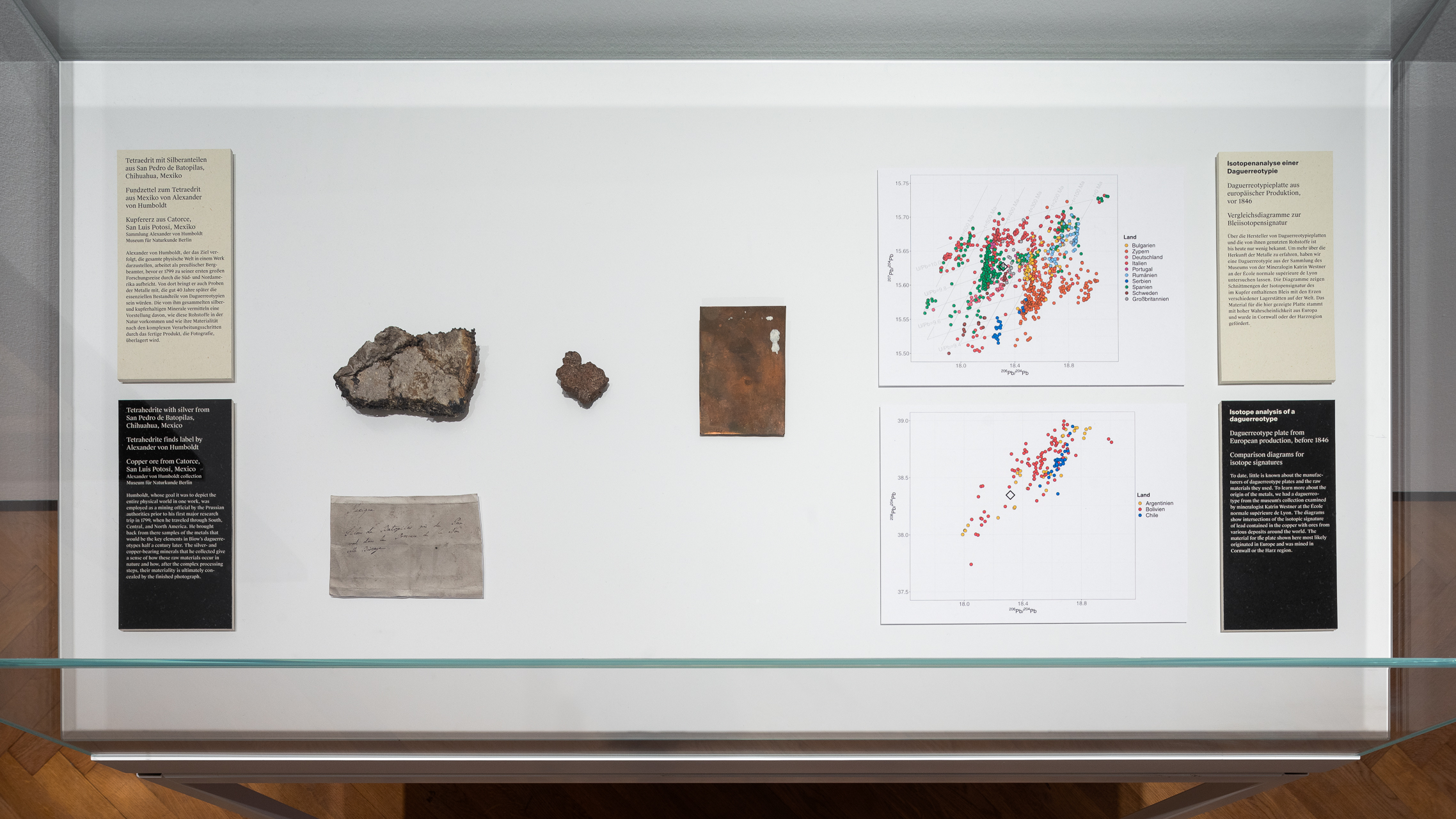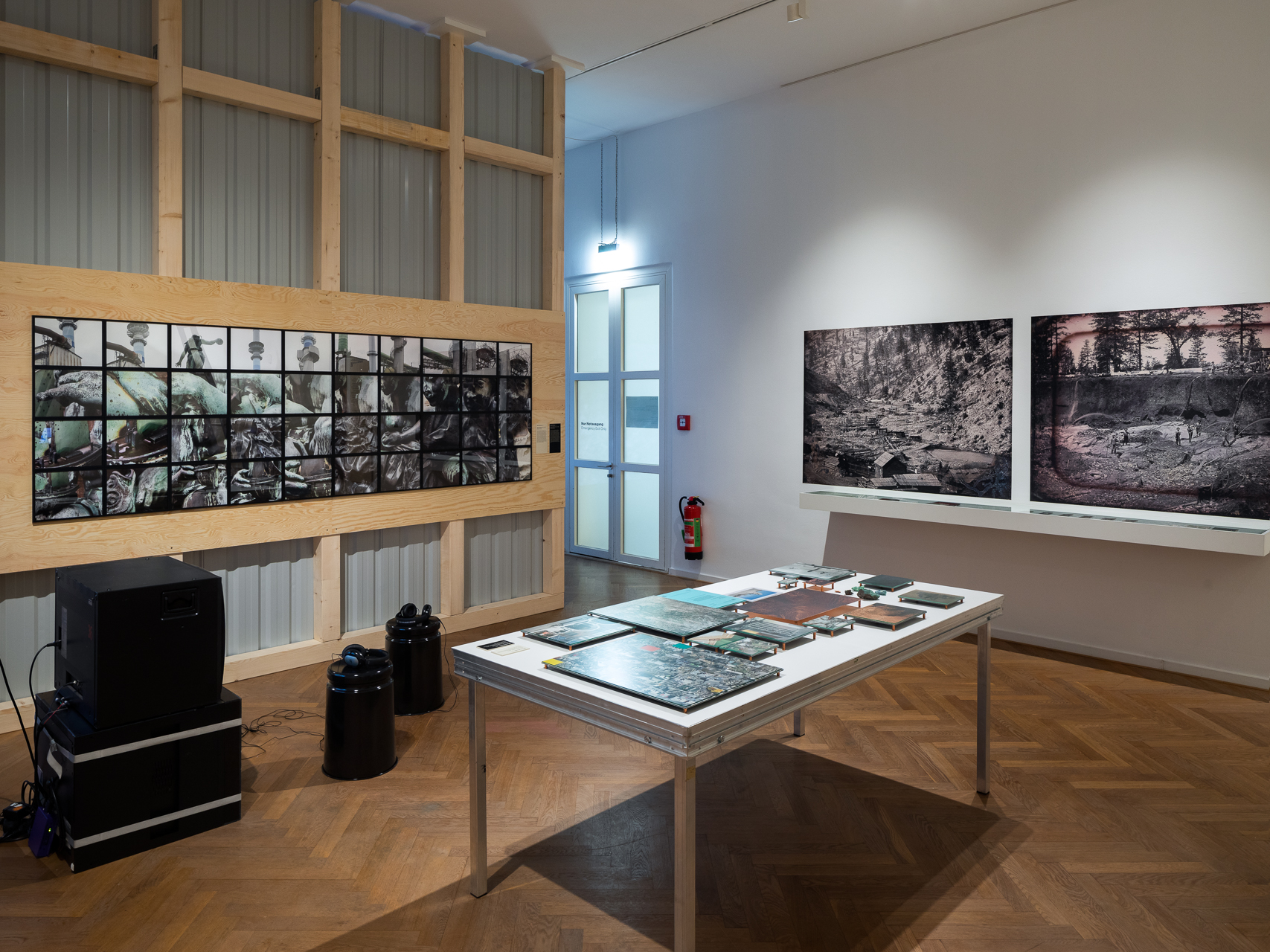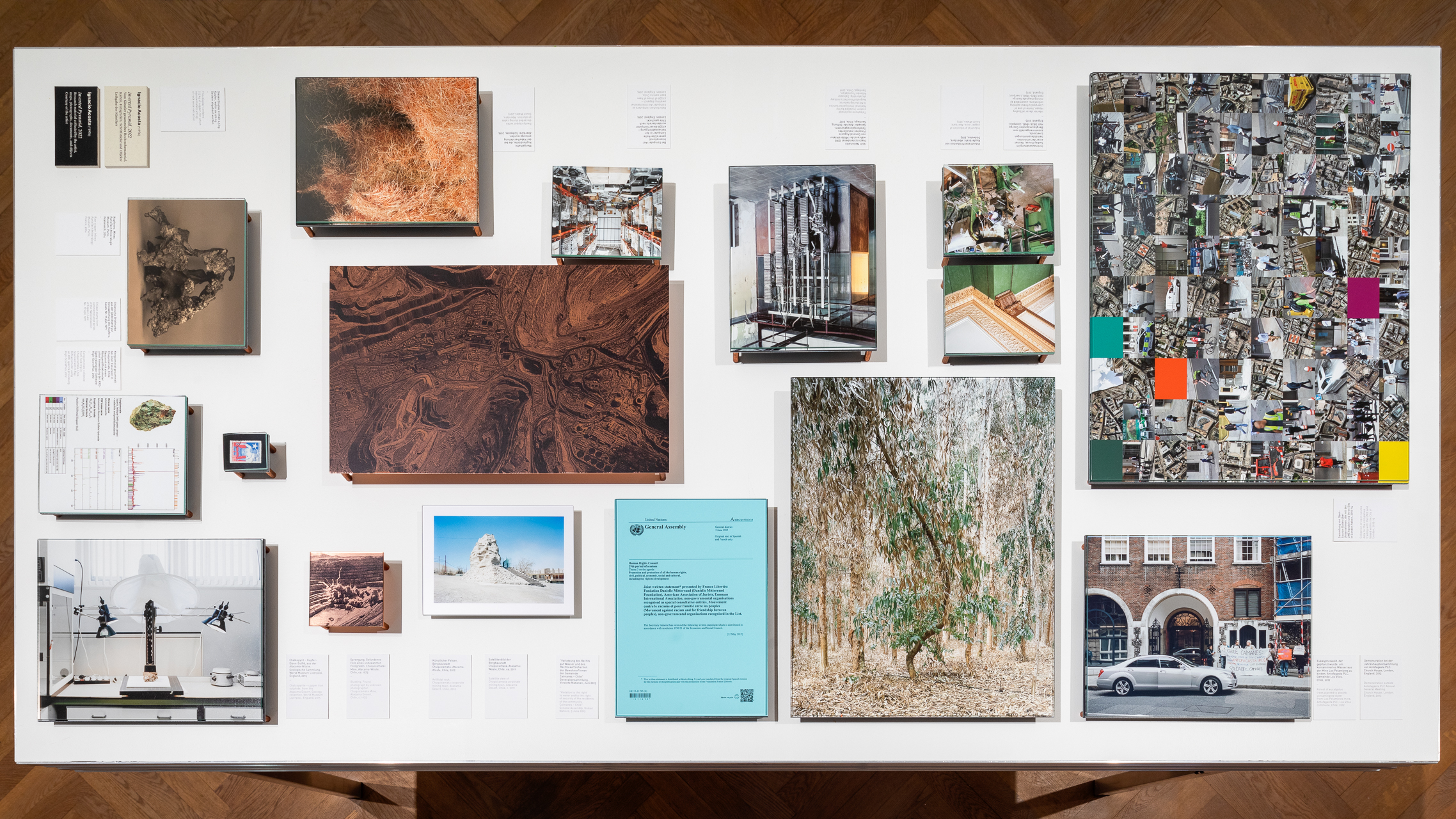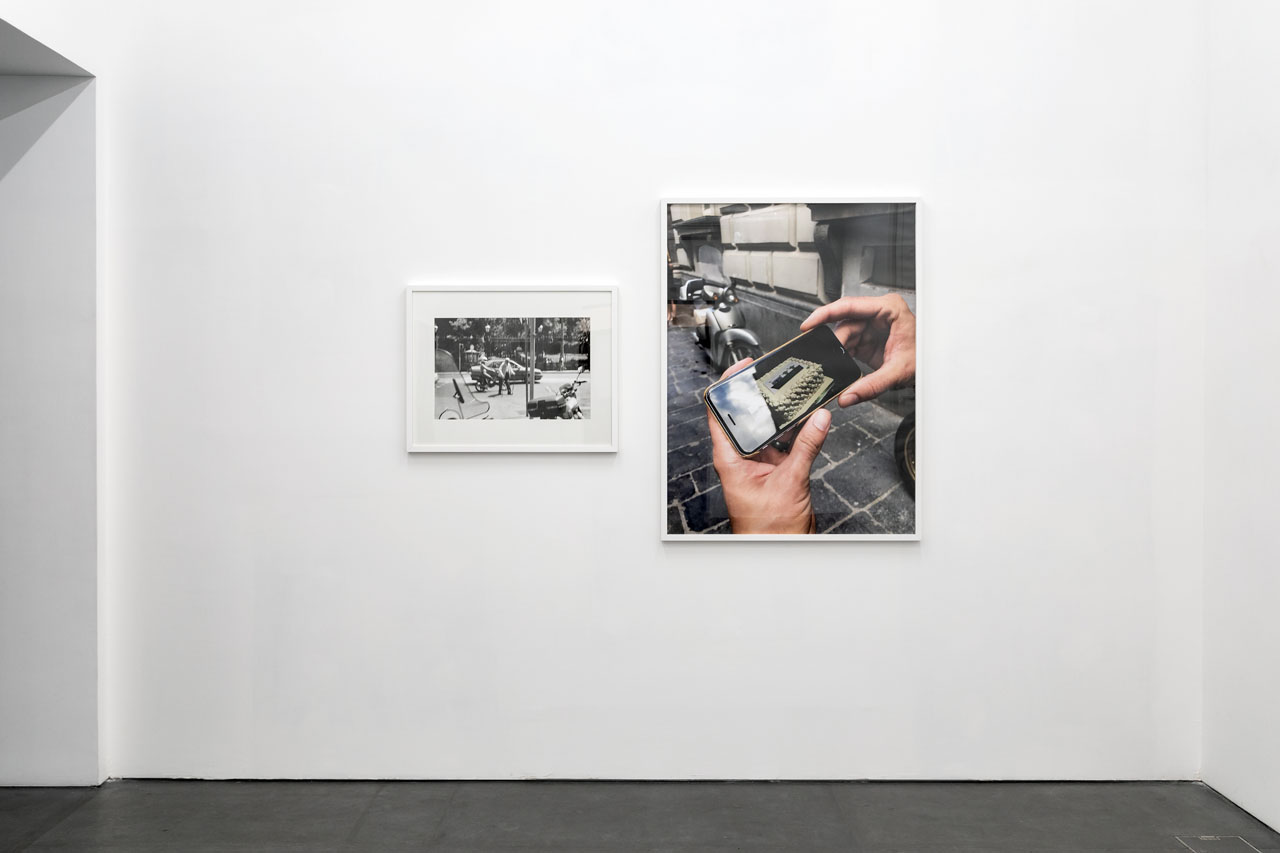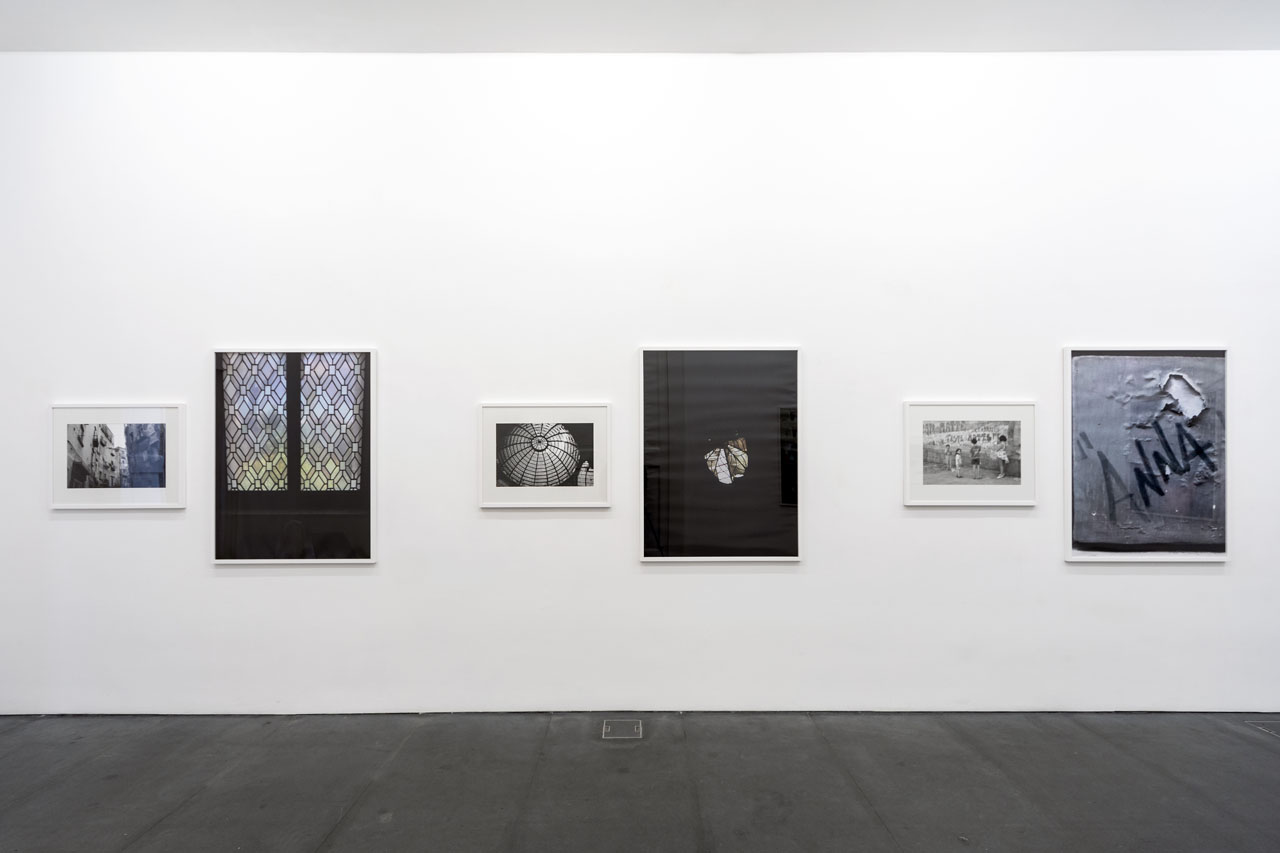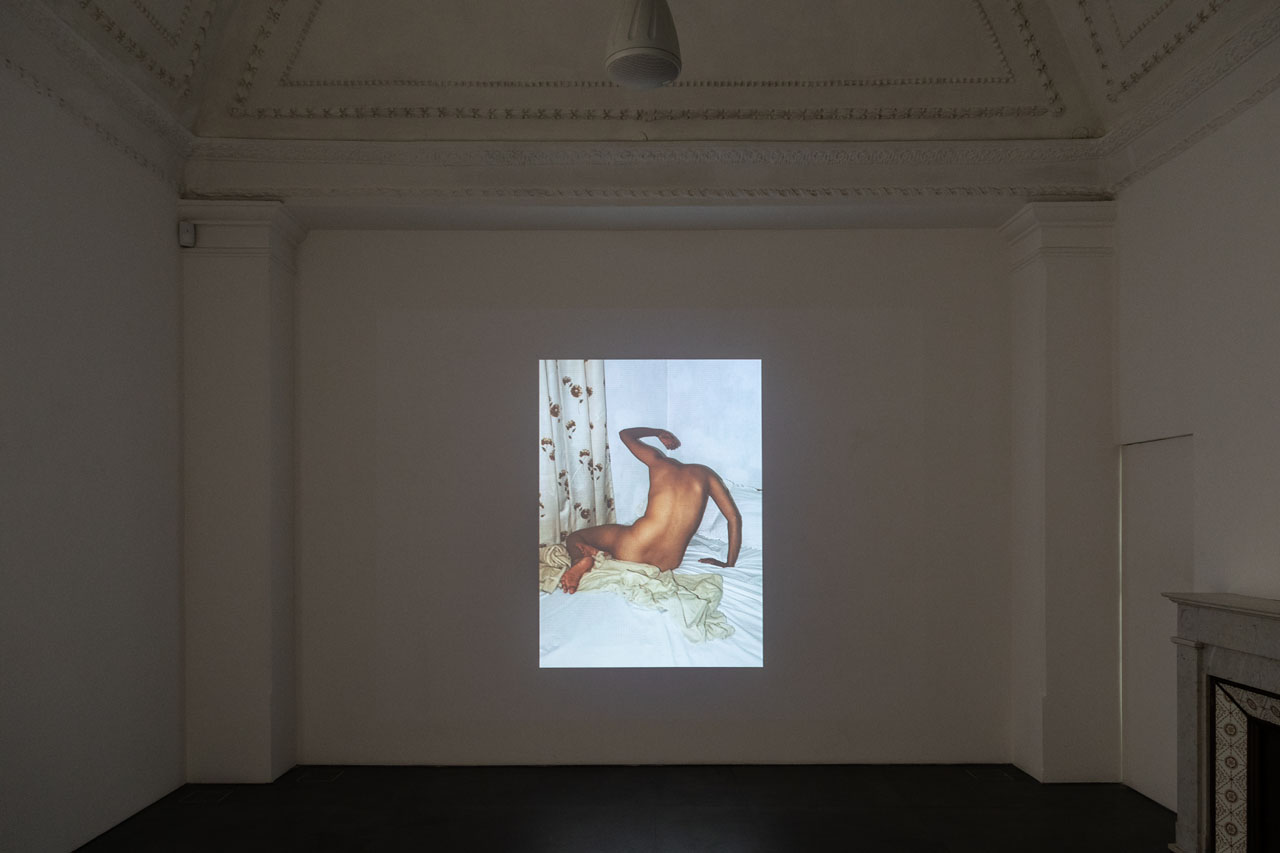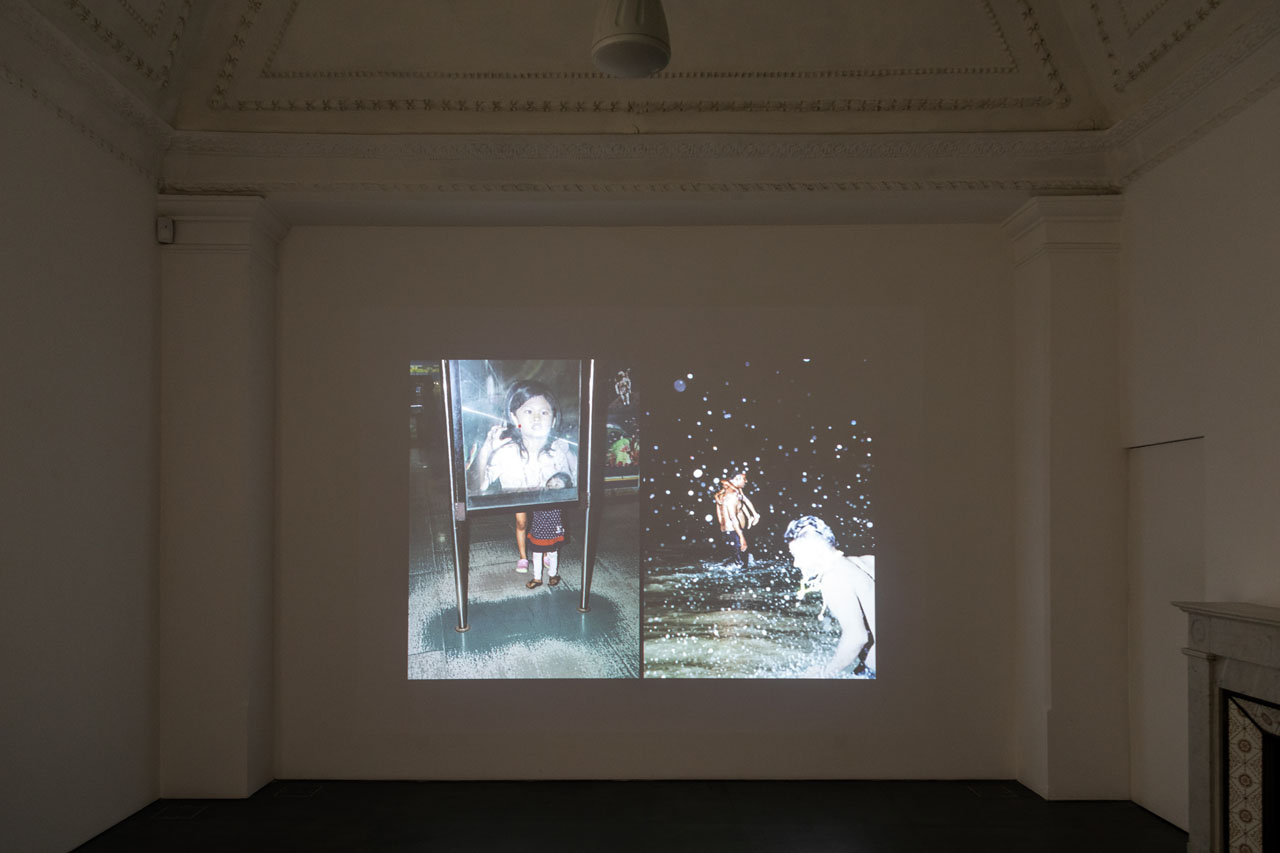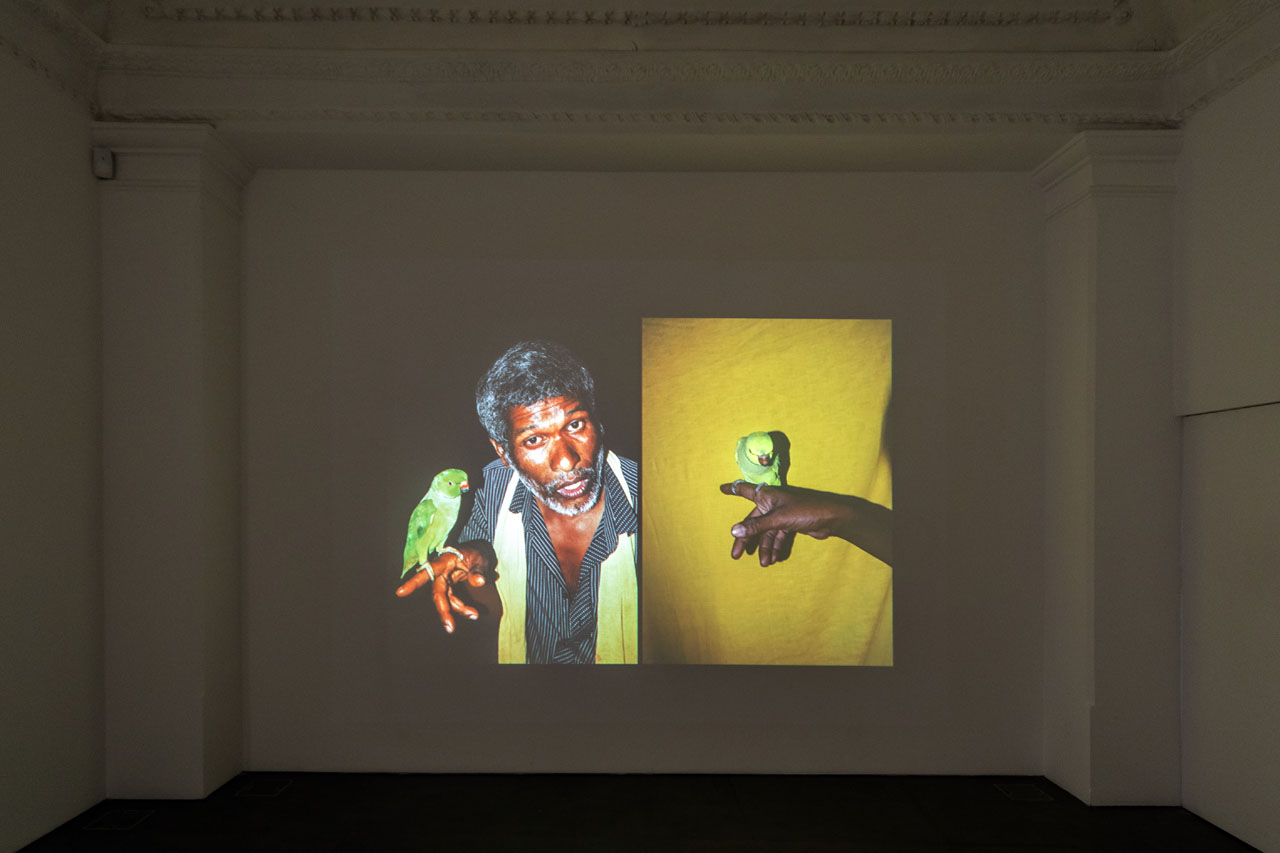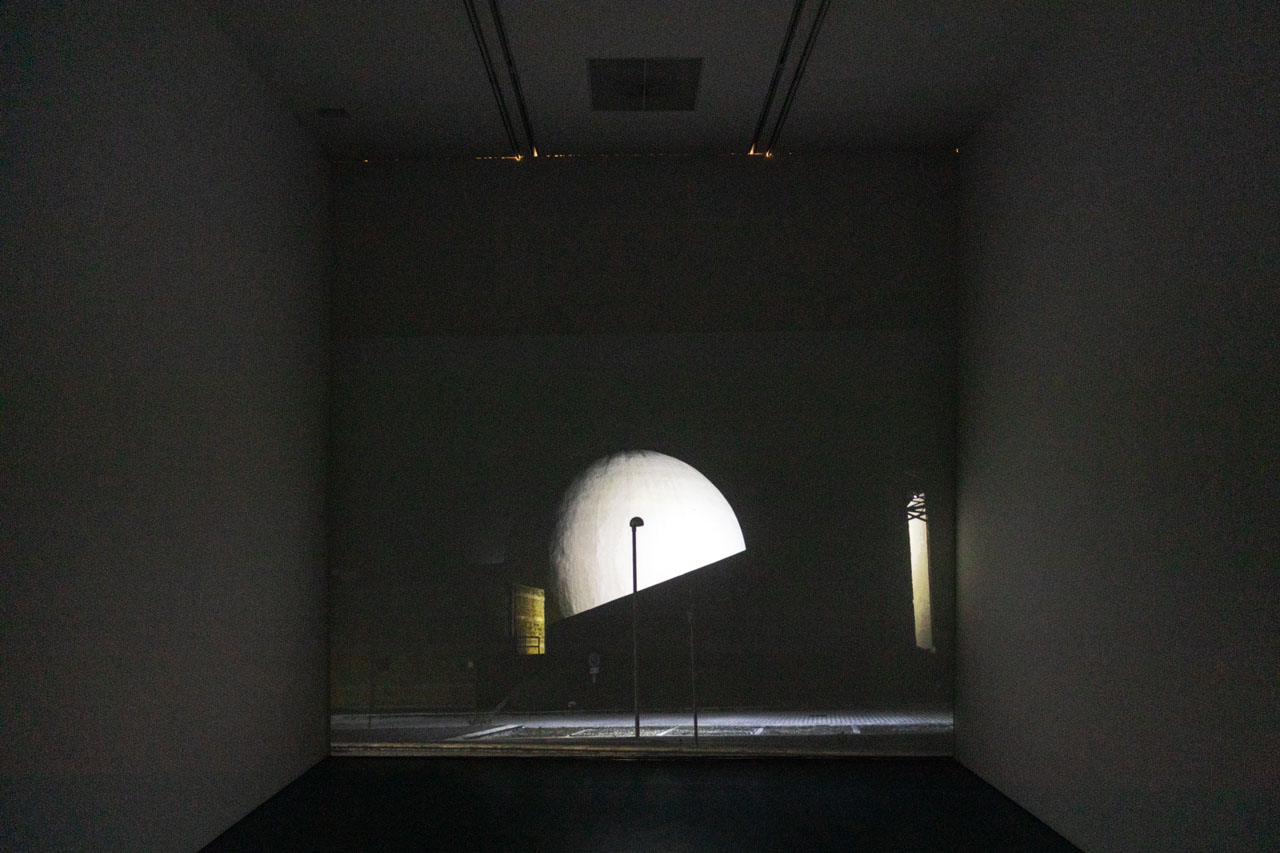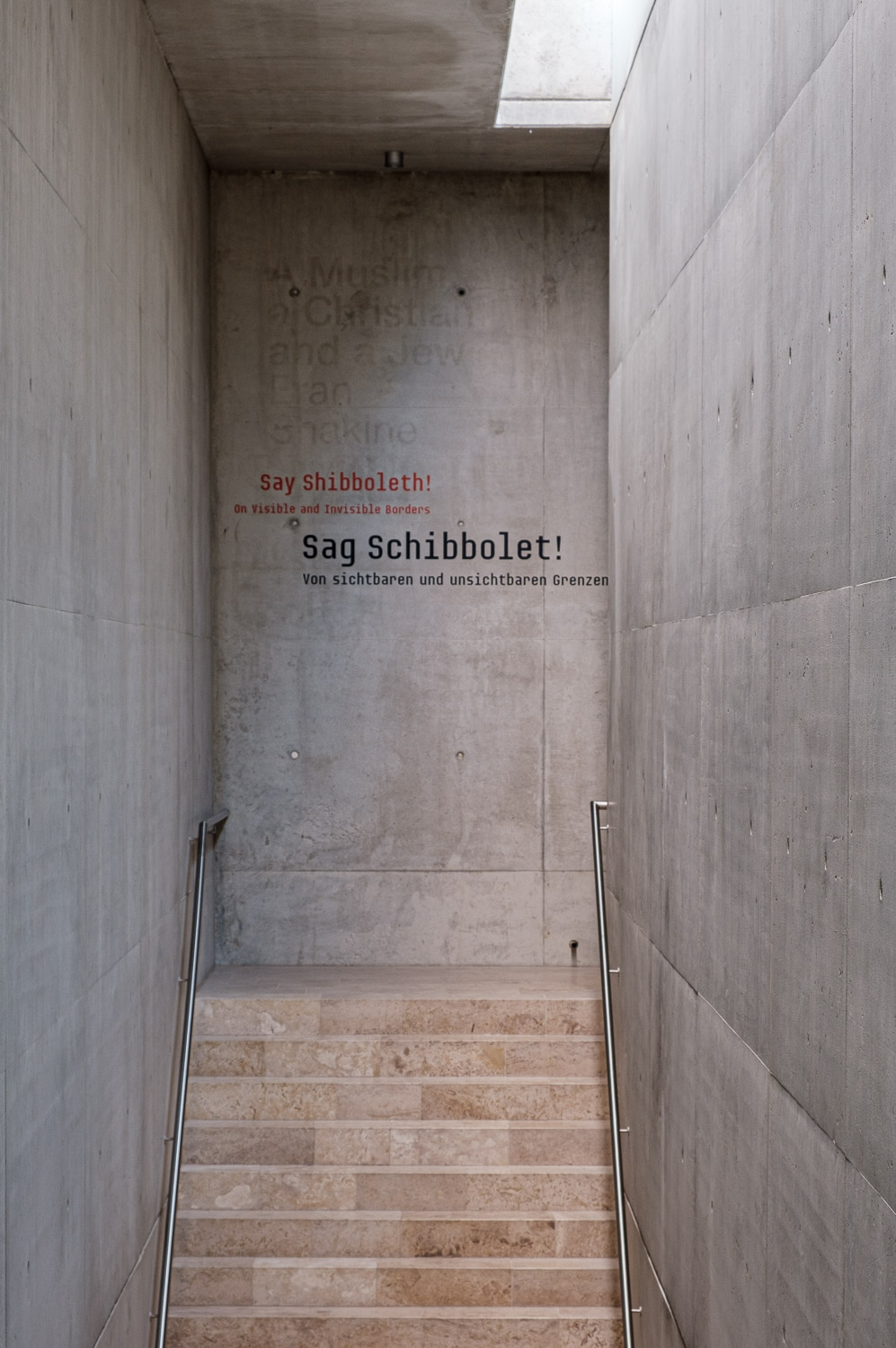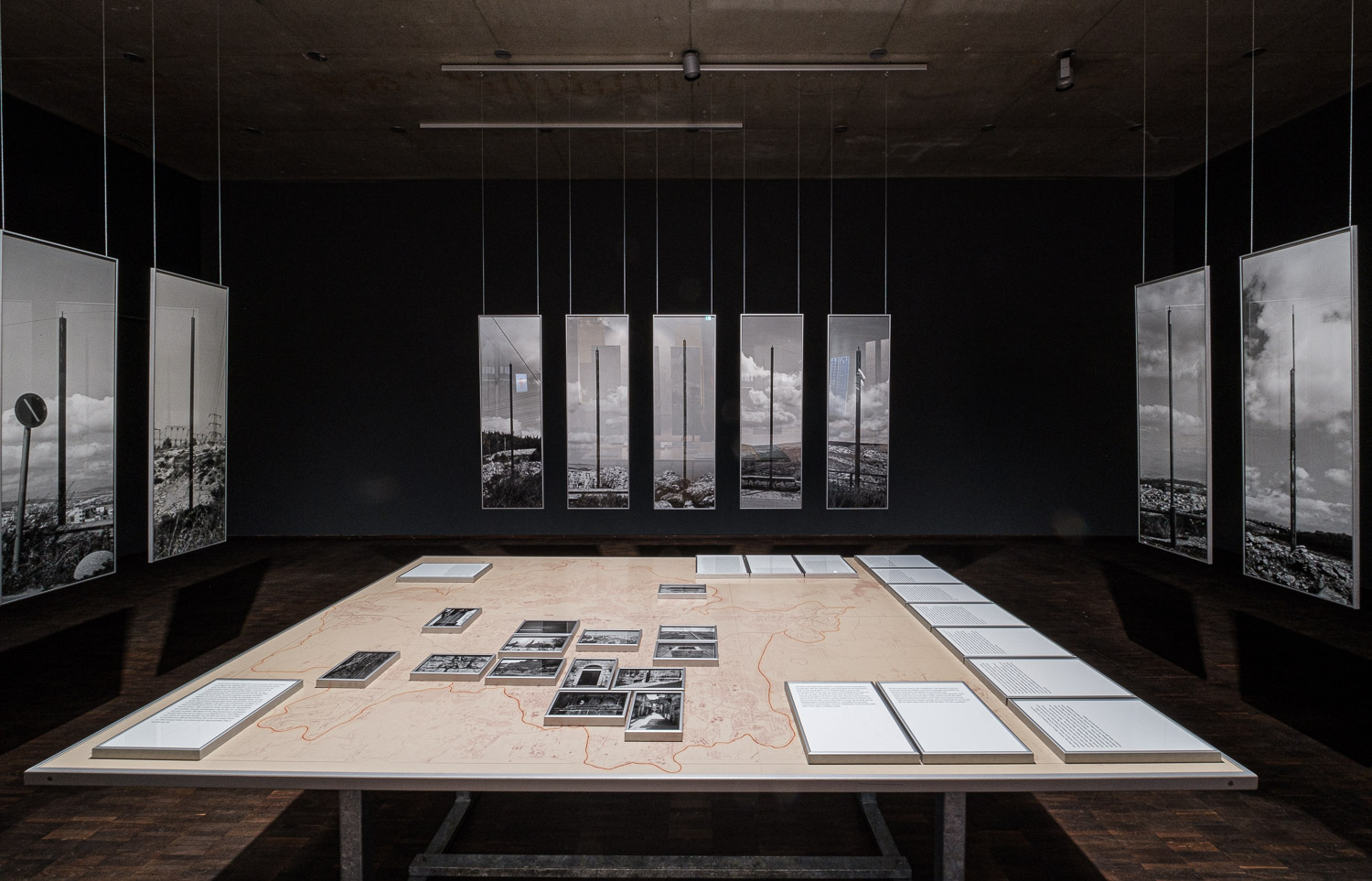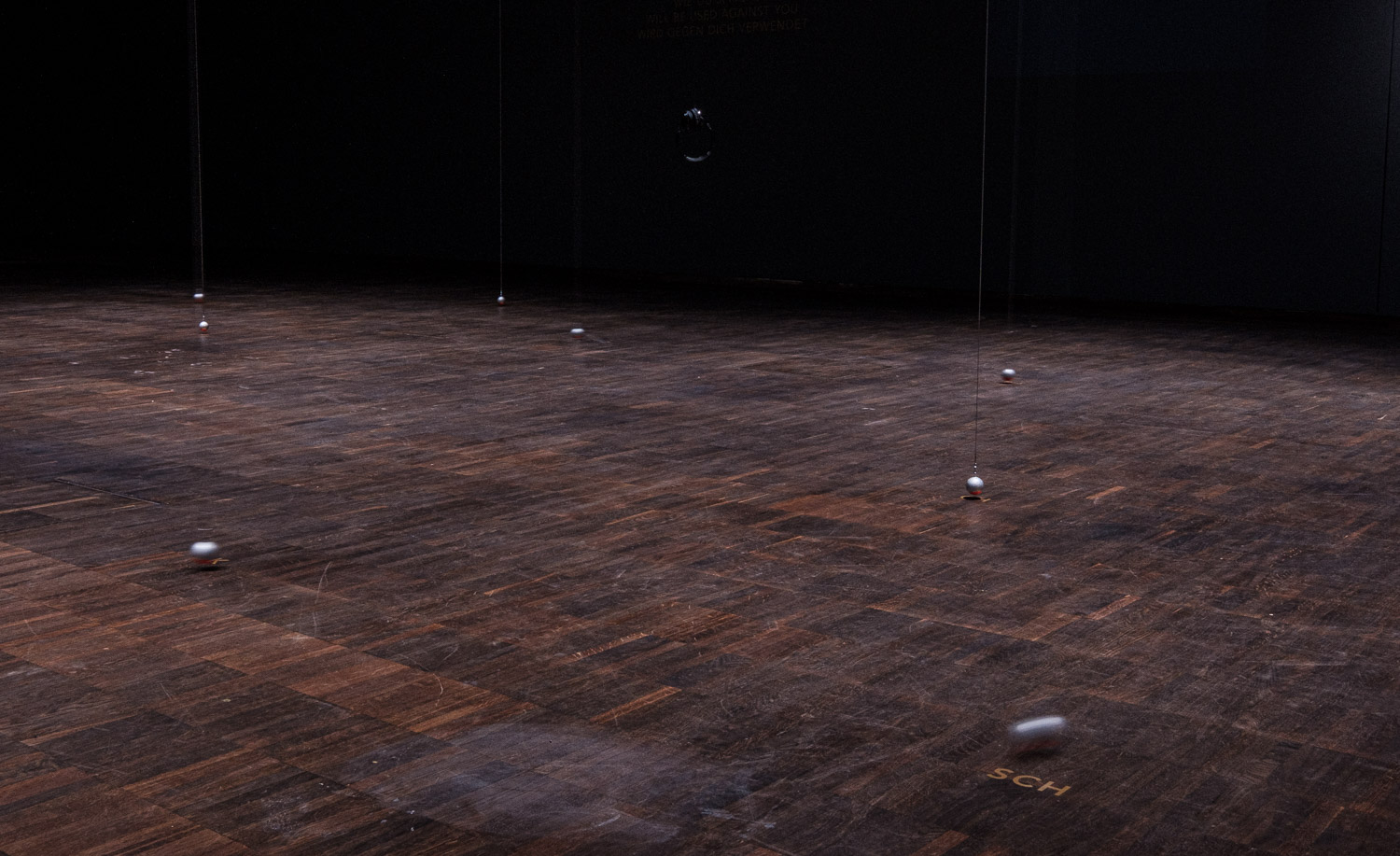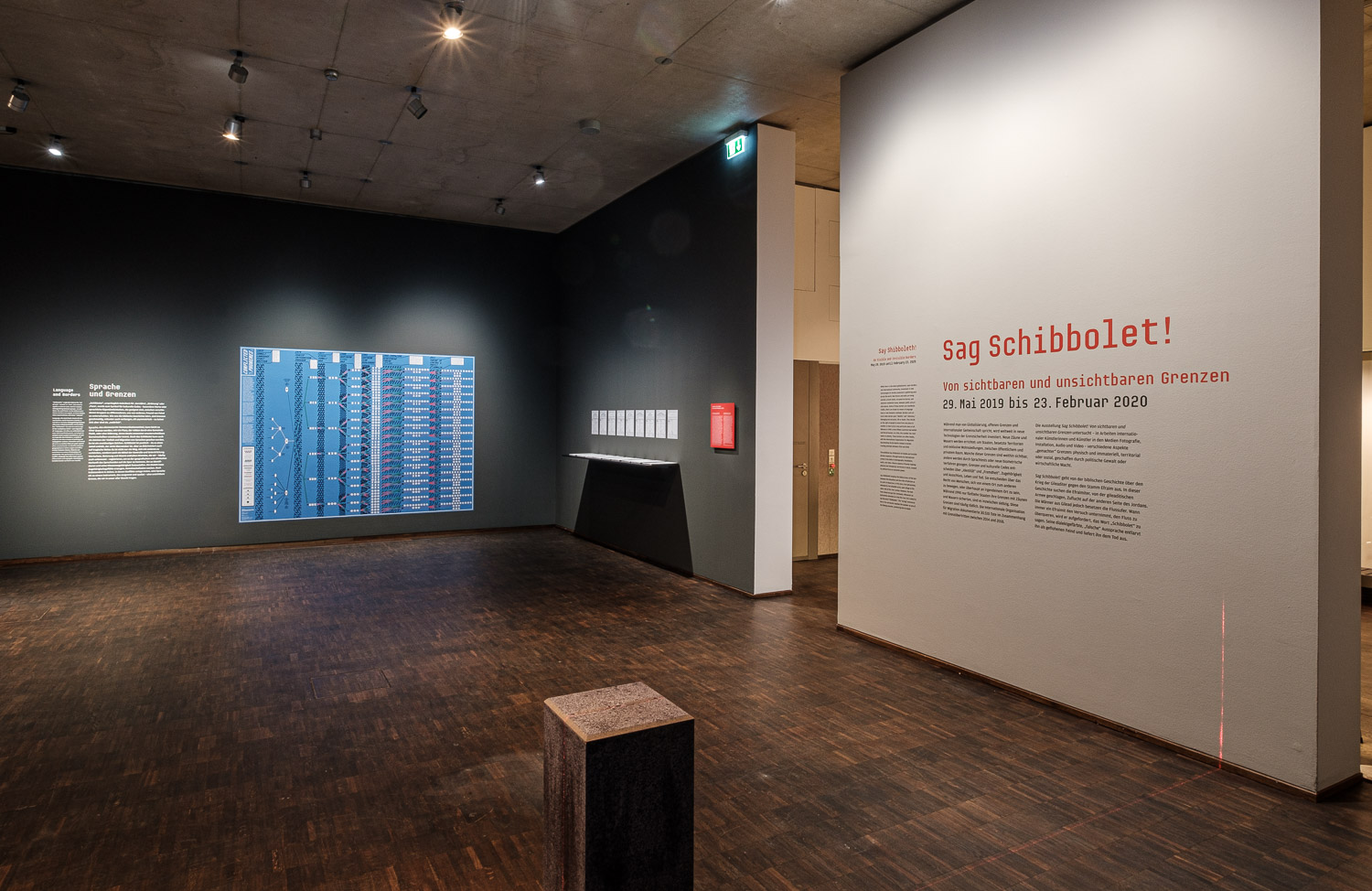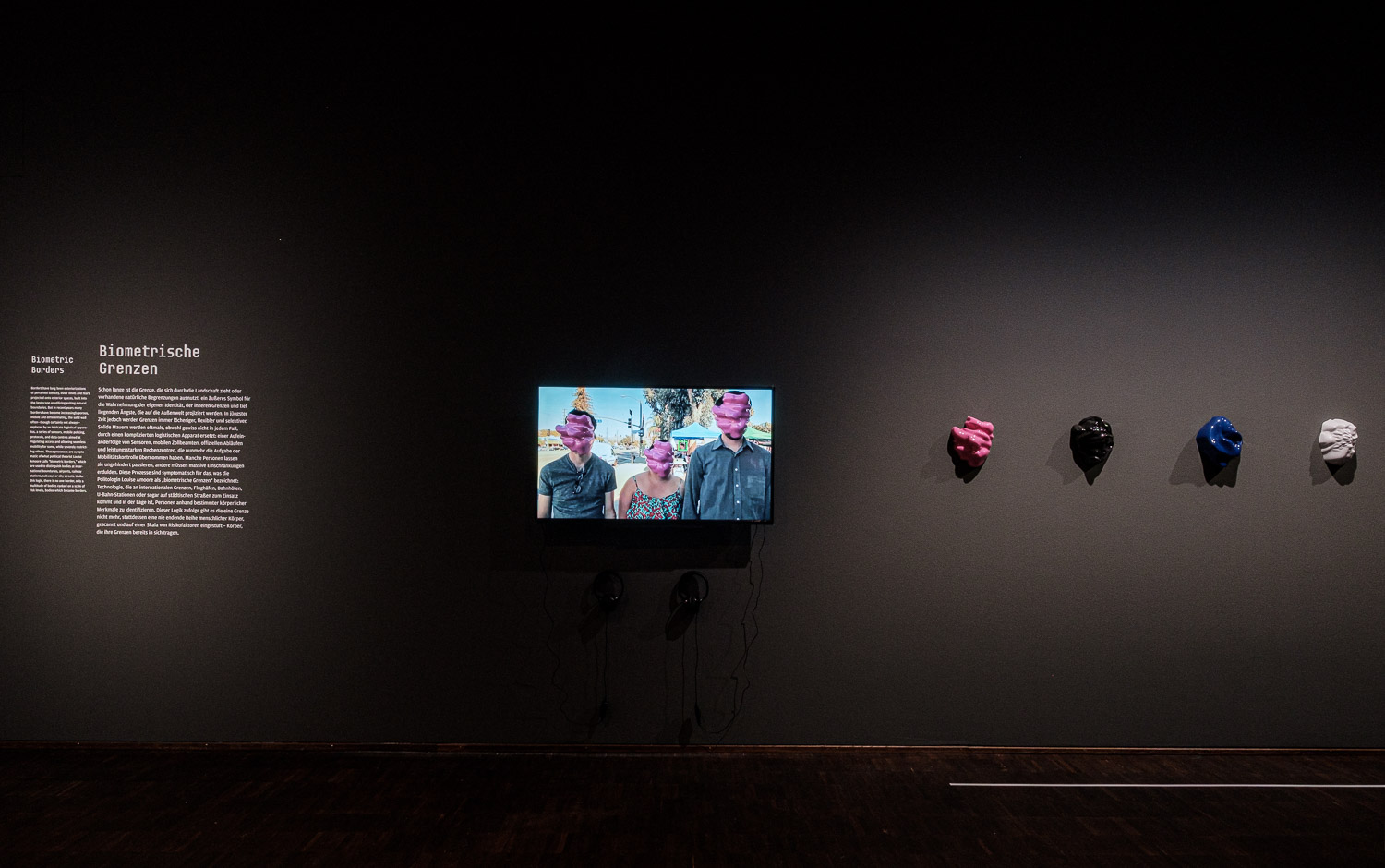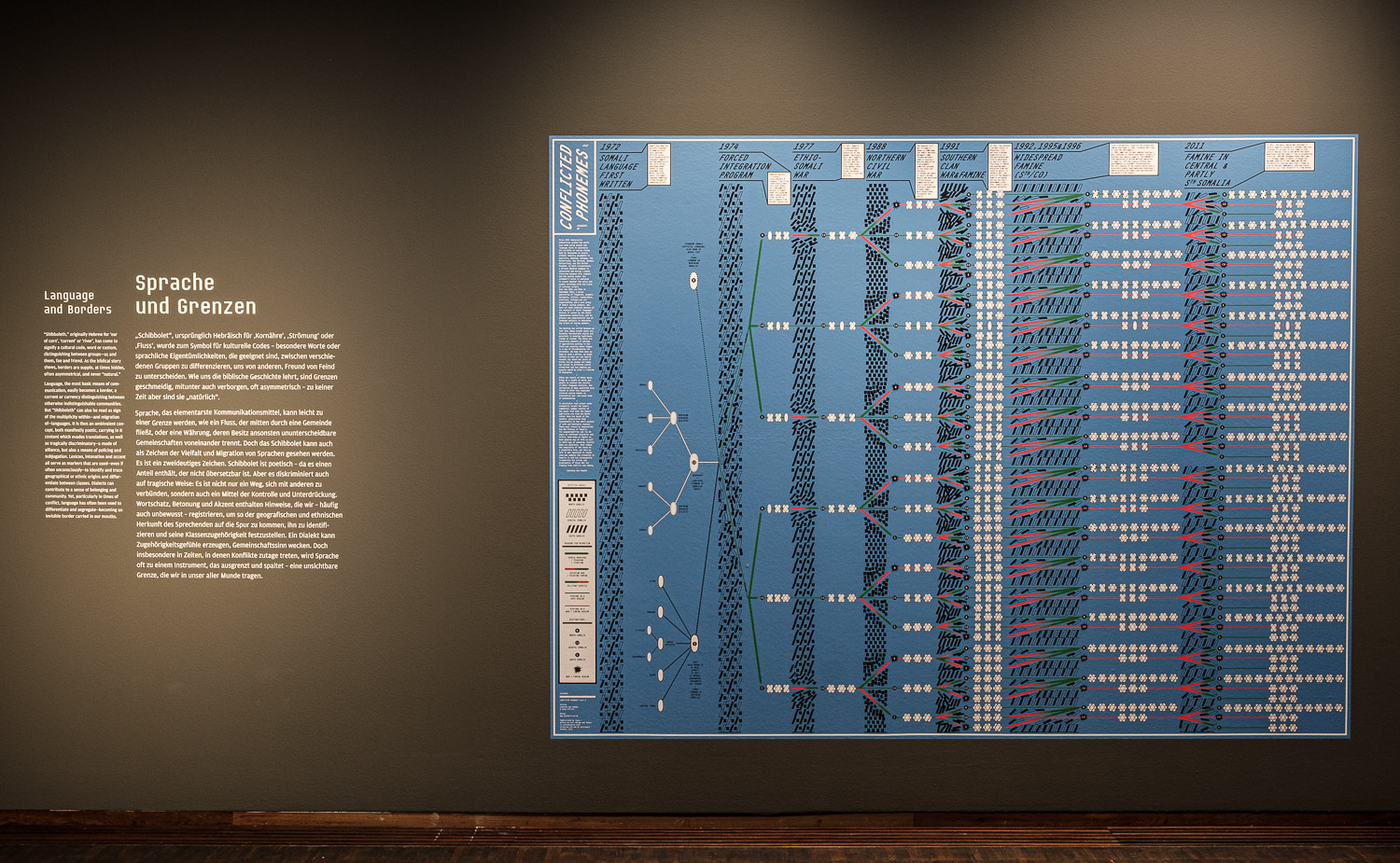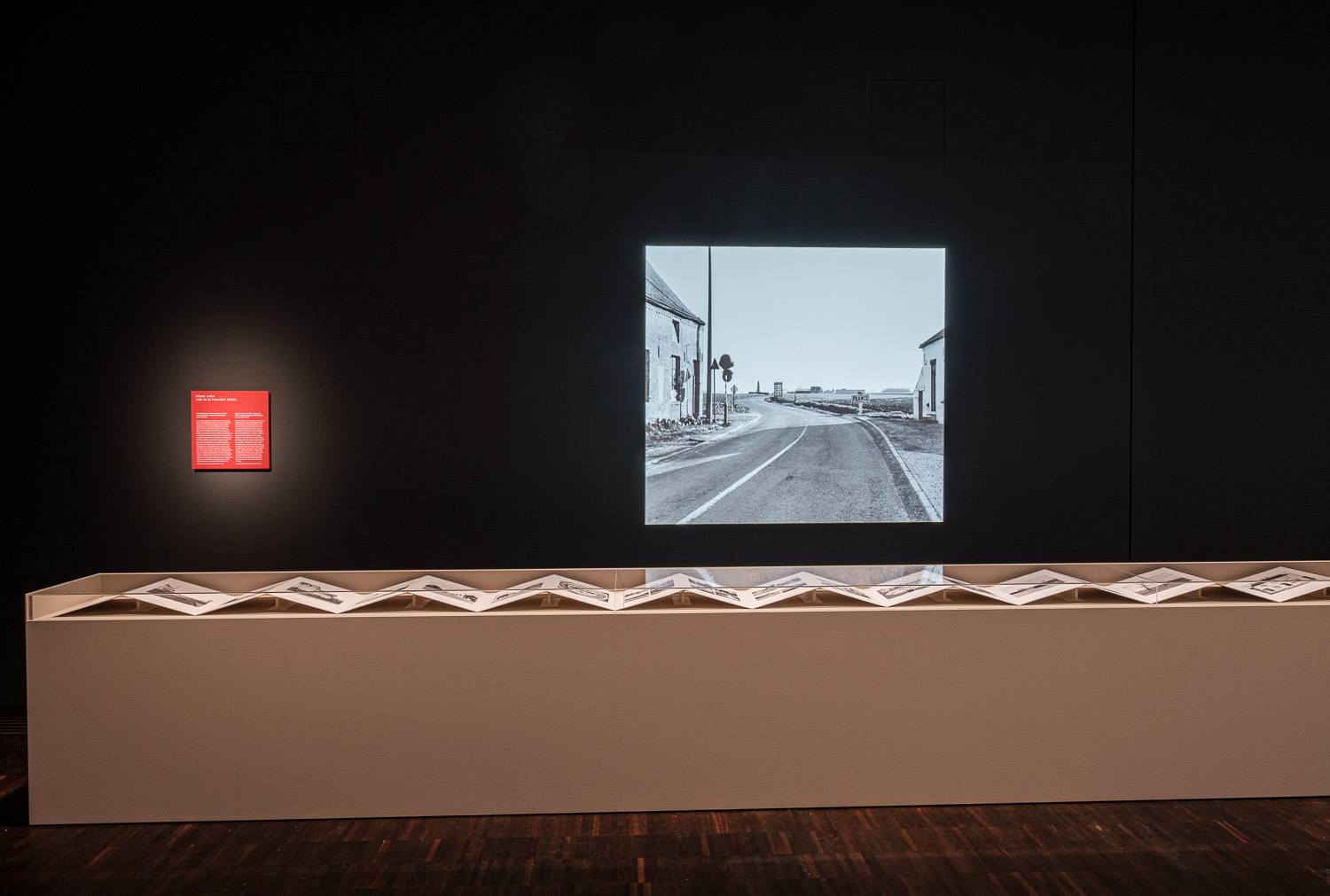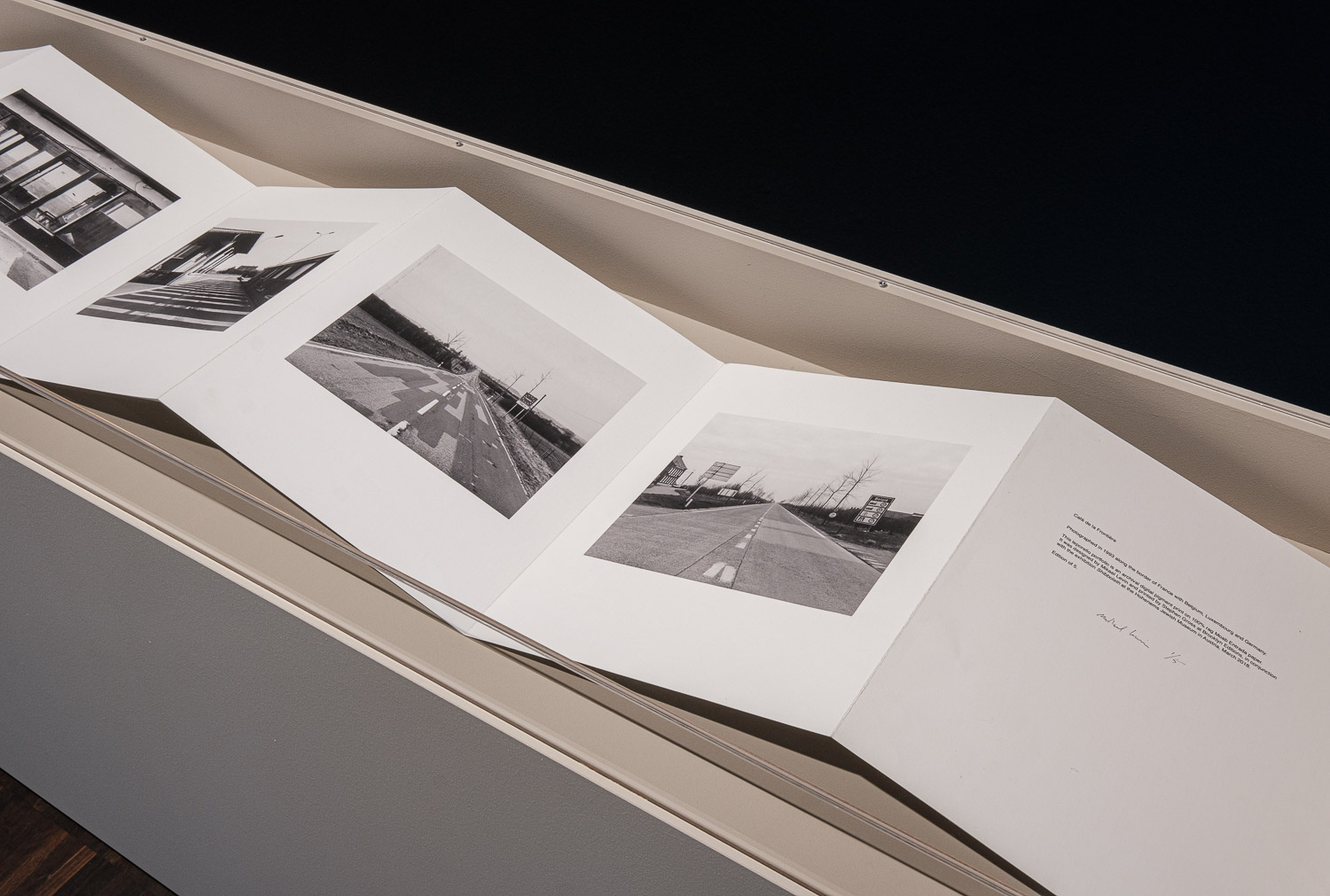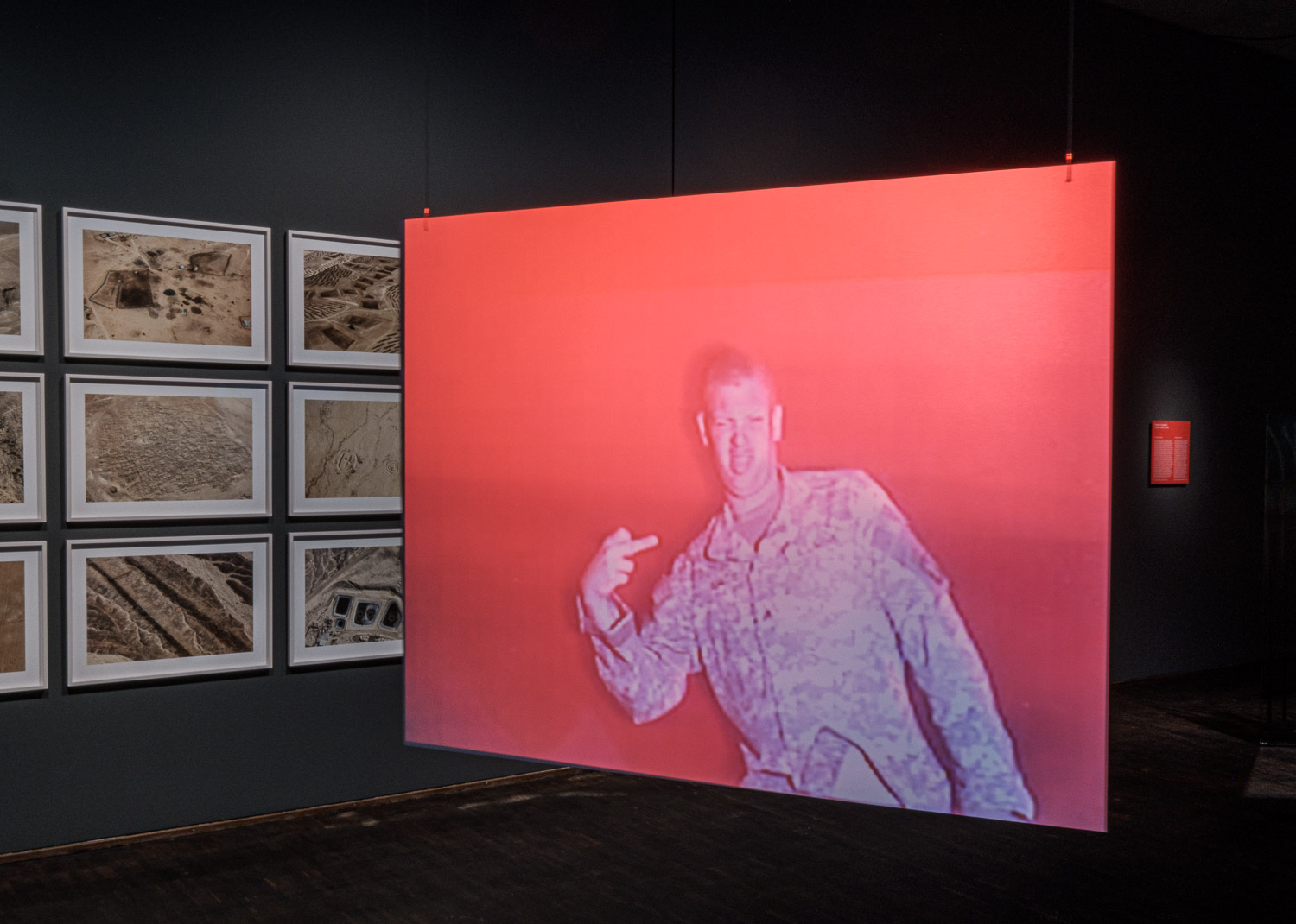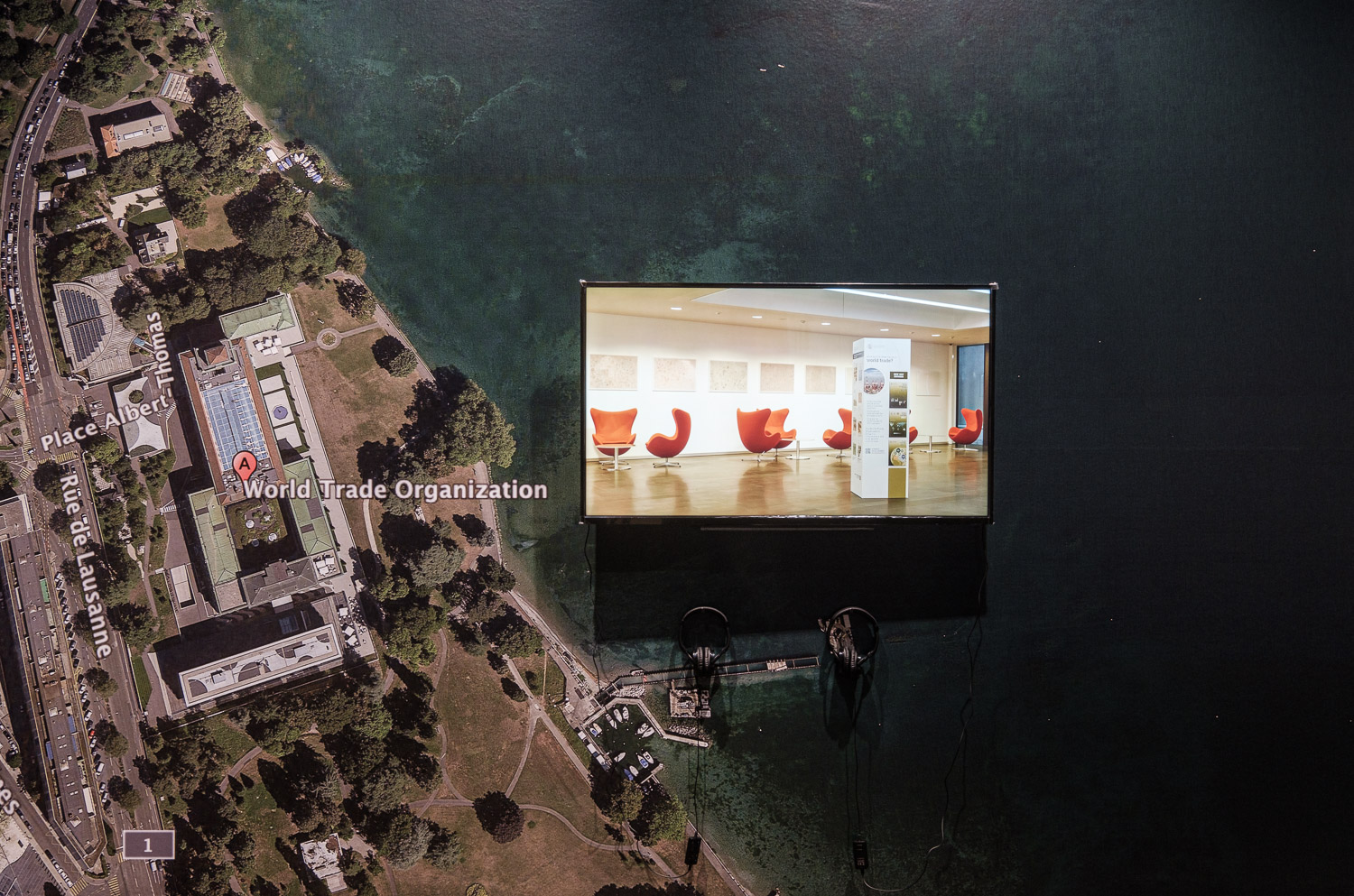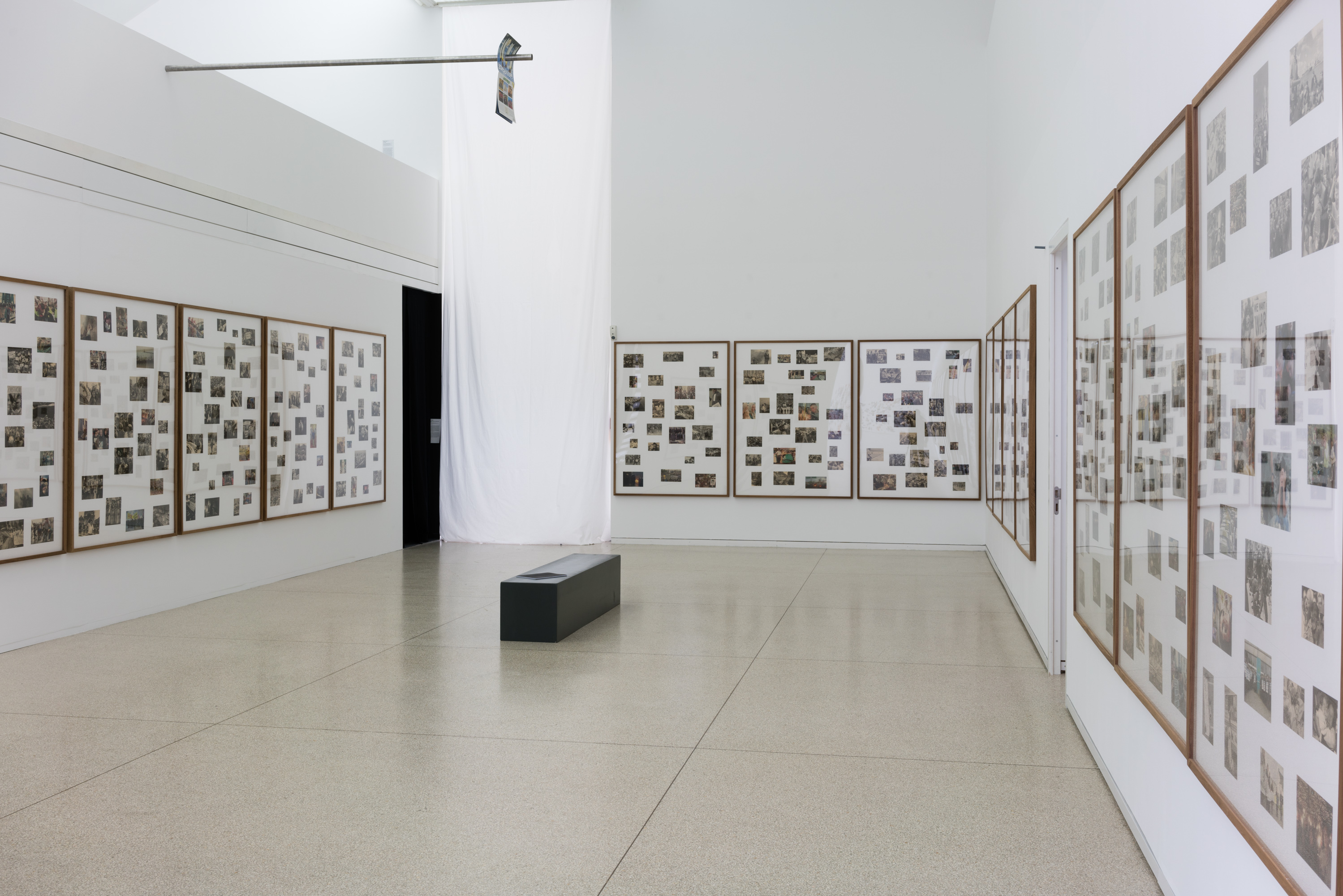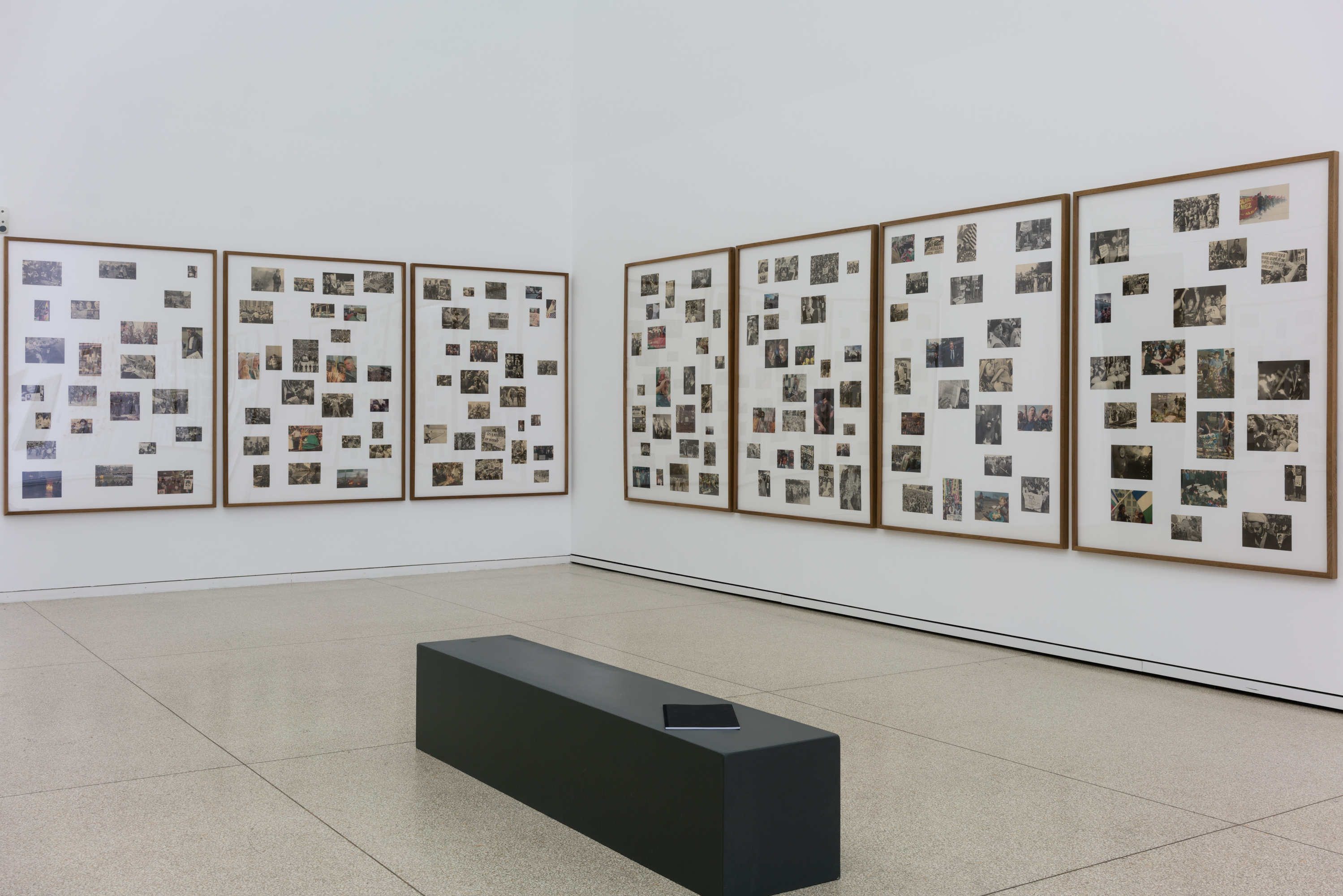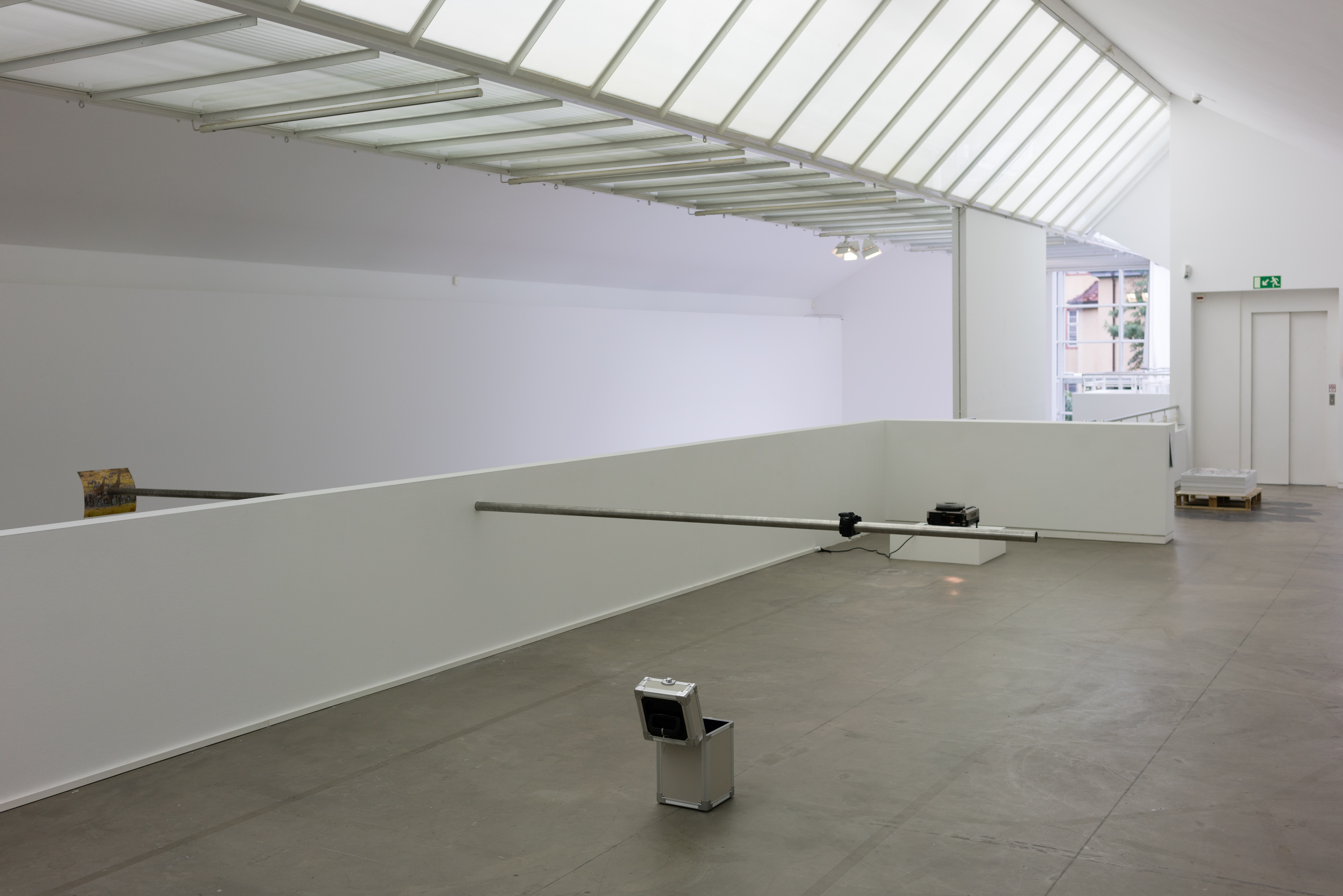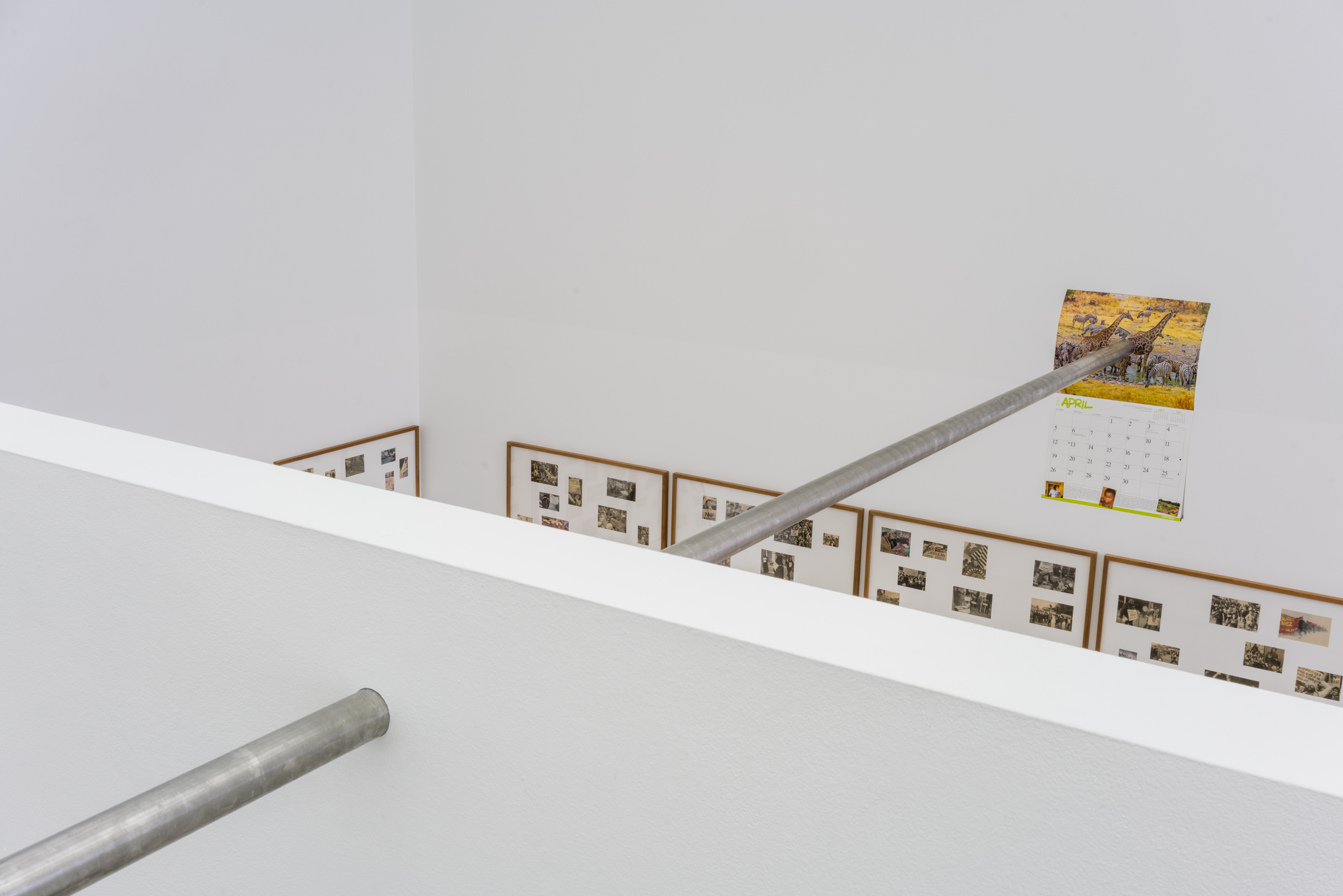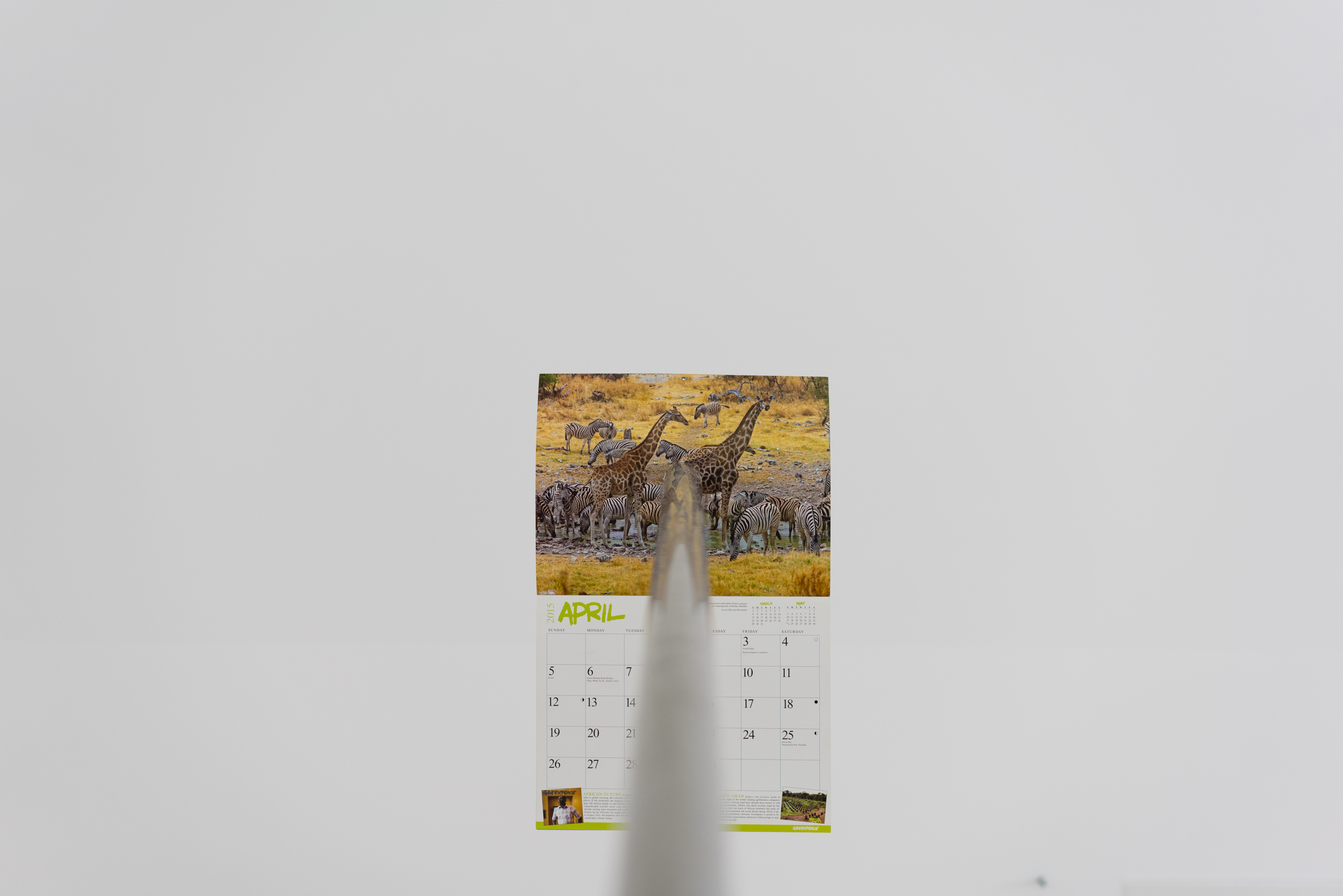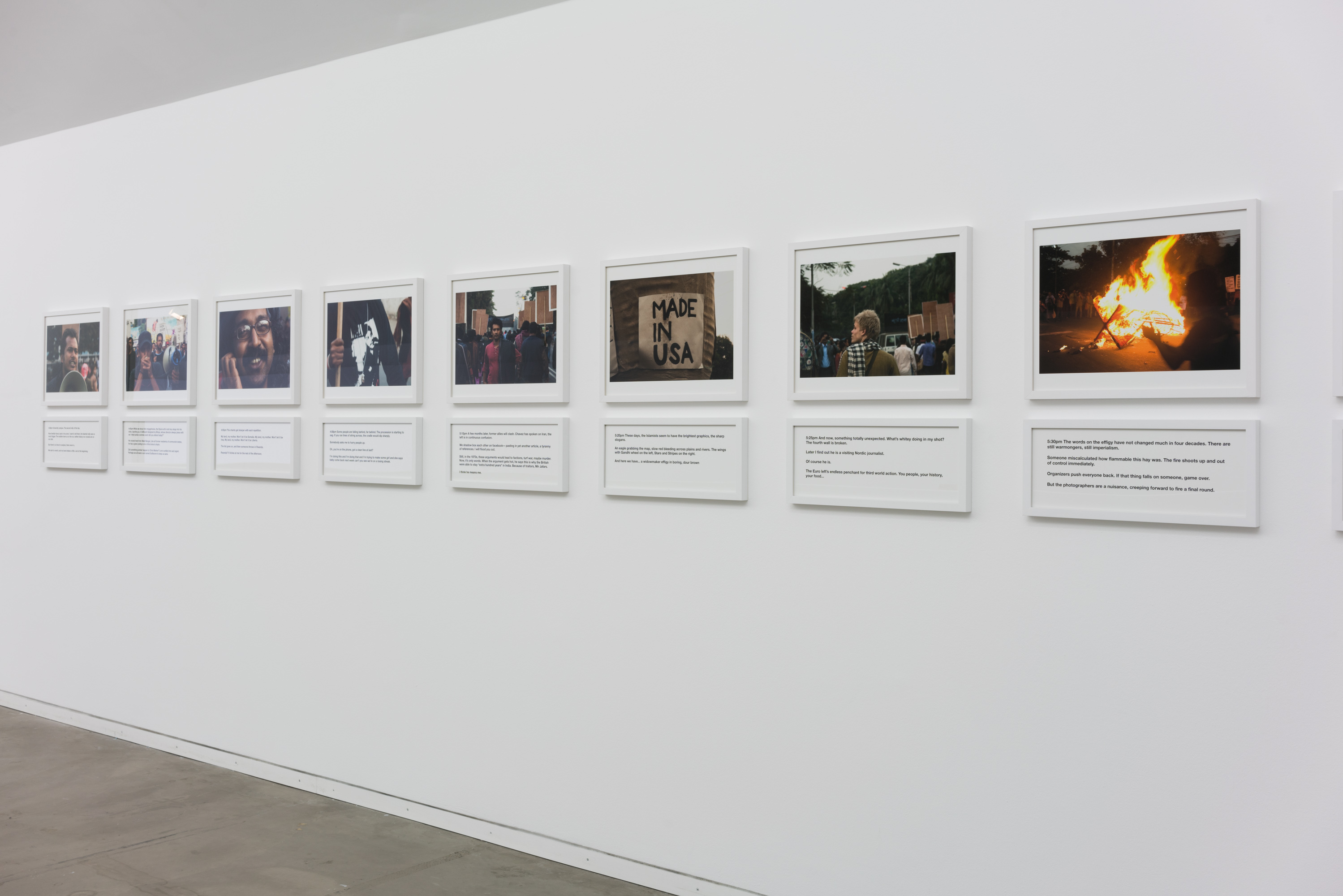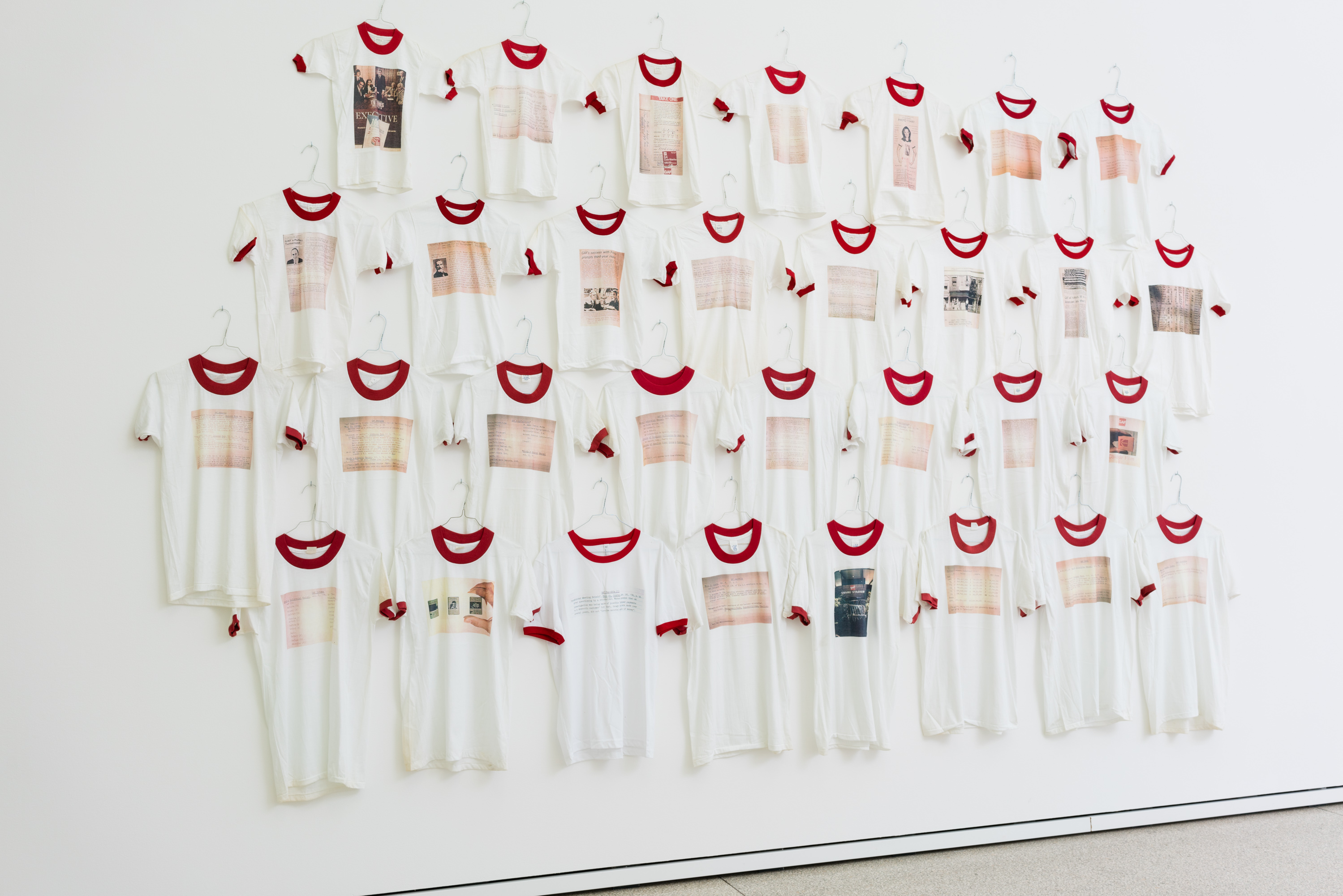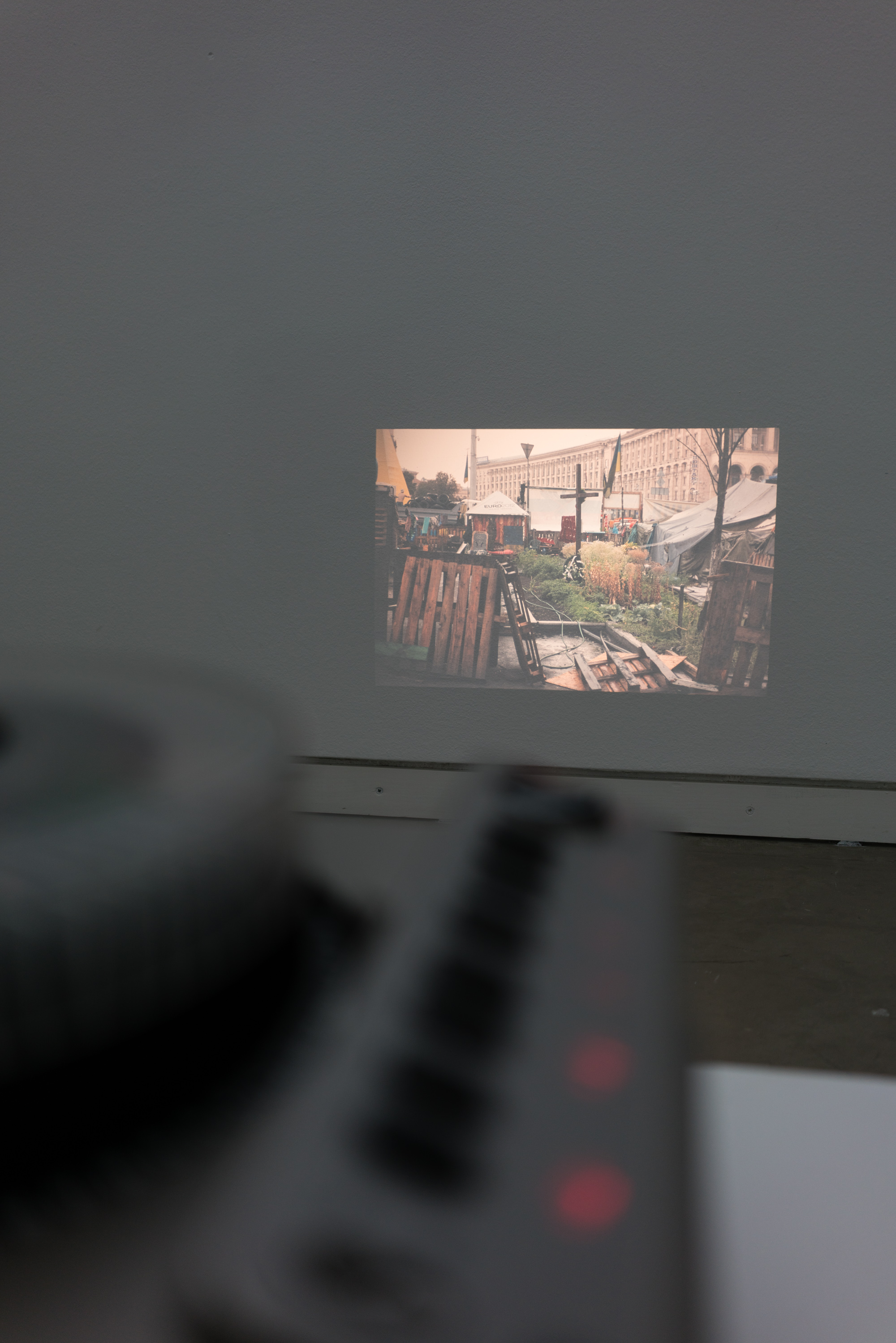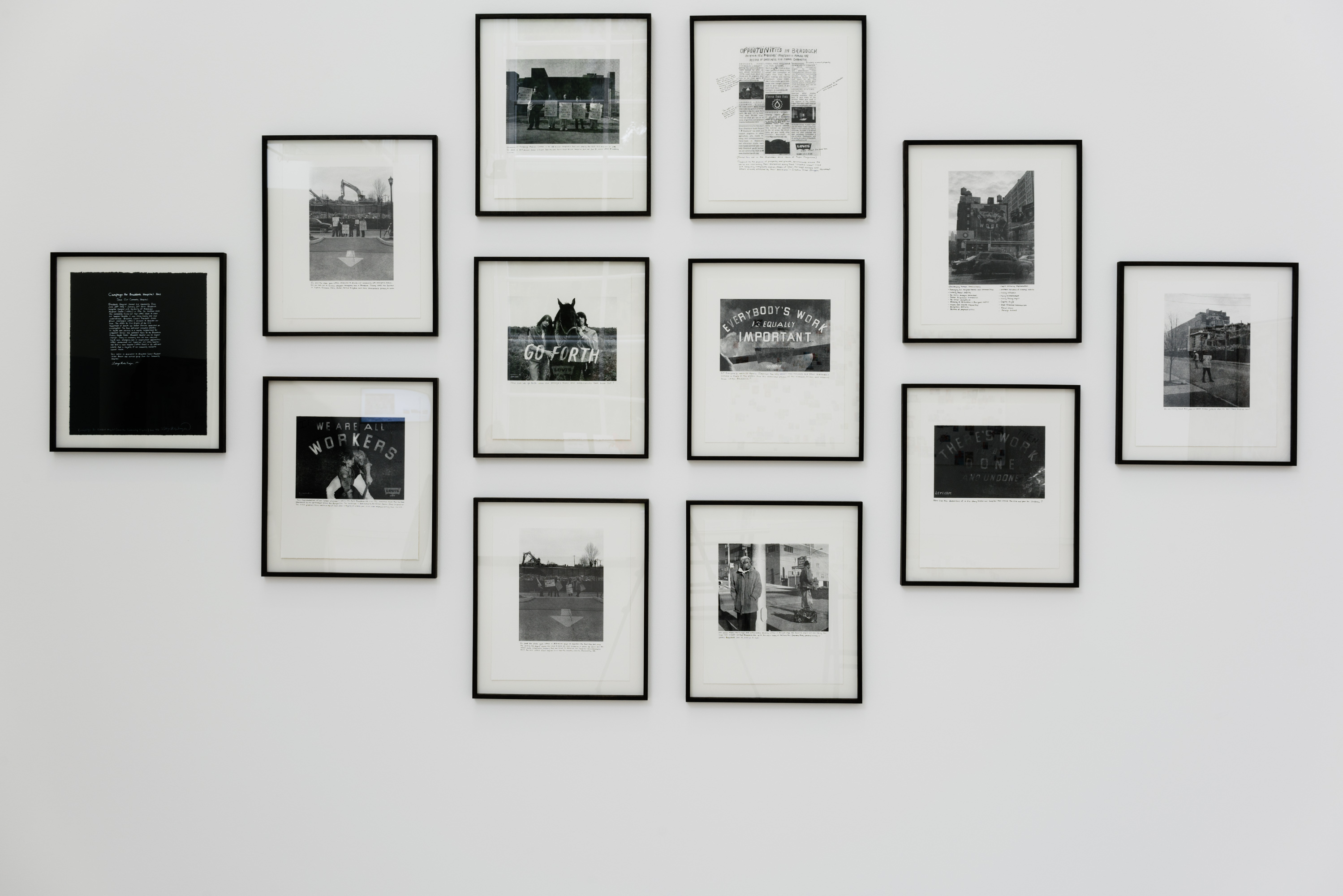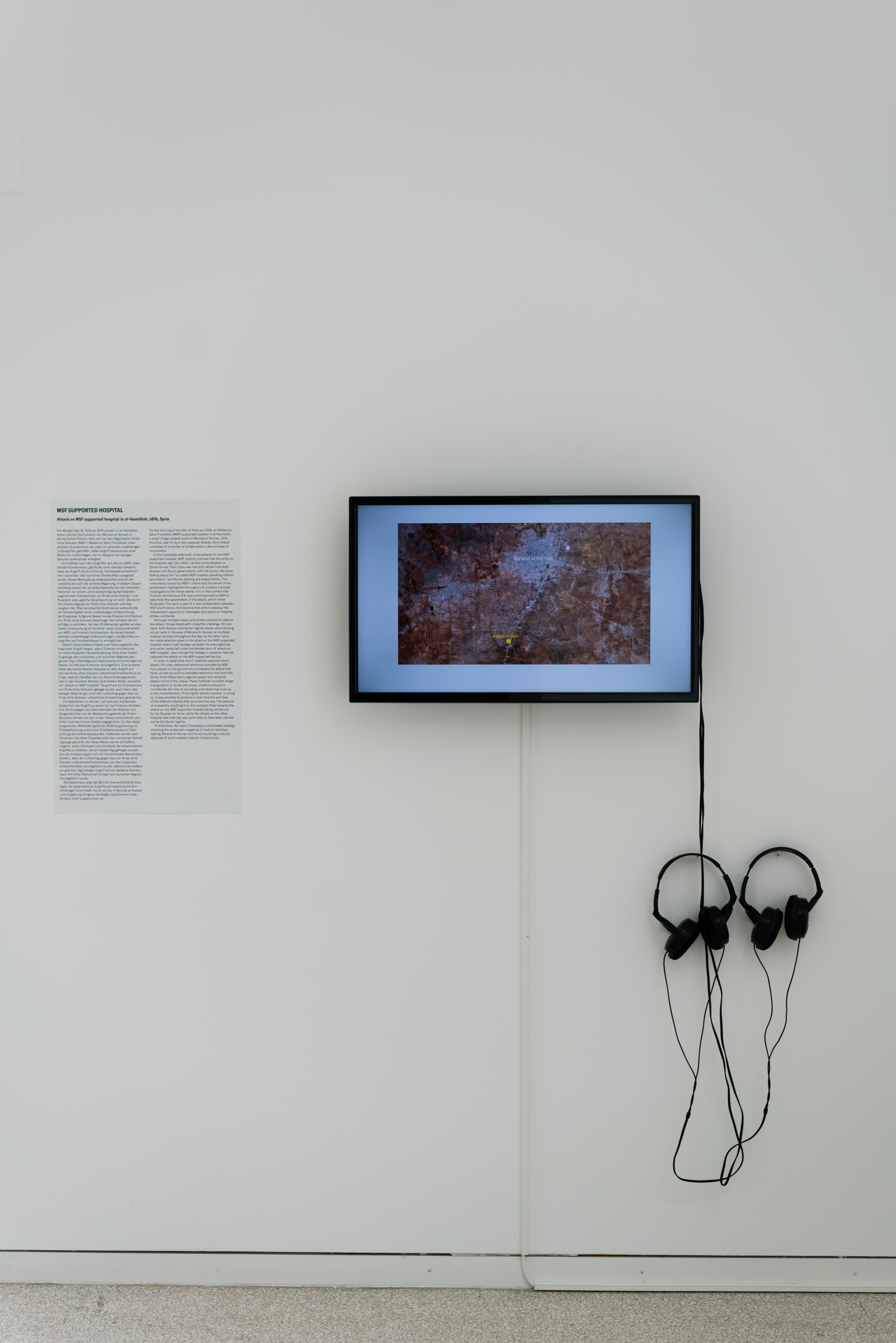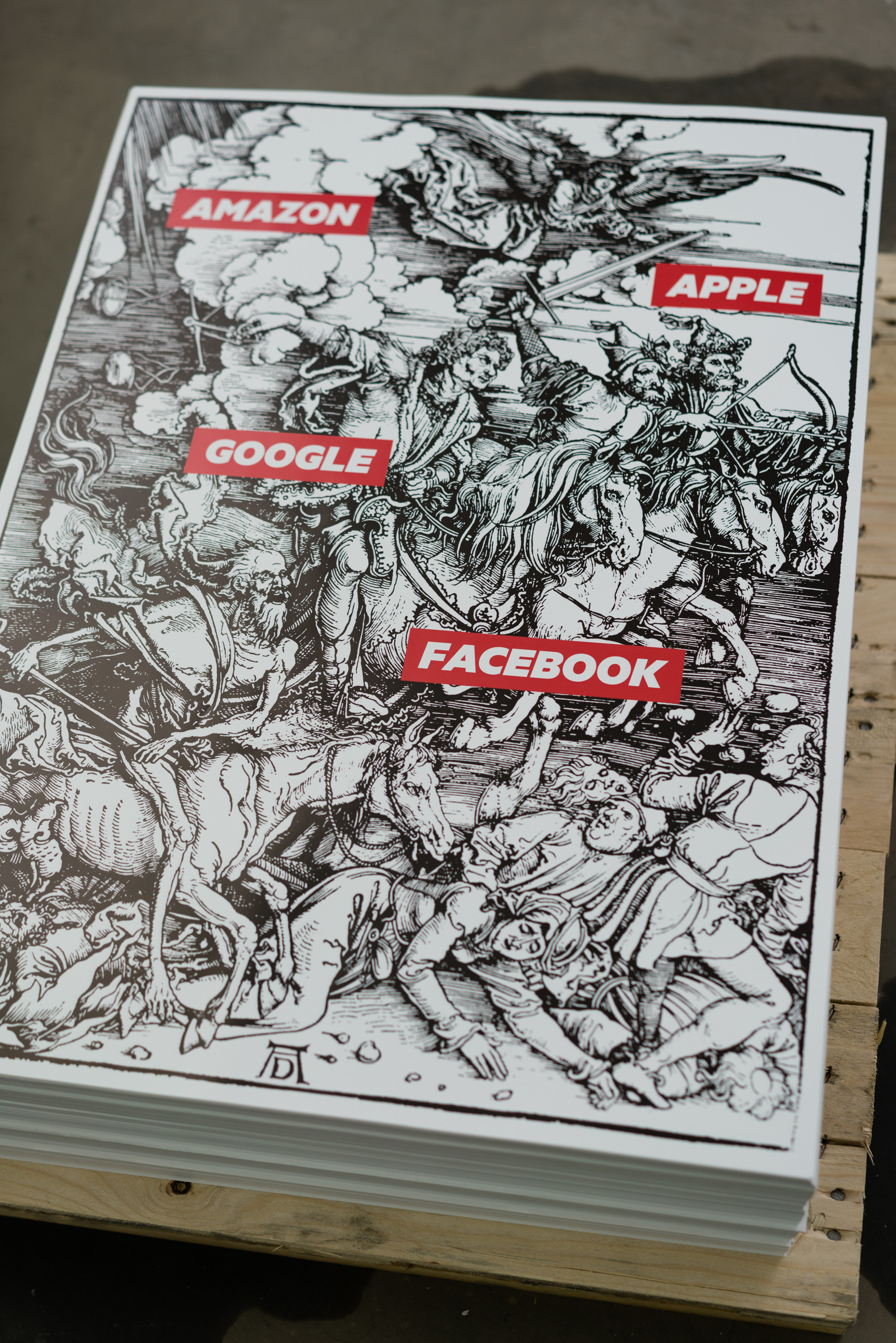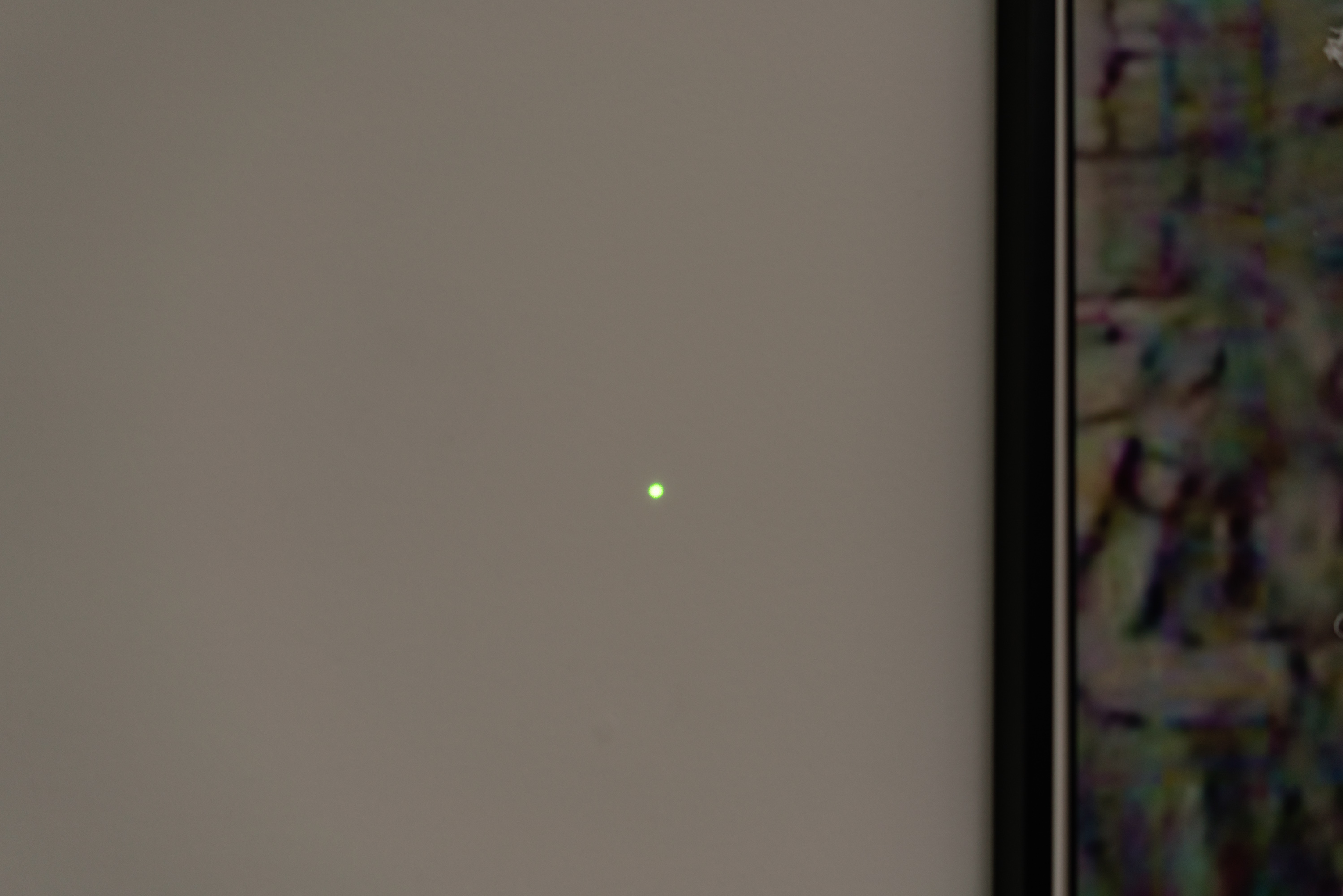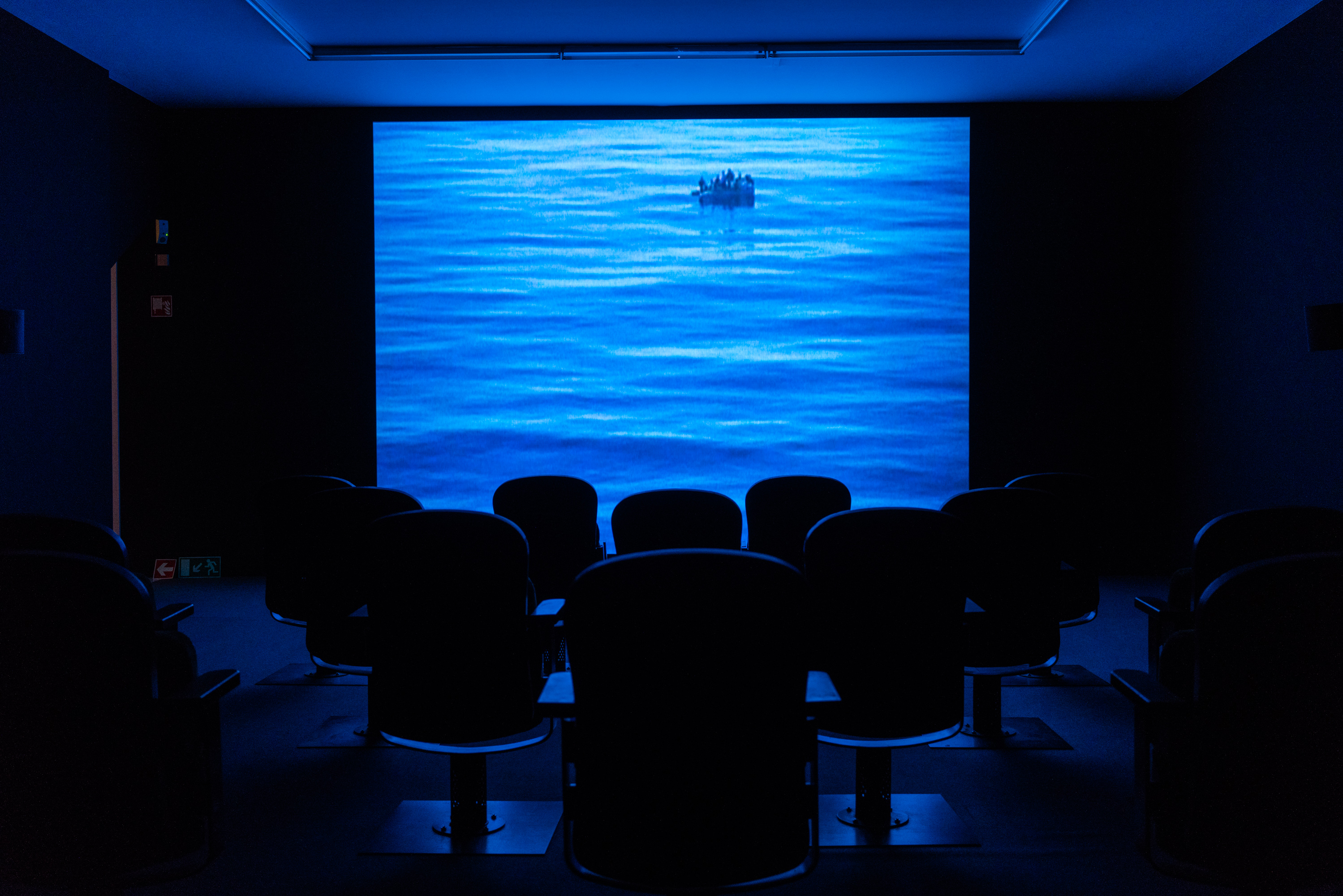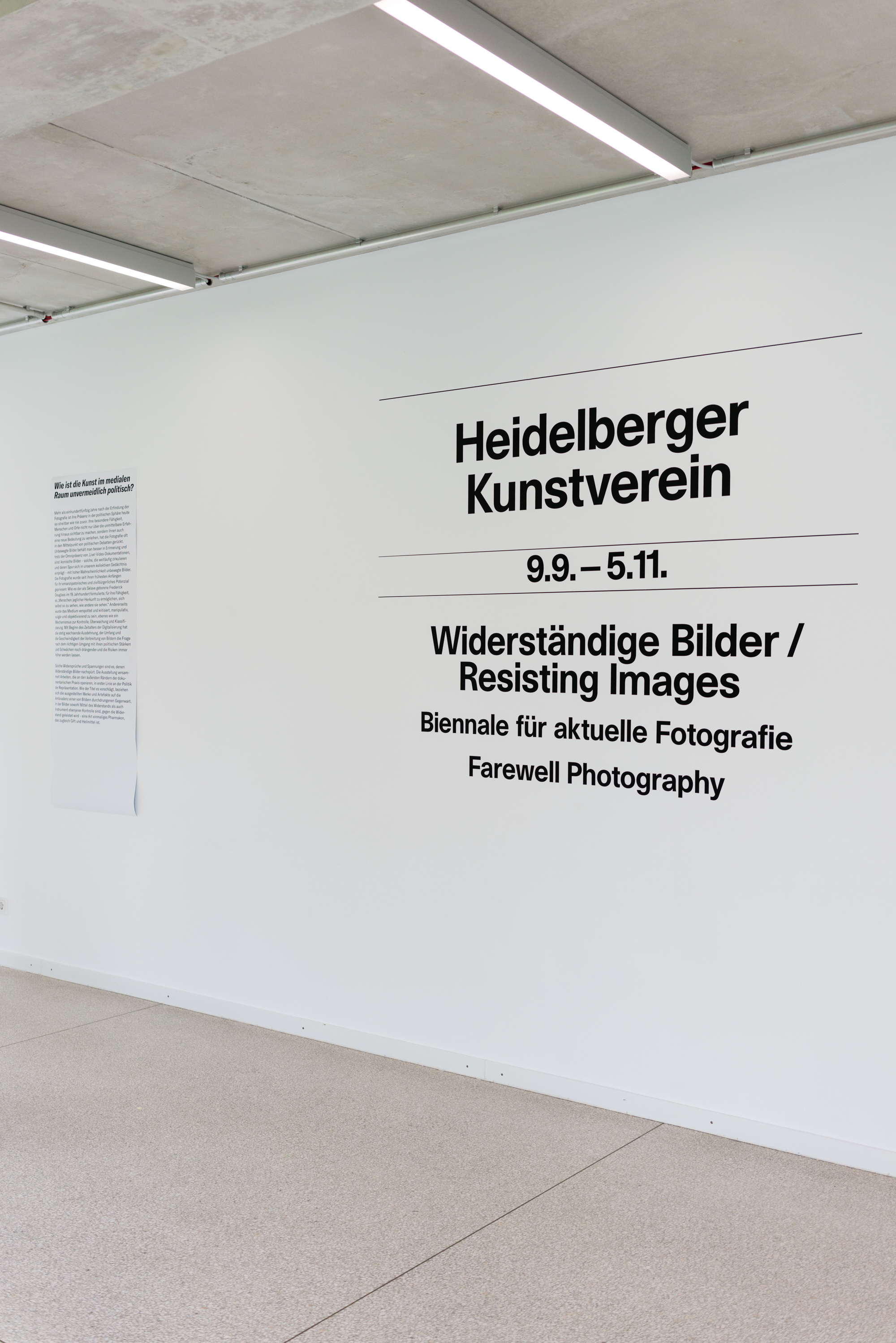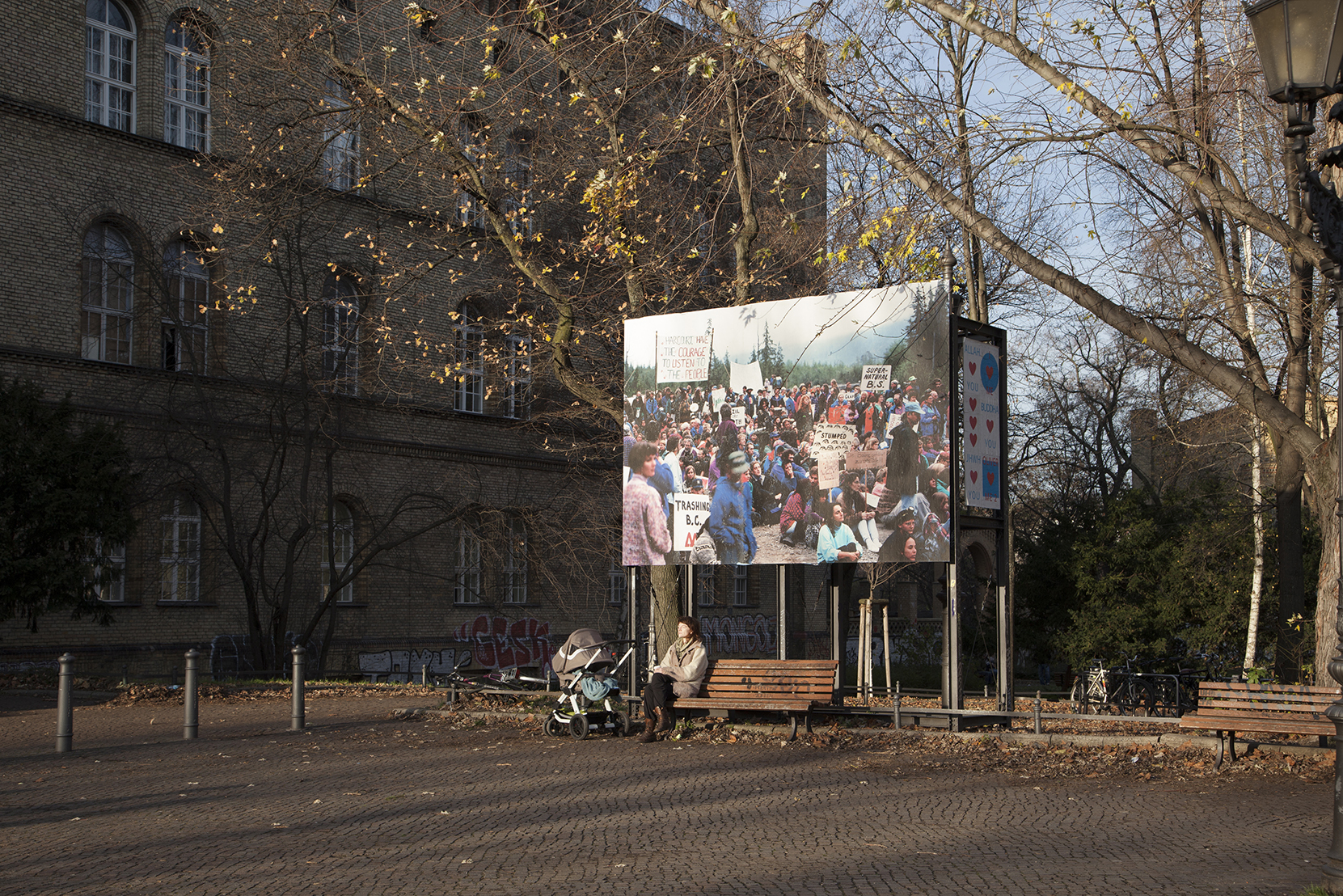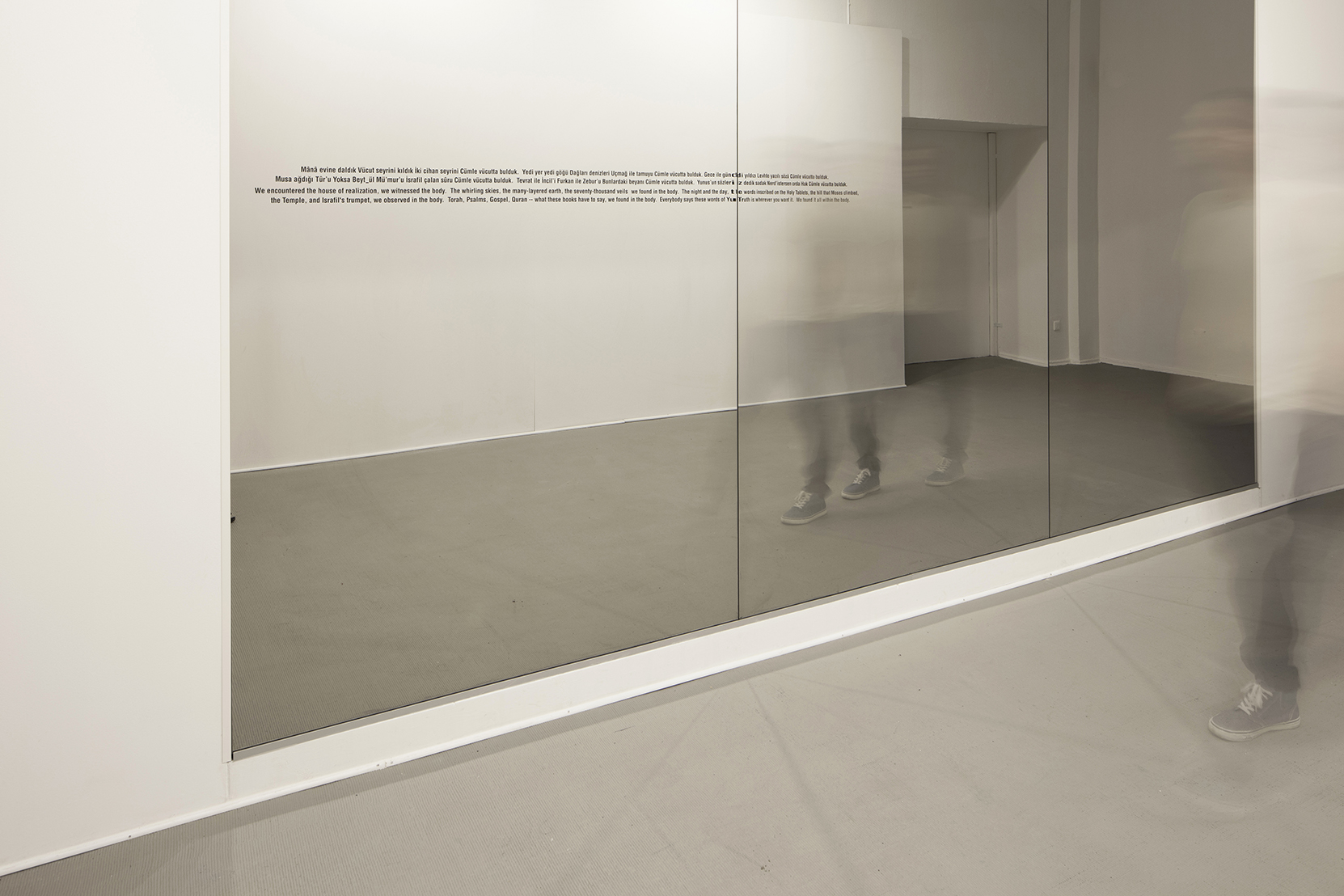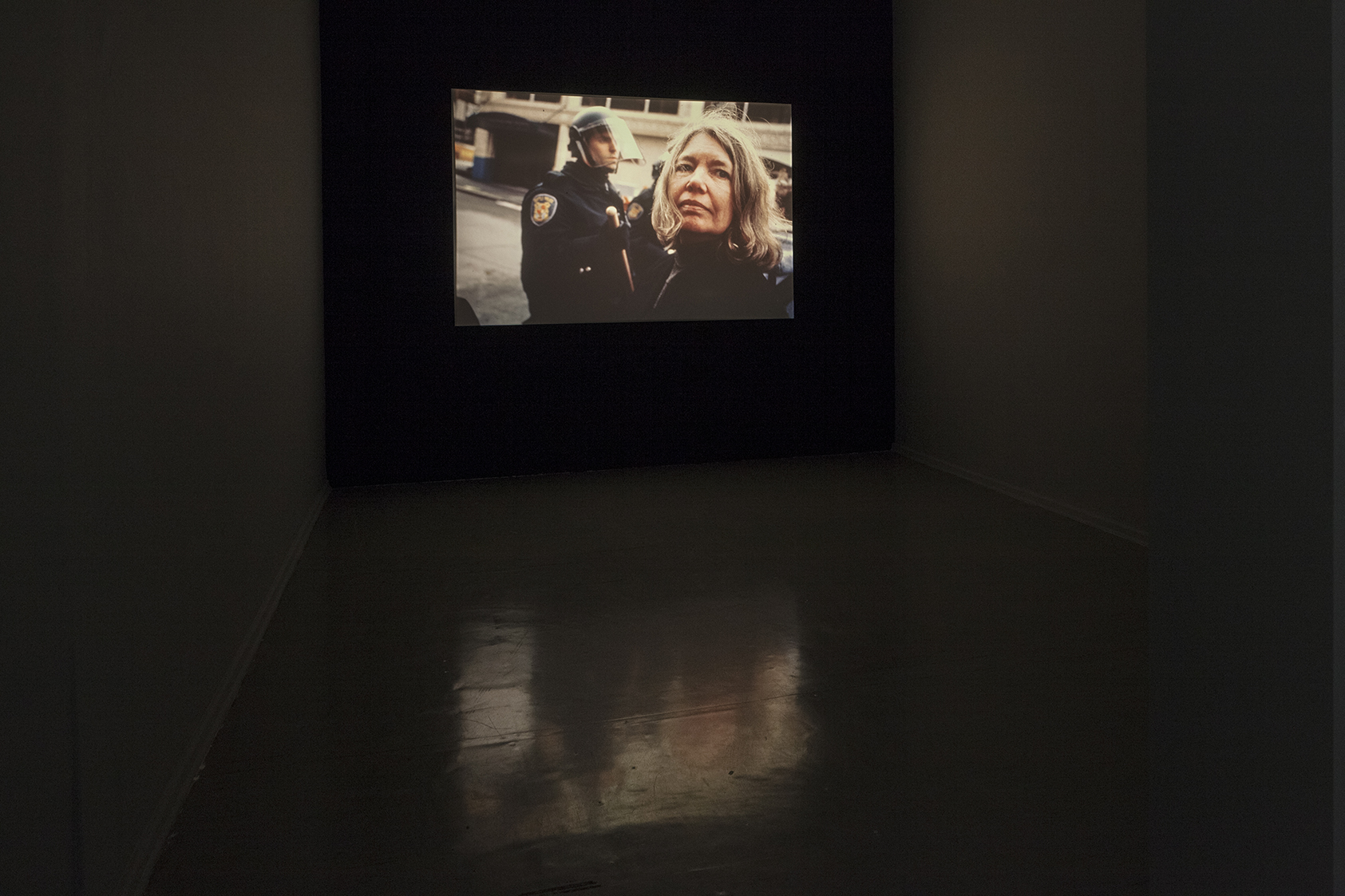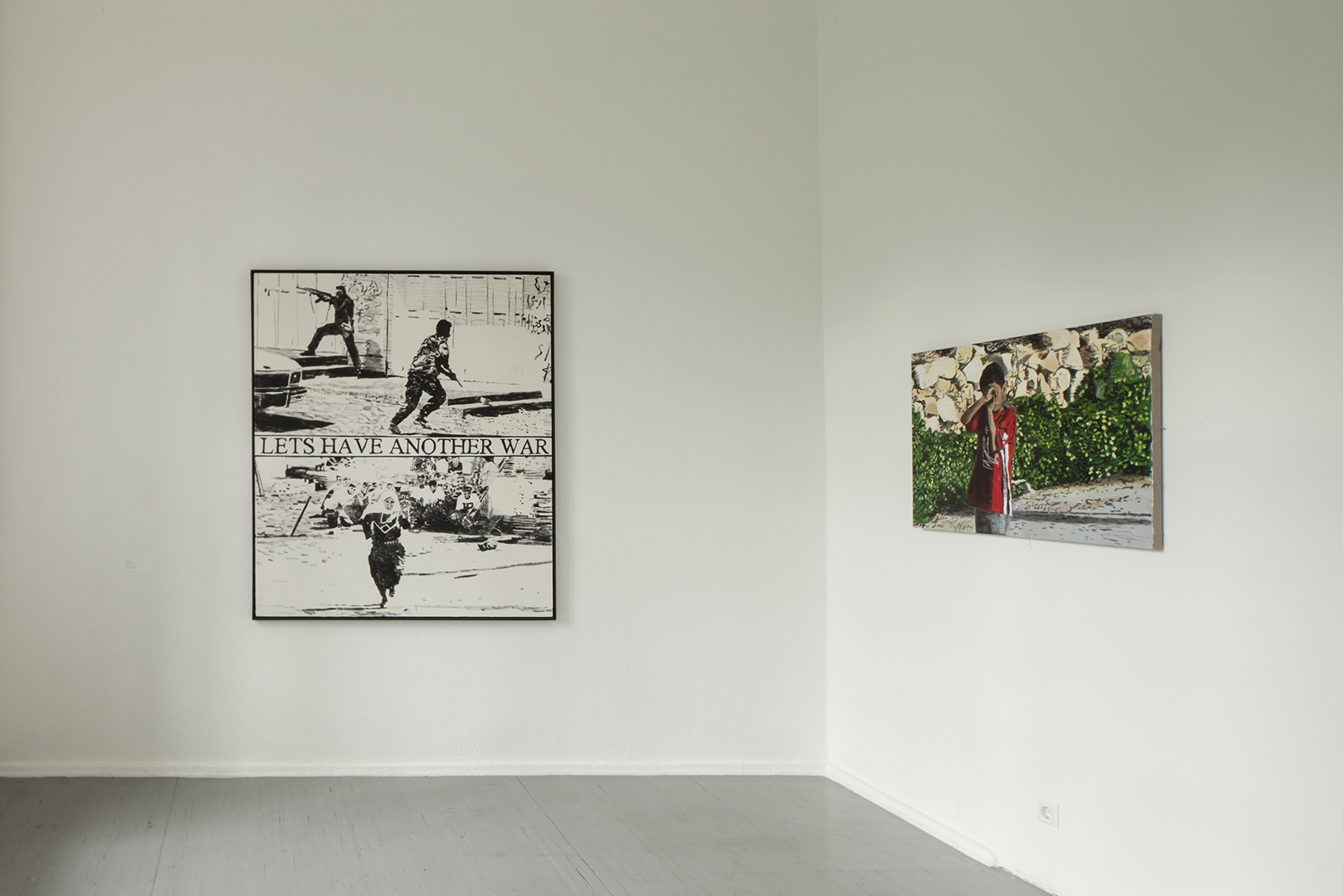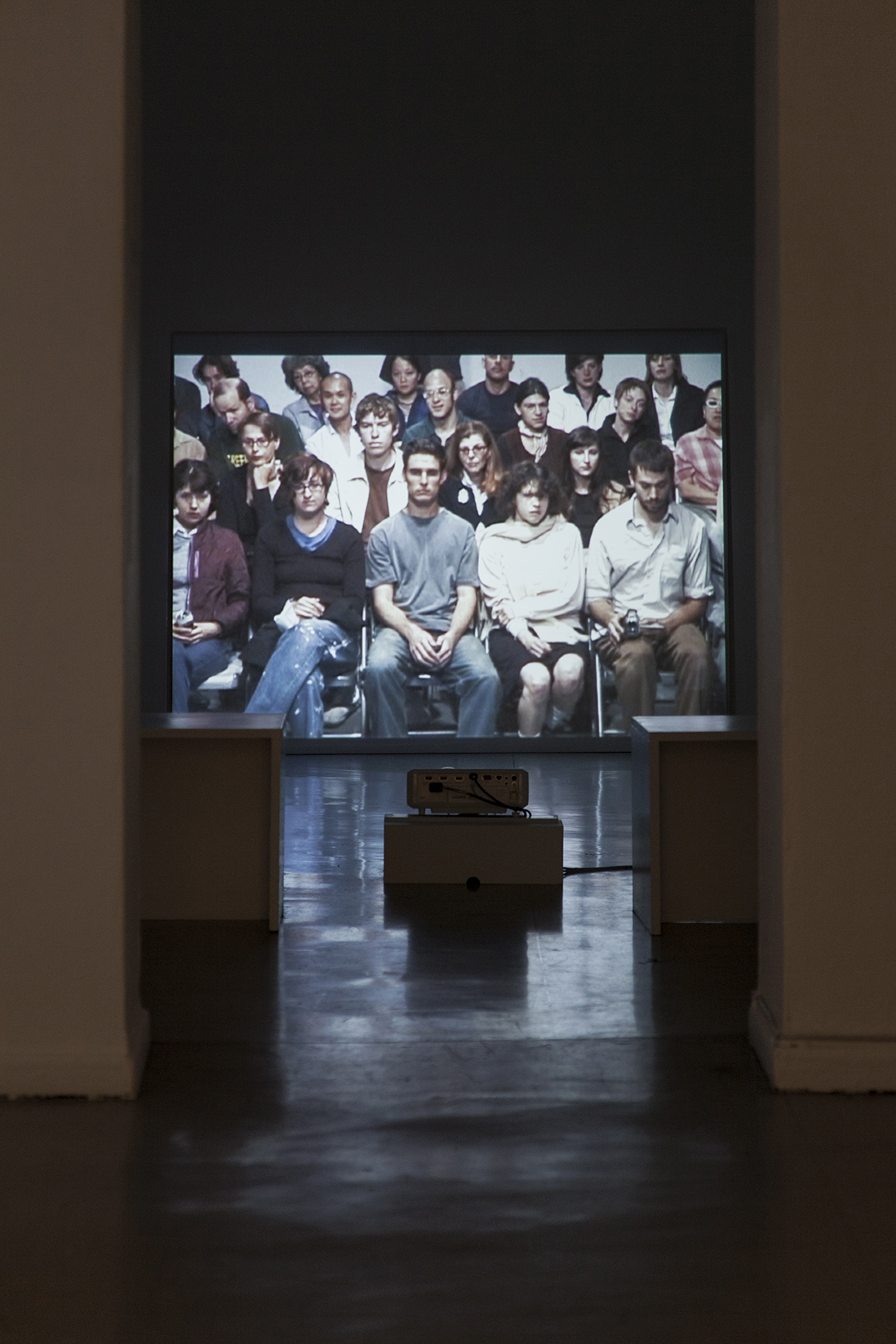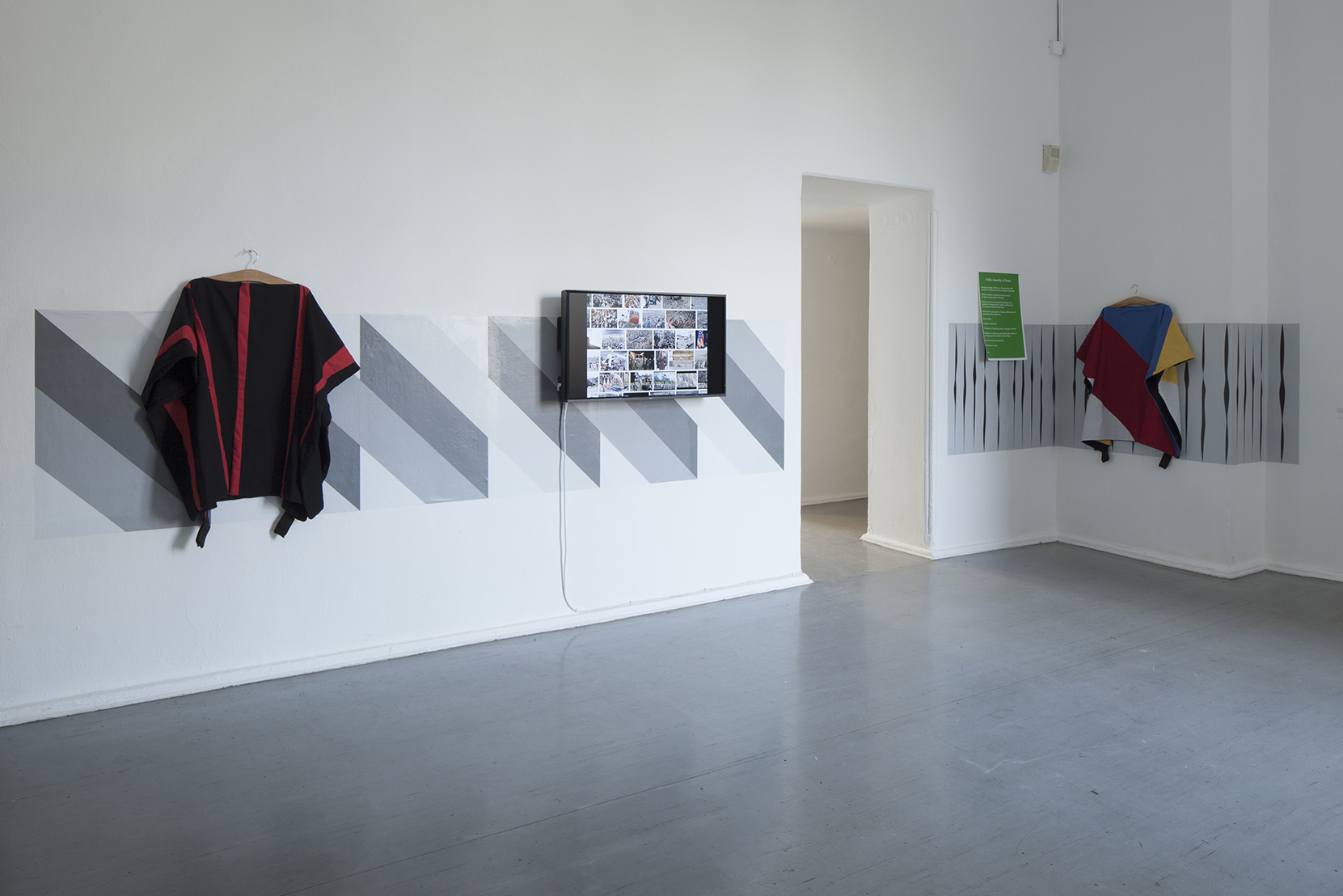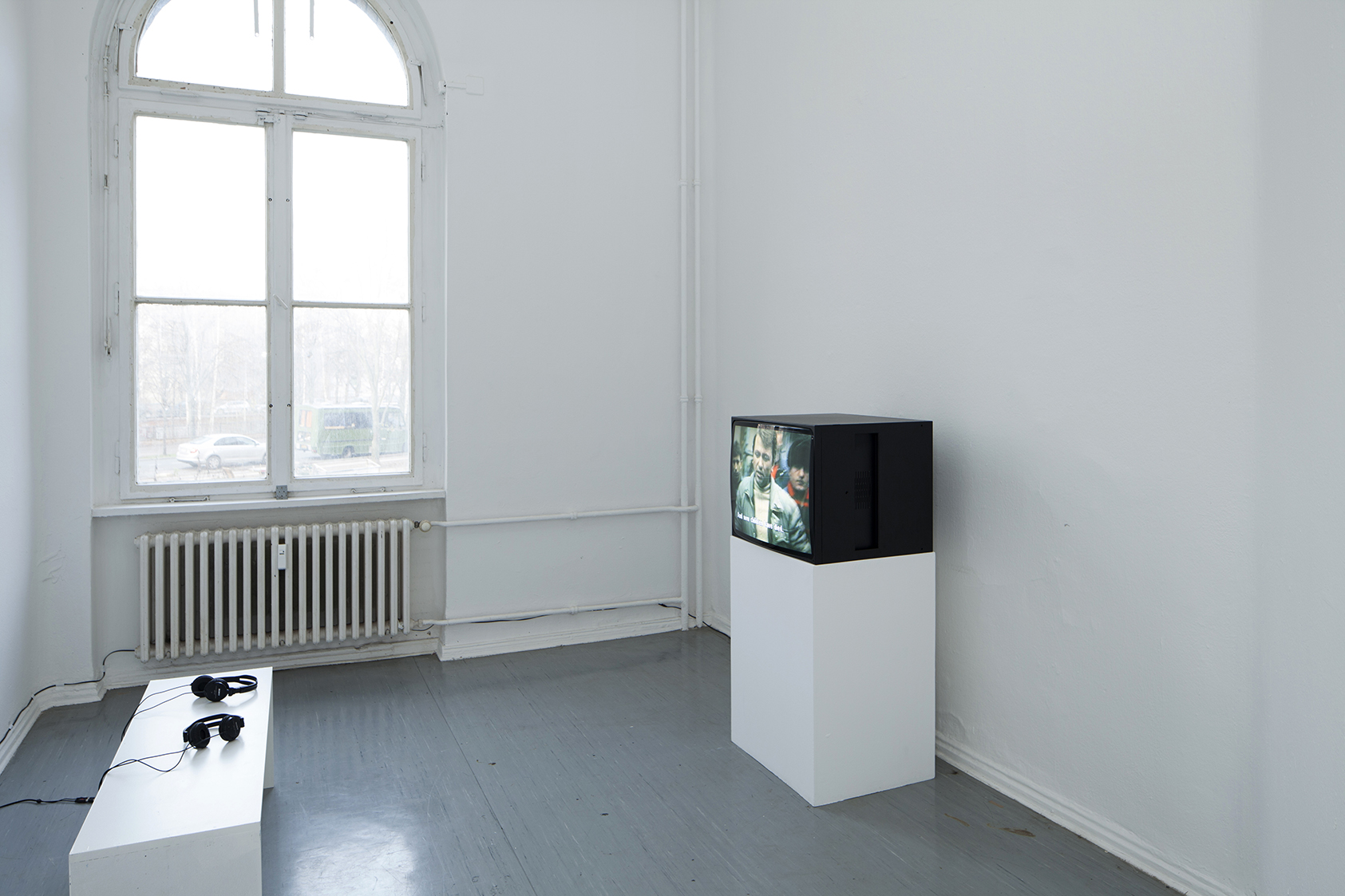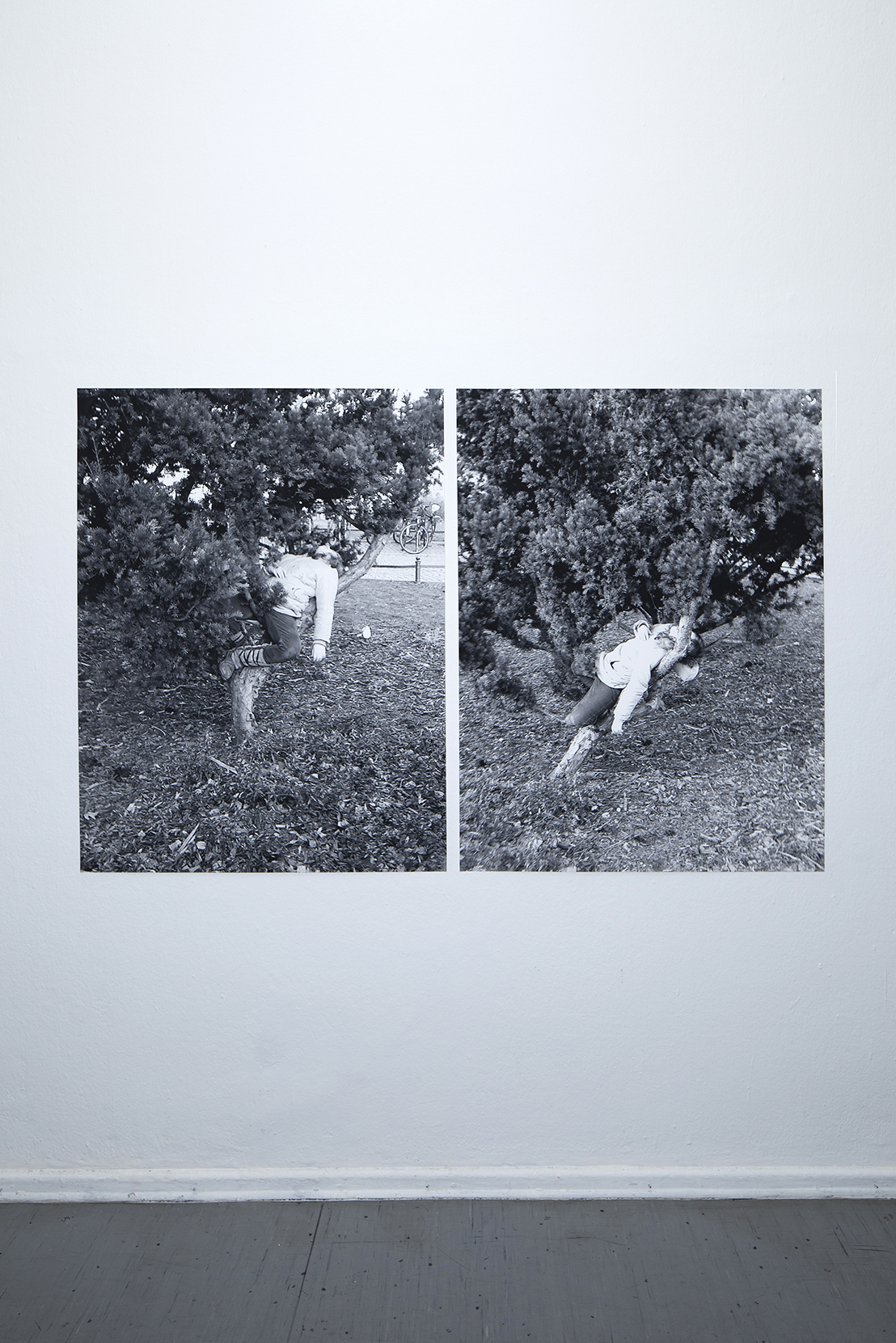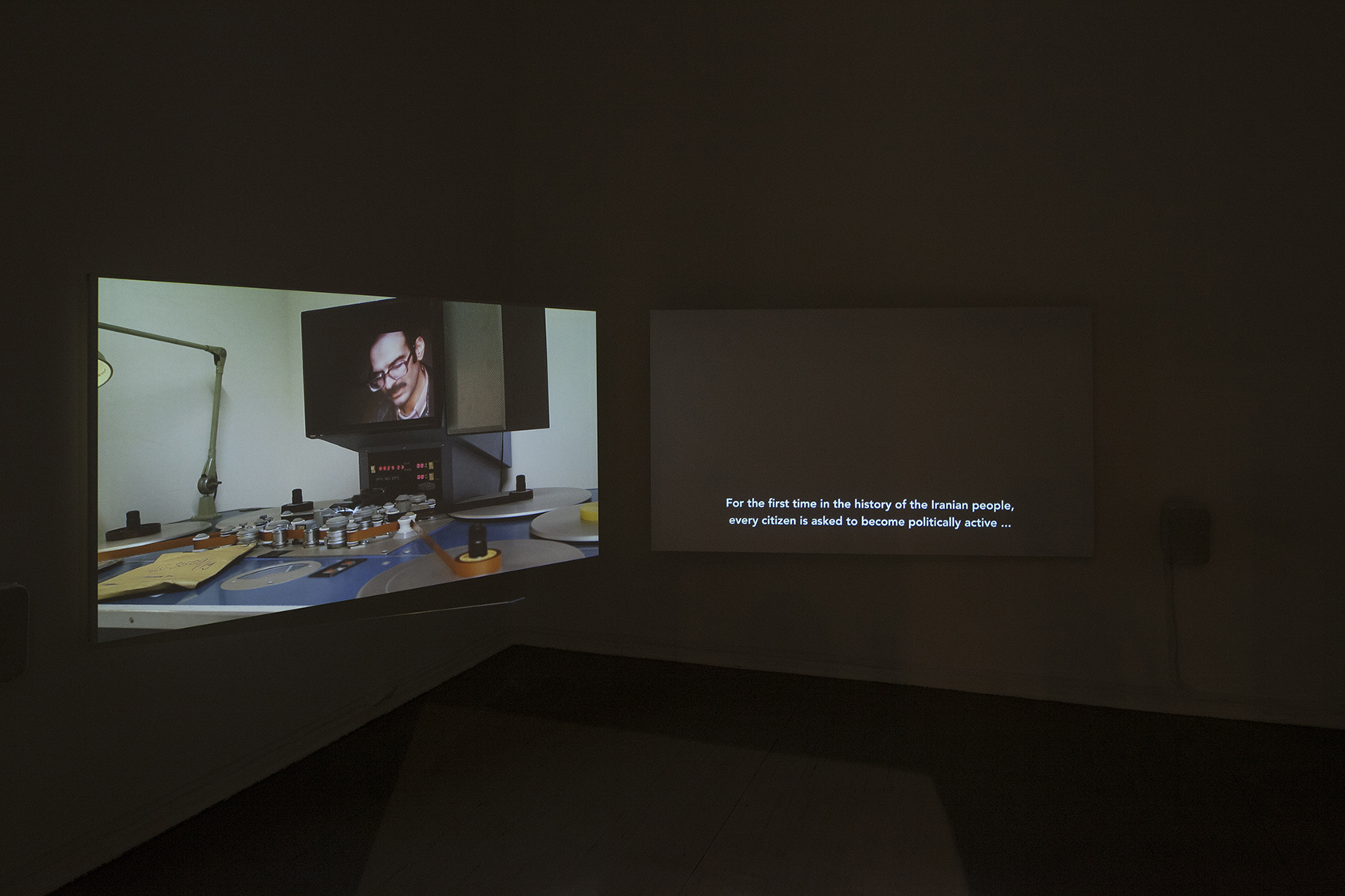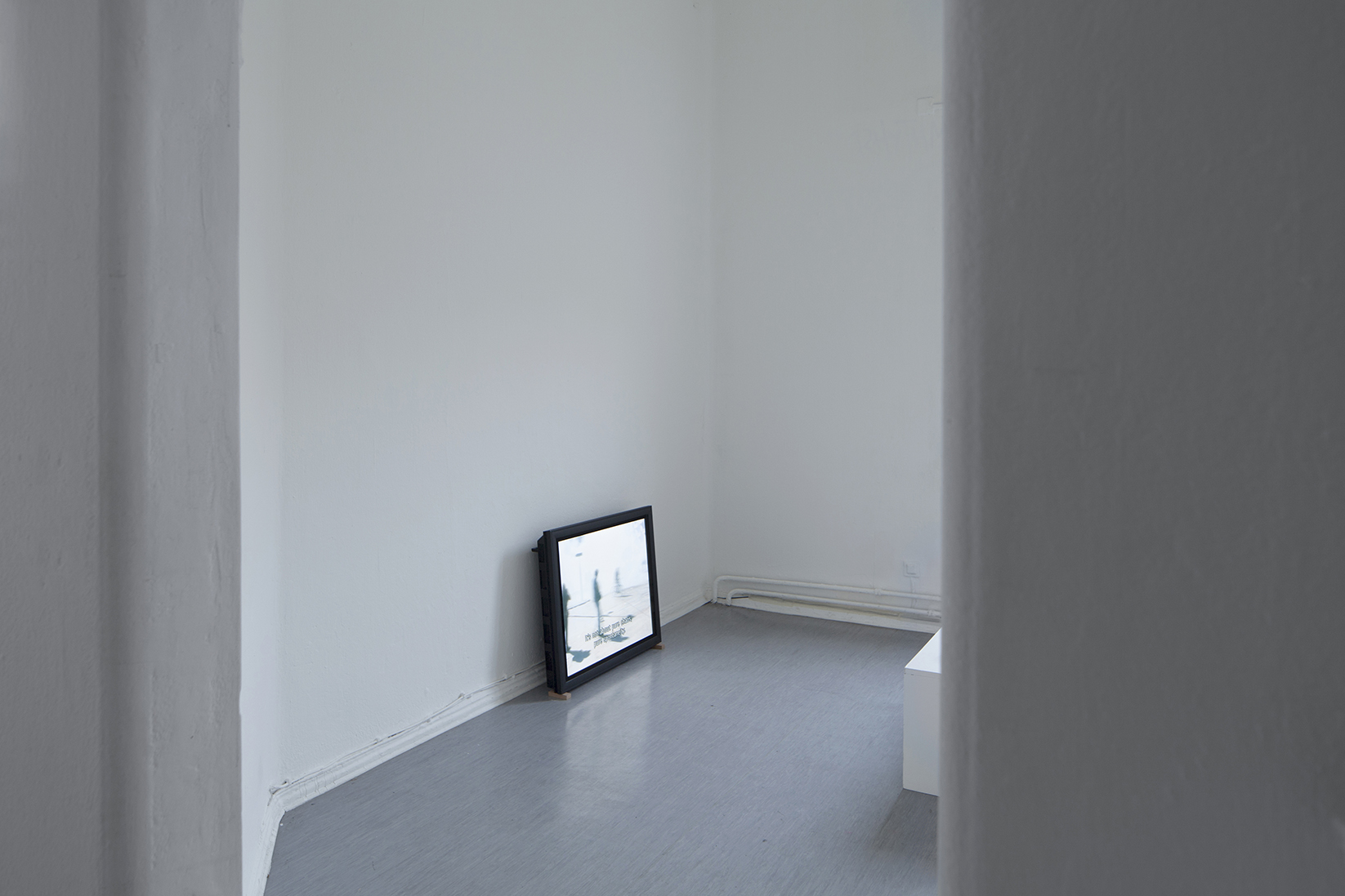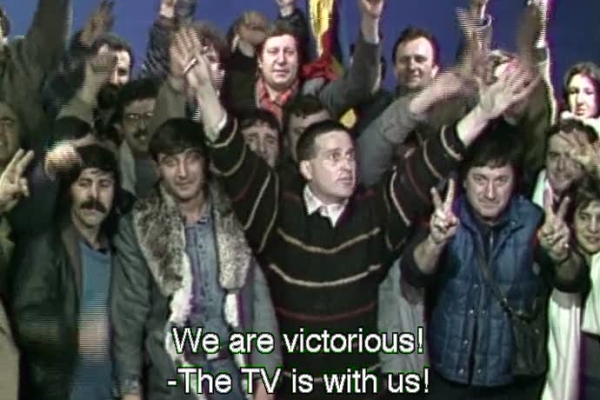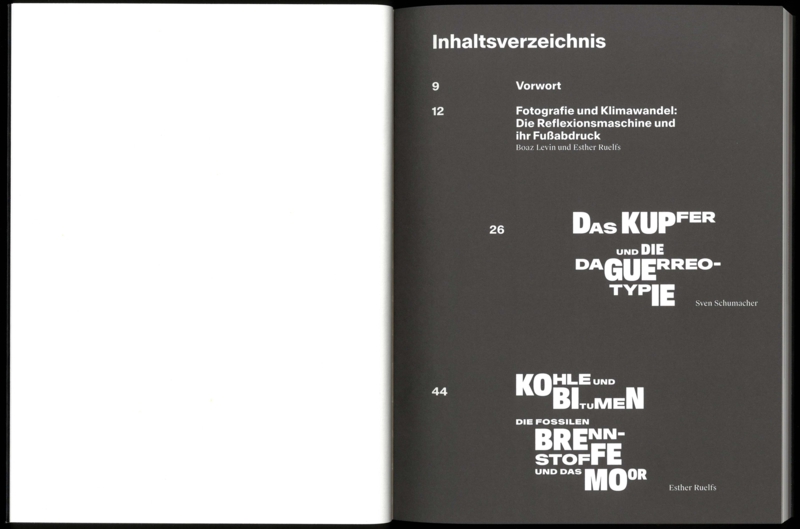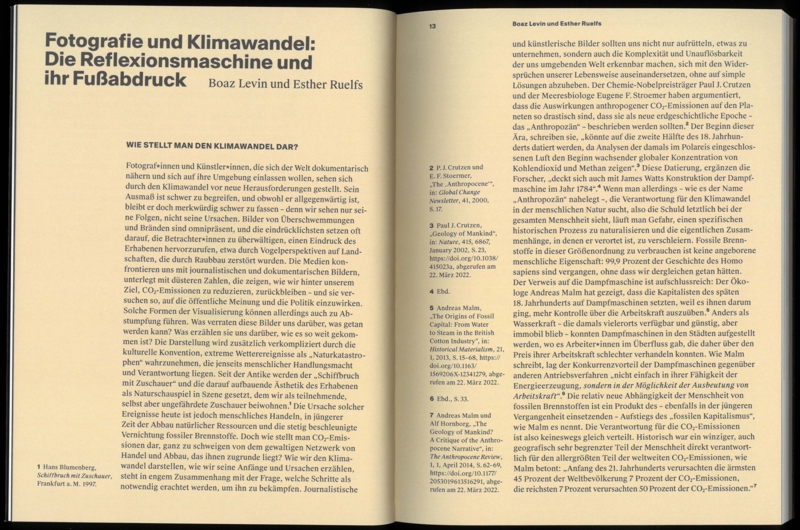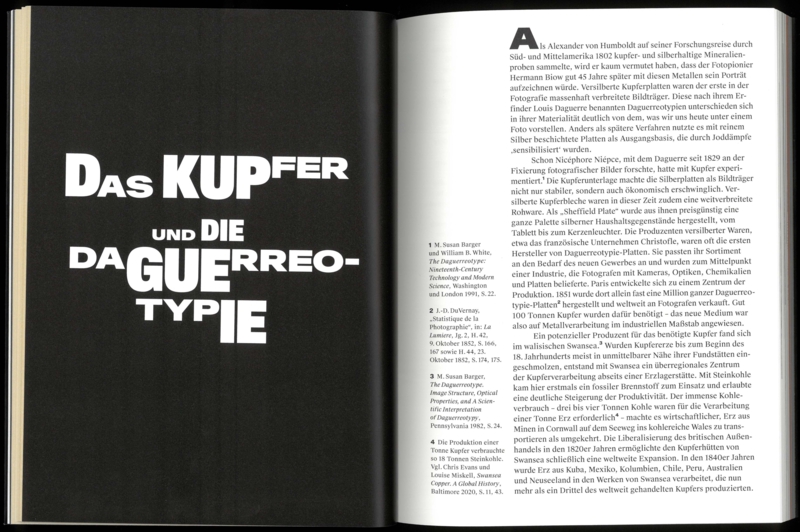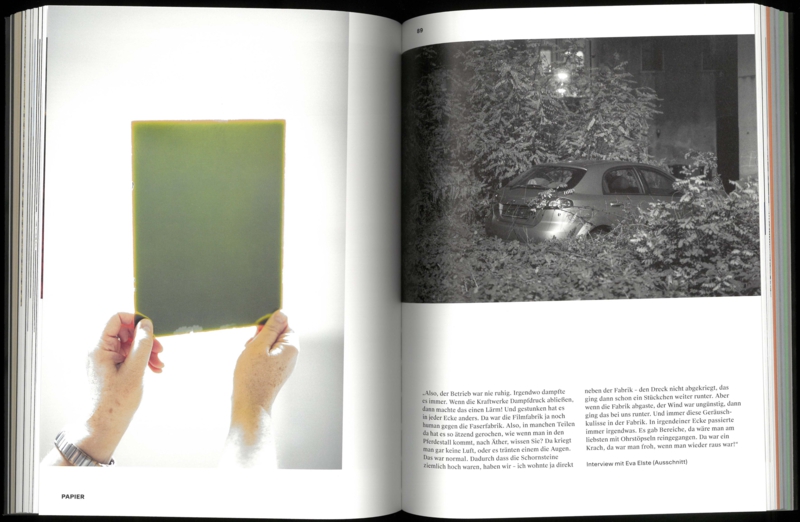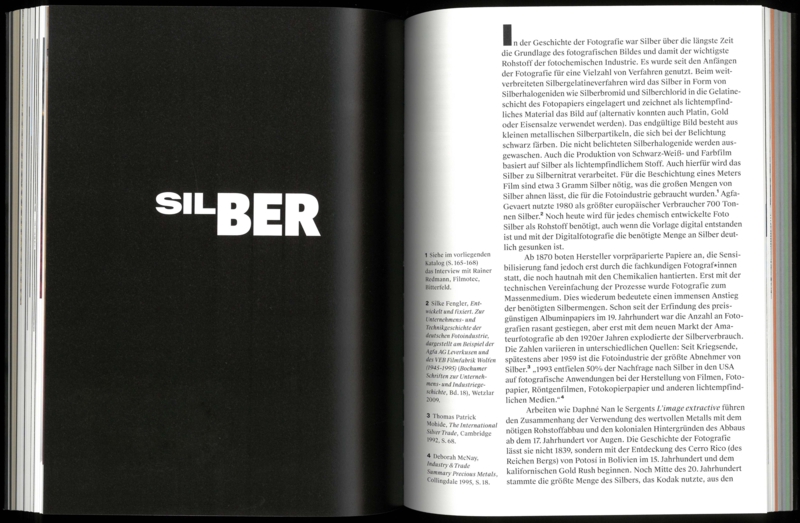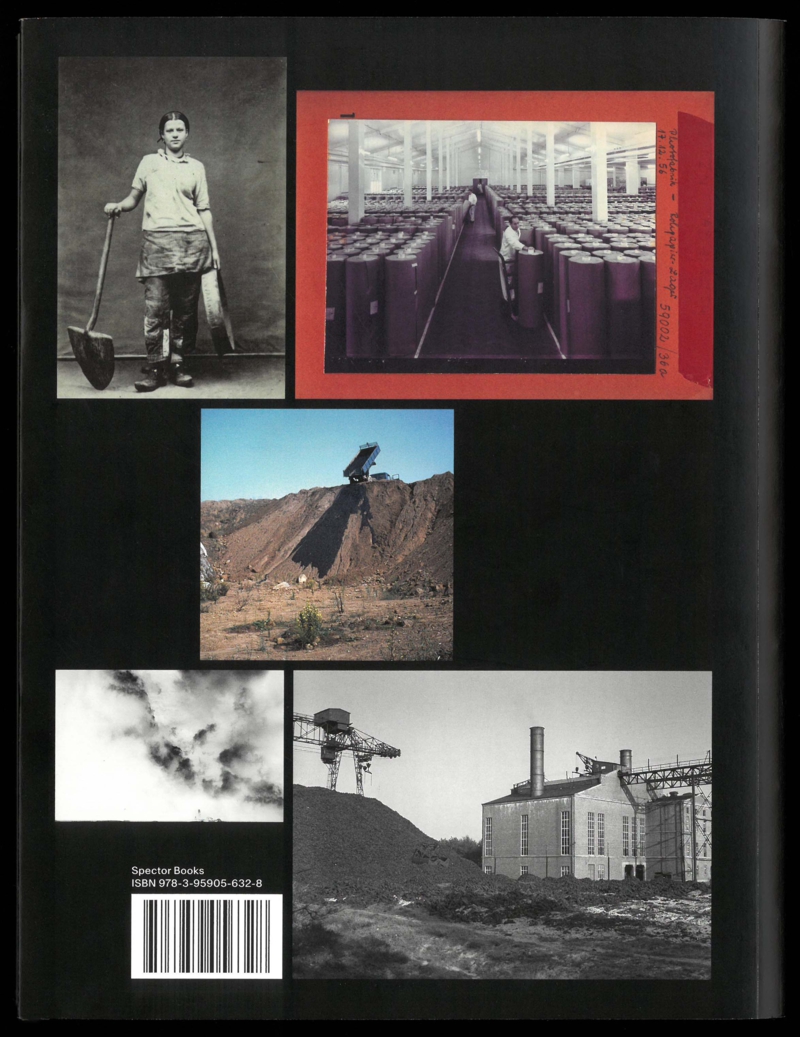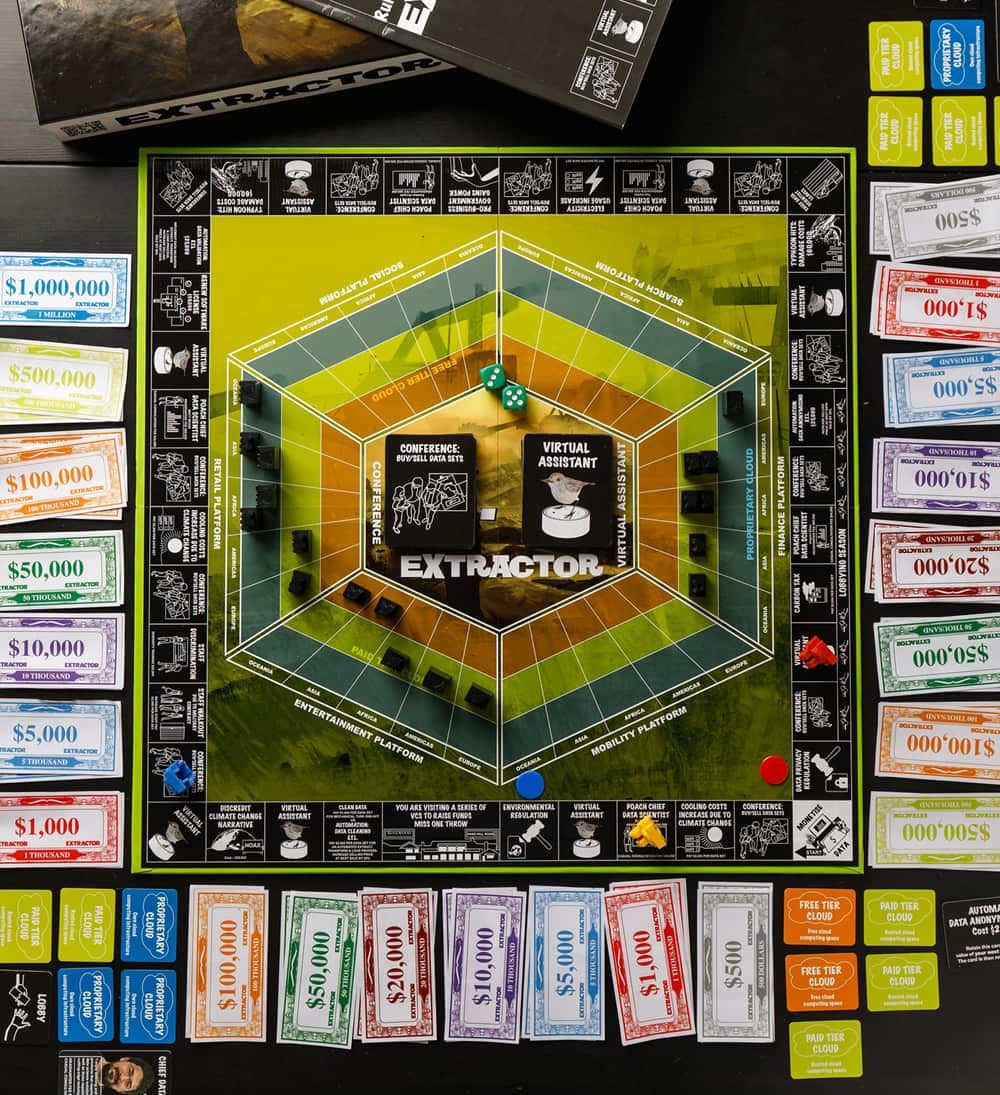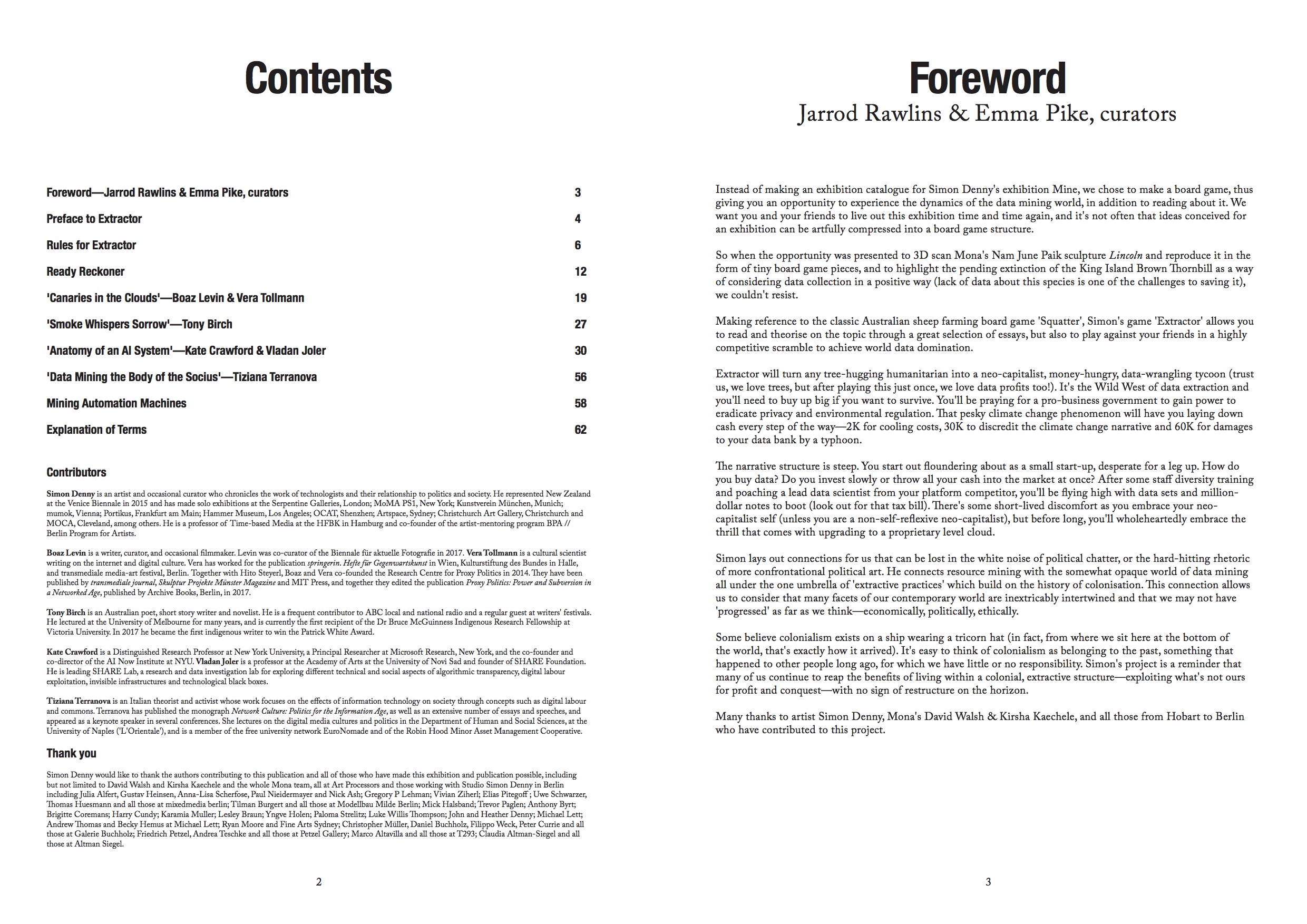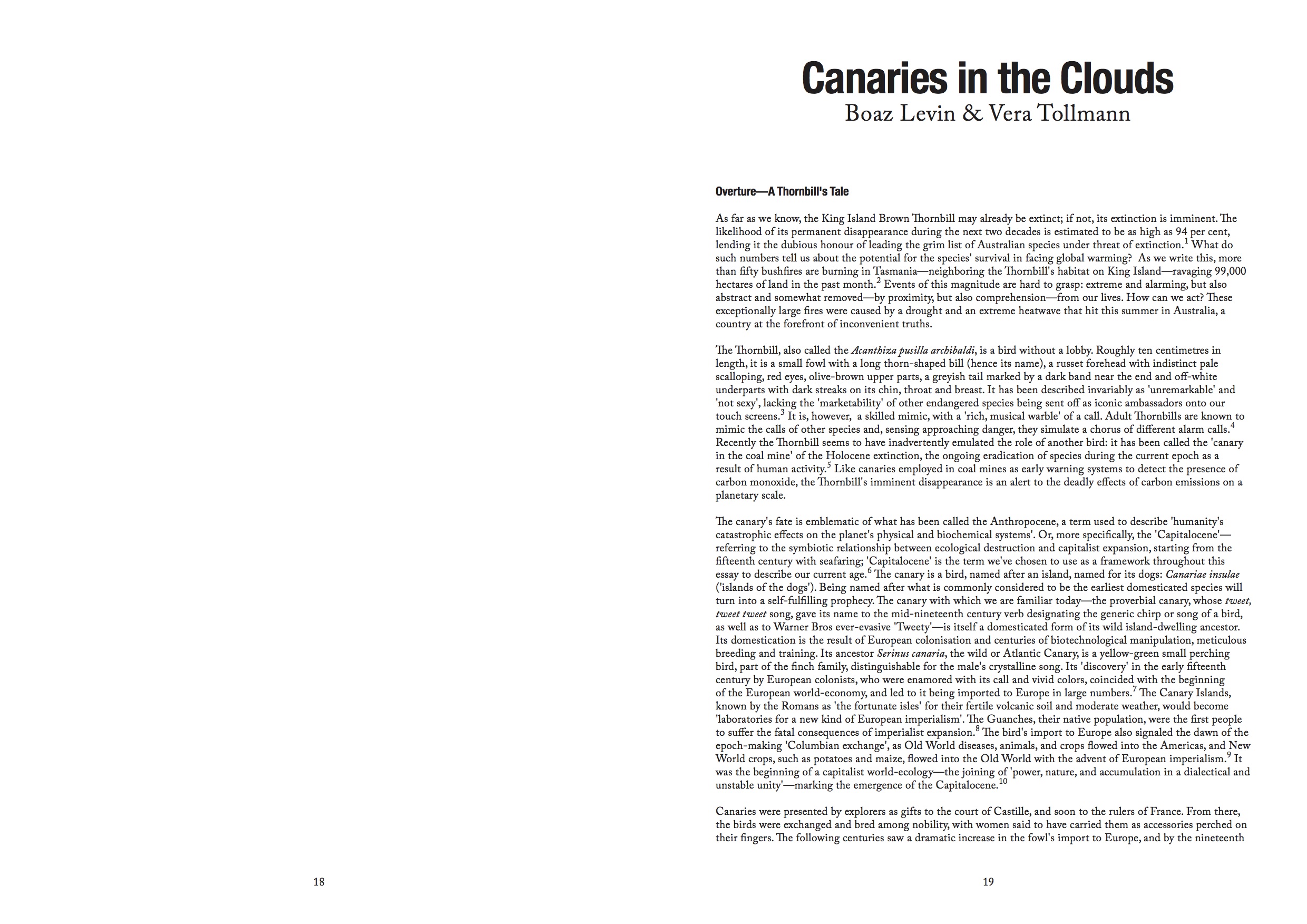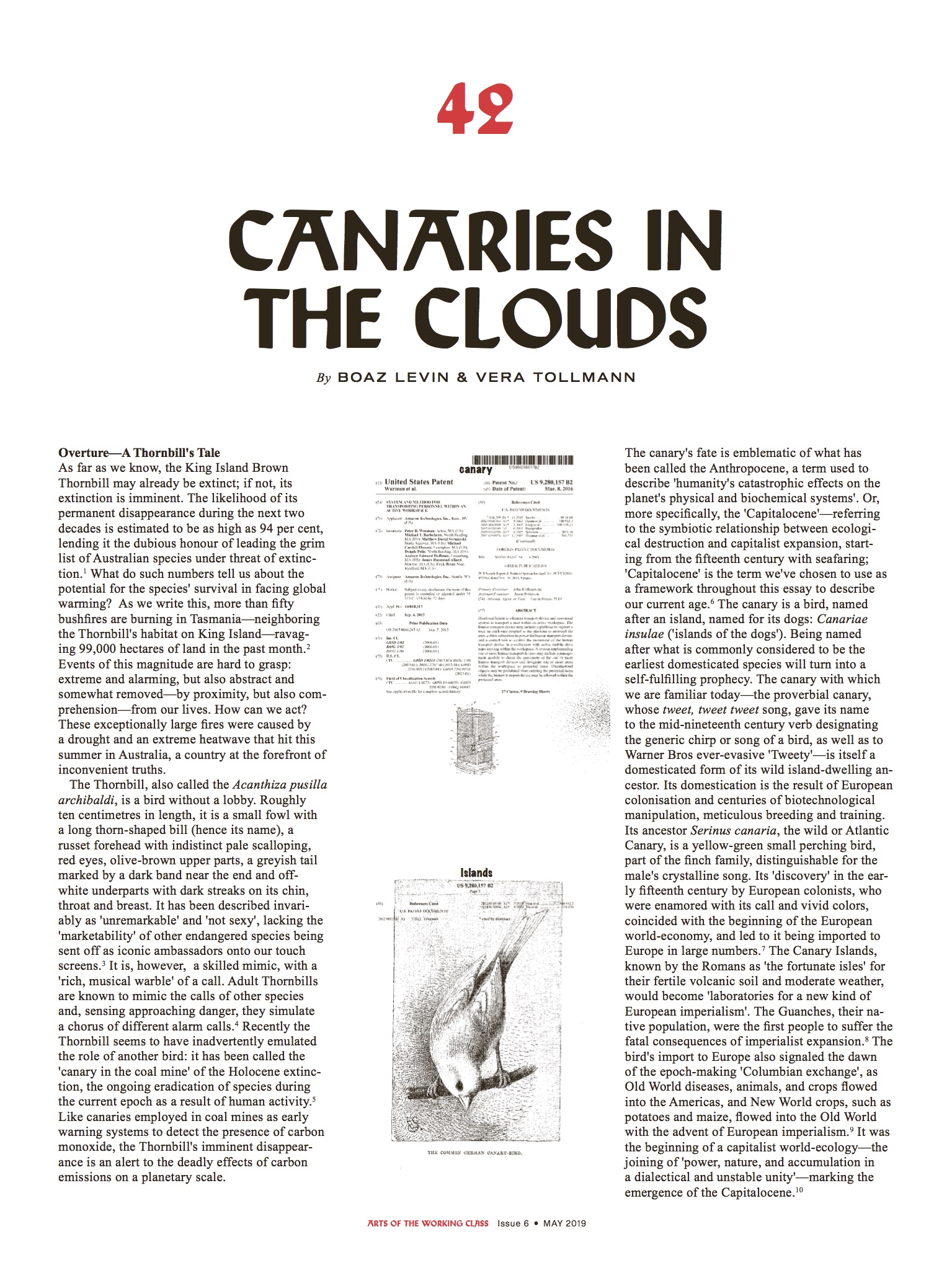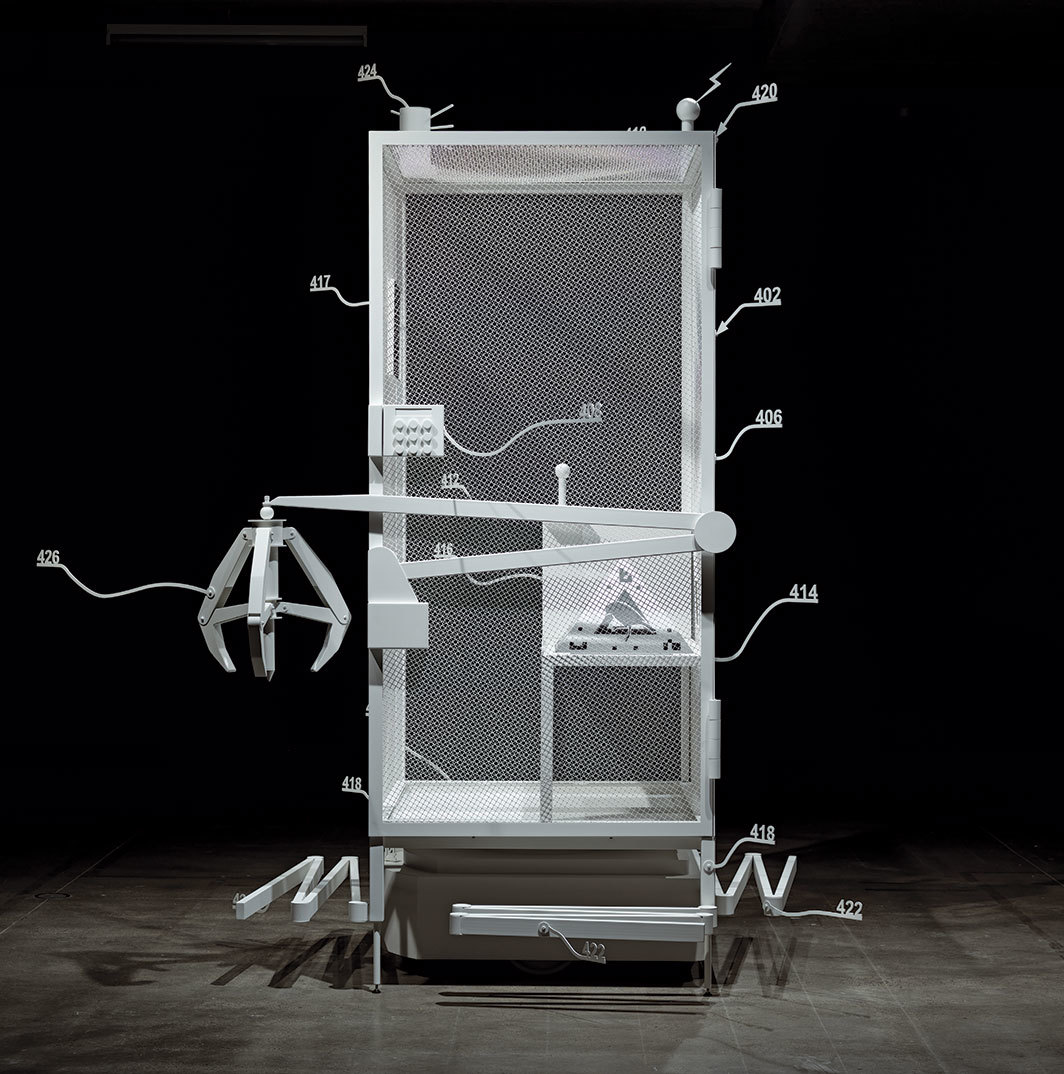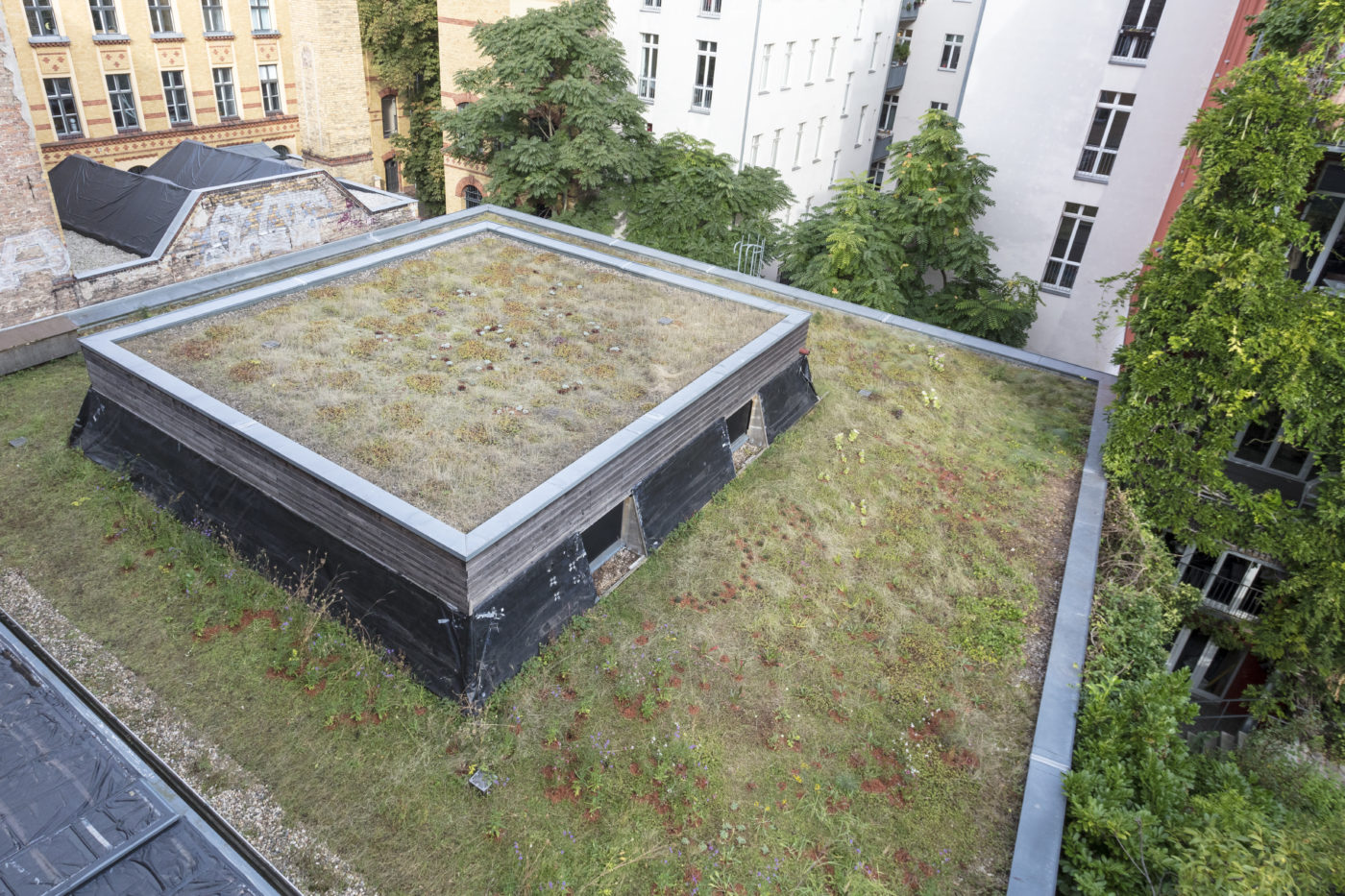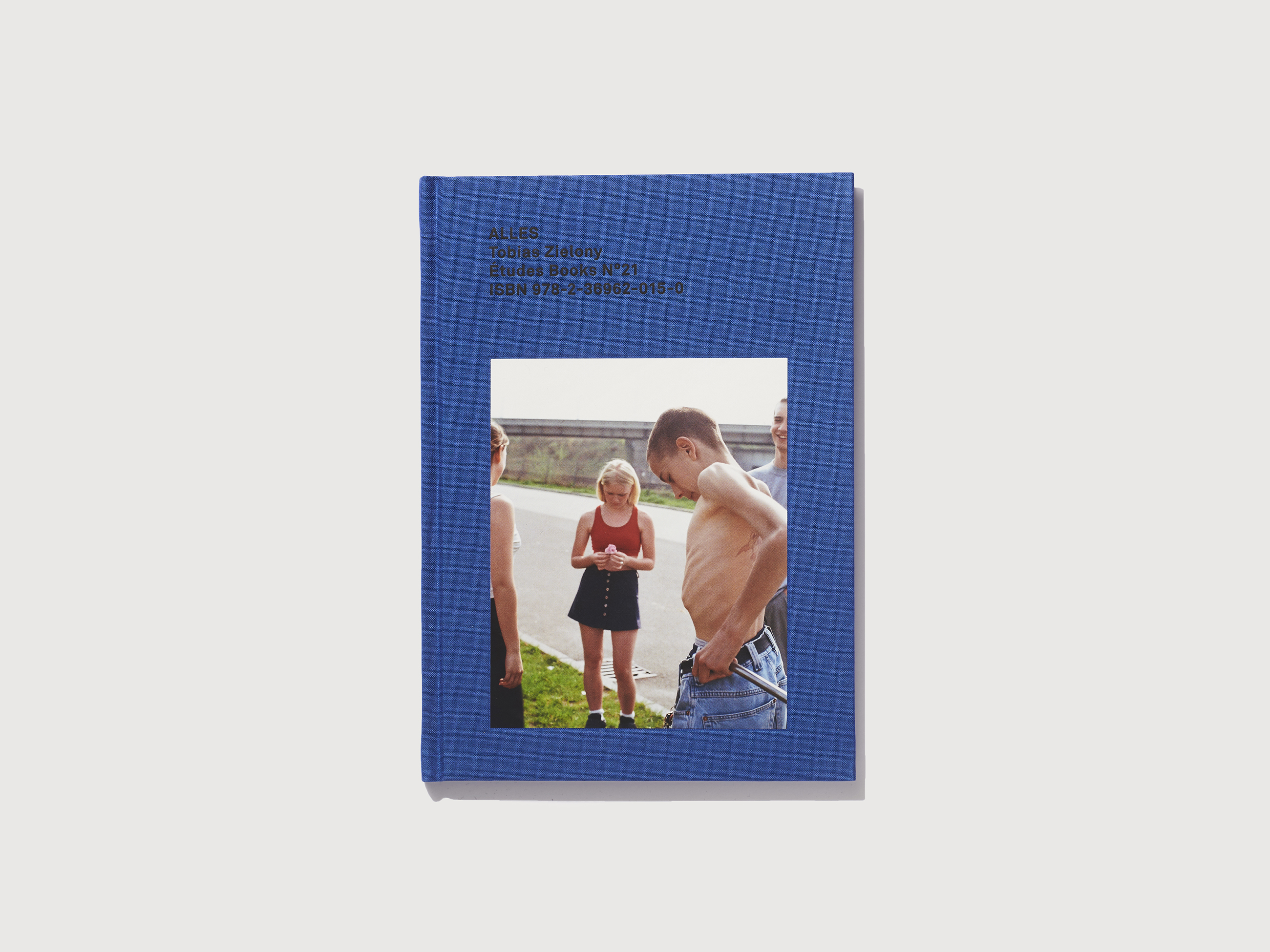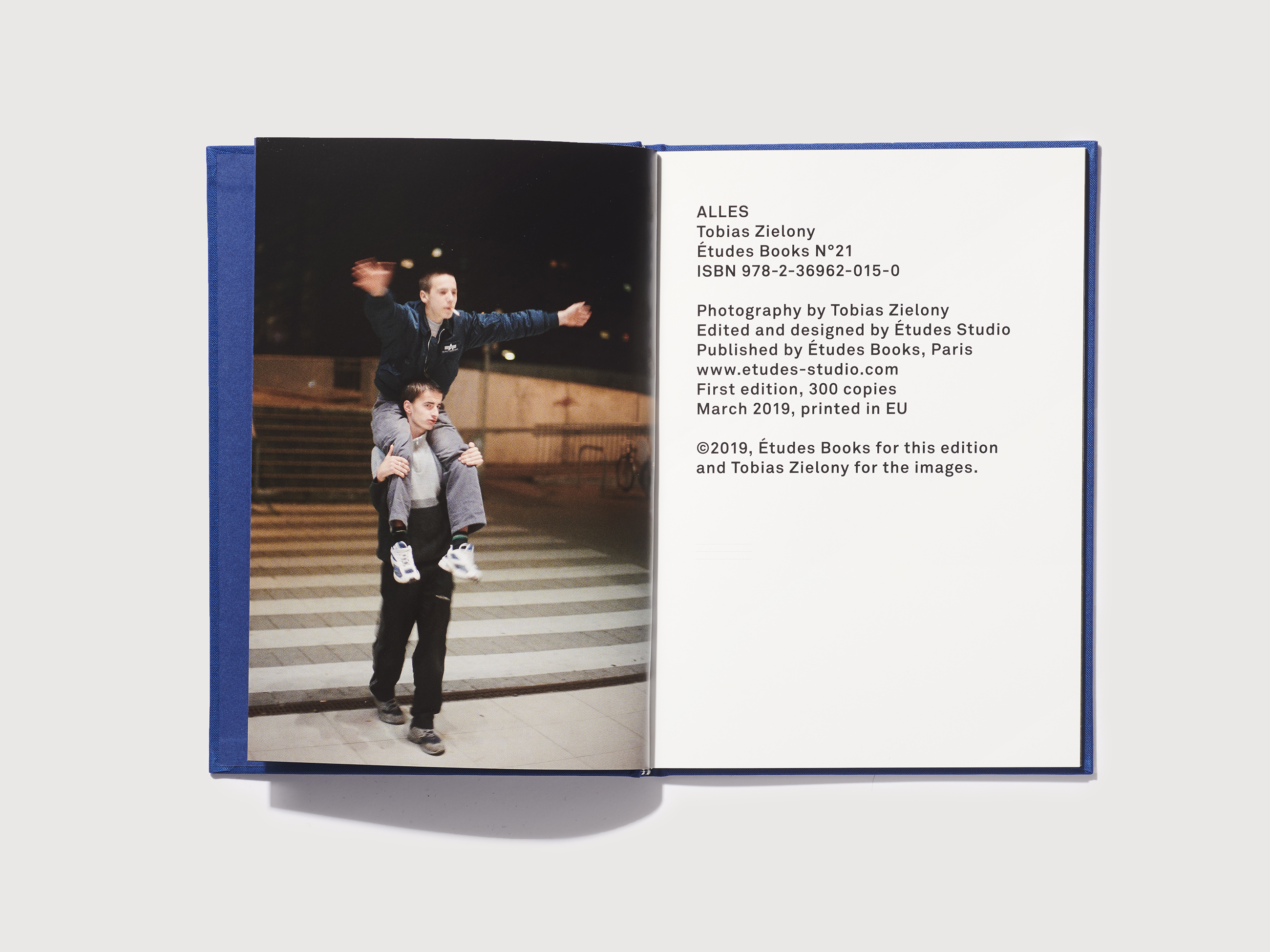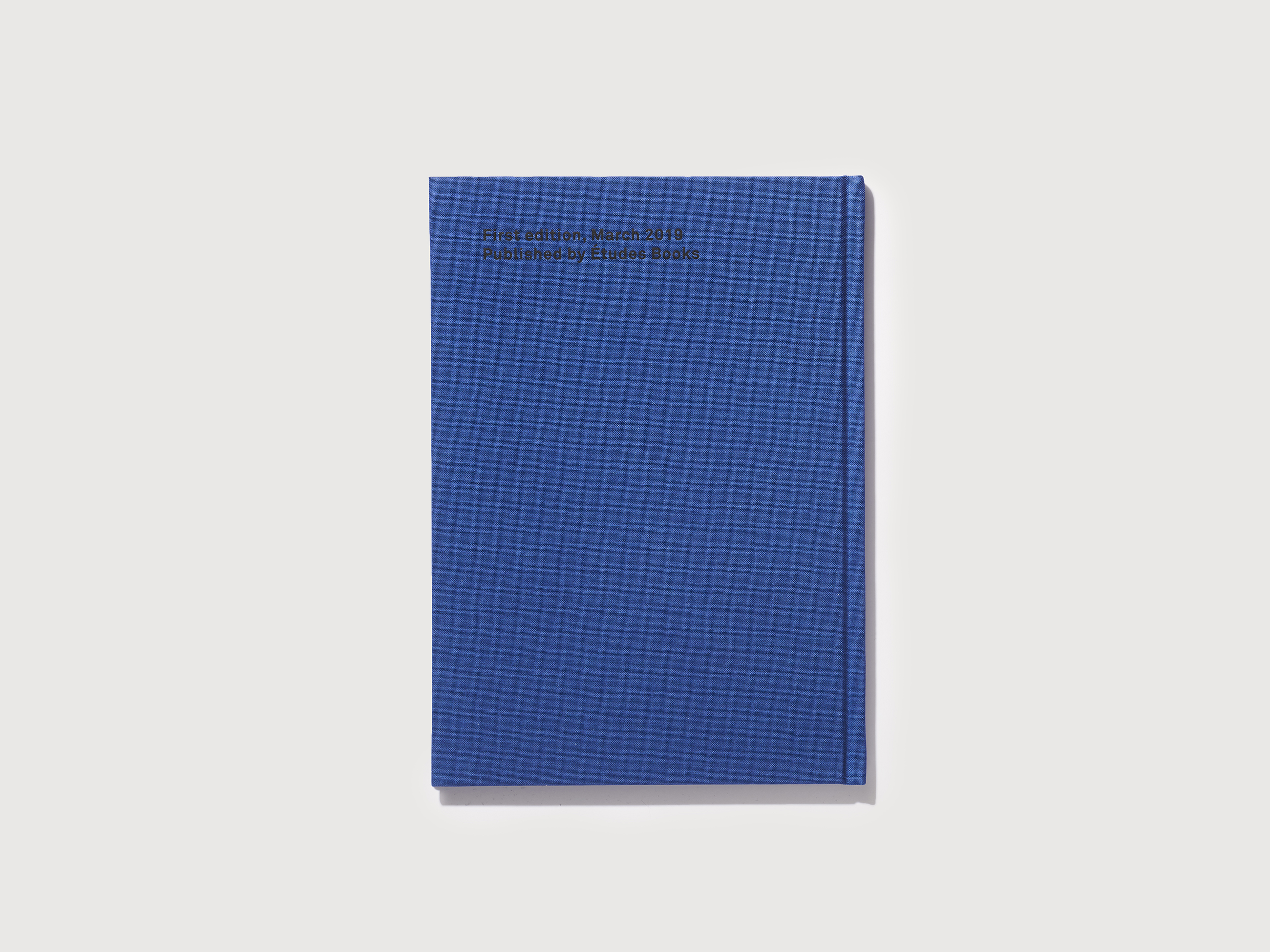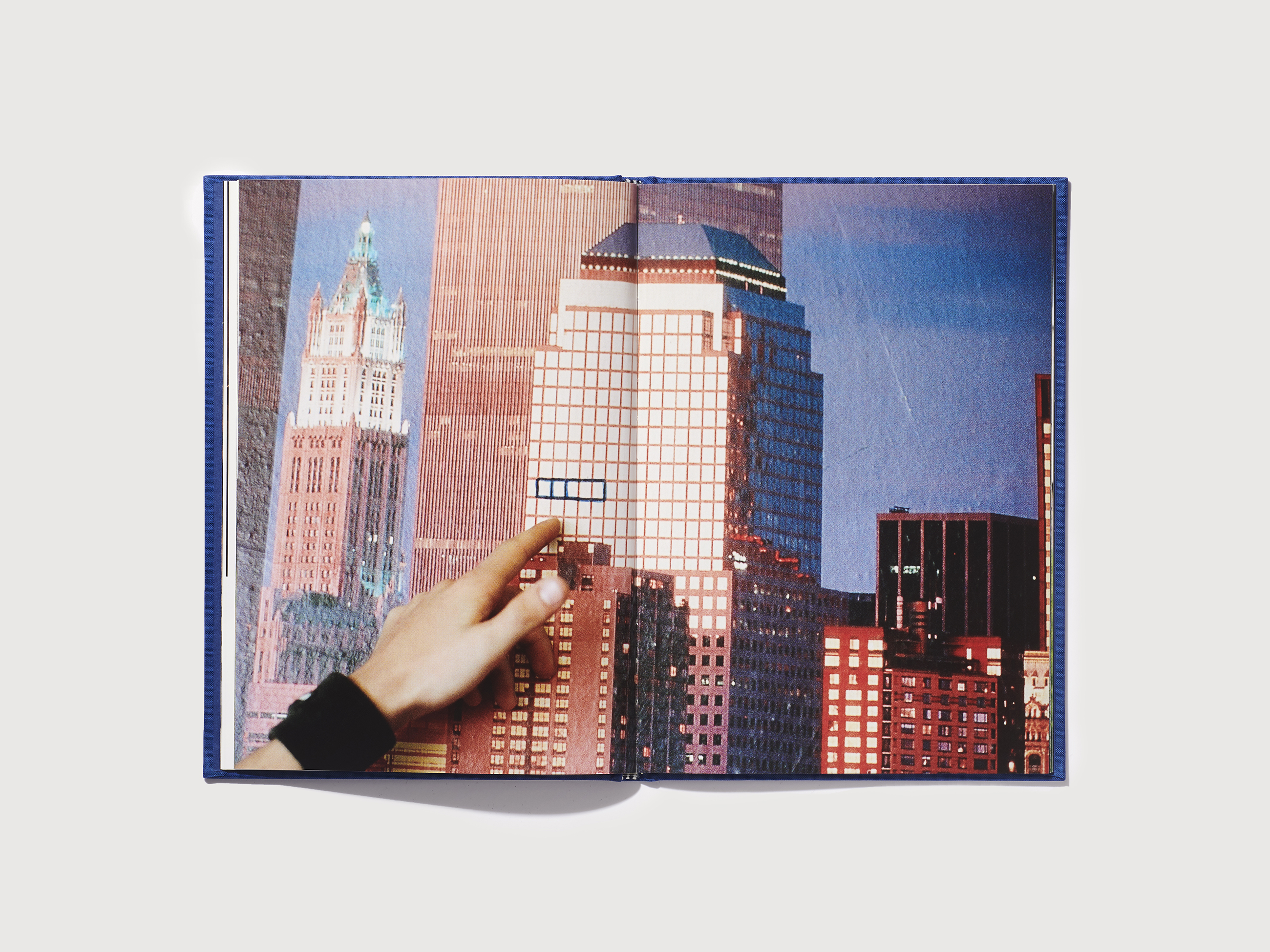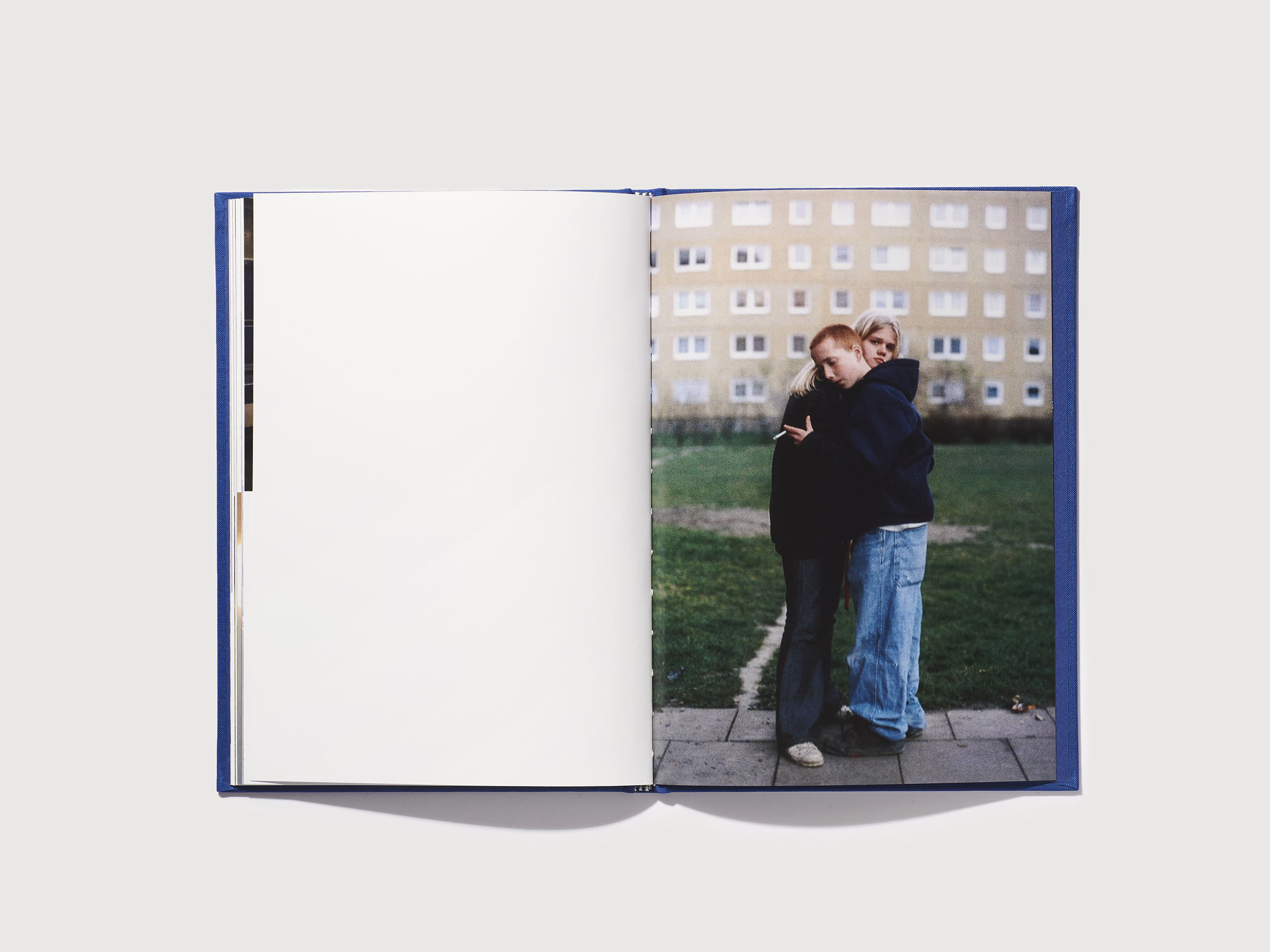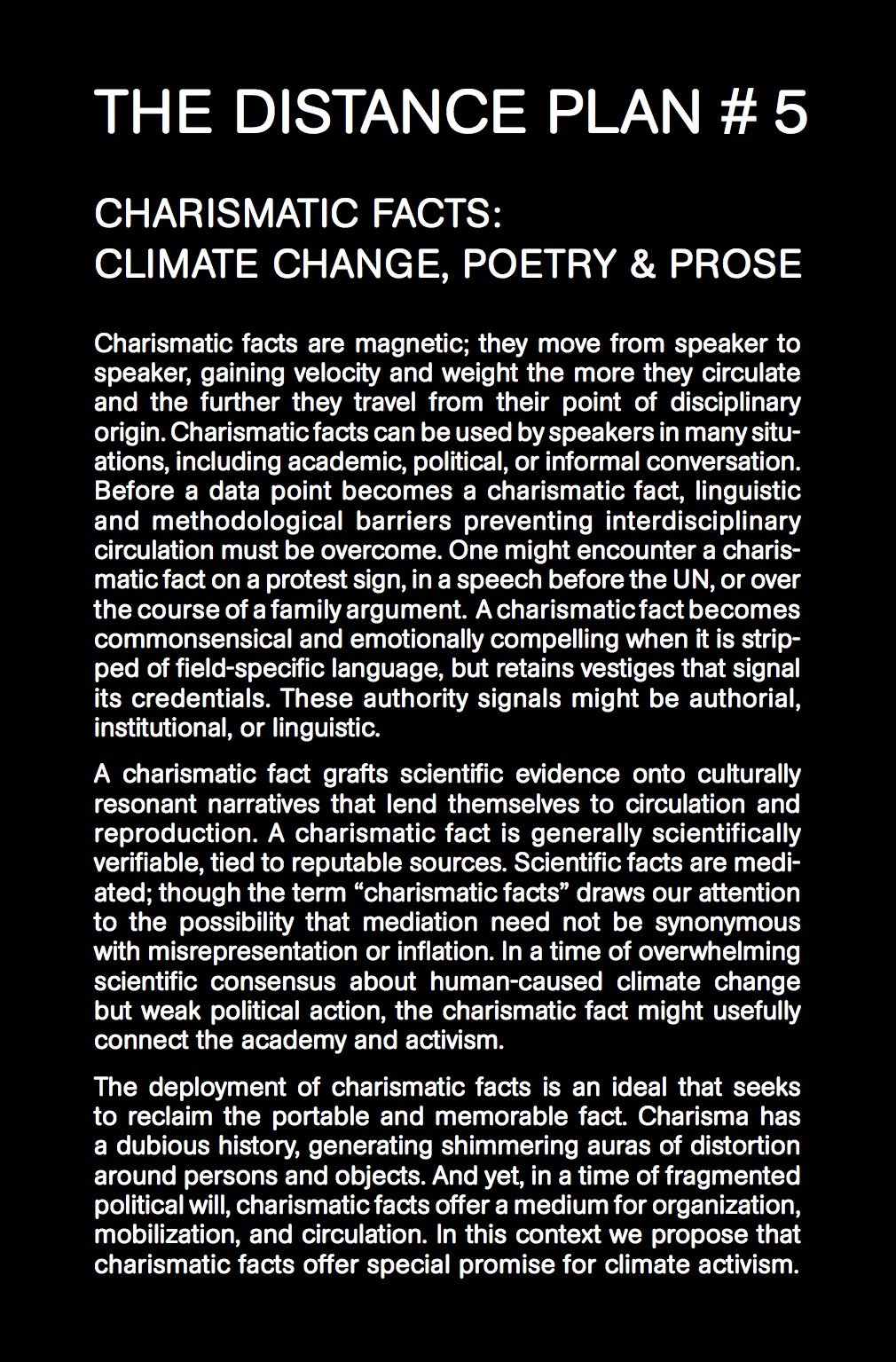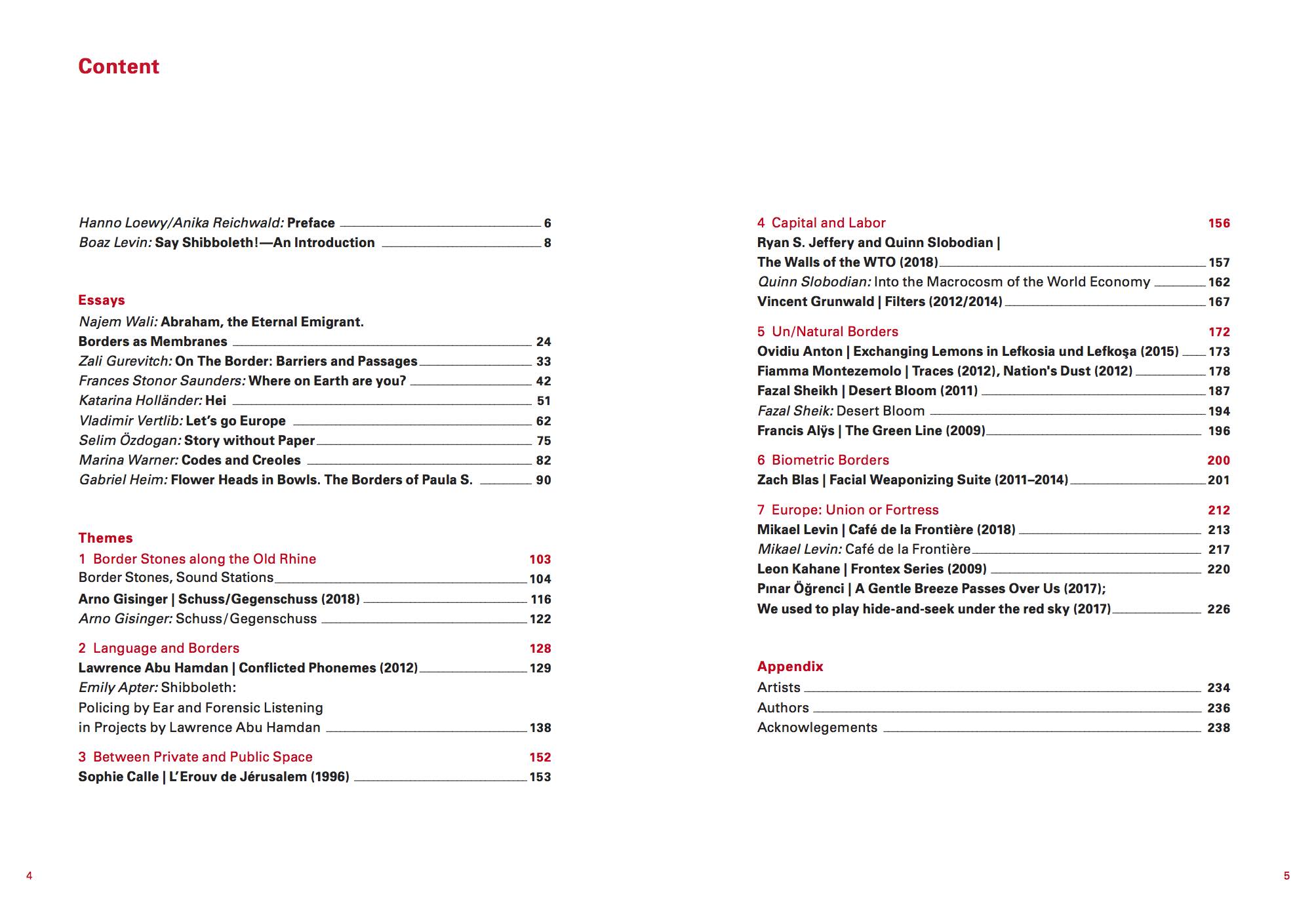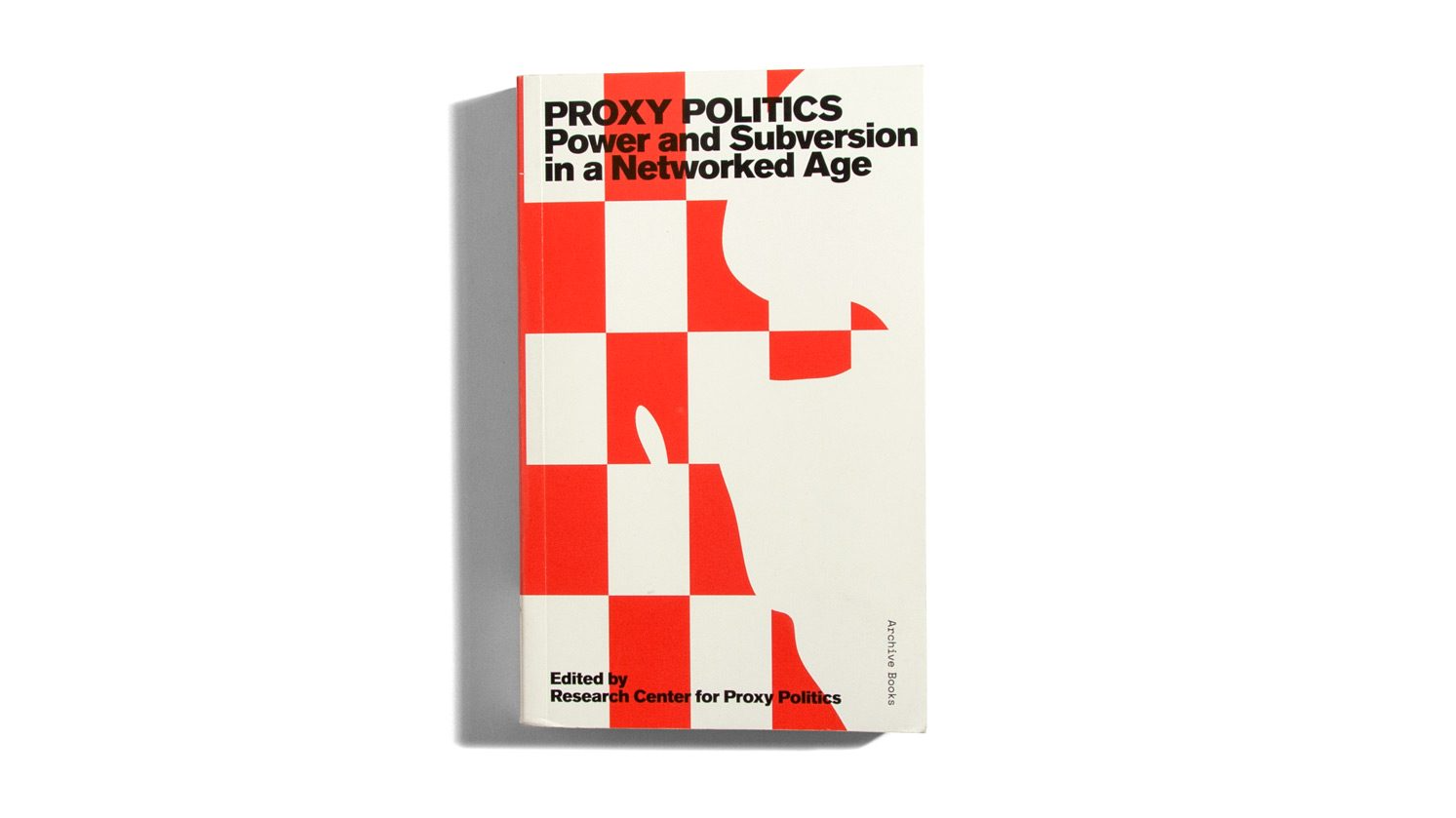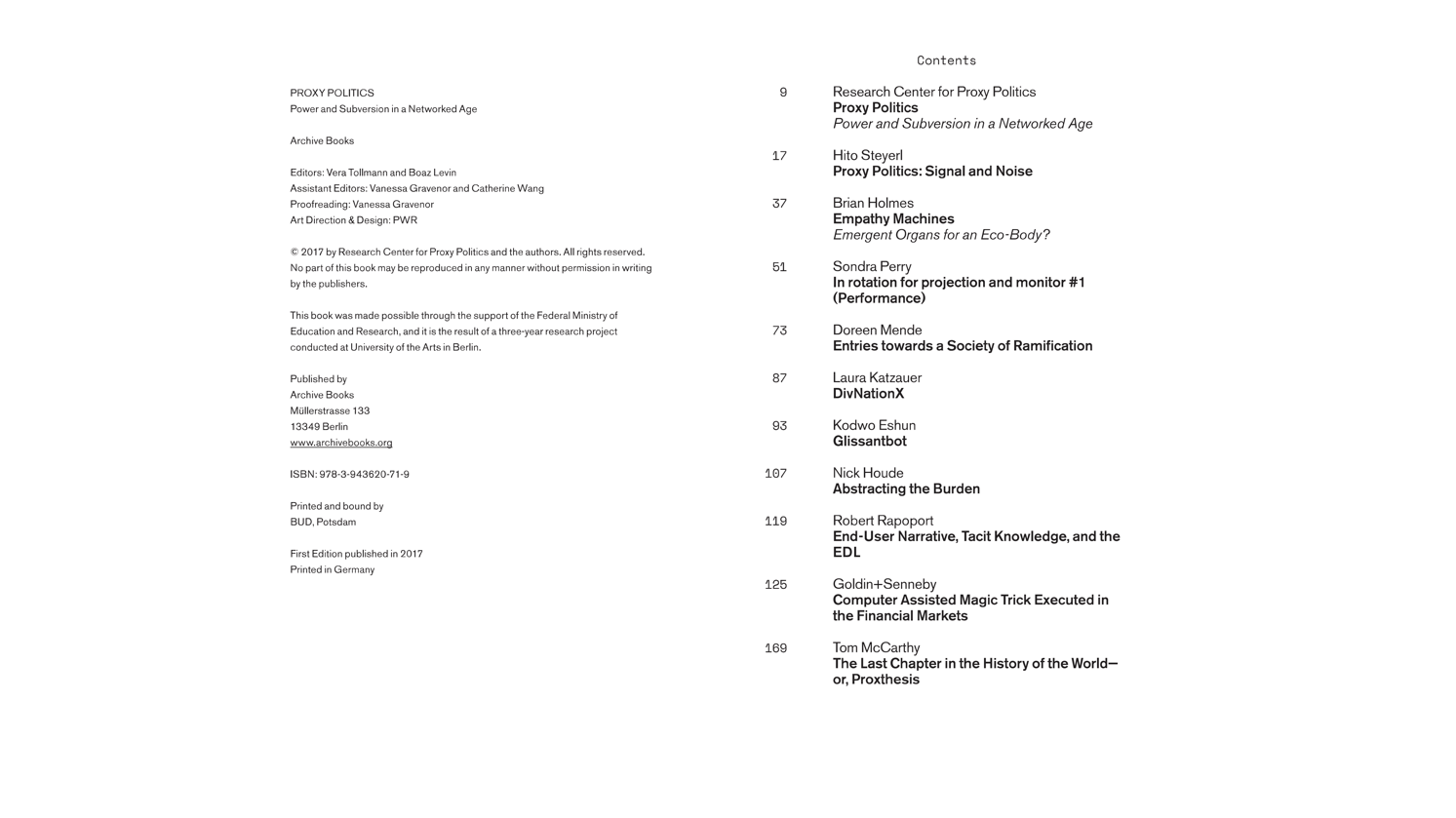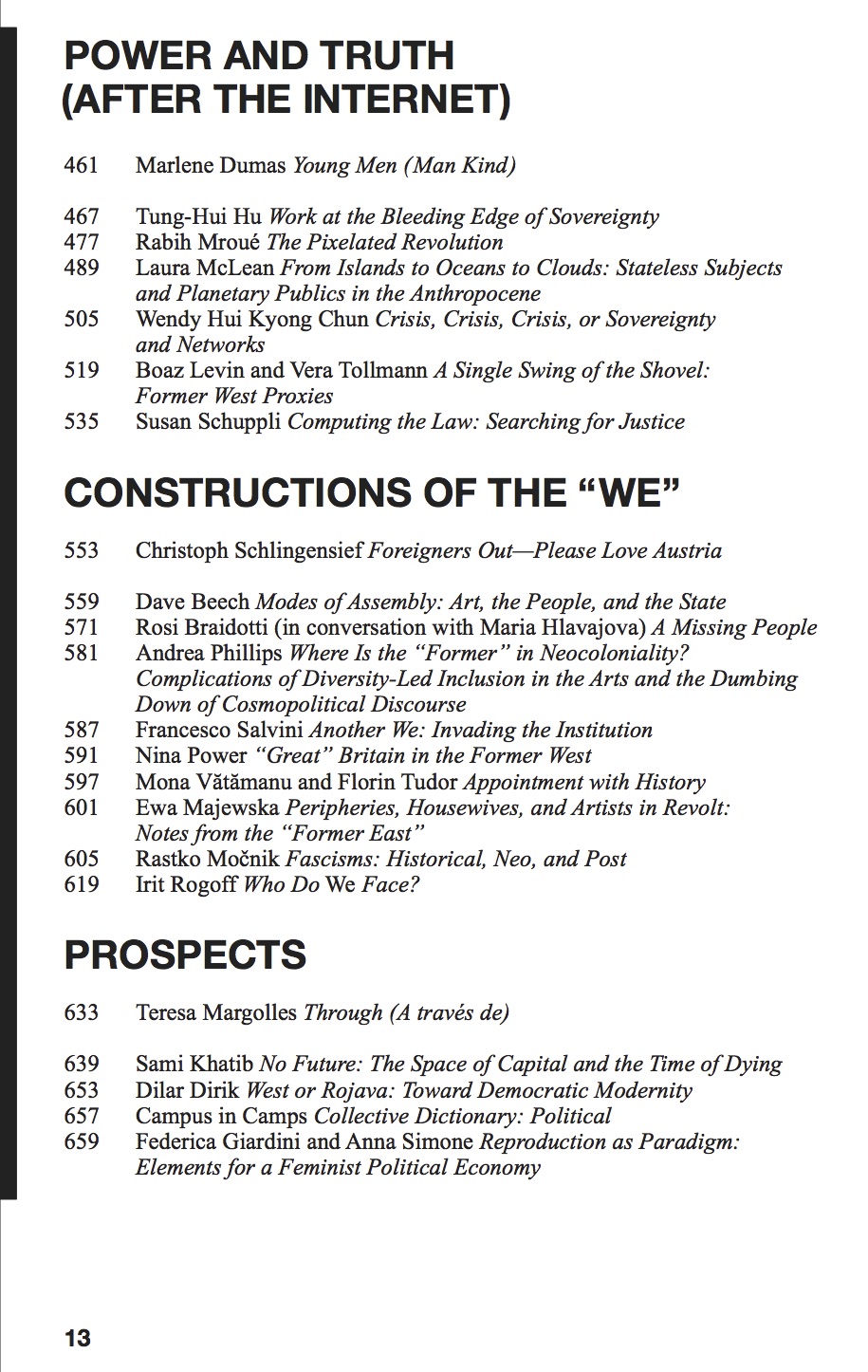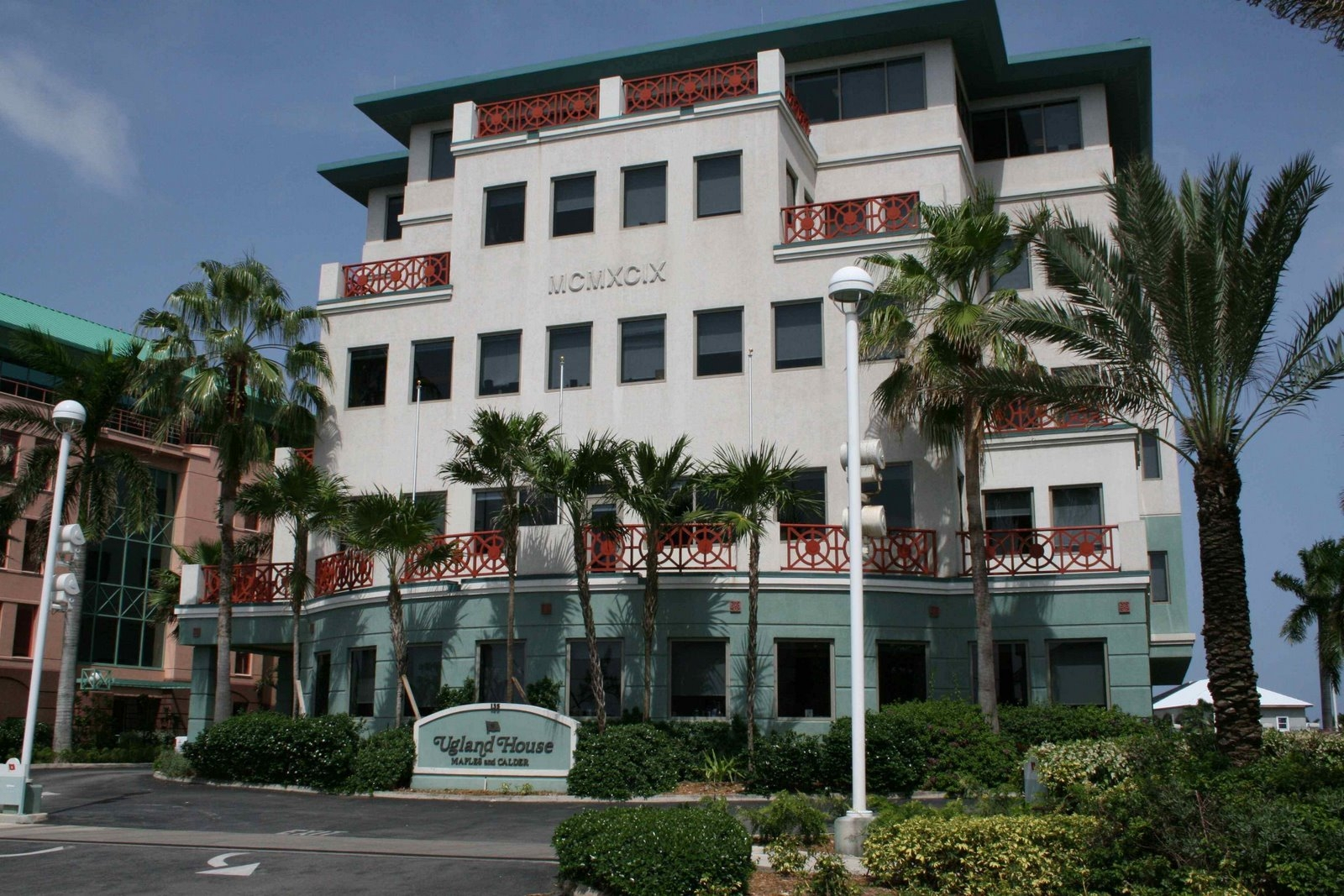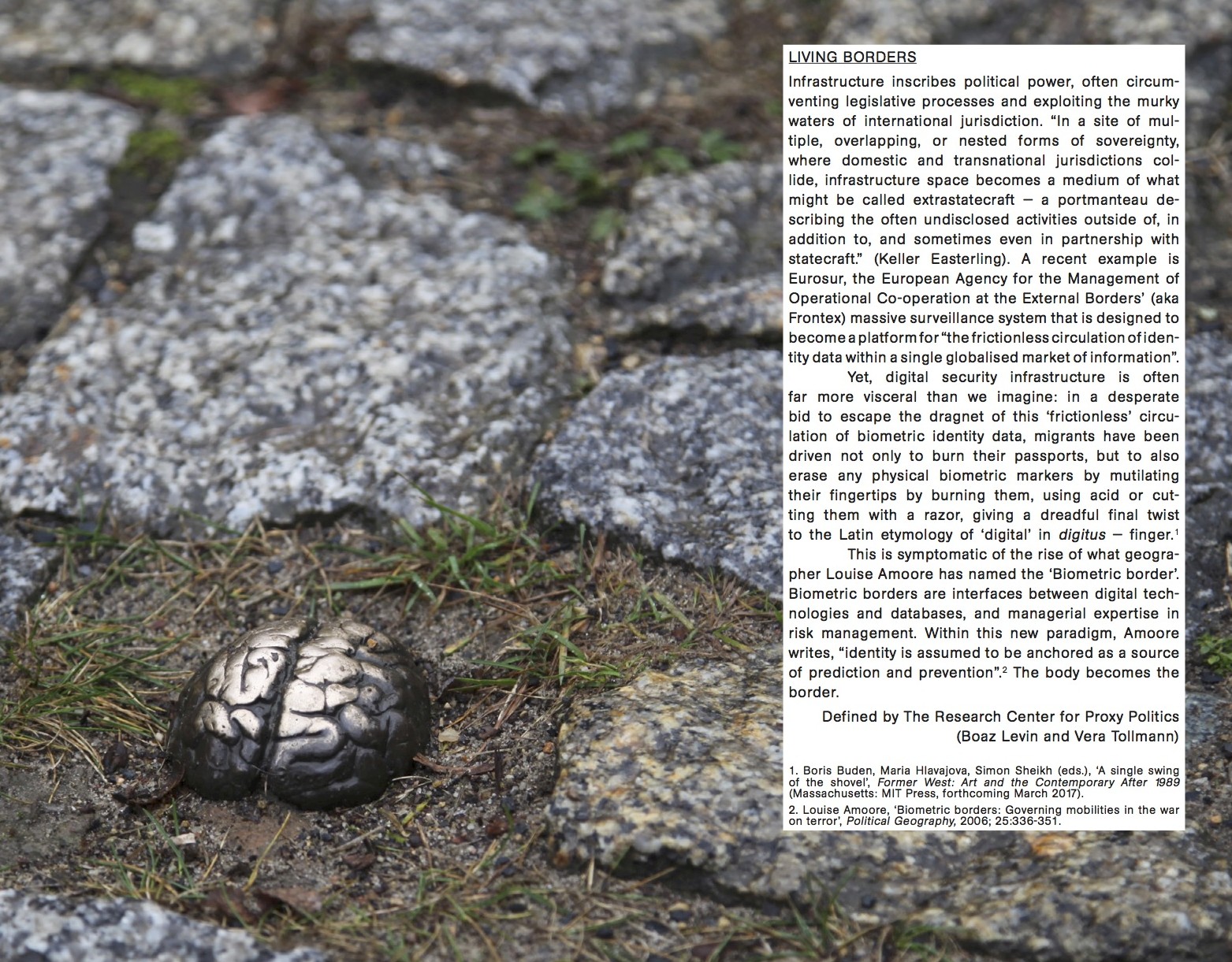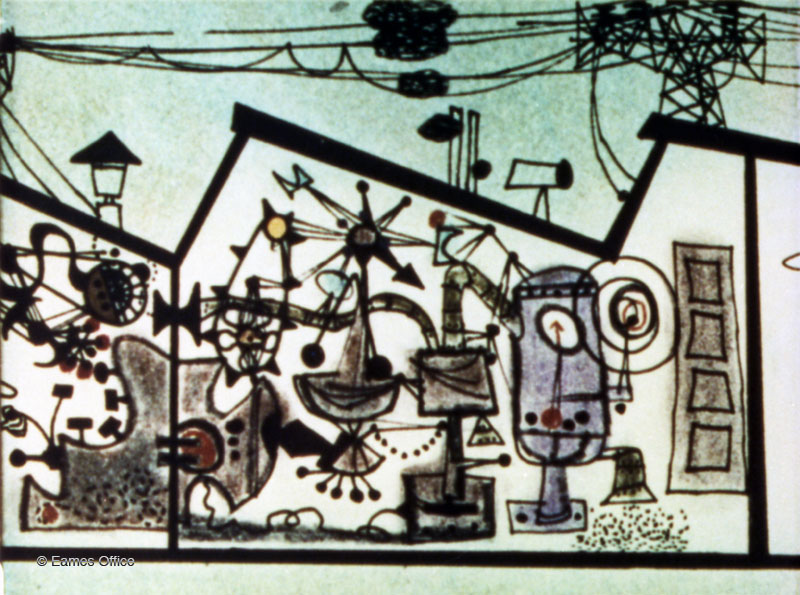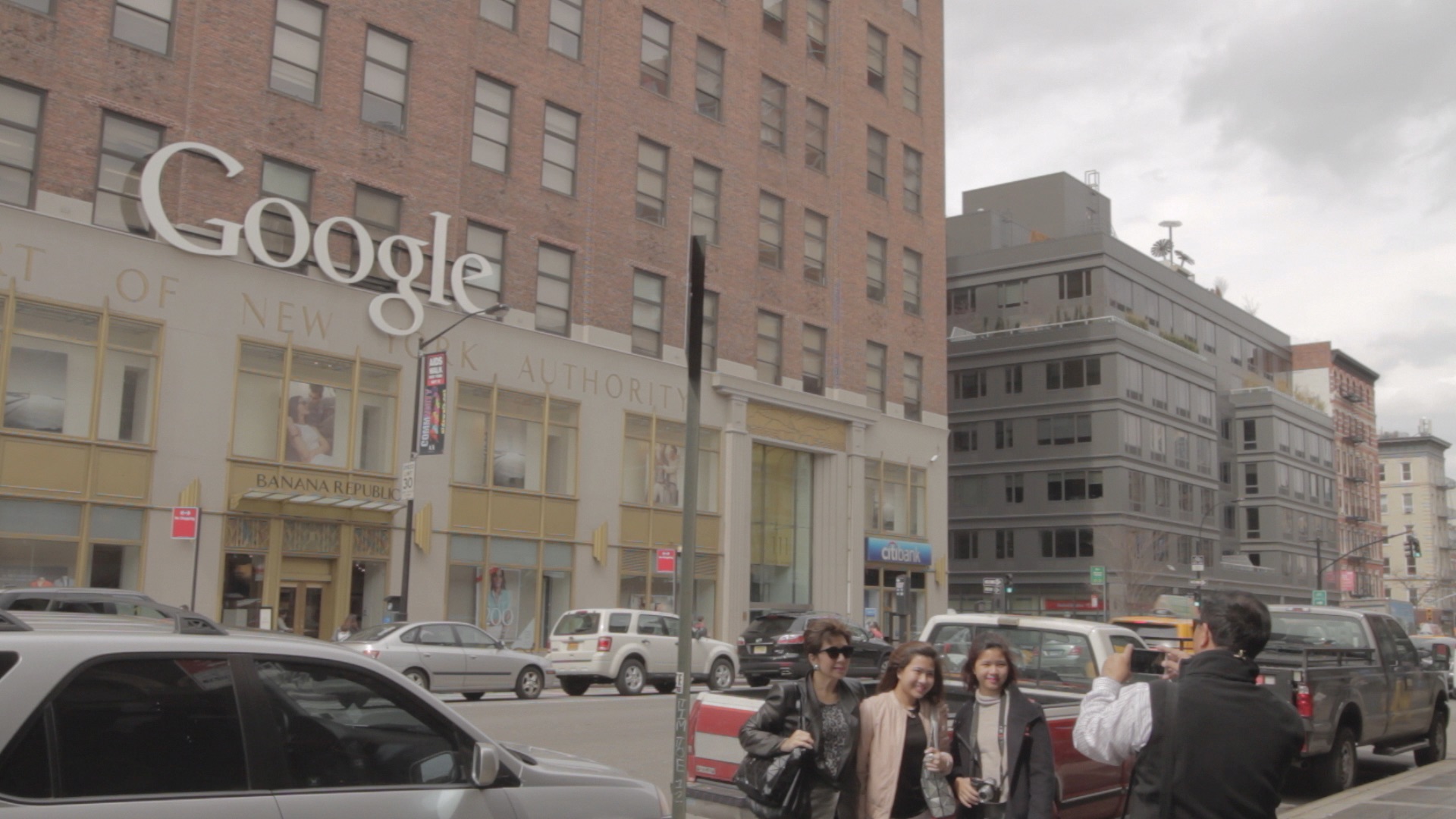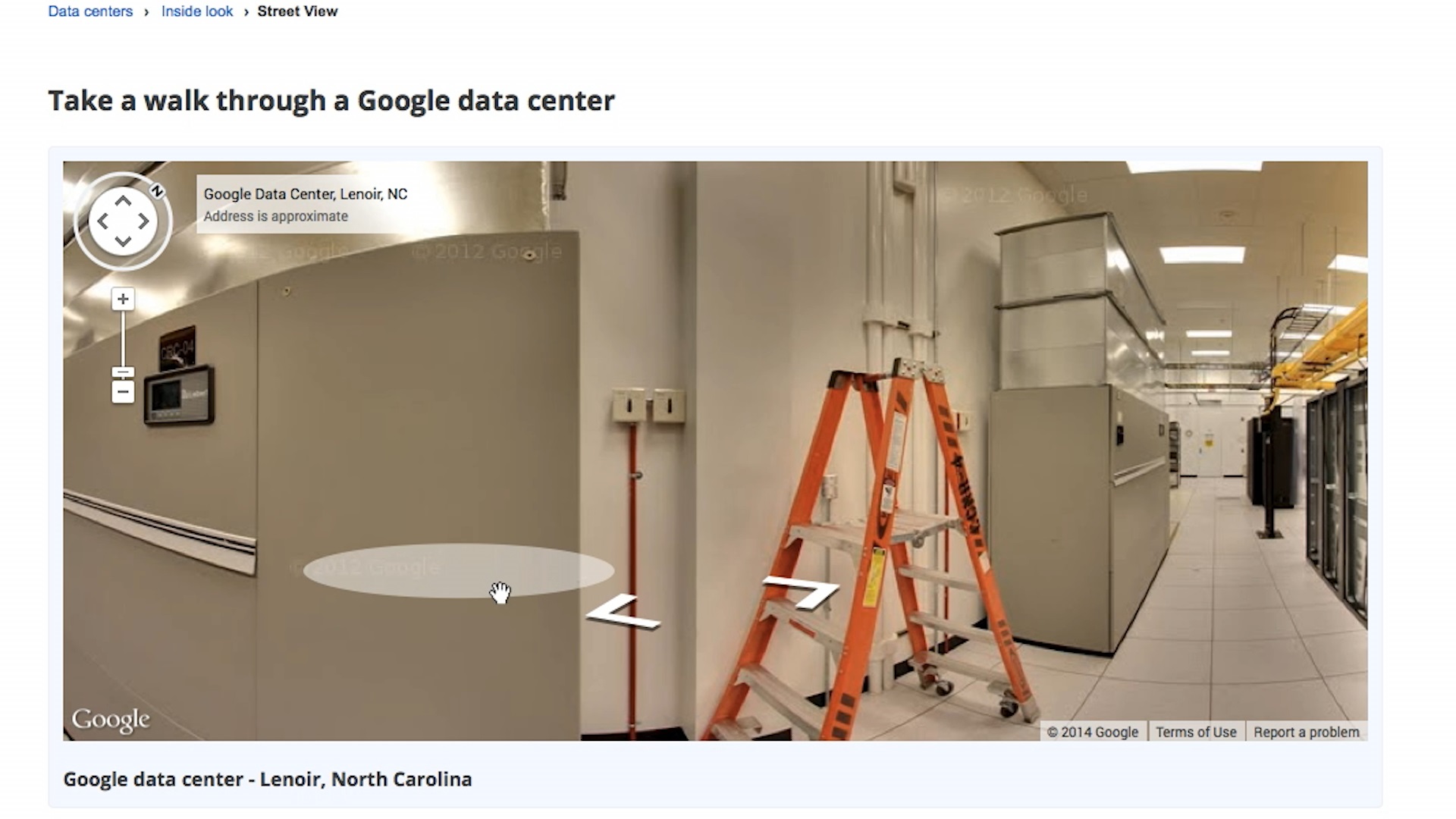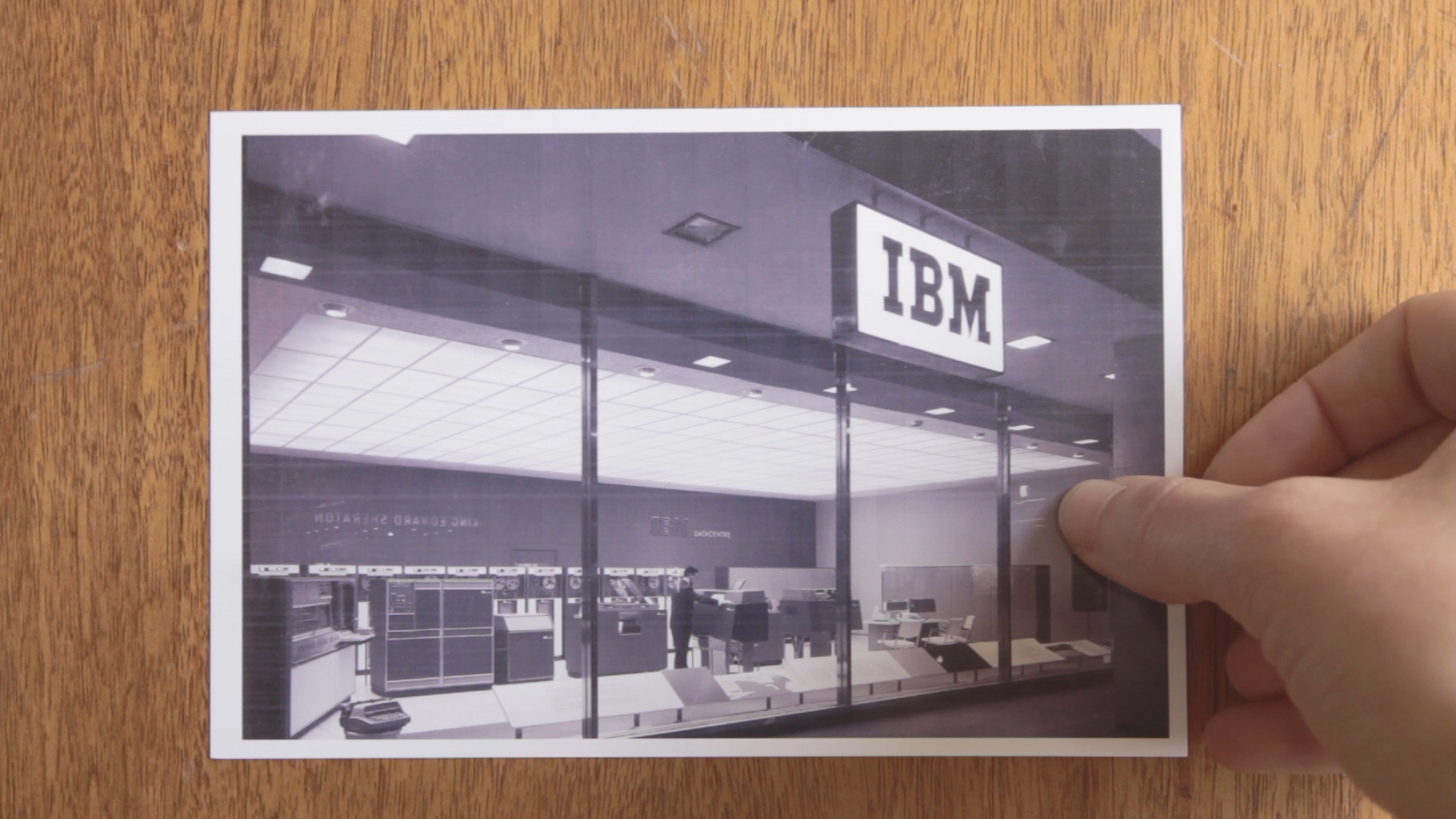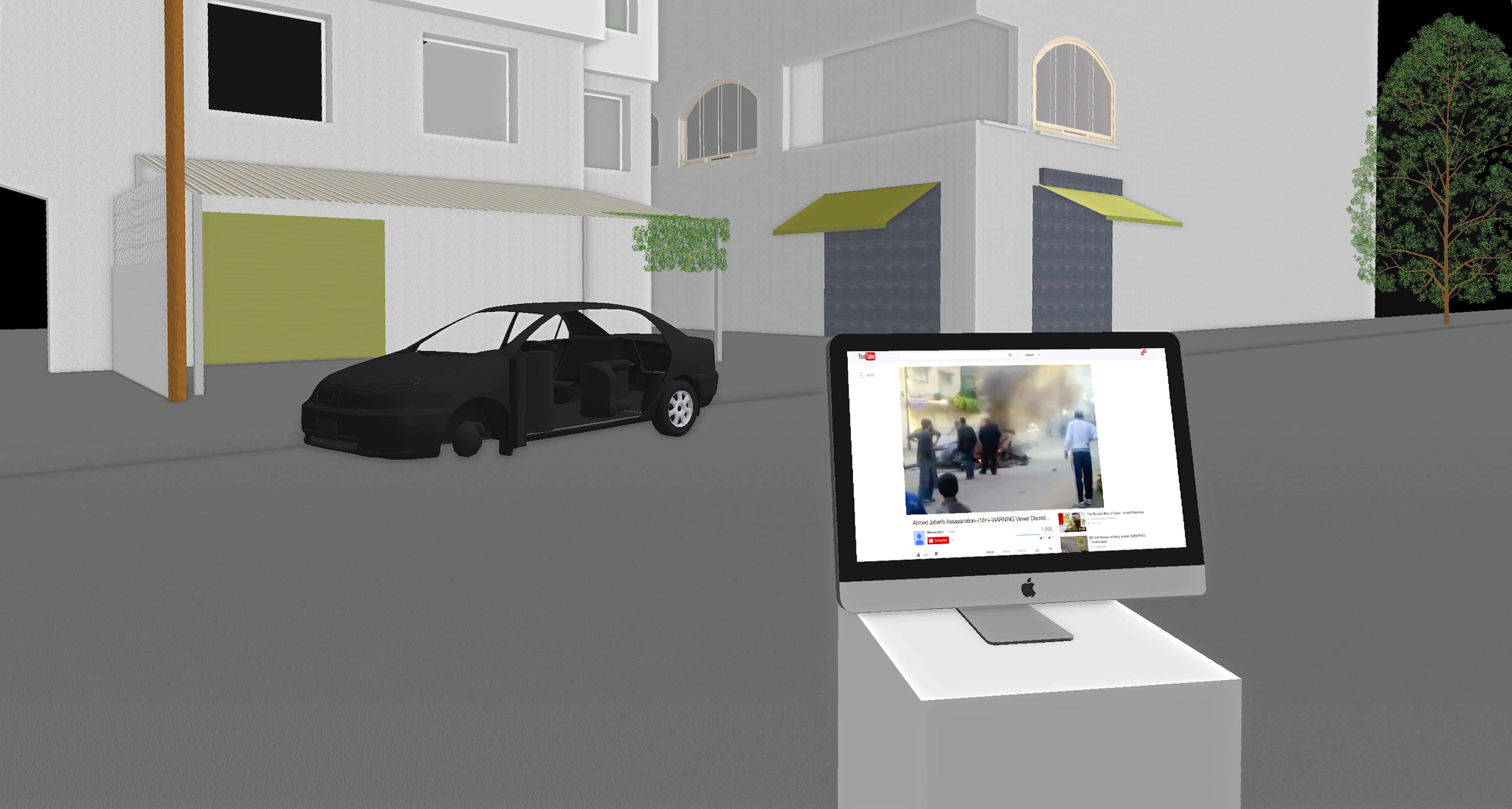Boaz Levin is a writer, curator, and occasional filmmaker based in Berlin. In his research and writing, Levin explores relations between politics, technology, and the environment. Levin is the co-founder, together with Vera Tollmann and Hito Steyerl, of the Research Center for Proxy Politics. In 2017, he was co-curator of the Biennale für Aktuelle Fotografie, which is staged at exhibition venues in Heidelberg, Mannheim, and Ludwigshafen. In 2021, he co-curated the 3rd Chennai Photo Biennale. In 2022, he curated, together with Esther Ruelfs, Mining Photography: The Ecological Footprint of Image Production (MK&G, Hamburg, KunstHausWien, and Gewerbemuseum Winterthur). He is the author of On Distance, ed. Laura Preston (Berlin: Atlas Projectos, 2020).
Levin is editor of Cabinet Magazine's Kiosk platform.
[I]n its timeliness and historical depth, Mining Photography provides a much-needed corrective to many blind spots of production in the consumer economy.
Eva Diaz, Aperture Magazine.
Eine bedeutende Ausstelung, die wunde Punkte berührt.
Carolin Förster, Camera Austria
Ever since its invention, photography has depended on the global extraction and exploitation of so-called natural resources. In the early 19th century, these were salt, fossil fuels such as bitumen and carbon, as well as copper and silver, which were all used for the first images on copper plates and for salt paper prints. By the late 20th century, the photographic industry was one of the most important consumers of silver, responsible, at its peak, for more than half of the metal’s global consumption. Today, with the advent of digital photography and the ubiquity of mobile devices, image production is contingent on rare earths and metals such as coltan, cobalt, and europium. Image storage and distribution also consume immense amounts of energy. One scholar recently observed that Americans produce more photographs every two minutes than were made in the entire nineteenth century. "Mining Photography: The Ecological Footprint of Image Production" is dedicated to the material history of key resources used for image production, addressing the social and political context of their extraction and waste and its relation to climate change. Using historical photographs and contemporary artistic positions as well as interviews with restorers, geologists, and climate researchers, the exhibition tells the story of photography as one of industrial production, showing the extent to which the medium has been deeply intertwined with the human change of the environment. By focusing on the ways by which industrial image production has been materially and ideologically implicated in climate change, rather merely using it to depict its consequences, the exhibition employs a radically new perspective towards this subject.
Participating artists: Ignacio Acosta, Lisa Barnard, F& D Cartier, Optics Division of the Metabolic Studio (Lauren Bon, Tristan Duke, Richard Nielsen), Klasse Digitale Grafik HFBK (Mari Lebanidze, Cleo Miao, Leon Schwer und Marco Wesche), Susanne Kriemann, Mary Mattingly, Daphné Nan Le Sergent, Lisa Rave, Alison Rossiter, Robert Smithson, Simon Starling, Anaïs Tondeur, James Welling, Noa Yafe, Tobias Zielony
The exhibition is curated by artist, author and curator Boaz Levin and Dr. Esther Ruelfs, Head of the Photography and New Media Collection at MK&G. In cooperation with Kunsthaus Wien, Gewerbemuseum Winterthur and the HFBK Hamburg.
An exhibition kindly supported by the Alfried-Krupp von Bohlen und Halbach Stiftung, the NUE Foundation (North German Foundation for Environment and Development) from proceeds of BINGO! Die Umweltlotterie, by Pro Helvetia, Artis and the Institut français Deutschland.
Media partner: ARTE
Link to program
Link to program
BPA at Gropius Studios resonates with the history of the Gropius Bau, which opened in 1881 as a Museum and School of Decorative Arts featuring numerous studios and workshops. The project offers artists physical space for their work in the Gropius Bau building, thereby re-establishing the institution as a place of artistic production, and blurring the boundaries between studio and exhibition space. With the rooms being utilised for both creative work and different presentation formats, BPA at Gropius Studios asks what it means for artists to reveal parts of their artistic process and to invite an audience into their studio.
In addition to returning to the historical roots of the building, the collaboration also aims to open the exhibition hall to partners in the city and to provide a platform for Berlin artists together with BPA. BPA // Berlin program for artists was founded in 2016 by artists Angela Bulloch, Simon Denny and Willem de Rooij, facilitating exchange between emerging and established Berlin-based artists. The mentoring programme organises reciprocal studio visits, public lectures and joint exhibitions.
The programme is curated by Boaz Levin and Anna-Lisa Scherfose (Assistant Curator) and supported by the Senate Department for Culture and Europe.
Participating artists
Nadja Abt, Niklas Binzberger, Rob Crosse, Anne Fellner, Bertrand Flanet, Dina Khouri, Doireann O'Malley, Victor Payares, Esper Postma, Anton Steenbock, Katrin Winkler
Programme
1.10.20, 16:00–20:00
BPA Talks 3
With Anne Fellner, Bertrand Flanet, Katrin Winkler and BPA mentors Calla Henkel & Max Pitegoff
Gropius Bau, Cinema
In partnership with KW Institute for Contemporary Art
22.–28.10.20
BPA at Gropius Studios – public presentation
Dina Khouri, Katrin Winkler
5.–11.11.20
BPA at Gropius Studios – public presentation
Rob Crosse, Bertrand Flanet, Doireann O’Malley
26.11.–2.12.20
BPA at Gropius Studios – public presentation
Victor Payares, Esper Postma, Anton Steenbock
17.–23.12.20
BPA at Gropius Studios – public presentation
Michelle Volta, Niklas Binzberger, Anne Fellner
Co-curated with Tobias Zielony
Lia Rumma Gallery, Napels
19 June - 26 July 2019
Featuring: Yalda Afsah, Sohrab Hura, Gwen Smith and Tobias Zielony
Co-curated with Tobias Zielony
Lia Rumma Gallery, Napels
19 June - 26 July 2019
Of a Fire on the Moon takes its title from Norman Mailer’s book documenting the Apollo 11 1 moon landing and brings together four artists whose2 work stands at the intersection between realism and estrangement. Nocturnal, these works seem to view their subjects through flashes and flickers, or dream-like and distant.
Gwen Smith’s Fuck, Cook2, Look: the first and last time I remember being in Naples (1993/2017) juxtaposes a series of silver gelatin black and white images from 1993, taken during the artist’s first visit to the city, with color inkjet prints from her most recent trip. The images become mnemonic devices, highlighting the changing nature of photography with the transition from analog to digital, leading to ever more instantaneous archiving.
A cloud of thick foam floats across a dark arena, artificially lit. For a moment, time seems to be suspended, and sounds—of running and panting, the scraping of hoofs, of splashing, spraying, lunging—are heightened. Yalda Afsah’s video Tourneur (2018) documents a bullfight in the south of France that becomes a stage for a strange performance of masculinity and animality. Bubbles envelope both the teenagers and the bull they pursue, becoming a screen through which the scene is revealed, and concealed. At once realistic and relentlessly contrived, Tourneur becomes a ritualistic experiment in representation and its dissolution.
In Tobias Zielony’s photo animation A Fire on the Moon (2019) rather than outer space, here we viewers are sent to Gibellina—the Sicilian town destroyed by the Belice earthquake in 1968, a year before the Apollo 11 mission—now a ghost town, where Ludovico Quaroni’s large concrete orb shaped church, the Chiesa Madre, looms large. Through the darkness and flicker of Zielony’s stop-motion sequence we find a city as-if frozen, now animated. Reminiscent of both early experiments in cinematic illusionism such as Georges Méliès ‘A Voyage to the Moon’, as well as Italian Neo-Realism’s post-war urban social portraits, in on the moon fact and fiction, illusion and document, seem to converge.
Sohrab Hura’s video The Lost Head & The Bird (2019) explores life at the extremities of Indian society through an explosive profusion of images and stories, facts and fictions. Employing a dizzying montage of excess, alternating between absurdity and abjection, his work tests the thresholds of legibility and affect. Violence lurks as a constant undercurrent—of caste, sex, religion, political alliance—erupting with increasing frequency and virulence.
An exhibition by the Jewish Museum Hohenems
In collaboration with the Jewish Museum Munich
May 29th 2019 – February 23rd 2020
Ovidiu Anton, Zach Blas, Sophie Calle, Caroline Bergvall, Arno Gisinger, Vincent Grunwald, Lawrence Abu Hamdan, Ryan S. Jeffery and Quinn Slobodian, Leon Kahane , Mikael Levin, Fiamma Montezemolo, Pīnar Öğrenci, Fazal Sheikh
An exhibition by the Jewish Museum Hohenems
In collaboration with the Jewish Museum Munich
May 29th 2019 – February 23rd 2020
The Gileadites captured the fords of the Jordan opposite Ephraim. And it happened when any of the fugitives of Ephraim said, “Let me cross over,” the men of Gilead would say to him, “Are you an Ephraimite?” If he said, “No,” then they would say to him, “Say now, ‘Shibboleth.’” But he said, “Sibboleth,” for he could not pronounce it correctly. Then they seized him and slew him at the fords of the Jordan. Thus there fell at that time 42,000 of Ephraim.“ (Judges 12:5,6)
Despite talk about globalization and international community, new borders, fences, and walls are erected all over the world—around states, occupied territories, and gated communities, between public and private spaces, between the legal and the illegal. Some of these borders are permeable and others fatal, some are visible and others reinforced by cultural codes, language tests, or biometric methods. Borders decide about life and death, “identity” and “otherness”, belonging and exclusion.
Starting from the biblical story of the Ephraimites‘ escape from the victorious Gileadites and its failing on the banks of the River Jordan, the Jewish Museum Hohenems has invited international artists to critically reflect upon borders—just a stone’s throw away from the banks of the “Old Rhine,” the river where in 1938 refugees tried to reach Switzerland. Today, though, the presence of these refugee dramas has been pushed to the edges of our awareness.
An exhibition by the Jewish Museum Hohenems
In collaboration with the Jewish Museum Munich
05/2018 – 02/2019 Hohenems
Ovidiu Anton, Zach Blas, Sophie Calle, Caroline Bergvall, Arno Gisinger, Vincent Grunwald, Lawrence Abu Hamdan, Ryan S. Jeffery and Quinn Slobodian, Leon Kahane , Mikael Levin, Fiamma Montezemolo, Pīnar Öğrenci, Fazal Sheikh
An exhibition by the Jewish Museum Hohenems
In collaboration with the Jewish Museum Munich
05/2018 – 02/2019 Hohenems
The Gileadites captured the fords of the Jordan opposite Ephraim. And it happened when any of the fugitives of Ephraim said, “Let me cross over,” the men of Gilead would say to him, “Are you an Ephraimite?” If he said, “No,” then they would say to him, “Say now, ‘Shibboleth.’” But he said, “Sibboleth,” for he could not pronounce it correctly. Then they seized him and slew him at the fords of the Jordan. Thus there fell at that time 42,000 of Ephraim.“ (Judges 12:5,6)
Despite talk about globalization and international community, new borders, fences, and walls are erected all over the world—around states, occupied territories, and gated communities, between public and private spaces, between the legal and the illegal. Some of these borders are permeable and others fatal, some are visible and others reinforced by cultural codes, language tests, or biometric methods. Borders decide about life and death, “identity” and “otherness”, belonging and exclusion.
Starting from the biblical story of the Ephraimites‘ escape from the victorious Gileadites and its failing on the banks of the River Jordan, the Jewish Museum Hohenems has invited international artists to critically reflect upon borders—just a stone’s throw away from the banks of the “Old Rhine,” the river where in 1938 refugees tried to reach Switzerland. Today, though, the presence of these refugee dramas has been pushed to the edges of our awareness.
Farewell Photogrpahy
Mannheim-Ludwigshafen-Heidelberg
09/09-05/11 2017
Kunstverein Heidelberg
With works by: Forensic Architecture, Richard Frater, LaToya Ruby Frazier, John Heartfield, Nikita Kadan, Merle Kröger & Philip Scheffner, Fred Lonidier, Naeem Mohaiemen, Willem de Rooij, belit sağ, D. H. Saur, Mark Soo, Klaus Staeck, Oraib Toukan
Farewell Photogrpahy
Mannheim-Ludwigshafen-Heidelberg
09/09-05/11 2017
More than one hundred fifty years after its invention, photography’s presence in the political sphere is today as contentious as ever. Its unique ability not only to render people and places beyond our immediate experience visible, but also to lend them new meaning, has often placed photography at the heart of political debates. Still images are better retained by memory, and despite the omnipresence of instantaneous “live” video documentation, iconic images—images that circulate extensively whose mark remains etched in our collective memory—are more likely to be still photographs. Since it first emerged, photography has been either heralded for its emancipatory and civic potential—it’s capacity, in the words of nine teenthcentury abolitionist Frederick Douglass, to enable “men of all conditions [to] see themselves as others see them”—or derided and criticised as manipulative, crude and objectifying, as a mechanism of control, surveillance, and classi cation. At the advent of the digital age, the expanding scope, breadth and speed of image dissemina tion has made the question of navigating their political potential and shortcomings all the more urgent, and the stakes increasingly higher.
It is such contradictions and tensions that are explored within “Resisting Images”. The exhibition brings together a range of works operating at the frayed edges of docu mentary practices, and at the front of the politics of repres entation. As its title suggests, the works in the exhibition address this ambivalence within an imagesaturated present, that is: they look at images both as a means of resistance and as a mode of control to resist against, a unique sort of pharmakon, a poison and a remedy.
Kunstraum Kreuzberg/Bethanien
21st November-17th January 2016
Curated by Marianna Liosi and Boaz Levin
With: Abbas Akhavan, Özlem Altin, Gilad Baram, Bernadette Corporation, Harun Farocki, Massimo Grimaldi, Sharon Hayes, Daniel Herleth, Darius Kazemi, Ken Lum, Martha Rosler, Falke Pisano in collaboration with Archive Books, David Reeb, Sandra Schäfer, Allan Sekula, Peter Snowdon and Ian Wallace
Kunstraum Kreuzberg/Bethanien
21st November-17th January 2016
Regarding Spectatorship: Revolt and Distant Observer is an ongoing research project curated by Marianna Liosi and Boaz Levin exploring the notion of mediated political spectatorship.
Regarding Sepctatorship grew out of an initial interest in the social protests that took place during 2011 in Tunisia, Libya and Egypt, commonly referred to as the Arab Spring. As these events unfolded, followed by similarly highly mediated political protest across the globe, an ever growing number of people seemed to be experiencing political unrest from afar. Images of protests were disseminating at exponential speed and breadth. New “social” media as well as more traditional broadcast communication channels contributed to the events and became as much a part of the spectacle as its medium. Photos of graffiti with slogans denouncing the autocratic regimes spread across western media channels. Amongst these slogans were also the names of “social networks” such as Facebook and Twitter. Images of graffiti which read “democracy in Tunisia, thank you Facebook” gained much – some would say disproportional – exposure on international news outlets. Many took this as a sign of technology’s emancipatory potential, going so far as to dub the events the Facebook Revolutions. Many others have criticised the voyeuristic character of what they perceived as couch politics and the futility of so called clicktivisim, as well as the historically deterministic view of techno-utopists.
Whether or not technological innovation played a determining role in the mobilisation of popular protest – circumventing traditional, state-run, top-down, media channels – became a topic of much debate. And yet, the notion of the spectator – all those millions of distant onlookers, to whom these images and reports were channelled – received little attention if any at all.
Thus we chose to start our research from simple introspection – thinking of our possible relation towards these and similar events as spectators, questioning our agency and interest and asking how might we be implicated within this peculiar long-distance relationship. Is mediation inherent to the contemporary political sphere? Is political spectatorship intrinsically voyeuristic, or, conversely does it carry emancipatory potential? Is the act of viewing individual and solipsistic, or does it also affect the collective sphere?
The initial interest in understanding and interrogating the effective role that social media and portable technological devices played in the protests in North Africa gave way to a more general diachronic consideration of the relation between media and politics, spectators and political actors, exploring events such as the war in the Ukraine, the protest in Ferguson and Hong-Kong, as well as the role media played in past events, in El Salvador, Iran and France, to name but a few.
Ever since the early 19th century, in aftermath of the French Revolution, newspapers, pamphlets, posters, telegrams and later, radios, amateur cameras and their contemporary pocket-sized counterparts, smart-phones, have been instrumental to the establishment of political communities and the facilitating of political discourse. Media played an active role in spreading, reporting and relaying protests, at times by empowering, and at others by dis-informing, the public.
As Benedict Anderson has written “print-capitalism (…) made it possible for rapidly growing numbers of people to think about themselves, and to relate themselves to others, in profoundly new ways”. And as many geographers have noted, a fundamental aspect of communication is that it in-forms and recomposes our perception of space and time, thus enabling dispersed communities and individuals to feel they are part of a cohesive body politic, an “imagined community” in the words of Anderson.
Over two hundred years ago Immanuel Kant wrote of the French Revolution, focusing his attention at the historical role played by the distant observers of the revolution, rather then that of the revolutionaries themselves 1. Kant too was but a distant observer, gathering what he knew about the events from newspapers and word of mouth. Similarly, Hegel who memorably stated, “reading the morning newspaper is the realist’s morning prayer” has been shown to have closely followed events of political unrest unfolding thousands of kilometres away in the Island of Haiti 2. Both events had an immense influence upon these thinkers, despite, or perhaps because, the fact that their experience thereof was a mediated one, from a distance, as disinterested spectators as it were.
More recently, Rancière has proposed a valuable critique of the very opposition between viewing and acting, suggesting that emancipation begins “when we understand that the self-evident facts that structure the relations between saying, seeing and doing themselves belong to the structure of domination and subjection”. These oppositions, he writes “define a distribution of the sensible, an a priori distribution of the positions and capacities and incapacities attached to these positions. They are embodied allegories of inequality”. 3 Rather then being a passive condition one needs to transform into activity, spectatoship is, according to Rancière, by definition an intricate labor of association and dissociation, a process of learning and teaching. “Every spectator is already an actor in her story; every actor, every man of action, is the spectator of the same story.” Recognizing the act of viewing as potentially creative and generative of new discourses, Rancière suggests a notion of spectator able to transcend his individuality and to interweave possible future narratives.
The voyeuristic or fetishistic gaze and the power relations it might affirm or conduce are left out of Rancière’s purview, and his proposition falls short of a consideration of the technological conditions of contemporary modes of spectatorship. And yet, spectatorship is hardly a static subject matter, nor a neutral terrain. As Jonathan Crary has shown through his scholarly work, the observing subject “is both the historical product, and the site of certain practices, techniques, institutions, and procedures of subjectification.” 4 In other words, the notion of the observer is very much in flux: a terrain constantly challenged, expanded or transgressed. Following Foucault, we can trace the ways through which certain technologies and power mechanism constitute and administer new forms of subjectivity. For instance, the notion of the observer is further complicated when considered in relation to “social media”. As a user, the spectator is addressed with the pronoun “you”, which insinuates a certain level of personal engagement, of immediacy. As Michele White demonstrates, the Internet is widely perceived as a physical shared and immediate space, encouraging spectators to perceive themselves as embedded within the web5.
By focusing primarily on the observer and his relationship towards both the medium and the political event, we hope to shed some new light on a series of age-old questions.
Regarding Spectatorship thus interweaves a diachronic historical perspective, with sensitivity towards evolving media and communication channels, it explores the notion of spectatorship in the context of a range of specific uprisings and events of political unrest, selected on the basis of their particular relation towards visual technologies. The project and exhibition intend to explore – by way of artistic contributions, cultural artifacts, talks and essays – these diverse, and at times contradictory, views.
Finally, the project’s title, Regarding Spectatorship, refers to the paradox that lies at the heart of such an undertaking: that we, by observing spectatorship, are ourselves implicated as spectators.
Marianna Liosi and Boaz Levin
The project's website gathers together solicited essays and archival material by a wide range of intellectuals, alongside a growing collection of cultural references, videos and archival material. Contributors include Brian Holmes (media theorist, culture critic, activist), Vera Tollman (critic and writer), Quinn Slobodian (historian), Sohrab Mohebbi (curator and writer), Oleksiy Radinsky (writer and filmmaker) and Paolo Caffoni (editor and essayist), Simon Faulkner (art historian), Emanuela De Cecco (art critic, writer and curator), Riccardo Benassi (artist).
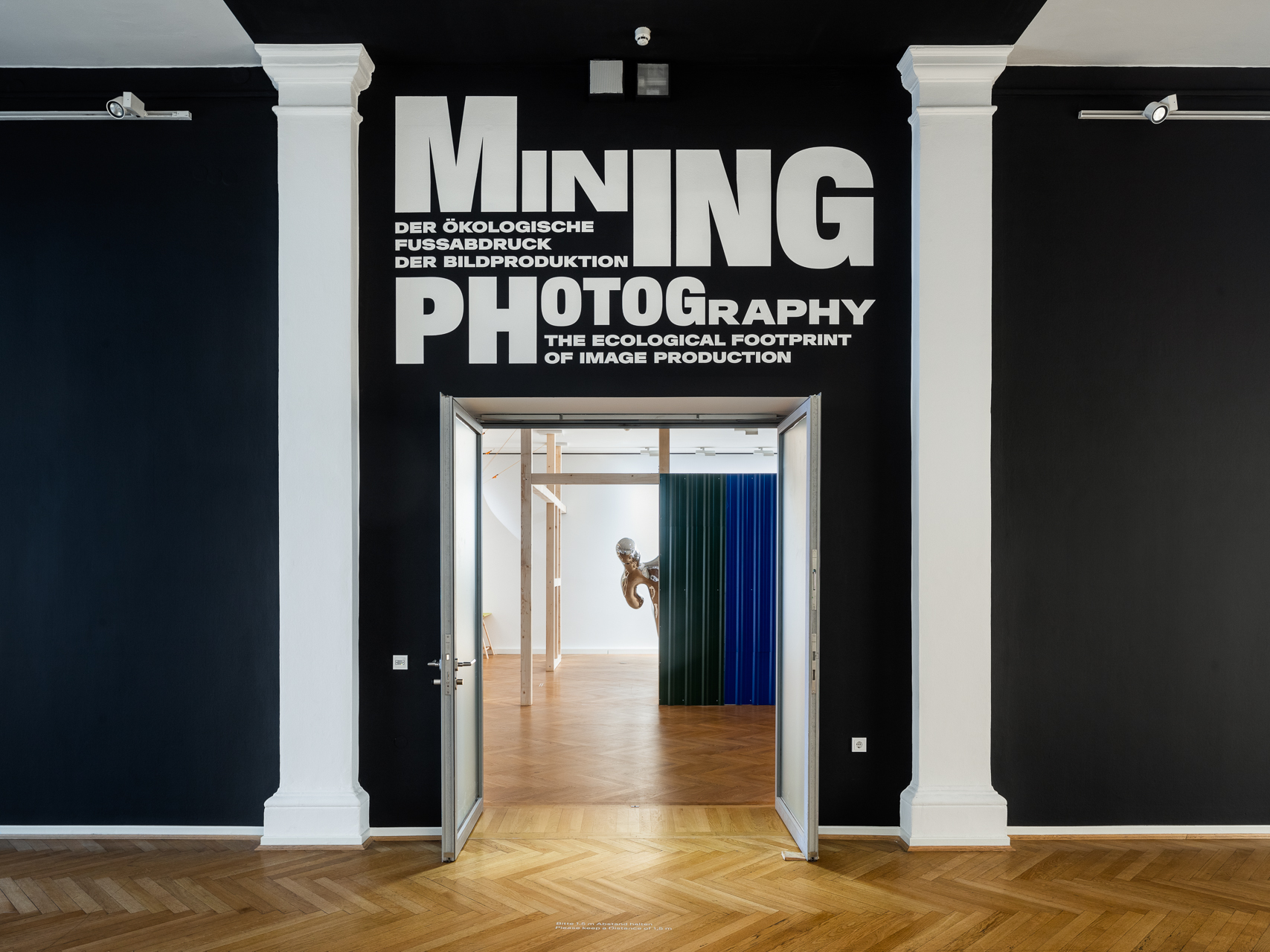
Mining Photography: The Ecological Footprint of Image Production.
MK&G, Hamburg, 2022.
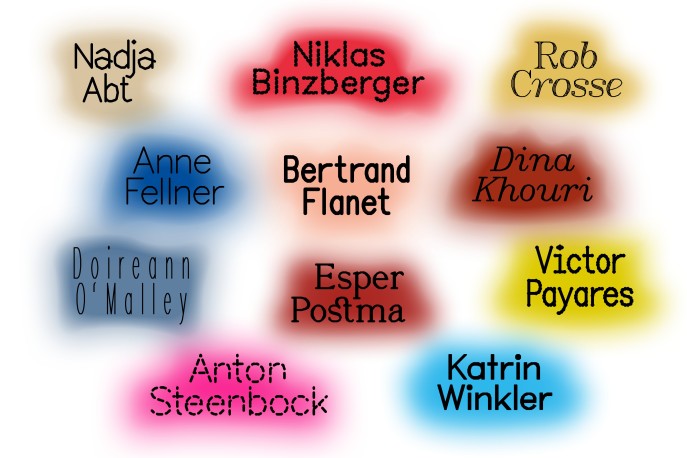
BPA at Gropius Studios
A collaboration between the Gropius Bau and BPA // Berlin program for artists.

Of A Fire on the Moon
Lia Rumma Gallery, Napels

Say Shibboleth | Munich
On Visible and Invisible Borders

Say Shibboleth | Hohenems
On Visible and Invisible Borders

Resisting Images
Biennale für aktuelle Fotografie, Farewell Photography

Regarding Spectatorship
Revolt and Distant Observer
Available here.
Photography has always depended on the extraction and exploitation of so-called natural raw materials. Having started out using copper, coal, silver, and paper—the raw materials of analogue image production in the nineteenth and twentieth centuries—photography now relies, in the age of the smartphone, on rare earths and metals like coltan, cobalt, and europium. The exhibition focuses on the history of key raw materials utilized in photography and establishes a connection between the history of their extraction, their disposal, and climate change. Looking at historical and contemporary works, it tells the story of photography as a history of industrial production and demonstrates that the medium is deeply implicated in human-induced changes to nature. The exhibition shows contemporary works by a range of photographers and artists, including Ignacio Acosta, Lisa Barnard, F&D Cartier, Susanne Kriemann, Mary Mattingly, Daphné Nan Le Sergent, Lisa Rave, Alison Rossiter, Metabolic Studio’s Optics Division, Robert Smithson, Simon Starling, Anaïs Tondeur, James Welling, Noa Yafe and Tobias Zielony, along with historical works by Eduard Christian Arning, Hermann Biow, Oscar and Theodor Hofmeister, Jürgen Friedrich Mahrt, Hermann Reichling, and others, and historical material from the Agfa Foto-Historama in Leverkusen, the Eastman Kodak Archive in Rochester and the FOMU Photo Museum in Antwerp as well as mineral samples collected by Alexander von Humboldt from the collection of the Museum für Naturkunde, Berlin.
Texts: Siobhan Angus, Nadia Bozak, Boaz Levin, Christopher Lützen, Brett Neilson, Christoph Ribbat, Esther Ruelfs, Sven Schumacher, Karen Solie, Julia Wiedenmann
Esther Ruelfs is an art historian and head of the Photography and New Media Collection at the Museum für Kunst und Gewerbe Hamburg (MK&G). Boaz Levin is a writer, freelance curator, and co-founder of the Research Center for Proxy Politics.
176 pp.
with 20 black-white and 74 colour illustrations
thread-sewn paperback
Leipzig July, 2022
ISBN: 9783959056328
Edition Number: 1
Width: 19 cm
Length: 25 cm
Designers
Studio Pandan
Editors
Boaz Levin, Esther Ruelfs, Tulga Beyerle
“Judith Kakon’s book Stolen Language can be understood as an exhibition in which her works and working materials are brought into relation and curated anew.”—Simone Neuenschwander
With this book, Judith Kakon (b. 1988) extends her artistic practice by relating her works to her working materials in a nonhierarchical and nonlinear manner. This conceptual approach coincides with the explorations in her artworks, which focus on the reciprocal relationships between society and commerce, and the impact of accelerated economic developments on human interactions with one another and with their environment. Kakon’s working method highlights the ubiquity of commodity circulation and examines selected cultural references via reappropriation of existing forms and modes of production. Stolen Language, published on the occasion of the solo exhibition Judith Kakon. Manor Art Prize Schaffhausen 2021 at the Museum zu Allerheiligen Schaffhausen, is a form of visual research dedicated to often-intangible patterns of exchange and resisting conventional understandings through alternative indexes and perspectives.
Edited by Isabelle Köpfli, Museum zu Allerheiligen Schaffhausen
Texts by Quinn Latimer, Boaz Levin, Simone Neuenschwander, and Sadie Plant
2021
English / German
152 pages
Softcover, 20.5 × 27.5 cm
ISBN 9788867494866
€ 22 / $ 25 / CHF 25
Link to review.
Scholars from a range of disciplines interrogate terms relevant to critical studies of big data, from abuse and aggregate to visualization and vulnerability.
This groundbreaking work offers an interdisciplinary perspective on big data and the archives they accrue, interrogating key terms. Scholars from a range of disciplines analyze concepts relevant to critical studies of big data, arranged glossary style—from abuse and aggregate to visualization and vulnerability. They not only challenge conventional usage of such familiar terms as prediction and objectivity but also introduce such unfamiliar ones as overfitting and copynorm. The contributors include a broad range of leading and agenda-setting scholars, including as N. Katherine Hayles, Wendy Hui Kyong Chun, Johanna Drucker, Lisa Gitelman, Safiya Noble, Sarah T. Roberts and Nicole Starosielski.
Uncertainty is inherent to archival practices; the archive as a site of knowledge is fraught with unknowns, errors, and vulnerabilities that are present, and perhaps even amplified, in big data regimes. Bringing lessons from the study of the archive to bear on big data, the contributors consider the broader implications of big data's large-scale determination of knowledge.
ATLAS PROJECTOS
2020
ISBN 9789895473427
128 pages
Softcover
19 × 12.5 × 1 cm
The third issue in the Next Spring series focuses on one film work, Havarie (2016) by Merle Kröger and Philip Scheffner, which is likewise based on a single image but with many sounds that bring the dynamics of the Mediterranean Sea closer. Titled On Distance, the essay by Berlin-based art writer Boaz Levin is both a response to the film and a reflection on the experience of living at a distance to close relations, from choice or necessity, through mass migration or constant mediation. In a world facing a planetary challenge like no other, it is all the more timely to be reckoning with distance, not as an obstacle for action or an excuse for inaction but to view it as a common condition for thinking through the political.
Next Spring is an occasional series of reviews published in book form. Each issue is an essay of art criticism focused on a work of moving image. Published in English and the language of place.
Laura Preston (ed.)
Published in partnership with Adam Art Gallery Te Pātaka Toi
Available through Anagram Books
Link to article
Review of “Ground Zero” at Schinkel Pavillon, Berlin, TZK 117
Link to issue
This December, Sri Lanka will inaugurate its first museum of “modern and contemporary art” in Colombo, the country’s commercial capital. The opening of the museum comes on the heels of a tense presidential election campaign that brought to power Sri Lanka’s former wartime defense chief, Gotabaya Rajapaksa, often credited for ending the country’s three-decade-long civil war by brutal means: a United Nations report estimates that as many as 40,000 civilians, mostly Tamils, were killed during the last months of that war, with thousands still listed as missing. Rajapaksa has since been accused of war crimes.
In the aftermath of the war, and coinciding with an aggressive push toward market liberalization and rapid economic growth, Sri Lanka quickly became the site of a burgeoning art scene and market. The Colombo Art Biennale was launched by a consortium of galleries just months after the conflict came to its bloody end, with other commercial galleries, an art fair, and now, evidently, a museum all following suit. Why has art become increasingly synonymous with economic liberalization, with art fairs sprouting like mushrooms on the damp earth of economic and social inequality? Grab an itinerary from your next jet-set art-world impresario and you’ll find a list of countries ranking high on “economic freedom” indexes: the UAE, Hong Kong, the UK, Switzerland: all bastions of property rights, an archipelago of low-to-no-tax zones where offshore assets can be safely shelled. These are the kinds of places where capital flight, as historian Quinn Slobodian has recently written, is seen as the most sacred of human rights.1
“Ground Zero,” an exhibition by Christopher Kulendran Thomas in collaboration with Annika Kuhlmann at Berlin’s Schinkel Pavillon, offers an ambitious and complex, if at times convoluted, meditation on the relation between the institutionalization of “contemporary art” and the reorganization of the global political economy. The work deftly traces the art boom that swept Sri Lanka in the aftermath of its civil war, questioning contemporary art’s relation to a human rights discourse “used to justify imperial ambitions” and offering a critique of the humanist abstractions it sees as the basis of both.
At the center of the exhibition is a video titled Being Human (2019), projected on a large translucent screen dividing the space. The video follows the character of a young Sri Lankan expat artist (not unlike Christopher), portrayed by Ilavenil Jayapalan, as he returns to the island in the war’s aftermath. There, he discovers his erstwhile homeland of Marxist-separatist Tamil Eelam has been eradicated and replaced, as it were, by a thriving market economy and a globally connected art scene, flush with cash. As we tour the island, Jayapalan talks about AI, Kant, biopolitics, human rights, and posthumanism, in what might as well be the output of a prosumer-grade generative adversarial network (GAN) applied to a decade of e-flux verbiage.

This judgement is not meant as an indictment. The other two characters we encounter during the video are, in fact, synthetic assemblages scraped from the web: “deepfaked” doppelgängers of Taylor Swift and Oscar Murillo. The two are taken as emblematic of our radically malleable, free-floating, networked contemporary; highly mediated products valued, paradoxically, for trafficking in immediacy or even authenticity. Their likeness almost fooled me (with “Murillo,” I found myself failing the Turing test). The soundtrack, too, is a mix of zeitgeist cocktail and readymade, partly lifted from Arthur Jafa’s The White Album and partly based on an algorithmic reverse engineering of Max Martin’s secret sauce behind Swift’s all-time hits. The 25-minute looped video both frames and is framed by a “show within a show” of sculptures and paintings by Sri Lankan artists Upali Ananda and Kingsley Gunatillake, purchased by Thomas from their galleries and restaged here – as if they had stepped out of the video, where they also appear – as readymade-props. For much of the video’s duration they remain hidden, flashing intermittently from behind the frame. It is as if the exhibition in its entirety is wrapped by yet another set of scare quotes, one more semblance in this dizzying hall of mirrors.
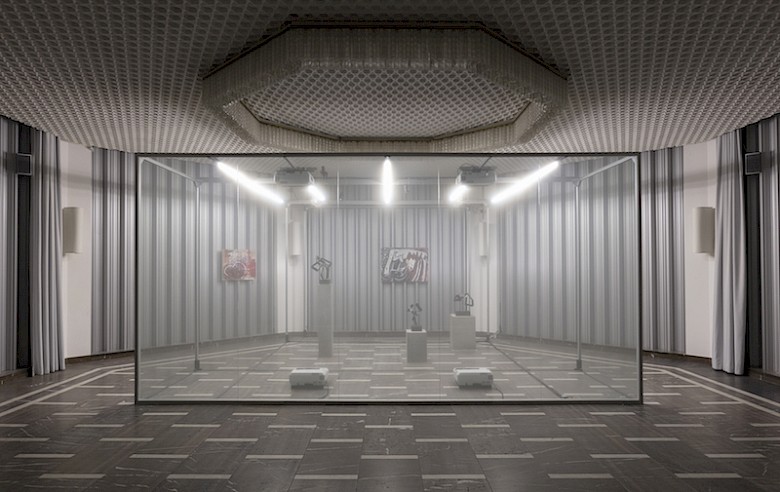
Yet for all its novelty, the art world’s fascination with AI in its various guises often ends up rehashing what is, in essence, a well-trodden modernist trope; after all, the generic and clichéd presented as a form of determinism has been with us at least since Flaubert’s Bouvard et Pécuchet, Mal- larme’s Coup de dés, Musil’s Mann ohne Eigenschaften, and, of course, Duchamp. The logic that informed many of these works still seems to be applicable when it comes to the scraping and synthesizing of your latest GAN or bot. At the heart of this trope is a quandary concerning the possibilities for creativity within a context dominated by market logic: questions of authorship and taste in the age of newspapers; mass advertising; “creatives”; target audiences; and, now, networked devices and the data mining they enable. If anything, algorithms have simply furthered this challenge in that – as Wendy Chun has eloquently shown – preferences for less generic and ostensibly more “original” content are paradoxically also easier to predict using social media algorithms. The more one deviates from the mean, the more predictable one becomes.2 As synthetic Swift quips, “Everybody demands authenticity, and every artist believes that they are for real. I mean, I believe that I’m genuine in what I’m doing. But that’s the paradox. Because so does everyone else.”3
So where does this leave Thomas, Kuhlmann, and us? How is one to escape the shapeless, all- devouring blob of the contemporary with its de- sire for synthesized, neatly marketed authenticity? Despite its lamentation about “the contemporary,” “Ground Zero” is itself elaborately timestamped by bleeding-edge tech and trendy posthumanist discourse. But maybe that’s the point? The historical scope of their narrative seems to be its redeeming factor. “This is contemporary art, and nowadays it’s everywhere. But what is it, and how did it get here?” Jayapalan asks at the video’s opening scene. The project of making “here” everywhere is key to this story. Asking about the origin of contemporary art requires that we ask about the origins of the global economy.
A history of globalization, and more specifically the development of neoliberalism, is however conspicuously absent from the exhibiion’s narrative. Instead, Thomas and Kuhlmann trace the origins of their story to the inception of universal human rights, and it is here that their plot veers toward slightly more predictable art-world terrain. Like contemporary art, which Jayapalan (channeling Groys) describes as being governed by a logic of radical equalization – “an art that no longer discriminates between mediums, or disciplines or historical or cultural or geographical refence points” – the notion of international human rights, too, posits a space of “theoretical equality” that is in fact “mediated by unequal powers,” to quote synth-Murillo. So far so good, but the missing link here is neoliberalism. In recent years, numerous critics have noted the twinned birth of human rights and neoliberalism and their parallel historical trajectories, questioning the complicity of a human rights discourse insulated from matters of economic and social justice in a world of radical inequality. Are human rights and neoliberalism identical? It’s a legitimate question, but one which is left unasked. Instead, we are offered a wholesale condemnation of human rights and a vague plea for some sort of posthumanist, decentralized autonomous system of governance that feels like a worn art-world cliché.
Be this as it may, “Ground Zero” remains a complex and ambitious exhibition, joining a rare group of works – including Walid Raad’s Scratching on Things I Could Disavow (2007–2011) and Hito Steyerl’s Is the Museum a Battlefield (2013) – in offering an example of a scaled-up project of Institutional Critique, attempting to address the infrastructure, politics, and ideology of today’s accelerated and globalized means of distribution and display.
Yet if we are to better understand contemporary art, seeing it as a purely homogenizing force is not enough. Contemporary art might tend to the eradication of geographic difference, but it still has a map. A quick look at that itinerary we borrowed from our art-loving one-percenter would show an art circuit plotted along the shores of rising inequality; it accrues not where there is a strong presence of human rights but, rather, where a specific historical understanding of human rights – one that places property rights above all else and is thus central to neoliberal ideology and statecraft – is in place.
A three-in-one artwork/board game/catalogue about Simon Denny’s exhibition Mine, which takes a look at data and resource mining as a reflection of hope and anxiety about the environment, technology, and work. Read about the art while playing your friends in a competitive scramble for world data domination. (More info about the exhibition here.)
Extractor will turn any tree-hugging humanitarian into a data-wrangling tycoon. It’s the Wild West of data extraction and you’ll need to buy up big if you want to survive.
Includes everything you need to play—game board, dice, data sets etc.—and a rule book featuring essays from Boaz Levin and Vera Tollmann, Tony Birch, Kate Crawford and Vladen Joler, and Tiziana Terranova, and a preface by Mona curators Jarrod Rawlins and Emma Pike.
Link to purchase Extractor
By Boaz Levin and Vera Tollmann
Written for "Extractor", a catalog for Simon Denny's exhibition "Mine", MONA, Australia.
By Boaz Levin and Vera Tollmann
Written for "Extractor", a catalog for Simon Denny's exhibition "Mine", MONA, Australia.
Overture: A Thornbill's Tale
As far as we know, the King Island Brown Thornbill may already be extinct; if not, its extinction is imminent. The likelihood of its permanent disappearance during the next two decades is estimated to be as high as 94%, lending it the dubious honor of leading the grim list of Australian species under threat of extinction1. What do such numbers tell us about the potential for the species’ survival in facing global warming? As we write this, more than fifty bushfires are burning in Tasmania—neighboring the Thornbill’s habitat on King Island—and ravaging 99,000 hectares of land in the past month2. Events of this magnitude are hard to grasp: extreme and alarming, but also abstract and somewhat removed— by proximity, but also comprehension – from our lives. How can we act? These exceptionally large fires were caused by a drought and an extreme heatwave that hit this summer in Australia, a country at the forefront of inconvenient truths.

The Thornbill, also called the Acanthiza pusilla archibaldi, is a bird without a lobby. Roughly ten centimetres in length, it is a small fowl with a long thorn-shaped bill (hence its name), a russet forehead with indistinct pale scalloping, red eyes, olive-brown upper parts, a greyish tail marked by a dark band near the end and off-white underparts with dark streaks on its chin, throat and breast. It has been described invariably as ‘unremarkable’ and ‘not sexy’, lacking the ‘marketability’ of other endangered species being sent off as iconic ambassadors onto our touch screens 3. It is, however, a skilled mimic, with a ‘rich, musical warble’ of a call. Adult Thornbills are known to mimic the calls of other species and, sensing approaching danger, they simulate a chorus of different alarm calls 4. Recently the Thornbill seems to have inadvertently emulated the role of another bird: it has been called the 'canary in the coal mine' of the Holocene extinction, the ongoing eradication of species during the current epoch as a result of human activity5. Like canaries employed in coal mines as early warning systems to detect the presence of carbon monoxide, the Thornbill's imminent disappearance is an alert to the deadly effects of carbon emissions on a planetary scale.
The canary’s fate is emblematic of what has been called the Anthropocene, a term used to describe 'humanity’s catastrophic effects on the planet’s physical and biochemical systems'. Or, more specifically, the ‘Capitalocene’—referring to the symbiotic relation between ecological destruction and capitalist expansion, starting from the fifteenth century with seafaring; a term we’ve chosen to use as a framework throughout this essay to describe our current age 6. The canary is a bird, named after an island, named for its dogs: Canariae insulae (‘islands of the dogs’). Being named after what is commonly considered to be the earliest domesticated species will turn into a self-fulfilling prophecy. The canary with which we are familiar today—the proverbial canary, whose tweet, tweet tweet song, gave its name to the mid-nineteenth century verb designating the generic chirp or song of a bird, as well as to Warner Bros ever-evasive ‘Tweety’—is itself a domesticated form of its wild Island-dwelling ancestor. Its domestication is the result of European colonisation and centuries of biotechnological manipulation, meticulous breeding and training. Its ancestor: Serinus canaria, the wild or Atlantic Canary, is a yellow-green small perching bird, part of the finch family, distinguishable for the male’s crystalline song. Its ‘discovery’ in the early fifteenth century by European colonists, who were enamored by its call and vivid colors, coincided with the beginning of the European world-economy, and led to it being imported to Europe in large numbers 7. The Canary Islands, known by the Romans as ‘the fortunate isles’ for their fertile volcanic soil and moderate weather, would become ‘laboratories for a new kind of European imperialism’. The Guanches, their native population, were the first people to suffer the fatal consequences of imperialist expansion 8). The bird’s import to Europe also signaled the dawn of the epoch-making ‘Columbian exchange’, as Old World diseases, animals, and crops flowed into the Americas, and New World crops, such as potatoes and maize, flowed into the Old World with the advent of European imperialism 9. It was the beginning of a capitalist world-ecology—the joining of ‘power, nature, and accumulation in a dialectical and unstable unity’—marking the emergence of the Capitalocene 10.

Canaries were presented by explorers as gifts to the court of Castille, and soon to the rulers of France. From there, the birds were exchanged and bred among nobility, with women said to have carried them as accessories perched on their fingers. The following centuries saw a dramatic increase in the fowl’s import to Europe, and by the nineteenth century there was something of a canary craze in Britain and Germany, with its breeding becoming prevalent predominantly among the working class. The bird became a source of supplementary income in times of economic stress, or as one author put it, a hobby which combines both ‘profit and pleasure’11. By the late nineteenth century, the international canary-market was booming 12. While the export enterprise relied on training birds to sing and entertain people in their private homes, the network of trade routes could be described as a ‘hybrid geography interweaving people, organisms, and machines’ 13. Following experiments conducted in the 1890s by Scottish physiologist John Scott Haldane, mines started stationing canaries in their safety lamp cabin, from where they were taken underground to perform as sentinel animals. By the 1920s The US Bureau of Mines regularly employed canaries on their safety and rescue teams, with the ‘hero-birds’ of the Division of Mine Safety Cars considered ‘among the most important employees of the bureau’14. Besides being small and light, and therefore portable, canaries have a high basal metabolic rate, which means they exhibit symptoms of poisoning before gas levels become critical for humans. As the Sacramento Union newspaper reported, ‘in the presence of small amounts of carbon monoxide [the canary] gasps visibly, ruffles up its wings, flutters, and, if sufficient of the deadly gases are present, quickly drops from its perch unconscious and seemingly lifeless’. This deadly use of canaries would continue late into the twentieth century, ending in the UK in 1986, when they were replaced by automatic detectors.
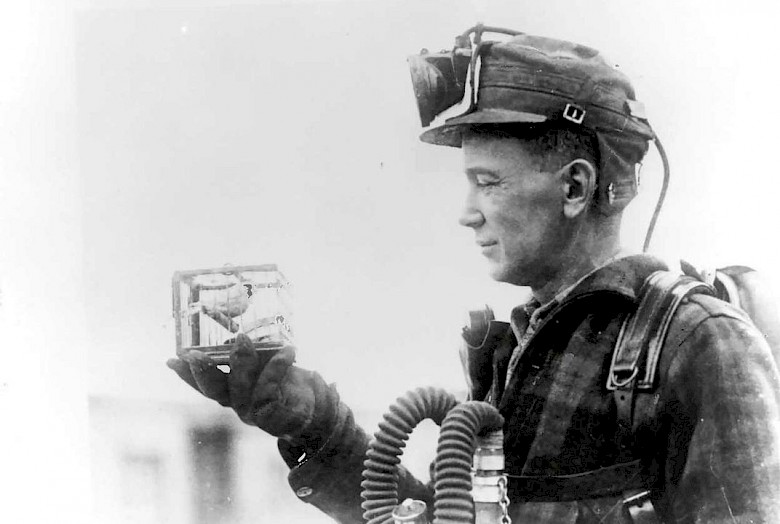
Thus the canary—a bird named after the domesticated canine, which spread with the rise of the European war-capitalism, bred to achieve perfect color and pitch, through speculative cycles of boom and bust, and eventually employed in the toxic catacombs of fossil fuel extraction—sings the song of the Capitalocene. And now, the King Island Thornbill joins its chorus.

Mines and Clouds
A Thornbill in a canary cage is the first thing one encounters upon entering Mine, Simon Denny’s solo exhibition at the Museum of Old and New Art (MONA) in Tasmania. More accurately, one encounters an empty cage—fully equipped and meticulously configured to host a living canary—and in it appears a fluttering life-size animation of the endangered bird. This bird is only visible through the ‘O’, Mona’s digital curatorial device (hosted by a provided iPod or an app on the user’s own iPhone).The O is filled with information selected and designed by the artist, turning the show into a carefully choreographed double space—both physical and virtual—of objects and augmented reality. A clawed mechanical arm is attached to the cage, and various graphic elements, notation and labels protrude from it.When looking through the O, different infographics pop up on the screen. The cage, we learn, is a life-sized 3D reproduction of an image taken from a patent filed by Amazon, invented and designed to house human warehouse workers interacting with heavy machinery—an uncanny illustration of a dystopian future for the interface between worker and machine. Tweets relating to contested mining operations in Australia run across the screen. The virtual presence of this additional layer turns the objects in the exhibition space into interfaces and the museum into a platform. As we shall explain in this essay, the Thornbill in a canary cage becomes a tangible way of perceiving the radically intangible logic of extraction on a planetary scale.
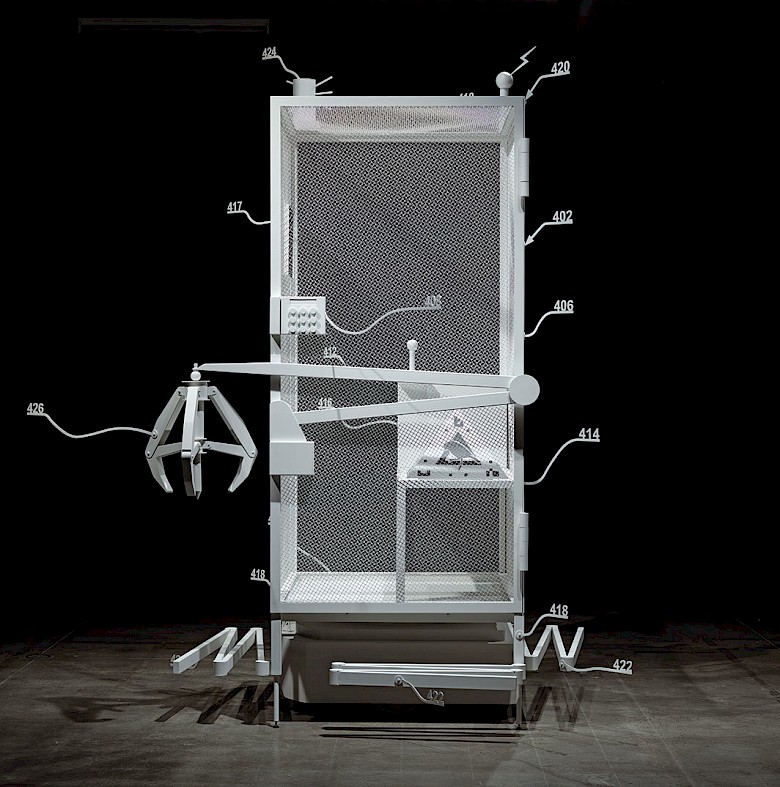
The exhibition is introduced with a research diagram created by Kate Crawford and Vladan Joler titled ‘Anatomy of an AI System’, created to accompany an essay by the same name (both featured in this volume). The wall-sized map outlines the entire process of producing Amazon’s AI-powered voice assistant Echo Dot, an inconspicuous cylinder-shaped ‘smart’ home appliance. In dizzying detail, Crawford and Joler chart the data, labour and resources used for its production, maintenance, distribution and use: from rare earth mines, through to an array of labour processes and global supply chains, and, finally, to people’s homes, and simultaneously to the immense and ubiquitous data centres of the so-called ‘cloud’. Their diagram introduces the central challenge addressed by the exhibition, that of thinking and representing labour, resources, and extraction together, rather than as disparate and unrelated processes in a vast and intricate global economy.
Where Crawford and Joler disassemble the black box, Denny unearths a composite vision of our dystopian present through the image of the mine: mines for the extraction of valuable minerals or other geological materials, and data mines, where human action is surveilled, aggregated, processed, and ultimately monetised—literal mines and metaphorical mines. The building site of the Museum of Old and New Art adds to the mining metaphor: the museum is carved into the rock of the Berriedale peninsula, the exposed sandstone cliffs towering over you as you descend into the labyrinthine exhibition galleries.
The rise of so called ‘data-mining’ comes with the proliferation of mobile communication devices and ‘social media’, as well as the centralisation process described euphemistically as ‘cloud’ computing. Here, the metaphor of ‘mining’ becomes a brilliantly succinct way of naturalising data, conveying the notion that data (as its etymology suggests) is a resource to be tapped into and extracted with the help of mechanical ingenuity and business acumen, as if it were a precious ore or fossil fuel. Expelled from the realm of either propertied cultural relations or productive labor to that of a virginal terra nullius, data is the ‘new oil’ 15, meaning metaphors of harvesting or mining demonstrate how ‘deep’ avatars or other data gathering scripts dig into the data pool that is social media.
This nexus of extractive processes, both literal and metaphorical, has led a growing number of scholars to identify an expanded notion of ‘extractivism as a dominant logic within contemporary capitalism, doomed to expand’16. Understood metaphorically, extractivism refers to the contextual resonance and effects of extractive activities in the economical, political and social fields, such as the surveillance, analysis and monetisation of behavioural data, whereas in a literal sense it describes ‘historical and contemporary processes of forced removal of raw materials and life forms from the earth’s surface, depths, and biosphere’ 17. This expanded understanding of extraction highlights the central role played by ‘capital’s multiple outsides’18, and the continuity of what Marx called primitive accumulation in the present. Similarly, writing at the turn of the century and at the height of imperialist expansion, political theorist Rosa Luxemburg observed that an exchange between capitalist and non-capitalist environments is essential for the existence of the capitalist economy 19. For Luxemburg, expansion has become the true ‘economic condition of existence for the individual capitalist’, a coercive law predicated on the ‘cheapness of commodities’, the capitalist’s ‘most important weapon ( . . . ) in his struggle for a place in the market’. Extraction and expansion are intricately linked. This explains the significance of the frontier for capitalist expansion, as journalist and activist Raj Patel and environmental historian Jason W. Moore have written, ‘capitalism not only has frontiers; it exists only through frontiers, expanding from one place to the next’20. Capitalism needs to invent frontiers that it can overcome, colonise, a ‘nature’—human, or otherwise—that it can ‘cultivate’, put to work, exhaust, and do so as cheaply as possible 21. The frontier ‘concerns how the “outside” is produced, exploited, and policed’, it is a site of ‘perpetual reinscription’, writes critic and curator Vivian Ziherl; a thought which is also inherent to Denny’s amalgam of terrestrial and virtual mining and markets. She discusses the ‘persistent presence of the frontier within the globalizing era’, exploring its traces and reverberations through the visual arts in the context of aboriginal Australia 22. As specific to the Australian case, Ziherl points out the violent ‘de-registration of sacred sites’ by law to extract monetary value from the culturally and religiously sacred lands 23.
There is a strong relation between forced and unwaged labor and extraction, which always strives to maximize value and minimize compensation. And in its expanded sense, extraction ‘involves not only the appropriation and expropriation of natural resources but also, and in ever more pronounced ways, processes that cut through patterns of human cooperation and social activity24. One could think of this as the frontier reaching the human body (and agency).
Australia is home to one of the world's largest mining industries, and is now pioneering in its mining digitisation and automation. It is the primary global exporter of coal and opal, and is second only to China in rare earth mining zinc, gold and iron, making mining the largest sector of its economy25. The rapid expansion of its pastoral and mining industries since the mid-nineteenth century supports Patel and Moore’s assertion that such capitalist expansion exists through frontiers. It was the doctrine of Australia as terra nullius (‘land belonging to no‑one’), established with European colonisation and only formally abolished in the Native Title Act of 1993, that enabled its extractive industries to develop on such an unwieldy scale 26.
In the second room, Denny has installed near life-size cardboard reproductions of automated mining machines in a chimera of a half-built trade fair, showcasing technologies currently in use in Australia 27. Visitors encounter a looming present instead of a daunting future. The cardboard cut-outs are illustrated in a sort of computer-game-like aesthetic and appear heavily used, almost derelict, with traces of machine oil and dirt lending the entire set-up the sort of cyberpunk, worn out, archaic futurity of a post-industrial dystopia.
The sculptures sit on a wall-to-wall board-game layout taken from ‘Squatter’, a popular Australian monopoly-like game in which players run sheep stations as competitive business ventures in the Australian colonial frontier. For the exhibition, Denny created an adapted version of the game titled ‘Extractor’. This new version models and parodies the mechanics of platform technologies and data-extraction businesses, and incorporates different motifs from the exhibition such as the Thornbill. Extractor uses the blatant colonial ideology implicit in Squatter to highlight the expansionist logic essential to data mining, and its digital frontier. A large-scale version of the game occupies the centre of the exhibition space, while boxed playable versions populate the cardboard mining sculptures which double as shelving units. Purchasable, the sculptures are gradually emptied from boxes, only to remain in their skeletal, cut-out form. Denny assimilates to commercial strategies; he embraces the established and recognisable tricks of the trade, developing them to a degree of perfection with the decisive difference that he in fact sells a trigger for reflection of current day capitalism, a theme park for extraction. Since the days of Squatter, pastoral industries have expanded beyond recognition. But agriculture, writes Timothy Morton, ‘is a major contributor to global warming, not just because of flatulent cows, but because of the enormous technical machinery that goes into creating the agricultural stage set, the world’. As such, every game creates a world and utilises a world-picture: in the case of Extractor it is the violent, power consuming, networked world of data mining. Both worlds meet in their imagined frontiers, and in their contributions to the excessive release of carbon into the atmosphere.
In the realm of data extraction, there is a strong development towards ‘the pervasive penetration of extraction into spheres of human activity’ 28. The problems that arise thereafter are manifold, as ‘[D]ata mining reconfigures property relations, working the boundaries of “privacy” while also testing and exploiting the differences, frictions, and connections between heterogeneous jurisdictions’29. These jurisdictions come into the focus of insurance companies, among other stakeholders, while we write. For example, an insurance company demands a third party take care of data gathered with self-driving cars to make sure the data is not manipulated in a particular party’s interest in case of an accident.
The ‘extractive turn’—marking the heavy use of large machinery in formerly human-scale production areas for the extraction of ‘huge volumes of natural resources, which are not at all or only very partially processed and are mainly for export’30—has its effects on logistics, like the need for more cargo transportation and power consumption. And, in turn, large transport infrastructures make way for large-scale production and extraction, such as the Chinese One Belt, One Road plan and the Grand Nicaragua Canal project. Once one sector is scaling up, the connected industries are forced to follow suit. If there is any consolation to be found in this vision of extractivism, it is in the fact that despite capital’s totalising tendencies, its ‘constitutive relation with its outsides punctures and troubles this very process of totalisation’31.
Mine essentially deals with the challenge of representing global extraction processes, and changes relating simultaneously to labour, resources (for lack of a better word), and data (for lack of a better word), without privileging any one aspect. In order to mediate those mostly invisible, large-scale processes and to address what’s at stake, Simon Denny chose to unfold his arguments and concerns though a series of emblematic vignettes and an array of objects, artifacts and corporate brands. The exhibition appears to zoom in and out, in order to straddle multiple scales simultaneously—highlighting local concrete business practices while mapping a global logistics network and supply chain, for example. Visitors interact with the ‘theme park’, a tongue-in-cheek description by the artist, of carefully chosen attractions—intangible objects in real life—from a first-person-screen perspective (familiarised by ‘smart-phones’ and tablets). The show sends a warning signal, like that of the canary bird, whose history we traced in the beginning of this text.
Zooming into the history of mining in modern times, certain categories in the Anthropocene discourse stand out. Aerial pictures reveal the irreversible changes of the earth’s surface, so-called ‘sacrifice zones’. Before the Anthropocene and related ecological problems were virulent, most significantly, living and working conditions mattered. In 1956, the architect Erwin Anton Gutkind described mining towns as an inhuman blending of work and living, which demonstrate the modernist relationship between man, labor and nature32. Gutkind calls it an ‘I-it relationship’ 33. The post-war years were a time of a universal, Western one-world approach: ‘the whole world is our unit of thinking and acting’34. When Gutkind was studying the industry and its damage to the surface of the Earth, he used aerial photographs to make his assessment. The visual material made him stress the ‘rigid layout and the unity by representation’—a modernist ideal and ideology of functionality through abstraction. The aerial perspective went well with a modern rationalised take on earth and its resources, and Gutkind and his fellow editors claimed that the most striking symbol of a new (universal) scale was the airplane, as pioneering artists, architects and theorists had already stated in the 1920s. But Gutkind added a skeptical tone to his analysis, writing that ‘the dumps are the most conspicuous landmarks of the exploitation of the natural resources and of the exploitation of the human “material”’35. With the current process of automatising mining, on the contrary, distances between workers and the site of the mine are redefined, leaving a virtual, abstracted impression, no imprint, impossible to frame in an aerial photograph.
On the other hand, looking into long-term problems caused by mines which are evident after closure, one comes across analyses regarding its toxic (wastewater) remains. Even though the contemporary mining industry tries hard to manufacture a ‘clean’ image—for example mining as envisioned by high-tech companies—the extraction business leaves behind these so-called ‘sacrifice areas’36. Researchers in natural sciences as early as the 1970s, a peak period of environmentalist thinking in the twentieth century, point out the drastic man-made damage: ‘as of 1977, when stricter regulations were implemented, the mining industry alone had disturbed 2.3 Mha in the United States, an area roughly the size of the state of Vermont'37.
It seems so contradictory, disproportionate and mind-bending to think of mining, likely the heaviest and most rudimentarily physical of all industries, as equipped with—and even partly run by—silent computer systems, remote-controlled sensors and data analytics, which are watched over by autonomous drones. The grubby and monstrous business of mining has been gradually integrated into an algorithmic regime. The face of twenty-first century mining is a roll-call of multinational companies like the Swiss technology firm ABB38 Cisco or Accenture, who, in their video ads, represent the industry through images of high-tech command and control rooms for the so-called ‘connected mine’ or ‘digital mine’, which means selling digital tools intended for increased productivity in extractive operations. The company is promoting an extensive, hyper-clean smart system, including live interfaces, video phone feature and VR headsets39. Human operators supervise the operation through an interface of screens, tablets and computers to interact with a digital model of an underground mine as well as an open pit. In their downtown remote control centre40—a glance out of the window reveals a complex of highrise buildings—the digital copy of the mine shrinks into a clear and manageable room size. While the control room can be installed nowhere in particular, the mine needs to be located somewhere natural resources are to be found. If previously an architecture model would serve the task of representation and mediation, in the video it is promoted as a data display and cue for action. Underground, workers data is gathered by a device such as the Caterpillar ‘Smartband’. According to the manufacturer’s advertising, the ‘wrist-worn device automatically detects an employee’s sleep and wake periods and converts data into an effectiveness score, viewable by the employee at any time with the push of a button. If a score is approaching 70%, the employee is considered to be “fatigue impaired”’. Caterpillar claims that workers are being empowered to ‘manage their own fatigue’ and mining companies are enabled to ‘model and predict worker fatigue risk’. The smartband is, they seem to claim, the new canary. But it is also another mine, surveilling and aggregating behavioural data from the mine’s workers, as if it were just another ore. Digitisation has come full circle. The oldest, perhaps most archaic, industry goes digital, and is uploaded to the cloud. Big machines are steered based on micro-technology. Silicon Valley has found a new frontier41.
But let’s zoom out even further to understand what the discourse on mining, extractivism and data tells us in regards to the times we live in. How to grasp its new scale and dimension? Is it possible to represent processes so abstract, so large and all-encompassing, so sticky and messy and global, without falling to abstractions, to generalisations, without losing oneself to detail and seeing the trees rather than the forest?
Scalar dilemmas
A number of theorists from different disciplines have tried to find adequate strategies to deal with the challenge of representing such vastly distributed phenomena. In her book Climate in Motion, historian Deborah Coen refers to climate science as a process of scaling, of ‘mediating between different systems of measurement, formal and informal, designed to apply to different slices of the phenomenal world, in order to arrive at a common standard of proportionality’42. To grasp the human influence on climate change and its future trajectory, it is necessary to zoom in and out, to shift, jump and cut from micro to macro, from the molecular to the planetary, and from the Pleistocene to an imminent future. Timothy Morton calls those things ‘that are massively distributed in time and space relative to humans’ ‘hyperobjects’. This concept reflects his attempt at addressing ‘scalar dilemmas’ by bringing global warming down to earth and relating to it: ‘[T]he time of hyperobjects is the time during which we discover ourselves on the inside of some big objects (bigger than us, that is): Earth, global warming, evolution. Again, that’s what the eco in ecology originally means: oikos, home.’43 Thinking with Morton’s hyperobjects helps increase our awareness of processes generally invisible to us, to create a ‘sense of intimacy’ for climate signs, the sensual footprints of hyperobjects, that speak to us; instead of spreading a message that planet Earth is doomed, Morton wants to ‘awaken us from the dream that the world is about to end’44. Another strategy to represent globally and temporarily distributed extractive processes during the Anthropocene is offered by historian Gabrielle Hecht. In an essay on uranium mining in Gabon and planetary nuclear politics, she describes uranium-bearing rocks as ‘interscalar vehicles’, ‘riding them from Gabon to France to Japan, from the 1970s to our planet’s early history to the distant future’. Her intention is to narrate the different political layers involved in local, national and international business and politics, ‘to understand the Anthropocene and its critiques as scalar projects. This requires treating scale reflexively, as both an analytic category and a political claim’45.
A similar scalar dilemma has long vexed critics of political economy. The difficulty of representing, or mapping, the intricacies of global capitalism in its multiple scales is the subject of Jeff Kinkle and Alberto Toscano’s Cartographies of the Absolute, which asks for an aesthetic of cognitive mapping, as a response to a state of ‘cognitive dissonance’: a sense of disorientation facing an omnivorous capitalist world-system. What is lacking, they note, is ‘a practice of orientation that would be able to connect the abstractions of capital to the sense-data of everyday perception’, and that this is ‘identified as an impediment to any socialist project’46. But maybe scalability and an expansive view are part of the problem, rather than a solution to it? In her essay ‘On Nonscalability’, anthropologist Anna Lowenhaupt Tsing analyses capitalism’s logic of scaling and expansion: ‘projects that could expand through scalability were the poster children of modernisation and development’ she writes, ‘we learned to know the modern by its ability to scale up. Scalable expansion reduced a once surrounding ocean of diversity into a few remaining puddles. Project advocates thought that they had grasped the world. But they have been confronted with two problems: first, expandability has gotten out of control. Second, scalability has left ruins in its wake’47. Since extractivism and its imperative of limitless expansion leaves behind a ‘damaged planet’, Tsing advocates for alternatives outside scalability logics in favour of biological and cultural diversity.
Novelist Amitav Ghosh has recently addressed similar questions concerning the absence of climate change in works of literary fiction, and specifically the modern novel, and the challenges posed in addressing such issues within an artform so closely related to the development of bourgeois subjects, and to modernity. With the novel, nature is relegated to a role in the background, and the human—preferably individual—psyche, comes to the fore. For Ghosh, climate’s imagery is resistant to literary representation too: ‘[G]lobal warming’s resistance to the arts begins deep underground, in the recesses where organic matter undergoes the transformations that make it possible for us to devour the sun’s energy in fossilised forms’. These substances—coal, petroleum, gas—are ‘viscous, foul-smelling, repellent to all the senses’, or otherwise, odorless and toxic 48.
Beyond the Capitalocene
Contemporary extractivism—from oil, to rare earth, to data—is characterised by a different materiality to that of earlier mining, more often abstract and predominantly automated. But is it true that, as Ghosh writes, for the arts ‘oil is inscrutable in a way that coal never was’? And if so, isn’t data —and its primary existence as numbers in spreadsheets—all the more inscrutable? Or, perhaps, as Denny appears to claim, the problem lays less in the inscrutability of one substance or another, but rather, in the sleight-of-hand of industry and the mostly invisible operations of the entire logistical cycle, and the way both labour and the environment are obscured by it: from rare earth mines to seemingly innocuous hand-held machines and their omnivorous collection of behavioural data, and the absorbing of this data into ‘cloud storage’. The only representation we have of such processes are stock images, blinking server farms, ‘smart machines’ or automated mines seen from drone view. The challenge is to think about labour, resources, and data together. In narrative terms, the difficulty posed is that of breaking away from sequence, into a sort of expanded and spatialised montage, but also of allowing for the viewers identification nonetheless through AR interactivity, offering multiple nodes of entry. Denny’s reference to gaming as a narrative form and organising logic, and as a way by which behaviour is often mined and monetised, addresses similar questions concerning the possibility of representing a highly distributed ‘story’. Games are by definition goal oriented, predominantly governed by a zero-sum, winner-takes-all market logic, relying on the positing of a rational self-interested subject, but they are also about role playing, immersion and identification, and action rather than representation. Players are more than just spectators, for one, they are always implicated, and expected to take action. In this sense games are great tools for modeling and testing future scenarios. Superimposing Extractor on top of Squatter shows how current extractive industries are built upon a long history of expropriation, while the game’s dizzyingly steep narrative—profitability increasing exponentially the further one progresses, making radical inequality a feature, rather than a bug—corresponds to the mechanics of the data industry, and by extension to extractive capitalism.
What could be an alternative to this sort of extractivist logic? Are there examples of critical uses of datafication that could be harnessed for alternative ends, or even to prevent the future ascribed to us currently with statistical near-certainty? Can the miner outsmart his smartband? Climate-change research is one possible example of a critical use of predictive data modeling. Such models make predictions based on past correlations, not in order to affirm the status-quo—to mine past behavioural patterns and monetise future actions—but rather, in the hope that they will prompt us to act differently and create new futures49. These are predictions made with the hope that they fail.
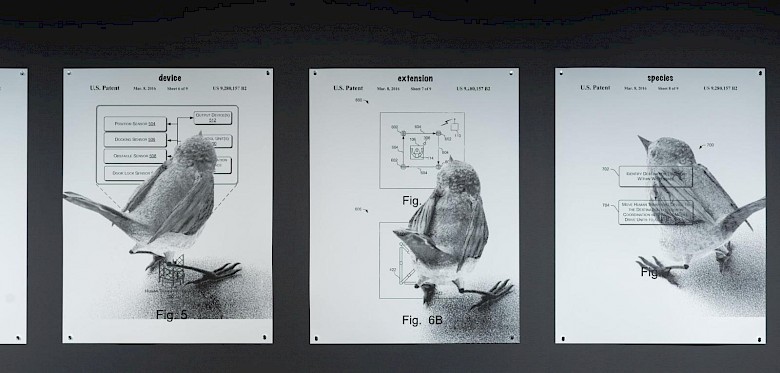
To return to our Thornbill, we can only hope that the grim prediction of its coming extinction fails —that the warning succeeds and the Thornbill comes to thrive again. Meanwhile, a community effort is underway in order to gather more data about it, where ‘experts in conservation management, specialist bird researchers, dedicated birders, and passionate local landholders all give their time freely to monitor endangered species’50. The bird’s most recent sighting, in 2016, was documented as part of the 'Wing on King' bird monitoring project. This is not a case of government outsourcing, or unwaged labour extracted via platforms, but rather ‘unpaid work by dedicated Australians stepping up’51. They do so, not out of desire to colonise yet another ‘outside’52, to conquer another frontier, but with the hope that a persistent, collaborative grassroots effort will demonstrate, if only provisionally, that despite capital’s totalising tendencies, another world, with another future—beyond the Capitalocene—is possible.
First published on Contemporary Hum
First published on Contemporary Hum
Last week it was warm once again in Berlin. The sky was a hue of brilliant blue and people filled the cities’ parks, basking in the soft warmth of a rare mid-winter sun. It’s only February, but it feels like spring is just around the corner. Friends I talked to—particularly foreigners who, like me, hail from warmer climates—expressed a cautious optimism about the possibility that this year’s winter might be over, that we might have survived another season of monotonous gray overcast and chilling eastern winds. But this glee is often accompanied by a guilty evocation of climate change—how can it not be? The winter has been mild, and maybe it’s just me, but it feels like it’s been getting milder every year since I moved here nine years ago from Jerusalem. The past summer, on the other hand, has seen temperatures reaching record highs, leaving scorched yellow patches in city parks where grass once was, drying up the massive Havel river and therewith immobilizing commercial barges, devastating agriculture, with crops shriveling and animal feed-grains toasted in the punishing sun. Even the proverbial protestant work ethic couldn’t withstand the heat: lacking air conditioning, offices were forced to a standstill and schools declared Hitzefrei—in Germany, when temperatures reach over 30C school is canceled and children sent home—overwhelming sunbaked parents, who’s last resort were often the subsidized public pools (the one in my neighborhood saw 330,000 visitors over the summer.) I spent many of those days by the pool too—what else could I do?—but the warmth, comforting as it was to lounge in, felt ominous. The past summer was a watershed moment. Inconvenient truths imposed themselves on multiple fronts: heatwaves, droughts, floods, fires, and one very grim (though, some would say, not grim enough) UN report. An hour drive from my home, forest fires forced the evacuation of two villages in the outskirts of Berlin, with the smoke reaching the city. In California, climate change found its iconic images in an incinerated mountain town called Paradise—the name made for particularly dreadful headlines—the deadliest and most destructive wildfires California has ever seen, and it found its colluder in Trump, who’s steadfast denial of what has become so self-evident, so painfully glaring, shone a cruel radiance of kinship with a long-lasting, if somewhat more oblique, collective complicity. Is denial really any different from indifference? Isn’t my own denial purchased at the price of a biodegradable trash bag here, a recycled puffer jacket there? The solutions offered seem broken, ridiculously inept in confronting the scale and gravity of the crisis we’re in.
Part of the problem, it seems, has to do with the challenge of both perceiving and representing troubles of such magnitude—changes and shifts taking place both at the molecular and the planetary scale—and reconciling these with the mundanity of our everyday life. It’s difficult to imagine our actions—driving a car, taking a plane, purchasing another product or having coffee-to-go from a disposable cup—as irredeemably toxic, to relate them with the constant increase of typhoons, heatwaves, wildfires, ocean acidification, and with the carcasses of bleached reefs.
As I sat on a bench near our home, the soft mid-winter sun washed over my closed eyes. But all I could think of was an essay I just finished reading by Emily Raboteau, where she asks “How to reconcile these twin feelings of pleasure in the city’s enjoyments and terror of its threats? I have learned” she writes “that the world is running out of sand; that every second we’re adding four Hiroshima bomb’s-worth of heat to the oceans”1. She thinks of an hourglass, of her kids.
It’s difficult not to feel utterly helpless when confronted with this reality, knowing that individual action is but a drop in quickly rising, acidifying, ocean waters, that the problem is systemic, and far removed by orders of magnitude from the influence of individuals. The genie, it seems, has long escaped the bottle, and we’ve been left searching in the dark for an emission cap. But a realist fatalism can be as paralyzing, and as harmful, as denialism. So, what is to be done?
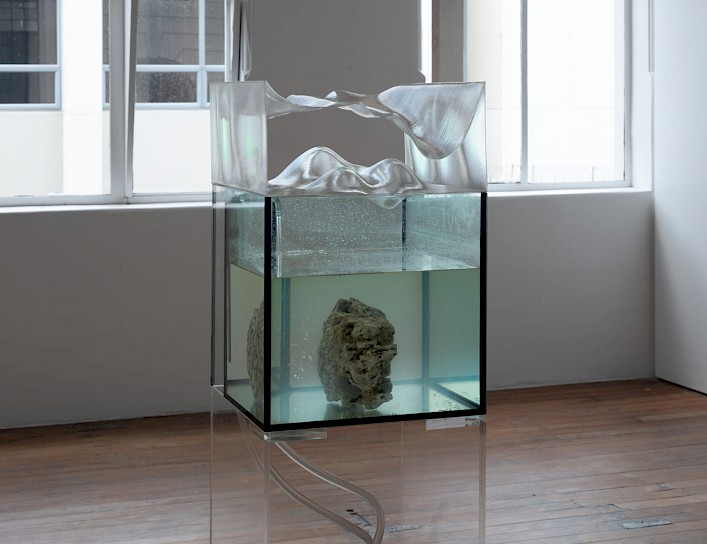
Richard Frater, Stop Shell (live rock version), 2018, fossilised coral, 3D printed macroscopic graphs, coral organism, marine aquarium, bio-media, plexiglass, 1460 x 400 x 400mn, Installation view, Michael Lett, Auckland
New Zealand born, Berlin-based, artist Richard Frater has devoted much of his work during the past five years to exploring human complicity in climate change, it’s visual culture and governing logic, but also—no less importantly—modes of resistance, nurture, action, and co-habitation, however fleeting. I’ve known Richard for nearly as long as I’ve lived here. We met at the Berlin University of the Arts, where I was a student of Hito Steyerl’s, who’s open class he would attend.
I will first focus on two large bodies of Richard’s work: Stop Shell (2016-19), and Social Cryptomnesia (2018). Stop Shell (Oyster Version), from 2016—first exhibited in Conradi gallery, Hamburg, the same year, and later as part of Produktion, Made in Germany Drei, at Kunstverein Hannover—consists of a living oyster, a Brita water filter Karaffe, an oyster shell, marine aquarium, water pumps, plexiglass shelving and parts, a filter and a chiller. The first of the Stop Shell sculptures Richard produced, is a transparent pedestal-and-vitrine-cum-aquarium filled almost to its lid with roughly twenty-two litres of water, on top of which rests the Brita water filter, within which an oyster shell floats. Water flows into the filter, and overflows back into aquarium tank, circulating; the chiller monitors and stabilizes the water’s temperature, and the biological filter enables bacterial colonies to propagate and break down wastes, creating an ecosystem that supports the living oyster in the aquarium for the duration of the exhibition, after which it is released back to the ocean. Plastic, Richard notes, accounts for a quarter of the demand for fossil fuels extracted today, and so the water resistant parts that make up the innards of this sculpture implicate it in the same dependency on fossil fuels, a somewhat oblique example of what he calls “structural indifference”. The idea for the sculpture came in response to a 2010 post on Shell Petroleum’s Facebook wall, where the company extolled the oyster’s ability to filter “up to 22 liters of salt water an hour”. The corporation teamed up with The Nature Conservancy (TNC) to explore how oysters might be used as natural filters to help curb ocean acidification. TNC have overseen the creation and maintenance of several artificial oyster reefs. The reefs create alkaline curtains supporting marine life, and to a certain extent, mitigating the effects of rising ocean acidity. A key variable within human induced climate change, oceans have absorbed some 525 billion tons of CO2 from the atmosphere since the beginning of the industrial revolution, reflecting a thirty percent increase in acidity, which, in turn, is detrimental for marine life, struggling to adapt to rapid change. Shell’s celebratory post was published just weeks prior to the Deepwater Horizon oil spill—a disaster which saw 4.6 million gallons of oil eradicate ecosystems in the Gulf of Mexico—and has since been removed, but it is striking example of the audacity of big oil corporations attempts at green-washing, and eco-branding2. The work highlights the parasitical character of the company’s visual communication, its cynicism, the way complex and highly unstable conservation efforts are pitched to consumers using easily digestible factoids— “a single ‘oyster’ can filter 22 Litres of water”—while obfuscating the complicity, or better, the collusion, of companies such as Shell in the promotion of fossil-fuel dependency. The sculpture becomes what Richard calls a “kinetic diagram” exemplifying a consumer’s relationship to public relations. It demonstrates, in other words, how structural indifference is sustained, how numbness is nurtured. But also, it reflects on art’s own self-congratulatory complicity.
A striking aspect of the sculptures is that they look like art, and I mean that in a good way. They hark back to early Jeff Koons works (The New (1979-1987), and Total Equilibrium series) and Haim Steinbach, who’s exploration of desire and fetishism in an economy of signs turned a spotlight towards the valorization mechanisms inherent to the art-world—its complicity, in essence— and to Hans Haacke’s early interest in physical and biological systems, in works such as Condensation Cube (1965). But while Koons’s inversion of the ready-made (art as commodity, and by extension advertising and display, rather than the Duchampian commodity as art) exemplified a shift towards late-capitalism, an immersion in brands and branding, and Haack’s Cube introduced the work of art as a living system, Richard’s work reflects upon the status of the object (art/commodity) within what Jason W. Moore has called a “world-ecology”, the joining of “power, nature, and accumulation in a dialectical and unstable unity”, characteristic of current age, the Capitalocene3. What I mean by this, is that his sculptures seem to actively point towards the condition of making art in a carbon-capitalist world, art out of plastic, art that is contingent upon, and complicit in, the same infrastructure that’s driving us all off a cliff. As the artist writes “Entering the political economy of art and targeting examples of uneven representation and distribution, requires entering those distributions and representations.” In this sense, Richard seems particularly interested in dissecting the moral ambivalence of various green-branding strategies, which are the subjects of several of the other sculptures in the series.
In Stop Shell (ghost fishing version), 2018—currently on view at Berlin’s Barbara Weiss gallery as part of a group exhibition titled Fatal Attraction—a jacket, constructed from recycled plastic waste and abandoned fishing nets that were recovered from the ocean, covers the top of the aquarium, semi-submerged in its water. The jacket has been modified to resemble a crayfish trap, referencing ‘ghost’ fishing nets that are left or lost in the ocean as a result of commercial fishing. As he noted in our email exchange, “repurposing ocean plastic waste for the next season of fashion wear is a new niche that has developed by targeting conscious consumers and their consumer literacy and skepticism”, the recycled jacket, in other words, entraps the conscious consumer. Conscious consumption, is the new conspicuous consumption, it seems. But if for Thorstein Veblen, writing in the late 19th century, the consumer would accrue power through his consumption of luxury goods, the conscious consumer, in turn, accrues a feeling of moral superiority. Yet as Richard reminds us, recycled goods do not, in fact, offset the consequence of capitalist production, and these jackets, warm as they are, cannot protect us from the adverse effects of climate change. In some cases, plastic waste is exported to recycling sites in other countries, where it is illegally burned, contaminating water sources and polluting the air, and in all cases the logistic supply chain guarantees further—even if slightly mitigated—emissions. Of course, recycled goods are still the lesser evil, but by reducing the struggle against climate change to a matter of individual choice, such solutions perpetuate the liberal fallacy of the sovereign and rational subject-as-consumer—a notion in part responsible for our crisis—thus undermining support towards more comprehensive collective action.
Social Cryptomnesia (2018), which was first shown as part of Richard’s recent exhibition at Michael Lett Gallery, Auckland, and which I’ve seen when visiting his studio in Berlin, is a photographic study of birds of prey in an urban landscape. Over the period of one year Richard photographically documented the behaviour of northern goshawks in Berlin, home to the world’s largest urban population of this elusive species. The work consists of two slideshows created from an archive of images. One revolves around the bird’s seasonal behavior, spanning four seasons and creating a cohesive narrative of its yearly life cycle. The second is arranged according to typologies discovered while going through the archive. The latter focuses on a parallelism between the camera (super-eye), the bird eye and the human eye, where, as he says, “the image-selecting process became a space of sociality between these distinctly separate predators.”4 ‘Social Cryptomnesia’ is the term used to describe a cultural bias towards change. ‘Cryptomnesia’ describes the condition whereby a forgotten memory is recollected without being recognized as such. In other words, it is a memory bias where a person falsely attributes originality or inspiration to a thought or idea, which is in fact recalled from memory. The work Social Cryptomnesia, in turn, refers to an analogue process taking place on a social scale. Here, the term is applied metaphorically, referring to feral species that have experienced refuge from human predation, and even a certain prosperity, however tenuous, in urban environments.
Berlin’s Goshawks population is a rare conservation success story. With over 100 breeding pairs (compared with around 450 in the entire UK) the fowl is often sighted gliding over the city’s parks, hunting for pray. In some parts of Berlin, the population density has reached 10-13 breeding pairs per 100 square km, the highest documented density world-wide. The species’ notorious elusiveness has made it into something of a “dark grail” for birdwatchers, as writer Helen Macdonald describes it in her H is for Hawk (2014). Their agility and stealthily aerial gymnastics make them both particularly attractive, and evasive. But in Berlin, they populate the cemeteries’ and large parks for all to see, if ever briefly, swooping and whirling down from cell towers after their prey, or perched on skyscrapers, watching.
In an earlier related work titled Common Birds—produced in collaboration with Georgina Steylter and Scott Rogers, and first shown at Oracle, Berlin in 2018—Richard invited Rogers and Steylter, who share an avid interest in ornithology, to each document a species of their choice that has adapted to urban space. Richard devoted his to the Goshawk, and the images overlap with the later work. The three then exchanged the resulting images and prepared a selection of each-other’s work. The slideshow was accompanied by short texts written by each contributor. What made Berlin attractive for these birds? In his text, Richard notes that in woodlands, hunted prey can undergo population build ups, and crashes. The city offers an abundance of food resource, in relatively stable conditions5. His images and text attest to the care and dedication that goes into guaranteeing the bird’s well-being by a combination of hobbyist volunteers and professional researchers. He contacts an ornithologist to inquire about a ringed Goshawk his camera captures, F16. We learn it was ringed in one of the cemeteries, in Schöneberg, as a nestling, then found injured as an adult—probably following a collision with a glass facade, one of the main threats facing urban avifauna—taken to a rehabilitation center, and finally, when fully recovered, released again. Richard’s sighting was the sixth the ornithologist knew of. A sign of life. A tentative confirmation that the bird is still thriving. Richard describes the work as one of discovery, “in which a positive social transition has occurred in the broader context of Europe’s rapid declining insect and bird biodiversity”6.
It was through this work that I was first introduced, and made attune, to the Goshawk’s presence in the city. Just yesterday I noticed a pair sparing with a pesky murder of crows, then hovering above the train tracks and a large urban park nearby. Was it F16 and his partner? I don’t own binoculars, and probably wouldn’t have been able to tell without a professional lens, but these fleeting encounters give me some hope in times of despair. Looking at the birds, barely visible at a distance against the clear blue skies, I was reminded of a quote I read the other day in a review of a book by Israeli Indologist David Shulman about his experience as a long-time activist in the Palestinian-occupied territories. Shulman quotes the pre-Islamic fifth century poet Al-Harith ibn Hilliza: “Nothing consoles you like despair.” and adds “Sometimes the worse things get, the more hope there is”7. Maybe that’s a place to start? To seek hope and consolation from despair? As Timothy Morton has noted, ecological writing often fuses elegy and prophecy, becoming elegies that presuppose the very loss they want to prevent. Instead, he bids for a “politicized melancholia” a move from despair to hope and action, ”a presence to the idea that something is happening, right now, not at some impossible future date” 8.
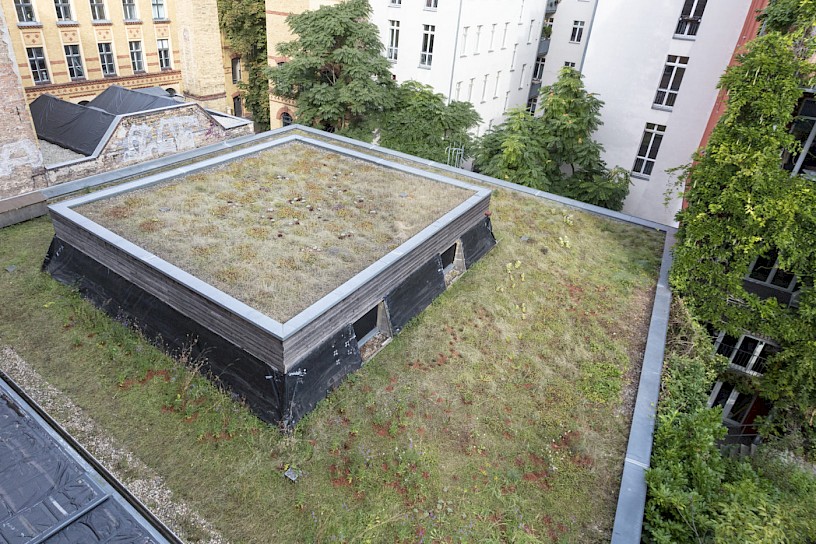
In December 2017, at the opening of Richard’s exhibition at the KW in Berlin, there was a long-line leading from the stairway to a window in the far side of the third floor gallery, facing the building’s back-yard, which is actually the main exhibition-hall roof. The space was empty, and its windows shut, sole for the window people were queuing towards; from it one could view the roof below, where Richard teamed up with Jonathan Hamnett, an experienced urban garden manager and local foraging specialist, to construct a garden full of wild flowers, succulents, and endangered local plants. Part institutional intervention, part attunement, the work seemed to ask the viewers to be attentive, to observe the urban flora growing from between the cracks in the pavement. Richard was acting more like a conservationist, than a gardener. The work, he noted, created “a space that is the result of accumulated interventions, which ultimately foreground a withdrawal from human presence and nurture” 9. The rooftop, the institution’s “Other”, it’s collateral space, here became the subject of observation and conservation of a rich canopy of life that thrives unbeknownst to its hosts. A partial inventory of species was listed—Sedum hakonense; Sempervivum arachnoideum; Sedum spathulifolium; Talinum calycinum; Galium verum; Euphorbia cyparissias; Aster linosyris; Scabiosa caucasica; Rudbeckia lgida; erbena bonariensis; Gaura lindheimeri; Sedum spurium; Sedum oriferum; Rhodiola pachyclados; Antennaria dioica 10.
The project culminated in a concert in collaboration with Jerusalem born Berlin-based composer and sound artist Maya Shenfeld (who also happens to be my wife). The composition—a pulsating, rhythmic minimal arrangement written for percussion, bass, clarinet and bass clarinet, trumpet and electric guitar, wrapped in resonant micro-tonal drones—built on the harmony of several 1970s pop tribute songs, such as Fourmyula’s single Nature (1969), Marvin Gaye’s 1970’s hit Mercy Mercy me (The Ecology), and Teach In’s Greenpeace (1979), to excavate the steadfast optimism of a bygone era. These were songs that “were born out of a spirit of protest and celebration and perceived as effective modes of collective mobilization”, and were distinguished by a belief “that complex environmental issues are perfectly communicable to the public through the pop song 11”. The concert was performed twice to a full house, the space awash with yellow light, and the piece’s five movements evolved into a retrograde image of the drones from the opening sequence. An inverted image motivated, perhaps, by a desire to resurrect the recent past. But also, a reminder that what is often experienced as novel, is rooted in a longer history, and so is the struggle against it 12.
In a way, resurrection is also the theme of Stop Shell (live rock version), 2019, the most recent of the sculpture series, shown for the first time in Richard’s Auckland exhibition Indifference at Michael Lett Gallery. The aquarium contains a piece of fossilized coral, and serves to demonstrate an attempt at reversing coral bleaching, with organisms gradually introduced into the coral’s environment with the hope that they inhabit the fossil, and revive it. Ocean acidification and rising temperatures have contributed to non-cyclic coral “bleaching”, a sort of white death of coral reefs that takes place as distressed corals expel their symbiotic zooxanthellae, the algae that lives in their tissues and provides them with energy through photosynthesis as well as their often vivid colors. “When coral bleaches”, writes Meehan Crist, “reef creatures flee or die in droves. In a matter of days, what was once a vibrant underwater ecosystem becomes a barren field of bone fingers reaching into an empty ocean 13”. The sculpture’s aquarium lid is doubled, and forms what is in effect a three dimensional print of a graph of rising ocean water temperatures.
Last’s summer’s freakish heatwave desiccated the wildflowers of the KW Garden, while the succulents survived. It was an inadvertent anti-monument of sorts, a harbinger of deserts-to-come. Meanwhile, recent reports indicate Germany is projected to fall well short of its targets for greenhouse gas reduction by 2020, with emission decreases in the energy sector likely to be offset by increased emissions from auto and construction industries 14. Ironically, the last time Germany saw a drop in emissions was following the fall of the wall, courtesy of the GDR’s collapsed economy. Outside, it’s raining again, thick clouds have formed, winter seems to have returned, or at least a milder version thereof, and people are back to complaining about the weather.
“The weary listener familiar with [the songs] themes may find the intensification of climate change disheartening” Shenfeld and Frater wrote in the text accompanying the concert. But I am reminded once again of Shulman’s quote, and of another, by Swiss-born novelist and poet Blaise Cendrars that opens his book: “Only a soul full of despair can ever attain serenity and, to be in despair, you must have loved a good deal and still love the world”15. As Richard’s work makes clear, with our world in such a dire state, there has to be plenty of room for a politicized melancholia of despair—for the desperate urgency of battling proverbial windmills, of resurrecting petrified corals—as well as plenty of need for hope.
Growing pains in the German Republic, 1997-2005
That which Fuels Your Lives, Crumbles to Ashes in Ours1
Growing up is all about rituals, rites of passage. The invisible thresholds between childhood and youth, youth and adulthood, are violent, consolidating identity and, in the processes, eradicating difference and indeterminacy. Any curious (as both strange, and inquisitive) malleability of character, of sex and play, is gradually negated. But these thresholds are also sites of performance, sweet and sweaty liminal states of testing, transgression, change, growth, trial, error. First loves, first fucks, first betrayals and breakups. It’s a time of great vulnerability, though one which is all about giving an impression of self-assurance. The world is a stage and nothing, it seems, can go wrong. But it can be painful, as violence, and error, and growth, and change are.
Alles, by Tobias Zielony, features previously unpublished photos taken from various series he produced between 1998 and 2005 in Leipzig, Chemnitz, Halle, Berlin, Neustadt/Orla, Frankfurt/Oder, Köln, Kassel, Essen and Wuppertal, cities on both sides of the East-West divide, all still basking in the afterglow of the recent spectacle of German reunification. The series was produced and exhibited—first as a slideshow, then as a series of amateur sized prints—as part of a re-examination of Zielony’s own archive prompted by the occasion of a solo exhibition in the aptly titled Haus der Jugend (house of youth), in his hometown of Wuppertal. The images thus provide a documentation of a threefold coming of age—of the youth documented, of the German republic, still freshly reunited, and lastly, of Tobias’ own searching processes, a young photographer finding his footing.
In the images, we see teens playing around, hanging out, flirting with each other and with the camera. There is a pervading sense of abandon and marginality—we see a bouquet of littered beer cans and empty bottles and fallen bicycles, beside a single proud motorbike, with no one around—but also the distinct awkwardness of lanky limbs not yet under the full command of their persons, of baggy pants slipping beneath non-existing waist lines. These teens seem to live among wastelands of plattenbau, the distinctly post-war German social housing of pre-fab concrete slabs, once desired for their reliability and central heating, then derided as peripheral, misanthropic, rapidly deteriorating urban relics of a different time. A Spiegel article from the year 2000, estimated that at the time, one million plattenbau apartments in the former East stood empty.2 In the photos, real existing socialism doesn’t exist anymore, neither as stifling reality nor as utopic beyond. Instead, there is the strange late capitalist mix of economic deprivation and wholesale abundance. Everywhere are brands, signs of the then still recent arrival of a global homogenous youth culture of commodified dissent. In one photo a hand points towards a generic image of New York’s iconic skyline, five windows in a skyscraper traced over with a ballpoint pen, the Twin Towers still looming large in the background. It’s the type of image that gained currency with the advent of cheap digital printing technologies in the nineties, reproduced globally as wallpaper or poster, an image which became the backdrop for a generation via dubbed sitcoms and cheap pizza chains.

Former East and West aren’t easy to discern in the photos for those who like me haven’t grown up in Germany, though it seems clear that Zielony isn’t seeking to reaffirm such demarcations but is rather interested in the everyday realities of the economically disenfranchised and socially marginalized, documenting the increasing inequality brought about by a combination of neoliberal and ordoliberal in Germany after 1989. Housing projects on both sides of the divide are depicted, as well as post- migrant youth within the reality of reunification. As we now know, this process has been central to the rise of extremist right wing groups particularly, though not exclusively, in the former East, where youthful rebellion increasingly finds its expression in the anti-establishment spirit of right wing populism combined with a new toxic breed of white supremacist identity politics. As historian Adam Tooze notes in his recent study of the German family, one of the most decisive differences between West and East Germany before the reunification concerned their respective child- care policies. It is estimated that before its collapse the GDR “had managed to socialise no less than 85 per cent of the total cost of child rearing; by comparison, in the early 1990s less than a quarter of the total costs of a child was covered by the West German state.” Strikingly, “exactly nine months after the fall of the Wall, in the summer of 1990, the number of live births in what was destined soon to become the former GDR began to plunge.”3 The social security provided by the East German state was upended, with socially insured employment declining by almost 20% in a period of seven years.4 And even now, on the eve of the 30th anniversary of the reunification, despite rising pensions and wages, the average income in the former East is still lower by around 15 percent.5 The result has been an unpreceded internal emigration wave during the first two decades of reunification, with 1.7 million Germans migrating from the former East to the former West between 1989 and 2006, accounting for nearly ten percent of the population of the former GDR, with virtually no migration from West to East during the same period.6 The restructuring of the German economy had its strongest effect on the former East, which was subject to some of the most extreme forms of ‘shock therapy’ in postcommunist Europe. But work relations on both sides of the divide worsened dramatically, with the “labour market in Western Germany turning between 1993–2010 from shrinking with increasing real wages, to growing employment, especially part-time employment, with falling real wages.”7 So called ‘Mini-jobs’ became prevalent, with partial employment typical, often just a few hours per day at hourly rates sanctioned by the infamous Hartz welfare reform, keeping underemployed workers registered as statistically ‘employed’. Germany’s percentage of low-wage workers is second in Europe only to Lithuania.8
These teens were thus born into this liminal state of seismic shock, of plummeting social services, changing work relations, increased insecurity and gender inequality, but also newly found abundance, civil liberties such as freedoms of assembly, organisation, and elections, and accesses to the global market, to trends and life-style. An ambivalent mix of democracy and capitalism which has since become paradigmatic.
Zielony photographs youth waiting, loitering, and has spoken of his interest in boredom,9 a state which escapes the imperative of an economy hinged on the constant monetization of attention.10 These are mini-job lives. The images often depict a combative masculinity: groups of young men gesturing towards the camera, a kid doing his best impersonation of gangster swag, armed with lollipop in place of a toothpick, puffer jacket and a (fake?) pistol. But the photos are not harsh, they give an impression of innocence, play, even tenderness, however evanescent, and a sense of care and attentiveness by the photographer towards his subjects: a girl fastening her friend’s top as they prepare to go out seems almost ceremonious; a young couple hugging, the boy shorter and wearing baggy jeans that appear to cement him to the ground, resting his head on her shoulder, a lit cigarette dangling from his hand, his eyes closed and trusting, as she stares knowingly into the camera.
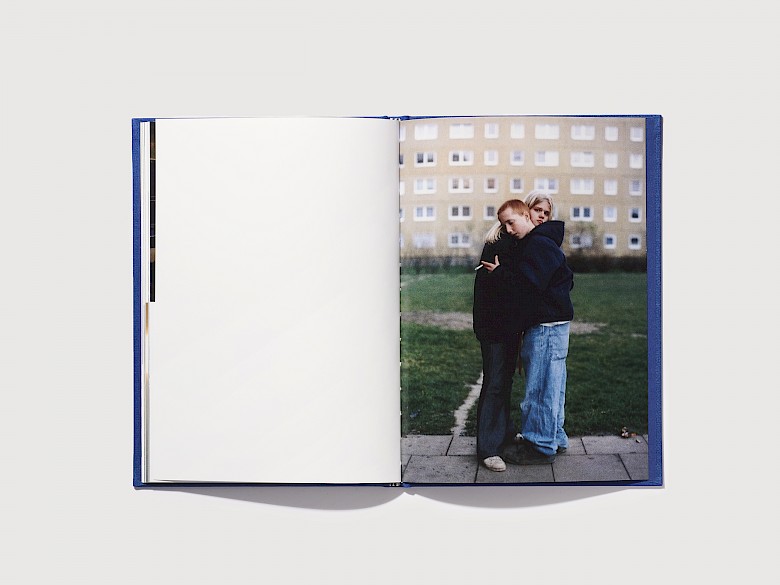
The first iPhone was released in 2007 and so the blue radiance of mobile phone screens, a fixture of present day teenagehood, is conspicuously absent from all the photos but one, a signal perhaps, of things to come. In a way, it’s hard to imagine these images could have been produced today. Some of the protagonist pose for the photographer, others act oblivious, but the constant and ongoing self- imaging characteristic of our current age, the meticulous choreography and self-entrepreneurship spread by so called ‘social networks’, is not yet evident, nor is the typical current image of youth swiping their phones, waiting, bored. The coming of age here is technological too, with the shift in how teen perform, and to whom, here echoed by Zielony’s decision to show the archive either as slideshow or as small prints, both functioning in a sense as antecedents for image-sharing technologies. ‘Youth’ has since become less of a theater, and more of a factory of images, rather than performed, it is captured and dissected, boredom too now monetized as those teens are mapped and mined as the most lucrative of target audiences.
Link to book
Excerpt
The Labor of Resistance / "Let's have another War"
“Let's have another war” exclaims the black and white acrylic painting in front of me, its lower part depicts a militant, crouching, an Ak-47 resting on his lap, a second figure leaning on his shoulder, and a third figure, whose face and body are all but cut out of the frame, reaching in with an outstretched hand. The figures join to form a human chain, a single unit, bracing themselves together against the future to come. Above them, occupying the upper third of the canvas, are three nearly identical images of a flower pot resting on top of a kitchen chair. The images are separated by the marking of a contact sheet, proof of their photographic origin. In between these two trios—of figures and flower pots—the text: LET’S ⠂ HAVE ⠂ANOTHER ⠂ WAR, all caps each word punctuated by a black dot, separated, for emphasis.
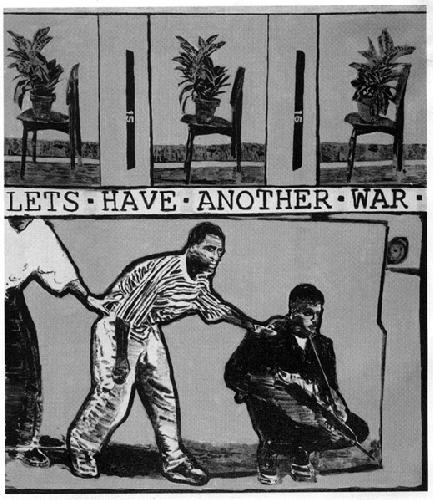
Outside war is raging. Well...outside, several kilometers away, in the Gaza strip and its surroundings, war is raging. Tel Aviv, in the center of which David Reeb is currently exhibiting a retrospective, is doing its best at being “Tel-Aviv,” a feeble impersonation of a city with no country, no context, an oasis of myopic liberalism. This time around, its infamous bubble almost burst under the load of several dozen of Hamas's brand new M-75 rockets, and so the fragile bubble was hastily replaced by an Iron Dome. For weeks Israeli fighter jets and artillery pound Gaza in what seems to be the deadliest, most horrific, round to date: at the moment of my writing the death toll on the Palestinian side has already topped 2000, two thirds of which are likely non combatants—women, children, innocent bystanders, with over ten thousand wounded and roughly half a million people who lost their homes. On the Israeli side, sixty eight people were killed, amongst them four civilians, and several hundred wounded.
I visited the exhibition en route to another anti-war demonstration; negotiations were underway and a ceasefire agreement seemed imminent. This is Reeb’s third large scale solo exhibition in Tel Aviv Museum. In 1983, during the first one, he covered parts of walls of the Helena Rubinstein pavilion in a pattern of blue, white, green, black and red—the colors of both the Israeli and Palestinian flags. At the time the PLO was still considered an illegal terrorist organization by the Israeli government (much as Hamas is termed today), public display of the Palestinian flag was an offense. The exhibition caused an outrage. The current show, though, was received with indifference by the mainstream public, an indication of the increasing marginalization of critical voices, rather than a result of a healthy open discourse. Nowadays, such critical gestures are most likely shrugged off—“Another left wing artist? who cares?” Reeb is persistent, and though a highly regarded artist in Israel, he has had few solo exhibitions abroad. Israel is his scene and Israelis his target audience. Everything in his work seems to revolve around this persistence. He relies on a limited repertoire of painterly gestures: often painting from photographs, using acrylic paint either in black and white or directly out of the tube, in a restricted, rather artificial, palate—he seems to rarely mix colors. At times, his paintings are poster-like, juxtaposing text with schematic figures and outlines. Others are photorealistic: mundane scenes from Tel Aviv, mundane scenes from the occupied territories. It all looks so similar. Is this the first Intifada, or the second? An image out of operation cast lead, pillar of cloud, or is the paint as fresh as the blood spilled, a premonition of our current so called pillar of defense (these pillars, like cadences inscribed by the IDF’s PR unit, are spat out with a dizzying regularity). Reeb's restrained aesthetic—these constant repetitions, recurring motifs, déjà vu's—are all clearly his response to the dreary everyday reality of an ongoing occupation, and the sisyphic labor of resistance. One of the clearest, most heart-wrenching, expression of this predicament is his own private archive of videos, documenting the weekly protest against the separation wall in the villages of Bil'in, Ni'lin and Nabi Salih. Reeb has attended and documented these protest nearly every Friday for over half a decade. A small selection of these videos, all available on his Youtube channel, are shown in the exhibition. For long stretches of time little seems to happen: Palestinian villagers march towards the wall chanting, the youth, the shabab, run ahead and occasionally hurl stones at the distant military outpost or pillbox, until a shower of teargas disperses the crowd, sending the protesters running back to the village. Occasionally the camera captures a moment of drama, or tragedy, such as the killing of Bassem Abu-Rahmeh who was hit by a tear gas canister meters away from where Reeb and his camera were standing, but mostly it's just the arduous grind of life under ongoing occupation and the daily protest against it. Many frames from these videos later serve as sources for his paintings.
Calling the exhibition ‘timely’ might sound cynical; Reeb's ongoing critique, his persistent protest, is bound to its subject matter in a bleak sort of irony—is the work's relevance a sign of its political failure? I'm sure Reeb would rejoice if his paintings, his practice of over thirty years, became unfamiliar, anachronistic or irrelevant, artifacts to be hung in museums. But they aren't. Sadly, the irony of his call “let's have another war” is lost on most of his viewers, the Israeli public is more gung-ho than ever, pessimistic, suspicious. The demonstration that night brought out some seven thousand dedicated souls, a minuscule number compared to the recent social protests in Tel-Aviv, or the peace protest of the 1980s when Reeb started his career. The negotiations failed that night, and failed again and again later, another round of war and killing started. Ironic, perhaps, “But to the barbarians(...) irony is simply like salt: you crunch it between your teeth and enjoy a momentary savour; when the savour is gone, the brute facts are still there.”1
Boaz Levin
Berlin. August, 2014
Ed. RCPP (Boaz Levin and Vera Tollmann)
Contributions by Tom McCarthy, Kodwo Eshun, Goldin+Senneby, Brian Holmes, Nick Houde, Jonathan Jung, Laura Katzauer, Boaz Levin, Mikk Madisson, Doreen Mende, Sondra Perry, Oleksiy Radynski, Robert Rapoport, Hito Steyerl, thricedotted, Vera Tollmann, Miloš Trakilović
The proxy, a decoy or surrogate, is today often used to designate a computer server acting as an intermediary for requests from clients. Originating in the Latin procurator, an agent representing others in a court of law, proxies are now emblematic of a post-democratic political age, one increasingly populated by bot militias, puppet states, and communication relays. Thus, the proxy works as a dialectical figure that is woven into the fabric of networks, where action and stance seem to be masked, calculated and remote-controlled.
This publication looks at proxy-politics on both a micro and a macro level, exploring proxies as objects, as well as networks as objects. What is the relation between the molecular and the planetary? How to fathom the computational regime? Yet, whilst being a manifestation of the networked age, thinking like a proxy offers loopholes and strategies for survival within it.
The Research Center for Proxy Politics (RCPP) explores and reflects upon the nature of medial networks and their actors. Between September 2014 and August 2017, the center hosted workshops, lectures and events at the Universität der Künste, Berlin, under the auspices of Hito Steyerl’s Lensbased class. RCPP is run by Boaz Levin and Vera Tollmann.
Former West Proxies
By RCPP (Boaz Levin and Vera Tollmann)
Former West Proxies
Link to book
By Vera Tollmann and Boaz Levin
By Vera Tollmann and Boaz Levin
Without our noticing, cell phones have become Janus-faced machines. For an 11-year-old school kid today, the optics of the front-facing camera are just as important as those of the back camera when deciding what new phone to buy. Producing self-images, the new social currency, is key. Selfies have also become keys in a more literal sense: besides processing text and voice and monitoring movement, Apple’s latest phone, for one, has a three-dimensional face-scan feature, which claims to collect more than 30,000 data points to produce a “true” digital copy of a user’s face. Previously, security systems based on two-dimensional facial recognition software, piloted by companies like Lenovo and more recently Samsung, could be easily fooled by static images of the owner’s face1. Yet with every new iteration of such technology, digital copies of our faces are gaining volume, depth, and higher definition. The explicit aim is the creation of immediate security, and with it, trust: no more passwords, no more middlemen or secret patterns, just tailored and “smart” access to your device at the blink of an eye, on your iPhone. The idealized vision behind biometric identification is a security system that could “recognize each authorized individual directly without the use of proxies such as keys, identification cards and passwords. Such proxies merely verify that the person requesting access has the needed device or password in their possession and does not guarantee that he or she is actually the authorized person 2.”
To distract from the various potential surveillance functions of facial identification—a follow-up to touch-based identification—Apple added an “Animoji” feature that uses the face-scanning features of the iPhone X to create custom three-dimensional emojis based on the user’s facial expressions. In the process, the phone captures and saves a mathematical model of the face, a proxy double.3 Considering that the individually animated emoji—the user—is a source for a dataset sample, the phone is no longer just a device with cameras on two sides, but a two-faced port of entry and exit, a Janus head.
A more extreme example of a so-called consumer convenience product is Eyecloud, a project by the United Nations High Commissioner for Refugees (UNHCR), Cairo Amman Bank, and biometric technology company IrisGuard. The project was announced in January 2016, with the stated aim of providing refugees with financial assistance through “iris-enabled service.” As part of the program, a biometric security system that scanned users’ eyes was installed in over 50 of Cairo Amman Bank’s ATMs in Jordan, particularly in areas populated by Syrian refugees. The project promised to expedite the identification process for refugees receiving financial aid, eliminating long waiting periods and the necessity of queuing outside aid agencies, “while lowering overhead costs and boosting accountability.”4 The Eyecloud system thus makes use of bio-data gathered during registration with the UNHCR, allowing Cairo Amman Bank’s ATMs to access the organization’s registration database and verify the refugee’s credentials, without the bank having to re-verify identities in the process of distributing aid.5 According to IrisGuard, over 1.6 million Syrian refugees in the region have been biometrically registered and can thus gain access to the system.6 This form of identification clearly has its share of benefits, and has been said to allow for a greater individualization of aid distribution, but it also raises fundamental questions about how biometric identification is redefining borders and subjects.7
Despite the perceived benefits of individualized biometric recognition, identification itself can often be deadly. For refugees, getting the basic information upon which to premise their identification can be risky or impossible—obtaining papers in their countries of origin, from which they are fleeing, is often out of the question. Others lose their papers or are robbed during their long journeys, and some choose to destroy them, for fear that, if identified by the European security system, they would be sent back or be forced to remain in the European country they first arrived at, in accordance with the Dublin regulations.8 As Frances Stonor Saunders has written, “in Algeria, [refugees who destroy their documents] are called harraga, Arabic for ‘those who burn.’ And they don’t only burn their documents: many burn their fingertips on hobs or with lighters or acid, or mutilate them with razors, to avoid biometric registration, capture and the prospect of expulsion.”9 This presents a twist on the Latin etymological origins of the “digital” in digitus, finger. The fingerprint, first used for identification in the nineteenth century, long predates the technology at the basis of iris recognition, which was introduced in 1994, and cannot be performed without a computer. Eyes are more accurate than fingers as markers of identification. Their mutilation is also deadlier and so is deemed less likely.
This process of biometric identification exemplifies the rise of what political theorist Louise Amoore calls “biometric borders.” These are interfaces between biometric technologies and the databases storing the information they collect, wherein “the body itself is inscribed with, and demarcates, a continual crossing of multiple encoded borders.”10 Borders, in other words, become mobile and differential, with the solid wall often—though certainly not always—replaced by an intricate logistical apparatus. A series of sensors, moving agents, protocols, and data centers are “deployed to divide bodies at international boundaries, airports, railway stations, on subways or city streets, in the office or the neighbourhood.”11 Borders are enforced differently depending community, which are ranked on a scale of “risk levels.” Amoore writes, “identity is assumed to be anchored as a source of prediction and prevention.”12
Over the past two years a plethora of pilot biometric projects run by UN programs and NGOs, in collaboration with start-up companies in cities like London and New York, have been tested on refugees. As Hannah Arendt forcefully claimed, refugees, as stateless persons, are the most vulnerable of all, stripped of their human rights—rights that are revealed to be contingent upon citizenship.13 Needless to say, such populations have no recourse to consumer protection frameworks, nor are they in a position to review the “terms and conditions” of aid distribution programs. In May 2017, the UN World Food Program (WFP) announced a new blockchain-based initiative taking these capabilities one step further, into the sphere of decentralized identity-based security technologies.14 This provides a further testing ground for experimental, decentralized authentication and payment systems.
Face value
Money has long been connected to faces. Typically, the likeness of a sovereign or a deity has been stamped upon it—Julius Caesar, Mao Zedong, or Benjamin Franklin. As anthropologist Keith Hart has noted, the two sides of each coin signify different types of concrete power:
On one side is “heads”—the symbol of the political authority which minted the coin; on the other side is “tails”—the precise specification of the amount the coin is worth as payment in exchange. One side reminds us that states underwrite currencies and the money is originally a relation between persons in society, a token perhaps. The other reveals the coin as a thing, capable of entering into definite relations with other things.15
As individual faces rise in data value, will the historical portraits of sovereigns stamped on the head of the coin—the side representing state power—be rendered obsolete? Biometrics start-ups, such as the New York-based HYPR, which professes to combine “the convenience of biometrics with the blockchain to enable truly decentralized authentication,” are attempting to enable secure transactions through forms of biometric identification in which a central, state-like authority is all but superfluous.16 And yet it’s easy to imagine such technologies being implemented for payment systems, reliant upon decentralized blockchain-based authentication, but working at the service of centralized banks. State authority may well remain, hidden behind a decentralized security system, while the portrait of the sovereign is pawned for the user’s biometric features.
In countries such as Sweden, China, and India, payments are increasingly processed via apps connected to bank accounts—not yet using biometric verification but supposedly safe mobile bank identification based on initial verification of documents. These systems keep the transfers within the respective country (meaning within a trusted payment infrastructure and a single currency). In this sense, these apps operate more like online banking than blockchain-based apps like HYPR. App use in these regions has become common for different reasons. In China, the transition from cash to mobile payment is mostly a reaction to widespread fraud; people trust apps (WeChat wallet, Alipay, Swish) more than they trust a 100-RMB note featuring a young Mao Zedong, because these notes are often counterfeit.17 Convenience also plays a part, since the phone is always in one’s pocket, and with mobile payments no pin code or signature is needed for identification. The only risk is running out of battery. In India, on the other hand, the move to app-based payments was encouraged aggressively from above, as the government announced on short notice that 500 and 1,000-rupee notes would no longer be legal tender. This decree removed 86 percent of currency from circulation, created a cash shortage, and forced citizens to quickly adopt other transaction methods. The stated goal was to combat counterfeit cash and unaccounted-for money while nudging a cash-dominated society in a digital direction.18 In Sweden, mobile payment systems are mostly related to a desire for convenience and an early-adopter mindset, which made way for widespread cashless payments. These varied reasons suggest that a further spread of app-based payments is imminent. But with all mobile payment systems comes the question of authentication and security—driving advancements in biometrics.
Technologies that collect and record biometric data afford decentralization and, because they are encrypted, a certain notion of anonymity, but they also inscribe a token value upon identity. Faces become keys, bodies morph and stretch, and one’s digital identity and physical body become closely entangled. During these processes, authority—decentralized or not—seems to be rendered increasingly opaque, supervising the information technology from a remote spot and intervening in case of system alerts. In a recent lecture, science historian Lorraine Daston asked whether the value of transparency has mutated before our eyes.19 Whereas transparency used to be a demand put forth by enlightened citizens to their governments, today it is secretive governments, powered by new technologies, that demand transparency—biometric legibility—of their citizens. Citizens are turned into accomplices in their own surveillance.
The perfect proxy
This demand for transparency—to unmask oneself, to show one’s face to the camera—triggers a necessity for subjects to invent imperfect or non-literal proxies. UN organizations and tech companies attempt to develop perfectly accurate proxies, where you—your body, eye, voice, or heartbeat—are exactly copied, their goal being to create proxies that are less and less exchangeable, forgeable, or losable. According to biotech entrepreneur Andre D’Souza:
What we’re hoping is that it means the end of things like passwords and pin numbers. But it could even replace things like car keys, house keys, credit cards, and boarding passes. These are all different proxies for identity. We think that a wearable device that’s paired with your biometric can be a much easier, more secure form of user identification.20
Users are currently urged to develop several passwords to access different digital services in the interest of privacy. But how can one multiply a face, once it has become a password or a token for access, be it access to information, money, or a nation-state?
The Roman god Janus presided over everything liminal: entrance and exit, new (and old) year, the beginnings and endings of conflict, doorways, metamorphoses. He was the god of ambivalence and ambiguity, porter to the heavens. Uniquely, Janus lacks a Greek counterpart. This, he explains to Caesar Germanicus, is because the Greeks referred to him as Chaos—his confusing doubled figure reflects his ancient origins in pandemonium.21 This god of borders was bereft of weapons; his only arms, he said, were his set of keys. Today, Janus might be the god of doubles and relays, a deity presiding over proxies, embodying their ambivalent relation to power and subversion, chaos and order.
Following Gilles Deleuze, perhaps subjects will one day manage “to escape the face, to dismantle the face and facializations, to become imperceptible, to become clandestine […] by strange true becomings that get past the wall and get out of the black holes, that make faciality traits themselves finally elude the organization of the face—freckles dashing toward the horizon, hair carried off by the wind.22 If this is indeed the case, people would need to learn to see with the “eyes” of the computer, to see faces not as faces but rather as keys. Wearing a “bunker-face”—a bored and empty face, inhuman, with “inanimate white surfaces” and “black holes”—might mark the beginning of a process of de-facializing.23
Despite the hopes of governments and companies, there is no such thing as an absolutely secure form of identification by means of technology. Biometric identification will always be a proxy. As David Lyon writes: “it works with a contested definition of ‘body,’ one in which body and information may be conceived as separate entities and where abstracted data act as proxy for other kinds of (inadmissible) definition such as the stories that people […] tell.”24 With biometrics, abstracted data is taken as an indisputable key, as a one-to-one representation, identical with the person it represents. Perhaps the first step in upending this relation would be to recognize the limits of biometric technologies as abstractions: to face these faces as the proxies they are.
This essay was written for the transmediale journal – face value edition. You can buy a print copy of the journal here.
The first Biennale für aktuelle Fotografie (9 September – 5 November 2017) bids farewell to photography as we know it. Farewell Photography illuminates the radical changes in our dealings with images in the digital era and presents an alternative vision of the history of photography. Since its invention, photography has been a medium of social exchange. With digitization not only has the number of photographic images exploded but their capacity to be reproduced and distributed has multiplied.
Sharing is the photographic usage of the moment. The individual, isolated image has had its day; instead, photographs appear as part of chains of communication and relationship networks. On social media and in messenger services a photo often says more than a thousand words, or 140 characters — it calls for a response, it gets liked, hated, and re-shared.
As memes, images spread across the Internet like a virus, are modified by users, and released back into orbit. Their natural state is one of circulation. Every photo on Facebook or Instagram is organized in an online biography and linked with a hashtag to a host of other images.
Featuring the work of almost 100 artists and photographers including: F & D Cartier, Jochen Lempert, Wolfgang Tillmans, Rosa Barba, Dirk Braeckman, Barbara Kasten, Oscar Muñoz, Ed Ruscha, Hans-Peter Feldmann, John Smith, Willem de Rooij, Harun Farocki, Candida Höfer, Arwed Messmer, and Armin Linke.
This biennial is created by a team of six curators and is comprised of eight themed exhibitions at Wilhelm-Hack-Museum I & II (Ludwigshafen am Rhein); Port 25 (Mannheim); Sammlung Prinzhorn (Heidelberg); Heidelberger Kunstverein; Kunstverein Ludwigshafen; ZEPHYR (Mannheim); and Kunsthalle Mannheim.
Purchase through Cornerhouse publications
By Vera Tollmann and Boaz Levin
Protests in public space have become an expensive affair in Spain. Since July 2015, protesters are under threat of hefty fines, an authoritarian reaction to earlier anti-austerity protests. Under the Citizen Safety Law – otherwise known as ‘the gag law’ – which was passed by the governing People’s Party, protesters are liable to fines up to €600,000 for marching in front of Congress, blocking a road or occupying a square. The law is the most recent attempt by the government to curb a wave of popular protests that has swept the country since 2011. At that time, protests around the world saw citizens trying to reclaim their right to public space. Though numerous commentators pointed out the role played by new technologies such as social networks and smartphones in facilitating the protests, it was the city square, as old as political thought, which was the true common denominator. According to Hannah Arendt, the word polis doesn’t just describe the physical location of the Greek city-state; it also denotes the public realm of a political community. It is ‘the organization of the people as it arises out of acting and speaking together.’1 Thus it’s fitting that when the People’s Party of Spain passed its draconian law, demonstrators were quick to seek an alternative to presence in physical space. Their solution was a hologram protest, the first ever – as media outlets were quick to point out – skilfully choreographed and artfully projected in front of the gates of Congress in Madrid.
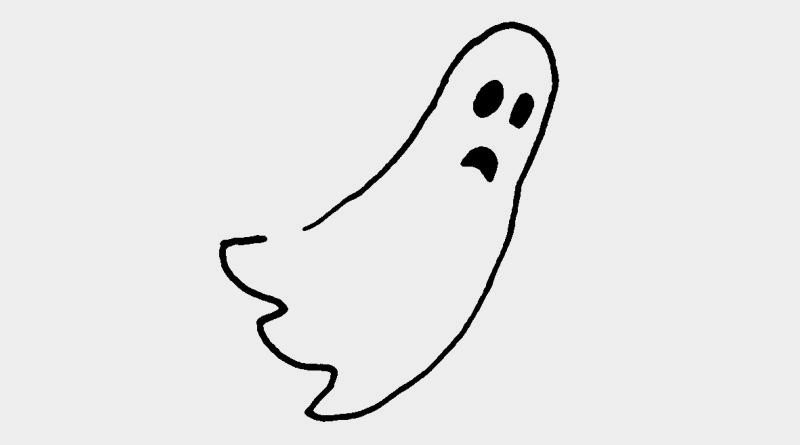
Cristina Flesher Fominaya, a spokesperson for the activist group that organized the protest, explained how it came together: Messages and voice recordings were crowd-sourced online and synced with holographic images filmed in a nearby city. The resulting image was meticulously reworked to match the scene in front of Congress and set to play on a loop.2 By representing people in a cool blueish tone reminiscent of surveillance camera footage, the organizers seemed to allude to the popular depiction of a dystopian totalitarian state. Specters – for once quite literally – haunted the sterile streets, voicing the grievances of those barred from assembling there. Instead of inhabiting public space, the demonstrators inhabited a new medium. This was a proxy protest fit for the age of proxy politics.
The word proxy derives from the Latin procurator, meaning someone responsible for representing someone else in a court of law. These days, the word is often used to designate a computer server acting as an intermediary for requests from clients. These servers afford indirect connections to a network, thus providing users with anonymity. However, proxy servers can also be set up for the opposite task: to monitor traffic. Proxy politics – defined by artist, writer and RCPP (Research Center for Proxy Politics) member Hito Steyerl as the ‘politics of the stand-in and the decoy’3 – is characterized by fraudulent contracts, chimerical sovereignties and void authorities. The concept of the proxy is emblematic of our post-representational, post-democratic political age – one increasingly populated by bot militias, puppet states, ghostwriters and communication relays. Disembodiment, invisible politics and the increasing subordination of politics to economic interests have become the norm. Still, proxy politics can be understood as both a symptom of crisis in representational politics as well as a counter-strategy aiming to critically engage the existing mechanisms of security and control.
Double Governance
In his book Post-Democracy, Colin Crouch argues that, within the current political conditions, power is increasingly relinquished to business lobbies and non-governmental organizations. As a result, ‘there is little hope for an agenda of strong egalitarian policies for the redistribution of power and wealth, or for the restraint of powerful interests.’4 As a corollary to the rise of neoliberalism, the vision of an autonomous, potent, political subject is devastated by the growing power of privileged elites standing at the nexus of transnational corporations, extra-juridical zones, infrastructural authorities, non-governmental organizations and covert rule. Similarly, for Jacques Rancière, post-democracy refers to ‘the paradox that, in the name of democracy, emphasizes the consensual practice of effacing the forms of democratic action. Postdemocracy is […] a democracy that has eliminated the appearance, miscount and dispute of the people and is thereby reducible to the sole interplay of state mechanisms and combinations of social energies and interests.’5 At the heart of this condition lies an ontology of deception, wherein the public realm becomes a series of smoke screens, false flags and simulations – primarily through the proliferation of media and endless opinion polls.
Political theorist Michael J. Glennon has recently introduced the notion of a ‘double government’ to describe the current political reality in the USA, where political power is split between elected government officials and a network of institutions constituting a ‘disguised republic’.6 This phenomenon can be traced back to World War II and President Truman’s signing of the National Security Act of 1947, which established, among other things, the Central Intelligence Agency. Since then, the United States has moved toward a ‘double government’, wherein even the president ‘exercises little substantive control over the overall direction of USA national security policy.’7 Similarly, in Turkey, Egypt, Yemen and Syria, political commentators have used the notion of the ‘deep state’ to describe the nexus of police, intelligence services, politicians and organized crime allegedly responsible for the exertion of violence and covert rule. Surely secrecy is as old as politics itself, but its recent resurgence under the guise of democratic rule reveals that the secrets of governance, Arcana Imperii, are anything but arcane. Today’s governments thrive on secrecy.
The age of proxy politics is thus one in which power is displaced: whether by way of covert institutions, vetted bills and classified budgets, organized crimes and grey markets or, no less disturbingly, through gross privatization and the rise of transnational corporations. Already in 1971, with her Lying in Politics, written in response to the revelation of the Pentagon Papers, Arendt lamented the dawning of an age in which image-making – i.e., elaborate thought manipulation, self-deception and slick advertising methods – had become the core values of American global policy.8 When image-makers govern, the institutions of representational democracy are destined to become a mere semblance. A recent example came in May 2015 as the House of Representatives voted to end bulk surveillance by the NSA. However, the vote did not actually end bulk surveillance: ‘While [the vote took] the government out of the collection business, it would not deny its access to the information. It would be in the hands of the private sector – almost certainly telecommunications companies like AT&T, Verizon and Sprint.’9 In other words, even after seemingly successful governmental reform, it was revealed that the corridors of power lay elsewhere, between politics and the private sector.10
Opacity for Everyone
How might proxy politics be more than just a condition, more than the name of a political regime that thrives on obscurity, opacity and decoys? How might it also designate a corresponding mode of resistance? Ideally, proxy politics would encompass myriad modes of withdrawal – both technical and metaphorical. Its tools could be a VPN, a holographic surrogate, a stock image or a double. Its outcome is always concealment, evasion, subterfuge. In a way, proxy politics is an answer to the ‘terror of total Dasein’ (Steyerl), whereby the increasing monetization of presence is responded to with absence by way of decoys or placeholders.11 The hope is that strategies such as these might be effective now, a time in which the difference between real virtuality and virtual reality, the tangible and the digital, is increasingly difficult to discern. At the same time, it is becoming increasingly evident how severely controlled both spheres are – the World Wide Web by way of its architecture and protocols and public space via increasing privatization.
Within such a condition, there is a rise in the politicization of themes related to absence and presence, such as invisibility, opacity and anonymity, which are gradually replacing the politicization of time or space. As Alexander Galloway has observed, ‘We are witnessing […] new struggles around prevention, the therapeutics of the body, piracy and contagion, informatic capture and the making-present of data (via data mining).’12 According to Galloway, recent protest movements’ refusal to make clear demands is a form of ‘black boxing’, a conscious withdrawal from political representation and collective bargaining. The choice is for ‘relations, relays and links’13 – in the words of Édouard Glissant – all qualities associated with the proxy. This politicization upholds the ‘right to opacity’,14 rather than reverting to the age-old demand for transparency. For Glissant, opacity is ‘the force that drives every community: the thing that would bring us together forever and make us permanently distinctive.’15 Opacity enables otherness.
Judith Butler has suggested that protest in public space has ‘become politically potent only when and if we have a visual and
audible version of the scene communicated in live time, so that the media does not merely report the scene, but is part of the scene and the action; indeed, the media is the scene or the space in its extended and replicable visual and audible dimensions.’16
Image-making has become imperative for protesters and governments alike, an essential part of contemporary politics. Recently, in Paris – where the state of emergency declared in the wake of recent terror attacks prevented climate change activists from assembling in public spaces during the climate summit – protesters installed over 10.000 pairs of shoes at Place de la République, theatrically standing in place of absent bodies. Images of the square circulated widely in the media, emphasizing the inherent mediatization of contemporary protest and the need for affective images – not necessarily real bodies. Holograms and shoes function as placeholders, making it possible for images of absent bodies to communicate widespread sentiment.
The Body of the Web
In recent years, there has been a growing interest in the reterritorialization of the Internet. The artist Trevor Paglen and theoreticians such as Tung-Hui Hu and Keller Easterling have drawn attention to the materiality of the internet: data centers, undersea cables and routers, which in turn rely on hydroelectric power stations and dams for electricity as well as railway tracks and telegraph lines for communication routes. The web, until recently associated with immateriality, virtually and spacelessness – as exemplified by the popularity of the term ‘cyberspace’ – clearly has a body: a sprawling physical infrastructure and ever-growing ecological footprint. The benign sounding ‘cloud’ is no less than a publicity ploy for a vast campaign to centralize digital data and turn software and hardware into a black box. As our computers have become thinner, the weight of the cloud has only grown greater.
The body politic is now intertwined with the body of the web. And the web, though worldwide, is constrained by national policies and geographical realities. In October 2015, citizens in Thailand protested against their military government’s plan to channel Internet traffic to international servers through a single network gateway, with the intention of perfecting state surveillance and censorship. This political move was dubbed ‘The Great Firewall of Thailand’. As in Madrid, the choice of protest space corresponded with the space the new law was tailored for. The military government’s websites were targeted and downed for several hours by Denial of Service attacks. The online action was reported beyond activist platforms in international media; however, it lacked images that could represent the bodies of those who would literally be barred from leaving Thailand – were the government to follow through on its plans for greater surveillance and censorship. In the meantime, the hacker collective Anonymous declared cyberwar on the Thai government. #OpSingleGateway targeted Thai police servers in an effort to demonstrate the actual vulnerability of virtual state institutions.
Proud to Relay Flesh
How can one possibly grasp the current relation between the digital and its outside? Back when the Internet was still thought of as synonymous with cyberspace, both were clearly defined as separate, unreal. ‘Cyberspace, as a virtual non-place,’ writes Wendy Chun, ‘made the Internet so much more than a network of networks: it became a place in which things happened, in which users’ actions separated from their bodies and in which local standards became impossible to determine. It thus freed users from their locations.’17 In the 1990s, the Internet was imagined to be a perfect frontier, a sci-fi dream come true, where users could navigate as powerful agents, invisible and free of physical constraints. Yet as Chun has demonstrated, the World Wide Web was designed as a technology of control from the start, geographically rooted and constantly monitoring its users via protocols such as TCP/IP.
In what way does virtuality challenge our conception of public space and the mobilization of human bodies? As we’ve seen, the digital and the real coalesce in ever new forms and devices and – despite the gaming industry’s recent success in bringing early visions of VR to technical perfection – prior myths of virtual reality are slowly but surely eroding. The old demarcations between the human body in physical space and the so-called immateriality of the digital sphere are being superseded. Attempts to conceptualize the effects of this synthetic, face-to-screen situation either warn that this is the downfall of the sovereign subject, or they extricate emancipatory potential from the entanglement of humans and technology. How then might a proxy give way to different bodily modes and morphologies – a body both present and absent?
Whereas Donna Haraway and Rosi Braidotti have attempted to destabilize the subject as it was conceived during the 20th century, exploring notions such as the cyborg and conceptualizing a feminist posthumanism, the proxy might antagonistically re-stabilize a very concrete subject in a synthetic situation. Is a proxy a techno-body? Does it have flesh after all? Might it serve as the abject ‘other’ of the high-tech, clean and efficient bodies endorsed by contemporary culture – as Haraway envisioned? Or rather as a nomadic device that enables people to become posthuman subjects – to follow Braidotti’s thinking? Braidotti warns of a fatal nostalgia for either a humanist past or the Cold War cyborg and instead proposes that we embrace vulnerability – that we take pride in being flesh. Her posthuman theory aims at shaping and shifting new subjectivities against modern humanism, a school of thought she criticizes for its white male supremacy, eurocentric normativity, imperial past and inhuman consequences.
Proxies lack a human silhouette, face, or fixed physiognomy and can be associated with numerous individuals, wherever they are. Unlike the avatar, a creatively designed pawn in a networked gaming environment, proxies assume either a transformative form, or none at all. Proxies are counter-figures to capitalist self-improvement, a Glissantian opaque ‘other’ to confront the Western gaze. Proxies provide an escape route from a schizophrenic situation that denies or limits bodies to being mere vessels of biotechnological information. Proxies offer a path toward a new, if fleeting, relation as sovereign bodies.
Between September 2014 and August 2017, the RESEARCH CENTER FOR PROXY POLITICS (RCPP) will host a series of workshops at the Universität der Künste, Berlin, revolving around the politics of digital networks, the political economy of crypto-currencies, the genealogy of networked thought, the mediality of physical landscapes and strategies of opacity.
This text has been written by Boaz Levin and Vera Tollmann for the Research Center for Proxy Politics (RCPP). It has benefitted from conversations with our colleagues at the RCPP, Hito Steyerl and Maximilian Schmoetzer, as well as numerous guests at the center. We would like to thanks Zach Blas, Wendy Chun, Paul Feigelfeld, Oleksiy Radynski and Tiziana Terranova.
Essay by Vera Tollmann and Boaz Levin (RCPP)
On 23 June 2016, Britain will vote on whether to stay or leave the European Union. Many professionals have voiced concern for the possible depreciation of the pound sterling and for the probability that international banks will leave London yet without knowing where they will base their financial trade instead. Others warn that ‘the City’ will never be the same again (will it ever be?) and foresee only further liberalisation of the market once freed from the constraints of EU regulations. Either way, both speculations seem more concerned with the well-being of big business than that of human welfare. These questions for the City of London Corporation loom large; although it may be said that the interests of ‘the City’ are constantly debated and negotiated, they still remain within one conceivable framework – London. But what is this mysterious entity? A vestige of a long-gone imperial past? A symbolic relic preserved through custom? Or a bleeding edge world-city contrived for the global financial elite? As we shall see, there is more to the City than meets the eye.

The old sages used to say of Jerusalem that it is plural, doubled: a city above – divine, boundless, eternal almost – and a city below – earthly, profane and bound by matter, bricks and mortar. London too is doubled, displaced, present and absent at the same time. It has multiple maps.
Seriously, take New Bond Street, which runs perpendicular to Oxford Street, traverse it from north to south. On your right, number 98 stands as a three-storyed town house, white, simple, unassuming, currently home to luxury fashion brand Philipp Plein.1 Now, open your map of the other London – the one which hovers above and beyond – you will see that from this town house you are in fact in Barbados. This particular property was purchased in 2010 for £4,960,000 by New Bond Properties Ltd, a company registered in an independent nation state within the British commonwealth.2 Let’s continue our journey: walk down New Bond Street, to your left, number 72, another three-story high building, built in stone this time; it is the home of luxury brand Sarah Pacini. In London below this is a solid structure, draped by vine, rooted in the ground, above it is all liquidity, an asset temporarily stowed at 44 Esplanade St Helier, on the Island of Jersey, by GHS Limited. Across the street are the auction houses, Christie’s and Bonhams, but these buildings too are only partially present, their spirit and lifeblood lies elsewhere, stashed in the British Virgin Islands or the Isle of Man.
Profits are nomadic, expenses tend to be sedentary. Corporations transfer profits by setting the price for goods and services sold between controlled (or related) legal entities within a single enterprise. In this way funds are funnelled to offshore subsidiaries in low-to-no tax jurisdictions3 – an arrangement known until recently as a ‘Double Irish’,4 often combined with a ‘Dutch sandwich’5 – while tax-deductible expenses are conveniently conserved onshore. The corporations that use these principles are household names, from the Nero coffee chain to Facebook, Google or Amazon. London above, as we can already see, is not a city on an island, but rather, a sprawling archipelago, a web in constant flux. Its territory must outwit what laws and regulations might come into place. It is boundless and divine to a superficial, symbolic extent: imagine a pair of anonymous hands fondling a shimmering GoldVish ‘Le Million’ cell phone answering to a push notification prompting: ‘sell’;6 cross-dissolve to a pair of young legs trying on Philipp Plein’s ‘shining’ sneakers covered with a silly amount of either golden riveting or colourful crystals. Over the past century, capitalism’s material culture has become equal to a merciless religion, but where the believers are now entitled to own the sacred objects.

How did the City and its organisational form come to prefigure contemporary modes of governance? The history of the City is as complex and convoluted as its structure. Some would say this archipelago is a thousand years old, founded by the Romans and called Londinium. Its foundations can be traced back to at least 1067, when the City of London Corporation is first mentioned in a royal charter; with the 1690 Act of Parliament confirmed all ‘the privileges of the Corporation of London’, declaring that the mayor and commonalty and citizens of the city of London should ‘remain, continue, and be, and prescribe to be a body corporate and politick, in re, facto et nomine’.7
You could also trace its ascent as the financial capital of the twenty-first century to its commanding role within the British Empire and its web of Crown dependencies, including Jersey, Guernsey, the Isle of Man and the British Overseas Territories.8
The Corporation is the oldest local authority in the United Kingdom, and has an unusually wide range of responsibilities, but it lacks a charter of incorporation or any specific date of establishment, and is believed to have ‘evolved organically from earlier bodies’.9 It is a sui generis mode of governance, above, before and beyond law and state, a hybrid of medieval custom, absolutist obscurity, and twenty-first century technological prowess. The British parliament has little authority over the Corporation, to the contrary, an official lobbyist, dubbed the ‘remembrancer’, is appointed by the Corporation and permanently stationed in both the House of Commons and the House of Lords to ensure the elected representatives will never compromise the Corporation’s interests, i.e., the interests of the financial class. His name is Paul Double. The City also has a unique form of ‘democratic rule’, whereby city businesses, which far outnumber its human residents, can register and vote. To become an elected representative within the Corporation you must first be a ‘freeman of the City of London’. To become a freeman you have to be approved by the ‘aldermen’, and for ‘aldermen’ to approve you, you need to belong to one of the City’s livery companies, guilds such as the ‘worshipful company of costermongers’, ‘fletchers’ and ‘horners’. Though mainly, to be eligible for any one of these positions, one has to have quite a lot of cash.

Home to an immense concentration of international wealth, the City has become synonymous with an opaque, globally connected financial elite, nested within a feudal boys club whose members travel in a golden coach and wear red robes with fur collars at ceremonies.
Last but not least, a more recent chapter in the City of London Corporation’s elusive history began in the 1950s, when, from the ashes of the British Empire and facing the uncertain fate of the pound, emerged an unlikely saviour in the form of the Eurodollar, and its corollary, the Euromarket. Euromarkets (also known as ‘Xenomarkets’) are markets in which banks deal in a currency other than their own. During the 1950s their development enabled the Eurodollar to become the de facto international currency. Since these markets do not affect the sovereign, internal money supply, their regulation tends to be lax, and their interest rates high, resulting in a liberal, and thus potentially toxic, loan market. This market and its ‘subsequent spin-offs would […] ultimately play a central role in forcing through the liberalisation of the world economy, whether the world’s citizens liked it or not’.10 The USSR, perhaps unwittingly, was in the vanguard of this increasing financialisation. At the brink of the Cold War the Soviet Union was weary of leaving its dollars in the US, for fear that they might be confiscated if the conflict between the countries was to escalate. As a precaution they decided to transfer these funds offshore, to the City of London, where, in 1957, they deposited several hundred thousands dollars in the local branch of the Moscow Narodny Bank. The Bank of England looked the other way. The money quickly piled up. It wasn’t long before Wall Street joined the party. By 1959, two hundred million dollars were deposited in the freshly instituted Euromarket, and by 1960 it had reached a billion.
A decade later the world was awash in offshore foreign currency markets, with nodes established everywhere from the Caribbeans to Luxembourg. Gradually, onshore came to resemble offshore, with governments pushed towards further deregulation by the looming threat of capital drainage. The state had to now compete with special economic zones sprouting across the globe, with the authority of central banks increasingly limited by the power of Xenomarkets. Capital had new leverage over local policy. Journalist Nicholas Shaxson specifies why London became so attractive for foreign money: secrecy, ‘domicile’ rule, no legal jurisdiction and the right for corporations to vote – votes which outnumbered the people living in the City of London fourfold. These proxy politics have fuelled the global economy, where the Delaware Freeport, nation states, anonymous trusts, shell companies and Mossack Fonseca among others are treated as equal entities, with these acts of depoliticizing and cover-up resulting in ‘netscapes that are partly unlinked from geography and national jurisdiction’.11
In 1986, the ‘Big Bang’ spearheaded by Margaret Thatcher was in fact only chiming with the changes brought about by the institutions of the Euromarkets. Stock trading moved from noisy phone calls to silent electronic screens and humming servers. The Internet, with its ostensible ‘placelessness’ – annihilating, as Marx might have put it, space by time – is the perfect medium for such a regime. Places are deemed ‘virtual’, and thus a registered office in the Caymans can be as real as one in the midst of the City, or conversely, as unreal as a domain name registered under .ky, the island’s top-level domain address.
Literally, since the 1980s, the City above and the City below has been networked from the skies: via a system of satellites connected to down stations. Uplink, downlink. That is where the two levels intersect and communicate invisibly. When the mid-nineteenth century pioneering photographer Félix Nadar made his first photographic experiments, he pictured his home town of Paris from above – aboard his self-built balloon Le Géant – and from below – in the damp catacombs stacked with skulls and bones. What made Nadar think that a city can be best grasped when shot from two extreme locations, leaving the ordinary street level and public space ‘sandwiched’ in its middle?
In 1992, the City’s security infrastructure was built into the public space following an IRA bomb attack, and is continuously improved and cached. Reclaim the Streets activists have named this structure the ‘Ring of steel’, a barely visible set of rigid barriers dressed as flower beds or bollards, which silently disappear into the asphalt so that just their metal heads peek out. So well-blended into the formalised urban landscape, pedestrians need a trained eye to be able to see the ring’s discrete steel and concrete parts. Once again medieval and modern intermingle, since the ring runs parallel to the ancient London Wall and edges the very same territory. A territory that was re-territorialised on the Virgin Islands and later on Pacific atolls.
There are literally remains of the London Wall integrated in the basement of the Merrill Lynch Bank building in King Edward Street: sandstone bricks covered with crumbly grey mortar set in the midst of the perfectly smooth wooden wall and glass balustrade of the modern architecture; the leftovers of the medieval wall appear caged like a wild animal in the compound of a zoo, even though the bank’s business is built on jurisdictions dating back to the times these walls were built. Like the wall, a relic now incorporated into the bowels of the bank, sovereign rule too seems to have been relinquished to the men of the City; any external overview of its financial institutions is severely limited. Unlike any other financial centre in the world, the City of London Corporation relies on a method of ‘self-regulation’.12
Any state can call any other state a tax haven, as long as this state demands lower taxes. So what is it that makes these tax havens so appealing? Is it because these places guarantee bank secrecy and varying degrees of financial camouflage? Since isn’t risky business all about staying invisible, unnoticed and thus unaccountable?
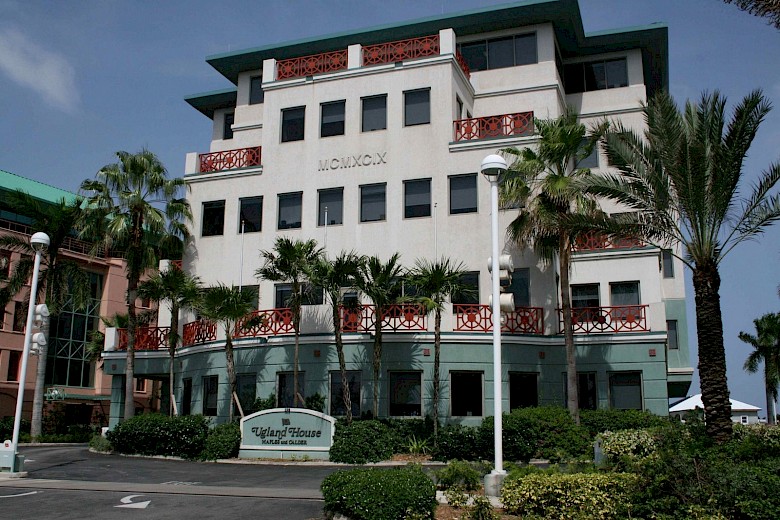
Let’s return to the streets and buildings, where the deterritorialised system materialises and re-territorialises. Ugland House in South Church Street on Cayman Islands is a building that recently made the news as a landmark and grotesque manifestation of this shadow economy:13 20,000 firms call it home, using its name and address as their own. The Cayman Islands, just like the City it is modelled after, and linked to, has more registered companies than inhabitants. One can imagine much of the profit made on New Bond Street in London is funnelled into Ugland House, linked by an invisible, untraceable, umbilical cord or an undersea cable. The connection surfaces sporadically – a leak here, a lawsuit there. But this is just the tip of the iceberg, a symbolic step into transparency, a flashlight in the dark. Mostly they just hide behind their tinted window shades or move houses to continue on with the same dealings: opaque business. Returning us back to invisibility and the ambiguous naming for this archipelago – City of London Corporation – which in itself sounds so generic as if it would barely exist.
To come back to our initial question: What can this tale of the City of London teach us about the world we live in? As political theorist Maurice Glasman puts it, the City is ‘an ancient and very small intimate relational institution, which doesn’t fit into anybody’s preconceived paradigm of modernity […] a medieval commune representing capital. It just does not compute’.14 Indeed, the City of London Corporation, with its arcane customs and silly costumes, is not the first thing one would imagine as the vanguard of twenty-first century global capitalism. The City ‘manages to be at once vastly powerful and barely visible. It fits into no modern analytical framework’.15
But what if modern analytical frameworks aren’t adept for understanding our current political and economic regime? Perhaps the secret to the City’s success lies in having anticipated the prevalent mode of governance? With the increasing merger between public and private interests and a dehumanizing political framework, the Corporation, writes political theorist Sheldon Wolin, ‘is now a vital element of domestic, foreign, and military policies […]. It is not only that the state and the corporation have become partners; in the process, each has begun to mimic functions historically identified with the other’.16 In more than one sense, we now live in a world designed by the City and its ilk, which have created a world in which democratic rule is reduced to mere semblance – another empty shell. Should one still call this form capitalism?17As Wolin writes again, our ‘contemporary economy of powerful multinational corporations resembles nothing so much as the warring city-states of sixteenth-century Italy’.18Are we therefore in the midst of the advent of a feudal-industrial regime, stimulated by accelerated commerce and an exasperated state? According to art writer Joshua Simon, our households are now ‘resembling those of serfs. The fact that we live under the regime of a neo-feudal debt economy of credit cards and mortgages, along with our domestic practices, renders our daily lives all the more similar to those of medieval sharecroppers’.19
The City of London Corporation is symptomatic of the rise of the city-state20 and waning state sovereignties,21 the merger or sublation of Homo politicus with Homo economicus.20 It also fosters the concomitant proliferation of notions of corporate personhood – can we call it economicus humanus? – and other non-human political subjects.

Competing velocities make this object of analysis elusive. Every attempt to end this text with a full stop triggers another aspect, unfolds another layer, introduces another story. To speak in pictures: when staring at the City it appears like a fractal image in 5D, progressively revealing new details – juridical, infrastructural, historical – and endlessly recurring patterns. Is Archipelago-capitalism a twenty-first century spin-off of the feudal age? Or something entirely different? Whatever it may be, the genesis of the City of London Corporation invites us to reconsider our recent history: perhaps it was 1957 – the day Euromarkets were born – rather than 1989 that signalled the impending collapse of a bipolar world split between two superpowers? It wasn’t the end of history, instead it was a stealthy Big Bang that spawned a lengthy process of expansion and dislocation, perforating states with ‘zones’ and secrecy jurisdictions, and overwhelming the world with cheap credit and new debt. We’ve been afloat ever since, drifting in an offshore world. Will these islands survive once the ice caps melt?
………………………………………….
By Ryan S. Jeffery and Boaz Levin
The Representation of Networked Infrastructure and its Discontents
By Ryan S. Jeffery and Boaz Levin
At the 1958 World’s Fair in Belgium, IBM showcased the wonders of computer technology and what it could offer humanity. They screened a short film, The Information Machine, by the offices of Charles and Ray Eames. The ten-minute, primarily animated film, aimed to introduce and demystify the societal benefits of computer processing to the wider public, but it did so through an intriguing contradiction regarding the materiality of the technology itself.
The film begins by describing how the prehistories of human systems developed the ability to negotiate, govern and predict the uncertainties of the natural world. As the ability to amass increased amounts of information advanced, with it came the need to organize, calculate and make sense of all this data. This progression then culminated in the grand tool of mechanized calculation, bringing about the ability to see through the abstraction of overwhelming amounts of information. As explained by the Eames Office, “The Information Machine is ultimately the story of our continual need to process and communicate larger and more complex amounts of data, and how we learn to manipulate abstractions with increasing sophistication and skill.”1 The film’s opening story of the computer processor’s prehistory, tells a cautionary tale of hubris regarding prediction, speculation, and a hero’s inability “to consider and relate all the factors in a problem”. This is demonstrated by a familiar parable in which a character is granted three wishes “in a frantic effort to reap immediate reward”. The first wish is unwise, the second then over corrects for the misjudgment of the first, and if the hero is lucky, the third and final wish returns him back to where he first started. Human propensity towards misjudgment is further exasperated by the increasing complexity brought about by the very systems of logic that are intended to simplify and solve.
This is where the information machine, quite literally, enters the frame. For the first time, the film departs from the animated narrative into the ‘real world’ of a live action sequence in which the calculating machines are depicted in the photographic ‘real’ through the lens of a camera, and are thus “unburdened by artistic representation”2 of the hand-drawn animation. “This is information”, the narrator authoritatively states, as the film pivots from endearing, child-friendly animation to the dry, formal documentation of the mechanical innards of these massive machines: punch cards, cables, tape reels, flashing bulbs, gears and sprockets, dispelling the “boogeyman which some see lurking behind every computer”. At times resembling a Fordist assembly line, familiar images of 20th century innovation uncoupled and abstracted from their particular function but indexically linked to the notion of progress.
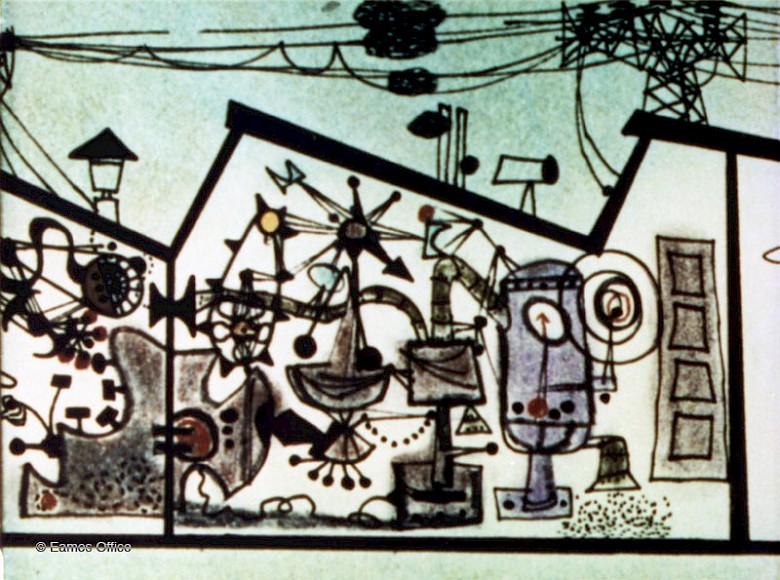
These machines, we are told, will enable us to model complex systems with unprecedented fidelity, in order to make calculated decisions. The Eames duo wished to show us how computers would help us better represent the world, but curiously, the sole subjects documented in ‘the real’ are the machines themselves. The histories that led to this technology and its real world effects are left to be articulated by the language of hand-drawn illustrations, while the physical materiality of these machines demanded that they burst through the artifice of animation. By some sleight of hand, the Eames had rendered the technology, then still an object of myth and wonder, more real and humane than our everyday reality. Its impact on systems of governance and modes of production remained far too complex to be rendered within a photographic mise-en-scène. We are thus left with close-up images of a contraption, isolated and dislocated from its larger functioning and use. The filmmakers, it would seem, were fully aware of the limits of the representation of mechanic action. Regardless of the camera’s perspective or angle, the frame is never wide enough to entirely explain what we are seeing. What counted most was that the images of these machines depict the photographic ‘real’ in order for their meaning to be accepted.
Over half a century later the world is now increasingly enmeshed in an array of computers, sensors and various portable devices, gathering unfathomable amounts of data concerning every aspect of life, but the representation of this technology has not caught up yet.. Snaking cables still engulf rooms, only now mechanical drums of punch cards and Ampex reels have been replaced with anonymous server racks and blinking lights. The ambiguity of these images utters the same vague mantra: progress. One can almost still hear the authoritative voice of the Eames’ Information Machine gesturing towards these current images: this too is information. The once hand-drawn cartoon animation has been replaced with CGI animation, but no clearer picture has been provided as to the significance of what the viewer is seeing. In fact, it is quite often to the contrary. Corporate videos depict bodiless cameras floating down sterile white halls, gliding past glowing alien light sources, matrix-like sculptural forms of binaries morphed into fiber tubes, globes and webs. The machine of global computation is now a leviathan of such proportion that all forms of media, including the cinematographic image, have been absorbed into it, rendered binary and disseminated via a nexus of online outlets, and new consolidations of corporate power. Though its terrestrial presence is seemingly invisible, the singular static information machine of yonder has given way to a plethora of technologies, many of which are portable and ostensibly autonomous, but are in fact joined under the monolith of Big Data. Entangled with roads, railways, and other aging technologies and logistics, they help form what Keller Easterling has termed “infrastructure space”, a medium of information, a series of “invisible, powerful activities that determine how objects and content are organized and circulated”3. The vastness and complexity of this expanding space reiterates what the Eames’ cautionary tale warns of, an increasingly difficult landscape for one to “consider and relate all the factors” in a problem.
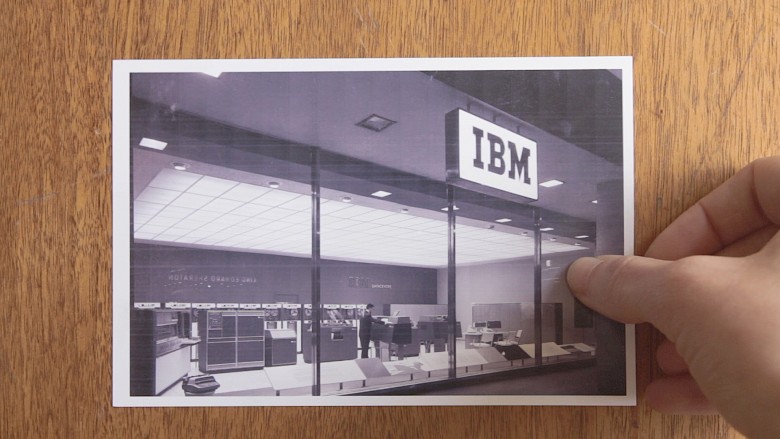
“All that is solid melts into air, all that is sacred profaned.” This is arguably one of Marx and Engels’ most poetic summations of both the history and future trajectory of capitalism. Marx and Engels memorably observed that both the modes of production and social relations are constantly revolutionized by the bourgeoisie, while new such forms “become antiquated before they can ossify”. Growth and expansion have become the only imperative, and global connectivity the ultimate tool: “The need of a constantly expanding market for its products chases the bourgeoisie over the entire surface of the globe. It must nestle everywhere, settle everywhere, establish connections everywhere”4. In the 21st century, all that is sacred no longer appears to melt into air, but is rather rendered into data. Within the confines of networked technology, information and social relations are quantified and archived with the hope of future monetary value. All that is sacred is now permitted to ossify into the solid state of a data center, a structure that in turn melts carbon into the air. Our film, All that is solid Melts Into Data (2015) attempts to trace a rough history of the evolution and expansion of data processing and its effect on both how we perceive the world, as well as how we have shaped it. Despite being often perceived as an ethereal synonym of air, the film highlights how the weight of the cloud is growing.
By way of the data centre, the film presents a historical-material geography of the web, unpacking its juridical, architectonic, economic, and epistemological infrastructure – the ‘backbone’, so to speak – of this seemingly ephemeral, placeless, and both virtual and material phenomenon of networked technologies. From the outset of our investigation, we were faced with the double challenge of representing a nexus as complex and ubiquitous as the web, and a protagonist as abstract as data. Yet, gradually we realized that the story of how our world has come to be perceived by way of data through the lens of data analytics – though a difficult one to tell – is anything but abstract. Rather, it is very much a story of the persistence of matter. Energy and natural resources, labour conditions, the role of physical proximity, the gradual layering of technologies on top of each other, and the geographical contingency of juridical processes – all these questions play a central role within this history, and came to play a crucial role within our film. The ambition to find this ‘boogeyman’ lurking behind the infrastructure space of the data centre is split between a desire to show the cables, racks, dams and tunnels that constitute the ‘cloud’ and thus dispel a prevalent myth of a placeless and immaterial net-of-nets and a realization that merely exposing cables and flashing lights remains, in itself, a futile endeavor, offering little to elucidate the inner workings of these technologies. Brecht and Benjamin both cautioned of the ontological blind spot that results from an over-reliance of the photographic image’s abilities state that “less than ever does the mere reflection of reality reveal anything about reality” or “actual reality has slipped into the functional”5. We therefore chose to complement this materialism with an introspective gaze – exploring not only the hidden visceral image of this technology, but also, the desire to see such an image. This ambivalence would translate into a corresponding formal division between footage filmed on-site and footage captured online. From the outset, our film commenced under the premise that one must use the Internet in order to research the Internet, rather than attempt to escape the network so as to represent it “objectively”.
Thus, our work began on our desktops at home, researching by ‘Googling’. We mapped the central nodes on the World Wide Web by virtually highlighting data centres and networked infrastructure ‘hidden in plain sight’ in nondescript buildings scattered around the power nexuses of the US and Europe: the American West Coast, The American Northeast, California, New York City and Frankfurt Germany. It is no coincidence that these are centers of global political and economic power, emphasizing the current hegemony of the Unites States and Western Europe within networked capitalism. At first, we ‘visited’ these remote locations by virtual proxy (thanks to Google’s extensive mapping initiatives), and subsequently, we began physically exploring the locations we had mapped, filming the opaque facades of switching hubs and the data centres that enable our instantaneous global communication. The physical mapping of networked technologies – whose wide spread effect has foreclosed spatial and temporal cognition beyond any previous technology – grafts quite perfectly onto the territorial order of neoliberal logic. This burgeoning data centre industry sits atop the juridical infrastructure, tax regulations, privacy laws, and national authority all initially laid out for earlier industries. To look to the materiality of networked technologies is in fact to look to their histories.
The newly built data centres in the Oregon desert of the American Northwest have come to replace recently the defunct industry of aluminium smelting plants, tanking energy from the Dalles Dam originally built for the benefit of that long-gone industry. Similarly, the New York Port Authority building on 111 Eighth Avenue was once a testament to 20th century industrial might – an essential hub of Maritime trade, passing goods and commodities from its eastern side to the western side that faces the Hudson River – and is now a refurbished symbol to the might of networked global connection. Owned by Google, the building resides above a central communications artery of New York City, the Hudson Street, Ninth Avenue “fiber highway”. Like hermit crabs, the infrastructures of the new digital age have come to inhabit the shells left by their industrial predecessors.
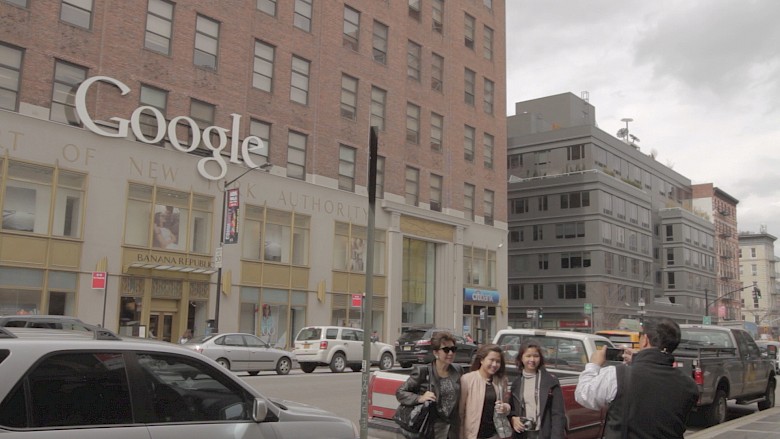
The web – in our phones, laptops, or Smartwatches – has reached a level of unprecedented intimacy with its users. It is often the last thing they see before going to sleep, and the first thing to greet them when they wake up. The old Hegelian dictum, which claimed that reading the morning newspaper is the realists morning prayer, has been superseded and accelerated ad absurdum by the obsessive compulsion of quantified-self advocates. Yet, despite its ever-growing pervasiveness, the infrastructure of the Internet is only becoming less visible. ‘The Cloud’ is a centralization project, emblematic of the logic of late capitalism: a harbinger of globalization; a vast and complex network, omnipresent yet largely invisible; a conduit of capital, enmeshing distant regions and actors. What could be more symptomatic of the abstractions of global capital than the metaphor of ‘The Cloud’ – the fantasy of a global computational machine without a ‘body’, and lacking any physical manifestation? Data centers and their clouds are but the most recent in a linage of technologies of global capitalism that obfuscate our relationship with our surrounding environment. Though it is often heralded as increasingly transparent, and as a new equalizer, the web thrives only by being swathed in obscurity and opacity. The data processing centers of the American Post War years were fittingly described as “The Glass House”, modernist cubes of transparent glass so that humans and machines could gaze back at one another. By the 1970s and 1980s, Cold War paranoia had mandated a turn towards Brutalist black boxes, imposing and anonymous, networked so that the loss of any one node would not compromise the entire system. These are the two contradictory poles that constitute our contemporary “Information Machine”, a paranoid network still desiring to be invisible but reluctantly mediating its own visibility through Starchitect quality edifices and slick corporate promos, dictating the terms of its own representation.
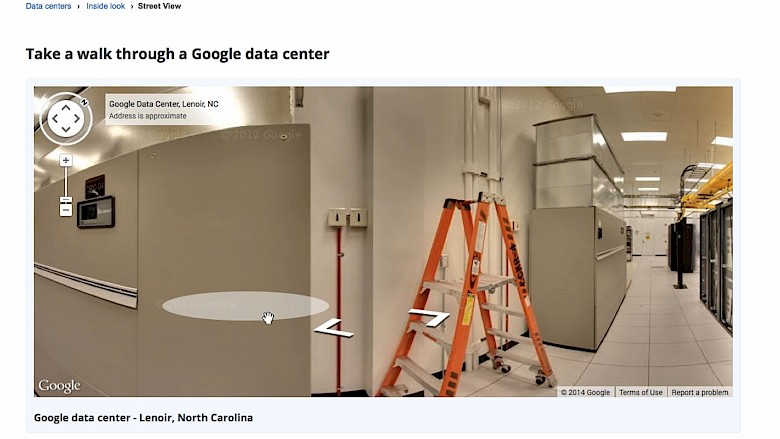
Take a tour through Google’s data centres via Google ST View or visit the Facebook page of Facebook’s Prineville’s Data Centre. Transparency is the new opacity. Charles and Ray Eames opened up the Information Machine in 1958, and over fifty years later we can still peer inside the belly of this beast with little to no better understanding of what we are looking at. Disembodied punch cards have given to server racks and lines of code. Perhaps this is where they want us to look, but if we are to better understand the contours of the data-driven present, let alone those of its future, mapping the material reality of its infrastructure is a necessary first step.
By July this year protesting in the public sphere in Spain will become an expensive affair – the Citizen Safety Law, dubbed the „gag law“, criminalizes protests that „interfere with public infrastructure“. Under the new law, which was passed by the governing Popular Party last December, protestors will be liable to pay fines of up to hundreds of thousands of euros for marching in front of congress, blocking a road or occupying a square. The law is the most recent in a series of attempts by the government to curb a wave of popular protests that have swept the country since 2011. With unemployment rates reaching over 25% and one in two Spaniards under 25 jobless, hundreds of thousands of outraged citizens took to the streets, occupying squares and universities. With a discredited political class, tarnished by years of political scandals and corruption – the Indignados (Spanish for „The Outraged“) sought to revert to the most basic tenets of political agency by reclaiming the public sphere. Similar protests were taking place across the globe, in Tunisia, Egypt, Greece, Israel and the U.S., encampments were proliferating and protesters mobilizing en masse. Though many commentators pointed out to the role played by new technologies such as social networks and smartphones in facilitating these protests, it was the city square, as old as political thought, which was the star of the show. Thus, when the ironically titled Popular Party passed its new draconian law, protesters were quick to seek an alternative solution to their bodily presence.
The result was a hologram protest, the first ever, as media outlets were quick to point out, skillfully choreographed and hastily projected in front of the congress gates. Specters were – for once quite literally – haunting the sterile streets, voicing the grievances of those citizens prevented from being there. The event had been rehearsed and performed in a nearby city, and the equipment (voluntarily) installed by a PR company in what was a clandestine operation. This was a proxy protest fit for the age of proxy politics.
The proxy, a decoy or surrogate, is today often used to designate a computer server acting as an intermediary for requests from clients. Originating in the Latin procurator, an agent representing others in a court of law, proxies are now emblematic of a post-representational, or post-democratic, political age, one increasingly populated by bot militias, puppet states, ghostwriters, and communication relays.
On a broader level, proxy politics can be seen as both a symptom of crisis in current representational political structures, as well as a counter-strategy which aims to critically engage and challenge the existing mechanisms of security and control.
In his book Post Democracy, Colin Crouch describes the current political condition as one which increasingly relinquishes power to business lobbies and non governmental organizations, with the result being that „there is little hope for an agenda of strong egalitarian policies for the redistribution of power and wealth, or for the restraint of powerful interests.“ The vision of an autonomous, potent, political subject is devastated by the growing power of privileged elites standing at the nexus of transnational co-operations, extra juridical zones, infrastructural authorities and non governmental organizations. To give but one example: when the House of Representatives recently voted to end bulk surveillance by the NSA , it was made clear that though it would take „the government out of the collection business, it would not deny its access to the information. It would be in the hands of the private sector — almost certainly telecommunications companies like AT&T, Verizon and Sprint“ . In other words, even after a seemingly successful move towards reform, the corridors of power are revealed to lie elsewhere.
How not to become a walking sensor platform generating indices of data? Which forms of resistance and evasion could apply to this techno-political condition?
Proxy Politics
Just as proxy politics is a condition – the name of a political regime which thrives on obscurity, opaqueness and decoys – it may also designate the possibility of a corresponding counter-insurgency. Proxy politics encompasses a myriad of modes of withdrawal and retreat, technical as well as metaphorical – its utensils could be a VPN, a 3D scan of a fingerprint, P2P technology, a surrogate, a stock image – its outcome is always concealment, evasion, subterfuge. Proxy politics is an answer to the „terror of total Dasein“, as Hito Steyerl recently put it. Most certainly, proxy politics is significant for an interim phase, a time during which any difference between real-virtuality and virtual-reality, the tangible and the digital, is increasingly difficult to discern, while it is becoming evident how severely controlled both spheres actually are.
As Galloway observed „Instead of a politicization of time or space we are witnessing a rise in the politicization of absence-and presence-oriented themes such as invisibility, opacity, and anonymity, or the relationship between identification and legibility, or the tactics of nonexistence and disappearance, new struggles around prevention, the therapeutics of the body, piracy and contagion, informatic capture and the making-present of data (via data mining)“.
Once considered to be a deterritorialized technology, the Internet is reterritorialized by way of security mechanisms, the TCP/IP control protocol and national jurisdiction. Emblematically, the NSA is shown to have attempted to map the internet using a program called Treasure Map.
Holographic Protest
The shadow-like figures in the hologram protest embody a double movement – a process of deterritorialization and reterritorialization: at first slogans and shouts were crowd-sourced online, and then they were synced with holographic images which were filmed in a nearby city, where the distances and angles of the scene in front of congress were meticulously reproduced.
Finally, scattered, dispersed voices were composited, montaged and reassembled in public space. The blueish tone of the hologram projection is reminiscent of surveillance camera footage, alluding to the popular depiction of a dystopian totalitarian state. Instead of public space, the simulated protesters inhabit a new medium, the proxy. In this case, a hologram, a digital object which manifests itself in three dimensional space. Could these people be convicted on the basis of the actions of their holographic avatar? Would face recognition software criminalize them, or their doubles? Here, the individual is rendered into an intersection of profiles and data. As Nishant Shah has recently put it, „regulation of data is closely tied in with regulation of bodies, and that a failure to effectively govern data puts biological bodies in conditions of precariousness and danger.“
While constellations of physical and digital spaces are under continuous negotiation, recent publications have shifted focus either towards the physical infrastructures (Keller Easterling ) on which global networks are relying, or, towards the extended meaning of networks as „imagined networks“ (Wendy Chun), considering „gaps between the experience and the representation of networks“. According to Chun, networks enable us to imagine the unimaginable, like global climate change or global capital as they create unforeseeable futures. Within these imagined networks, we are rather a series of „you’s“ than a collective of „we“. This non-communitarian tendency might be considered one of the shortcomings of proxy politics and its apparatus. The body double, the scan or VPN all refer to the individual user, rather than to a collective. But might the proxies mobilize en masse?
When the Turkish government banned Twitter during March last year, protesters and users turned to Google’s public DNS, using it to circumvent the ban, while spreading the word both in real life meatspace via graffiti, and online virally. Similarly to the hologram protest, once again public space and the screen were for a moment conflated. The proxy, whether as hologram or communication relay, metaphor or infrastructural intervention, brings forth the possibility of political agency in an age in which ruling powers increasingly enjoy a prerogative to obscurity, while political subjects are rendered increasingly transparent. Proxies politics is hinged upon a struggle for opacity, it thrives upon multiplicity, reproduction and forgery.
1 Hito Steyerl, Proxy Politics: Signal and Noise. e-flux journal #60, December 2014 http://www.e-flux.com/journal/proxy-politics/
2 Colin Crouch: Post-Democracy, Cambridge, 2004. p 6
3 Edward Snowden described the 5 Eyes as a supranational organization that ignores the laws of their respective countries – the leaked NSA documents have revealed that FVEY intentionally and mutually spied on each others citizens, collecting and exchanging information amongst themselves in order to circumvent restrictive regulations for domestic spying.
4 http://www.nytimes.com/2015/05/14/us/house-votes-to-end-nsas-bulk-phone-data-collection.html?ref=topics
5 Radical Philosphy Conference, Haus der Kulturen der Welt, Berlin, January 2015 http://www.hkw.de/en/app/mediathek/audio/38263
6 Nishant Shah, The Selfie and the Slut: Bodies, Technology and Public Shame. Economic & Political Weekly Vol l no 17, April 25, 2015
7 Keller Easterling, Extrastatecraft: The Power of Infrastructure Space, London 2014
8 Wendy Chun, Imagined Networks, Affective Connections. Marc and Constance Jacobson Lecture, Michigan University, 2013 https://www.youtube.com/watch?v=KnqZBIv_Zn4
»MINE. an asset-light existence« is an artzine by the artists Romy Kießling, Veronica Wüst and Gloria Glitzer.
We make it did the design and printing and for sure we did the processing and binding too. The Artzine includes contributions by Boaz Levin, Marcus Steinweg and María Verónica Seeger Bravo. More informations on the publication you’ll find here.
This publication has 36 pages with 18 glued-in, offset printed images and a sheet of digital printed stickers on transparent foil. Beside the images and the stickers the publication was risograph printed in 6 colors (blue, burgundy, yellow, brown, green and black) on a thin 60gsm paper, a rough 90gsm paper and a smooth 170gsm paper. Format: 20 × 28cm.
The Artzine is available here.

Mining Photography: The Ecological Footprint of Image Production.
Leipzig: Spector Books, 2022.

Interview with Ilit Azoulay for Frieze
Ilit Azoulay’s ‘Queendom’ Reconstructs the Past

Cheap Images, On Judith Kakon's Poetics of Exchange.
Stolen Language, Judith Kakon. Edited by Isabelle Köpfli, Museum zu Allerheiligen Schaffhausen

Review of Yael Bartana's "Redemption Now"
Frieze, July 2021

Proxies
Essay co-authored with Wendy Hui Kyong Chun and Vera Tollmann. Uncertain Archives, MIT press.

I Don’t Know Whether to Laugh or to Cry.
On Humor, Violence, and Vulnerable Bodies in Hadi Fallahpisheh’s Photographic Drawings. Camera Austria 154, 2021

On Distance
ed. Laura Preston

“The Reader as Photomonteur”: Beyond the Image as Virus
Essay on John Hearfield "Montage oder Fake News", Akademie der Künste, Steidl Verlag

The Interior’s Frontier
A Voyage Along the Supply Chain of My Room, Cabint Magazine's Kiosk

"Faux Culture": Arts of the Working Class
No 11, quarantine issue, associate editor

TZK 117, On the Shores of Inequality
Review of “Ground Zero” at Schinkel Pavillon, Berlin, TZK 117

Extractor, Simon Denny
Co-editor, Catalog for Mine, MONA Australia

Canaries In The Clouds, Arts Of The Working Class
Essay for Simon Denny's exhibition MINE, published in Arts Of The Working Class

"Nothing Consoles You Like Despair"
An Essay on the work of Richard Frater for Contemporary Hum

Alles
Essay for an artist book by Tobias Zielony, Etude Books

The Distance Plan 5
Charismatic Facts: Climate Change, Poetry and Prose

Say Shibboleth
Exhibition catalogue EN/DE

Proxy Politics
Power and Subversion in a Networked Age

A Single Swing of the Shovel
Chapter in "Former West: Art and The Contermporary after 1989"

Bunker Face
Essay commisioned by Transmediale Journal

Farewell Photography, Biennale für aktuelle Fotografie
Exhibition Catalogue

The Body of The Web
Münster Skulptur Projekte Magazine

The City and Its Double
Essay by RCPP comissioned by Auto Italia (London)

The Distance Plan
Living Borders, RCPP lexicon contribution

Lost In The Cloud
Essay for Spheres Journal

Plunge Into Proxy Politics
Essay for Springerin Magazin Issue 3/2015 (RCPP)

A Public Privitized
An Essay for Mine, An Asset Light Existance
54 Minutes | 2015 | Boaz Levin & Ryan S. Jeffery
54 Minutes | 2015 | Boaz Levin & Ryan S. Jeffery
ALL THAT IS SOLID MELTS INTO DATA / trailer from Ryan S Jeffery on Vimeo.
Equal parts building and machine, a library and a public utility, data centers are the unwitting monuments of knowledge production to the digital turn. This documentary video traces the historical evolution of the structures that make-up “The Cloud”, the physical repositories for the exponentially growing amount of human activity and communication taking form as digital data. While our “smart tools” and devices for communication become increasingly smaller, thinner, and sleeker, the physical infrastructure they require grows larger, affecting and shaping the physical landscape and natural resources. The rhetoric surrounding so-called “Big Data” proclaims it as the solution to every problem faced by either governments or private industry. This film looks to the often-overlooked materiality that “The Cloud” is reliant upon, in order to elucidate its social, environmental, and economic impact, and call into question the structures of power that have developed out of the technologies of global computation.
Adam Kaplan and Boaz Levin, 12 min, 2014.
Based on a text by:
Boaz Levin and Daniel Herleth
Voice-Over:
Esme Rocksova
Last Person Shooter examines a range of human and mechanical modes of vision. By way of a series of historical scenes reconstructed as 3D architectural models, the historical context of machine vision and its underlying concepts are conjured. These models are explored by an invisible protagonist, embodying the familiar, yet antiquated aesthetic of a first-person shooter.

All That is Solid Melts Into Data
Co-directed with Ryan S. Jeffery

Last Person Shooter
Co-directed with Adam Kaplan
The Research Center for Proxy Politics aims to explore and reflect upon the nature of medial networks and their actors, that is, machines and things as well as humans. The proxy, a decoy or surrogate, is today often used to designate a computer server acting as an intermediary for requests from clients. Originating in the Latin procurator, an agent representing others in a court of law, proxies are now emblematic of a post-representational political age, one increasingly populated by bot militias, puppet states, ghostwriters, and communication relays. During the period of the project (September 2014 to August 2017) the center will host a series of workshops at the Universität der Künste, Berlin, revolving around a wide range of relevant topics including the politics of digital networks, the political economy of crypto-currencies, the genealogy of networked thought, the mediality of physical landscapes and strategies of opacity. The center also conducts material, experimental, investigations into the conception and construction of alternative networks, or alternets.
In June 2017, RCPP hosted the conference The Proxy and Its Politics at Haus der Kulturen der Welt (HKW), video recordings of the lectures and performances can be viewed online. In October the center published the reader Proxy Politics. Power and Subversion in a Networked Age with Archive Books, Berlin.
Selected writing and participation by the center: “A single swing of the shovel”, Former West: Art and the Contemporary After 1989, ed. Boris Buden, Maria Hlavajova, Simon Sheikh, MIT Press (forthcoming March 2017); “The Body of the Web”, for Skulptur Projekte Münster 2017 in frieze d/e (2016); “The Body of the Web” (lecture), Image Trajectories, HGB Leipzig; “Plunge into Proxy Politics” (lecture), 33C3 Chaos Computer Congress (Hamburg 2015); “Plunge Into Proxy Politics”, Springerin (2015); and “Landscape Media” (workshop), The School of Kyiv (Kyiv Biennial 2015); “The City and Its Double” (installation), Hailweed (Auto Italia South East, London, 2016). In 2017, RCPP collaborated with Rike Frank/exhibition studies at KHiO, Oslo Academy of Fine Arts, and Doreen Mende/Research-Based Master Programme CCC at HEAD–Genève.
Berlin Program for Artist facilitates exchange between emerging and experienced Berlin-based artists, through coordinated studio visits and meetings.
BPA does not have a fixed location – activity is concentrated in the studios of the artists involved with the program. Ten participants meet with a core group of ten mentors and a wider group of guest mentors. Twice a month participants present their work in concentrated one-on-one visits in their own studios, followed by a group discussion in a mentor’s studio. A participation cycle lasts two years, always from January to December. The program initiates several public-facing events per year. BPA does not charge fees to participants, and since 2017 it has offered participants a grant to produce new work.
Series of meetings will be hosted by Lensbased class UDK, which will be facilitated by Boaz Levin. Meetings will be open for public and participants will be expected to be fully engaged with the process.
The coming semester will revolve around the documentation of troubles, and the troubles of documenting. We’ll look at artistic practices that employ a notion of the document with the aim of providing a lesson and a proof (as in the verb’s etymological roots) so as to contest existing narratives or shed light on ones that are repressed. But we will also, no less importantly, trouble documenting — questioning and rethinking notions of veracity, realism and facticity, performativity and fiction. In an age during which imminent ecological disaster is denied, prevalent systemic racism occluded and extreme levels of economic inequality masked by elaborate tax evasion schemes, the urge to document, to insist on truth claims however provisional, seems vital.
Which of these terms might still feel relevant, and why? Can performative practices be considered documentary? Or are documentary practices by definition performative? Can fabricated images make truth claims? Is truth by definition fabricated? The semester will be an invitation to revisit some of these troubles, and stay with them.
With the establishment of universal standards for industrial goods, credit systems, and human rights around 1948, the world is transformed into a technocratic space of transactions. Orchestrated by the material and virtual circulation of Tokens—universal currencies, data, and bodies—economic infrastructures and legal mechanisms emerge and begin to regulate a global society. Within a visual-discursive scenery largely based on the bookkeeping structure of a block chain, theoretical and artistic contributions contour the technical standards of an infinitely circulating present.
Program in collaboration with Victoria Ivanova (curator, cultural theorist) & Patricia Reed (artist, writer), visual design by Anil Bawa-Cavia and Patricia Reed, co-produced with Harry Sanderson.
Benjamin Bratton, Vera Tollmann & Boaz Levin, and Anna Echterhölter
Processing Sovereignty
Presentations
As economic and governance regimes scale to encompass our contemporary globalized condition, new technologies for integrating communication, addressability, and interfacial infrastructures become tantamount to a new form of sovereignty. Benjamin Bratton, addresses these emergent platform structures and their evolution through his conception of the Stack. Boaz Levin and Vera Tollman then move through the occulted, at-a-distance geographic presences of global finance by mapping the complex legal, political, and geospatial tools employed by global financial firms, using the City of London Corporation as a case study. Exploring the strange intersection of technology, economy, and governance in localized terms, Anna Echterhölter investigates the implications of voucher programs for food rationing in refugee camps run by intergovernmental institutions such as the World Food Program (WFP), and the UN High Commissioner on Refugees (UNHCR).
In collaboration with JIPFest, Tambal Lubang aims to cultivate emerging curators in Indonesia. The mentors, Secret Agents and Boaz Levin will share and exchange about the role of curator, presentation of works, as well as conceptualization and management of photo exhibitions.
Over eight weeks, 12 selected participants are expected to build a curatorial approach and develop the concept of exhibition curatorial projects through case studies, presentations and open discussions. By the end of the program, the mentors will choose a potential exhibition proposal to be realized in JIPFest 2022.
Ausgehend von der Auseinandersetzung mit Aspekten zunehmender Technisierung von Körper und Gesellschaft, die im Mittelpunkt der vergangenen Shift-Veranstaltung stand, widmet sich die aktuelle Ausgabe dem Verhältnis zwischen sensiblen Daten in digitalisierten Umgebungen und ihren realen und spekulativen Werten.
Shift #6: Sensible Daten – Digitale Werte
16. Juni 2021, 18 Uhr
Online-Panel über Zoom-Videokonferenz
Aus den Interaktionen und Kooperationen zwischen Mensch und Maschine werden fortwährend Daten generiert. Vernetzte „smarte“ Technologien und verborgene Wertschöpfungsketten tragen zu einer zunehmenden Komplexität und Undurchsichtigkeit der digitalen Gegenwart bei. Informationen zu individuellen Erfahrungen und Gefühlen und den damit verbundenen Handlungsweisen werden als abstrahierte Datensätze zu wertvollen digitalen Handelsgütern und profitablen Rohstoffen erhoben. Fragen nach den Zusammenhängen dieser Entwicklungen, die mit dem digitalen Überwachungskapitalismus einhergehen, rücken somit – nicht zuletzt auch durch die aktuelle Situation der globalen Pandemie – weiter in den Fokus.
Mit Impulsvorträgen von:
Christoph Engemann (Medienwissenschaftler, Postdoc am Lehrstuhl Virtual Humanities, Ruhr-Universität Bochum)
Boaz Levin (Schriftsteller, Künstler und Kurator, Co-Gründer des Research Center for Proxy Politics)
Sophie-Carolin Wagner (Künstlerin, Co-Gründerin von RIAT und Managing Director von Eurozine – Gesellschaft zur Vernetzung von Kulturmedien mbH)
Abstract
In my PhD I explore the work of Allan Sekula, Martha Rosler, Fred Lonidier and Phel Steinmetz—known as the San Diego group—during the 1970s when they all studied, and later taught, at the University of California, San Diego (UCSD). Through a contextual survey of group’s work, I aim to show how they offered a critique and a reinvention of documentary practices in relation to the advent of neoliberalism. My work questions prevalent art-historical narratives concerning post-modern art as the cultural logic of neoliberalism, asking why the work of the group and their mode of critical documentary has long been overlooked. As I show, their critique-and-reinvention of the documentary—in releasing it from its dependency on the ‘myth of photographic truth’, in their
expansive use of media, exploration of the archive, notions of performativity, and photomontage—prefigures recent debates and artistic practices.

Research Center For Proxy Politics

Guest mentor, BPA
2019 - ongoing

Documenting Troubles
Semster workshop UDK, WS 2018

Processing Sovereignty, 1948 Unbound, HKW Berlin
Benjamin Bratton, Vera Tollmann & Boaz Levin, and Anna Echterhölter

Photo Curatorial Workshop
Curatorial Mentor. With Jipfest, supported by Goethe Institut Indonisia

Talk and workshop
Leonardo Zentrum, Nürenberg

A History of the San Diego Group
Phd Candidate, "Cultures of Critique" research cluster, Leuphana University, Lüneburg.
Boaz Levin (b. 1989, Jerusalem) is a writer, curator, and occasional filmmaker. Together with Hito Steyerl and Vera Tollmann, he co-founded the Research Center for Proxy Politics. Levin has presented his work internationally, most recently at the CCA, Tel Aviv; Human Resources, Los Angeles; and Fidmarseille, Marseille. Last Person Shooter, directed together with Adam Kaplan, was awarded the Ostrovsky Family Fund Award (2015). Regarding Spectatorship, a curatorial research project with Marianna Liosi, was shown at Kunstraum Kreuzberg/Bethanien, Berlin, in 2015–16. Since October 2016, Levin has been a PhD candidate as part of the Cultures of Critique research training group at Leuphana University, Lüneburg. In 2017, Levin co-curated the Biennale für aktuelle Fotografie, Mannheim-Ludwigshafen-Heidelberg. Recent publications include: Proxy Politics: Power and Subversion in a Networked Age, co-edited with Vera Tollmann, Archive Books, 2017; Alles, Tobias Zielony, Etude Books, 2019; Extractor, (exhibition catalog for MINE, Simon Denny), co-edited with Sian Scott Clash, MONA 2019, and On Distance, ed. Laura Preston, published by Atlas Projectos, Berlin, 2020. His writing has been published by Texte Zur Kunst, Camera Austria, Frieze, Cabinet Magazine, and MIT press. Levin has taught and given lectures at the UDK, Berlin; HFBK, Hamburg; Goldsmiths University of London, Akademie der Bildenden Künste Nürnberg, and HfG Karlsruhe amongst others.
Levin is editor of Cabinet Magazine's Kiosk platform.
Contact: Boaz.levin(at)gmail.com
Website by BECKER RAPP STUDIO


